Max Funkat
Betreut durch:
Prof. Jozef Legrand
Projekt: My Idea. My Project/OpenCall
SOSE 2021, Semester 5+
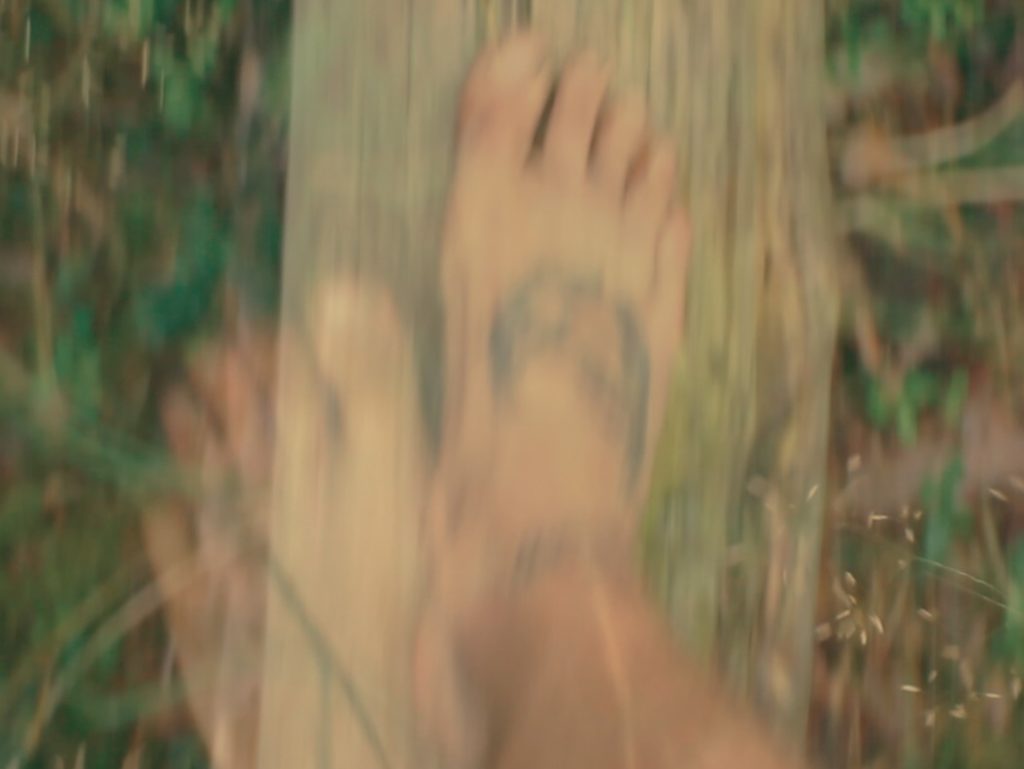
Max Funkat
Betreut durch:
Prof. Jozef Legrand
Projekt: My Idea. My Project/OpenCall
SOSE 2021, Semester 5+

Emma Johann & Jonathan Richter
Betreut durch:
Prof. Jozef Legrand
KM Caroline Bittermann
LA Carsten Struck
LA Eva Wilde
HA Julia Heunemann
Projekt: Das Ungeheuer das aus der Tiefe kam
WISE 2020/21, 1. Semester
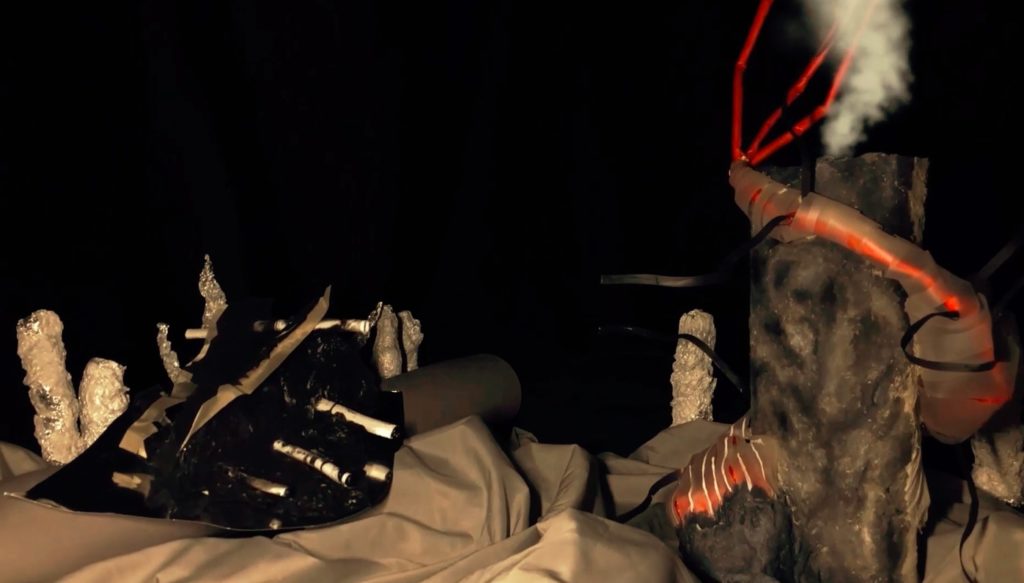
Achim Kwon & Sanya Lazarus
Betreut durch:
Prof. Jozef Legrand
KM Caroline Bittermann
LA Carsten Struck
LA Eva Wilde
HA Julia Heunemann
Projekt: Das Ungeheuer das aus der Tiefe kam
WISE 20/21, 1. Semester
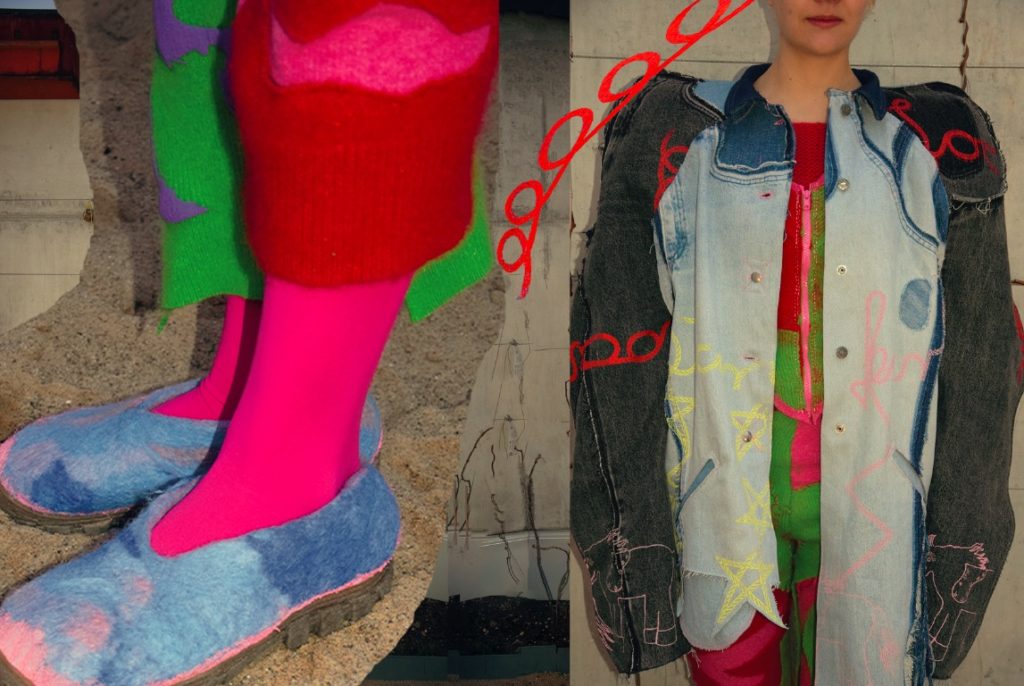
SOSE 2021-Das Portfolioprojekt-Michael Sieweke-Pdf
Michael Sieweke
Betreut durch:
Prof. Jozef Legrand
KM Caroline Bittermann
LA Carsten Struck
HA Sabine Wilms
Projekt: Das Portfolioprojekt
SOSE 2021, 4. Semester
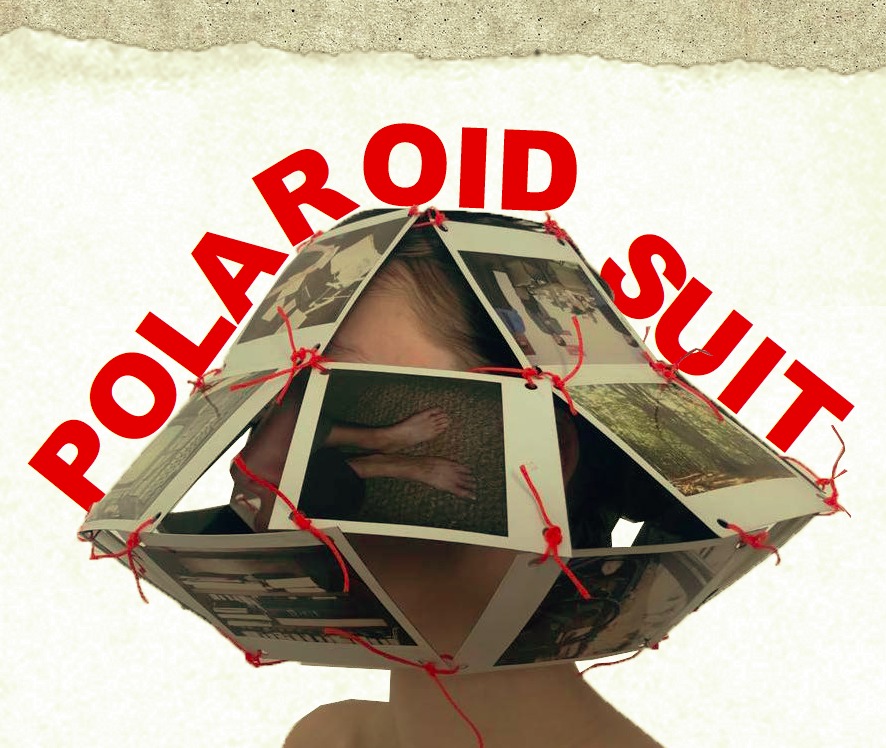
SOSE 2021-Das Portfolioprojekt-Emma Mende-Pdf
Emma Mende
Betreut durch:
Prof. Jozef Legrand
KM Caroline Bittermann
LA Carsten Struck
LA Sabine Wilms
Projekt: Das Portfolioprojekt
SOSE 2021, 4. Semester
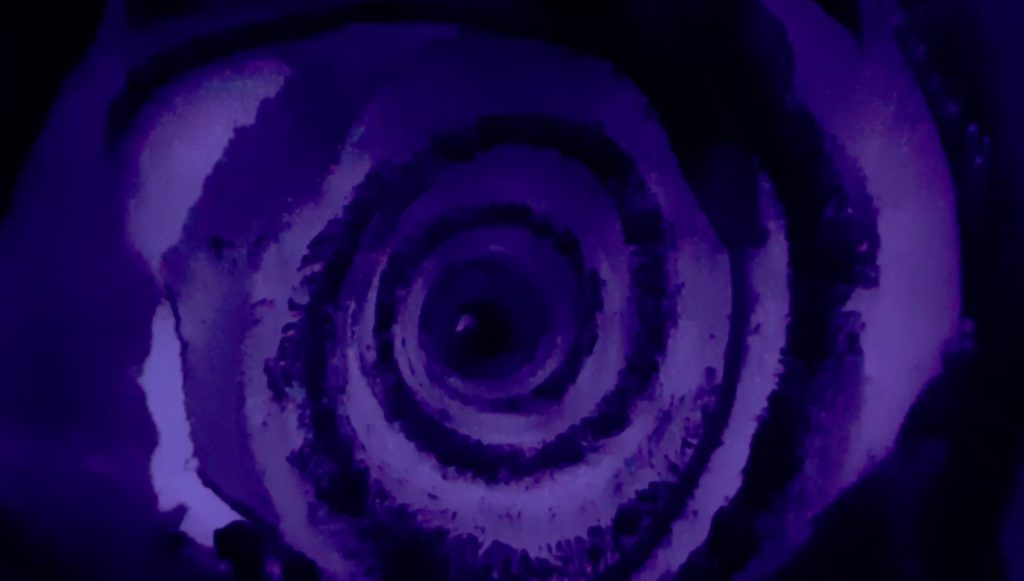
Katharina Matecjek
Betreut durch:
Prof. Jozef Legrand
KM Caroline Bittermann
LA Carsten Struck
LA Bruno Eritt
HA Julia Heunemann
Projekt: Dark Liquid
WISE 20/21, 3. Semester
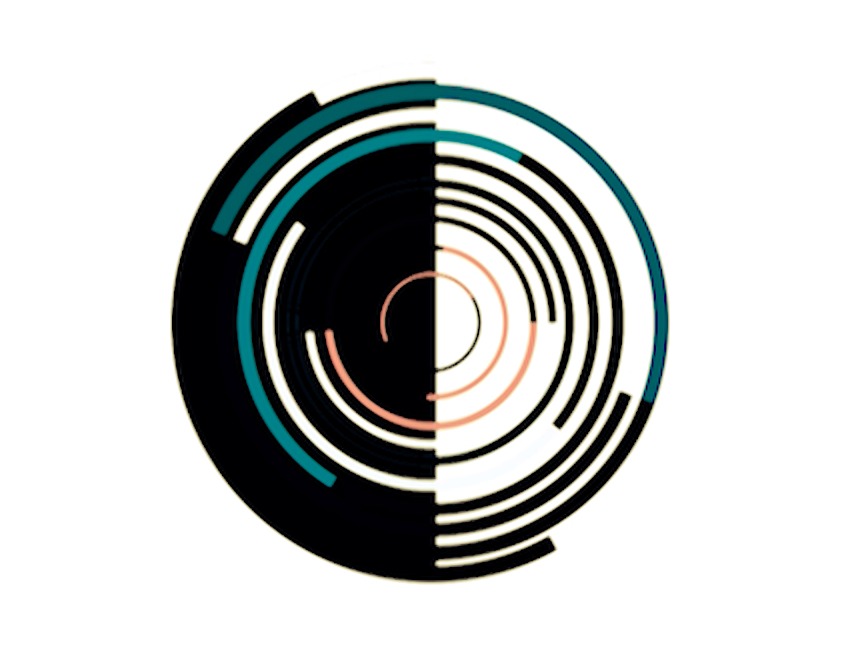
Gloriana Valverde
Betreut durch:
Prof. Jozef Legrand
KM Caroline Bittermann
LA Carsten Struck
LA Bruno Eritt
HA Julia Heunemann
Projekt: Dark Liquid
WISE 20/21, 3. Semester

Waldwärts| Bachelorarbeit 2021
Das Projekt ‚waldwärts‘ beschäftigt sich mit der Zukunftsfähigkeit der Gesellschaft und dem komplexen System Wald. Der Wald ist das prägendste Element der deutschen Kulturlandschaft. Die Reinigung von Wasser und Luft durch den Wald ist für uns Menschen von großer Relevanz. Zudem ist er als Rohstofflieferant für den Wirtschaftssektor und somit für die Objekte und Lebensräume unseres täglichen Lebens unverzichtbar. Die klimatischen Veränderungen haben großen Einfluss auf dieses volatile System und die Schäden am Wald nehmen ein beträchtliches Ausmaß an. Durch die zunehmende Bedrohung der natürlichen Versorgungssysteme besteht dringender Handlungsbedarf.
Das Konzept der ‚waldwärts-initiative‘ vereint Naturschutz und strukturelle Nachhaltigkeit in der Produktion von Objekten. Der Verein agiert als Gemeinschaft. Wir gestalten langlebige Artefakte unter sozialen und ökologischen Aspekten. Unsere Versprechen an Gesellschaft und Natur sind für das Gemeinwohl zu wirtschaften, uns politisch in unserer Unternehmung zu positionieren und die globale Anstrengung der Abmilderung des anthropogenen Klimawandels zu verfolgen. Wir wollen andere Menschen inspirieren und streben eine Kooperation mit Gestalter*innen und holzverarbeitenden Gewerken an. Sowohl die Herkunft als auch die Produktion des Rohstoffs werden in Wertschöpfungsketten lokaler Akteur*innen stattfinden. Das zentrale Vorhaben des Vereins ist, durch Interventionen in das forstliche System einzugreifen. Lokale Akteure sollen gefördert werden und der notwendige Waldumbau sollen durch Investitionen in Aufforstungsprojekte unterstützt werden.
Dadurch ermöglicht der Verein eine intergenerationelle Zukunftsfähigkeit unserer Gesellschaft, indem sie sich für den Fortbestand und Transformation der wirtschaftlichen, gesellschaftlichen und natürlichen Systeme einsetzt. Die Möbelserie ‚picus‘ ist die erste Entwurfsserie der Unternehmung des Vereins. In ihren Grundsätzen folgt sie dem Vorhaben der Vereinsideologie und stellt eigene Themenschwerpunkte in den Mittelpunkt. Im Bezug zum Leitthema Wald und dessen systemischen Prozessen liegt dem Entwurf die Analogie der Wachstumsverhältnisse zwischen Bäumen und Menschen zugrunde und stellt deren Interpretation im Beziehungsverhältnis von Mensch und Objekt dar. Der Entwurf verfolgt das Ziel, eine Ermächtigung des Handelns durch Anpassung und Mehrfachnutzung der Objekte zu generieren. Dadurch ermöglicht sich eine Teilhabe an den Lebenshöhen Anderer und unterstützt das Erreichen, Bewältigen und Aufsteigen zu neuen Zielen. Die gestalteten Objekte sind Lebensbegleiter und auf lange Nutzbarkeit ausgelegt und stellen sich als hilfsbereites Objekt in den Mittelpunkt der Mensch-Objekt Beziehung.
The ‚waldwärts‘ project deals with the sustainability of society and the complex forest system. The forest is the most characteristic element of the German cultural landscape. The purification of water and air by the forest is of great relevance for us humans. In addition, it is indispensable as a supplier of raw materials for the economic sector and thus for the objects and habitats of our daily lives. Climatic changes have a major impact on this volatile system and damage to the forest is assuming considerable proportions. Due to the increasing threat to the natural supply systems, there is an urgent need for action.
The concept of the ‚waldwärts initiative‘ combines nature conservation and structural sustainability in the production of objects. The association acts as a community.
We design long-lasting artifacts under social and ecological aspects. Our promises to society and nature are to operate for the common good, to position ourselves politically in our enterprise, and to pursue the global effort of mitigating anthropogenic climate change. We want to inspire others and strive for cooperation with designers and woodworking trades. Both the origin and the production of the raw material will take place in value chains of local actors. The central intention of the association is to intervene in the forestry system. Local actors should be supported and the necessary forest conversion will be driven by investing in reforestation projects.
With these concepts in mind, the association will contribute to an intergenerational viability of our society by advocating for the continuation and transformation of economic, social and natural systems. The furniture series ‚picus‘ is the first design series of the association’s. In its principles it follows the intention of the association’s ideology and focuses on its own thematic priorities. In relation to the central theme of the forest and its systemic processes, the design is based on the analogy of the growth relationships between trees and people and represents their interpretation in the relationship between people and objects. The design pursues the goal of generating an empowerment of action through adaptation and multiple use of the objects. This enables a participation in the life heights of others and supports the reaching, mastering and ascending to new goals. The designed objects are life companions and designed for long usability and place themselves as a helpful object in the center of the human-object relationship.
Prozess












Betreut durch
Prof. Ineke Hans, Gesine Hillmann, Prof. Jozef Legrand
A THOUSAND SEEDS OR THE RIGHT TO BECOMING | Bachelorarbeit 2021
Durch Klimawandel, das Schädigen der Biosphäre, Versauerung der Meere, Entwaldung, Müllverschmutzung, Vernichtung der Biodiversität und vielem mehr wird das terrestrische Leben, so wie wir es kennen, bedroht. Zum Vermeiden der Katastrophe werden in unserer zivilisierten, durch Kultur und Technologien bestimmten Welt dabei oft Natürlichkeit und Künstlichkeit miteinander verhandelt. Dabei treten wir als die künstlichen, technologisierten und kulturellen Akteure auf und betrachten die Welt um uns oft als passiv und ursprünglich. Doch sind diese Kategorien obsolet. Natur und Kultur sind vielmehr konstitutiv für einander. Daher erscheint die Frage nach ihren Berührungspunkten spannender. Wo finden die Grenzübergänge statt? Wo wirken die verschiedenen Gefüge aufeinander? Wo geschieht das gemeinsame Werden? Das Werden in Bündnissen? Wer ist mit wem infiziert und welche neuen Gefüge entstehen?
In A Thousand Seeds or the Right to Becoming wird die Ansteckung des Samens mit menschlicher Kultur , den Katastrophen, dem Verlust der Biodiversität behandelt. Durch den Affekt mit und die Faszination von menschlichen technologischen Netzwerken wurde auch er zu etwas anderen und tritt heraus aus seiner scheinbaren Passivität und zeigt seine eigene Handlungsmacht. Durch die Erweiterung seiner Wahrnehmung durch den Kontakt zur Drohne und das parasitäre Nutzen des Internets, beginnt er seine Ausbreitung zu steuern. Das Beobachten des Wetters und die Kommunikation untereinander ermöglichen Bäumen und Samen eine optimale Verbreitung, das Finden der günstigsten Standorte und das Intervenieren in ausgewählten Landschaften zum Sichern der eigenen und anderer Arten. Und kommt mit dieser Handlungsmacht auch das Recht an dieser Entwicklung und lässt sich dieses im kulturellen Netzwerk des Patentrechts sichern?
Climate change, damage to the biosphere, ocean acidification, deforestation, waste pollution, destruction of biodiversity and much more threaten terrestrial life as we know it.In order to avoid the catastrophe, naturalness and artificiality are often negotiated with each other in our civilised world determined by culture and technology. In doing so, we appear as the artificial, technologised and cultural actors and often view the world around us as passive and primal. But these categories are obsolete. Nature and culture are rather constitutive of each other. Therefore, the question of their points of contact seems more exciting. Where do the border crossings take place? Where do the different structures interact? Where does the becoming together happen? Becoming in alliances? Who is infected with whom and what new assemblages emerge?
A Thousand Seeds or the Right to Becoming deals with the infection of the seed with human culture , the catastrophes, the loss of biodiversity. Through his affectation with and fascination with human technological networks, he too became something else, stepping out of his apparent passivity and showing his own agency. By expanding his perception through contact with the drone and the parasitic use of the internet, he begins to control his dispersal. Observing the weather and communicating with each other enables trees and seeds to spread optimally, find the most favourable locations and intervene in selected landscapes to save their own and other species. And does with this agency also come the right to this development and can it be secured in the cultural network of patent law?
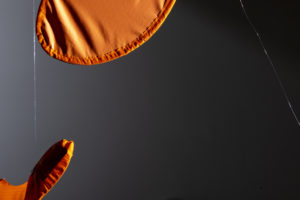
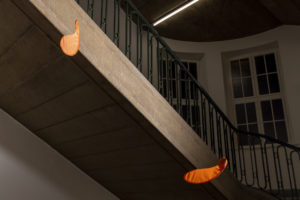
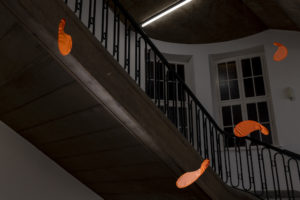
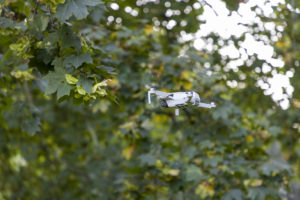
Prozess
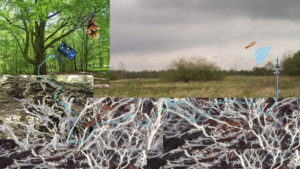
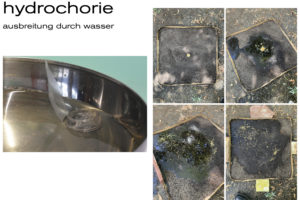
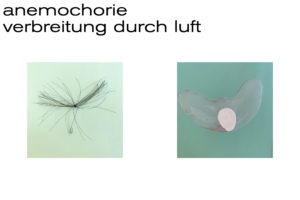
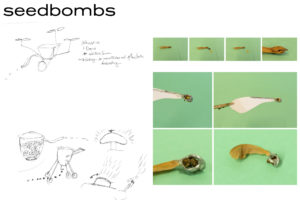
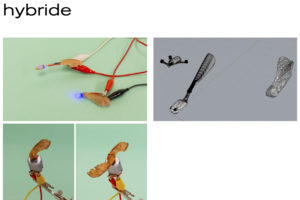
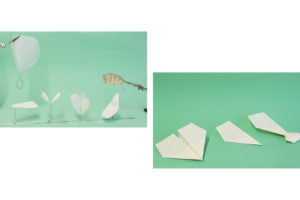
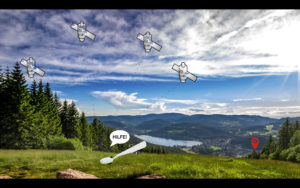
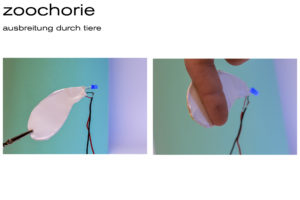

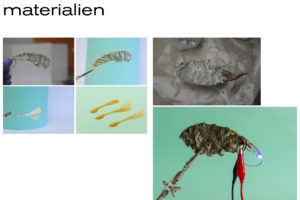
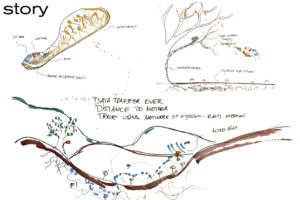
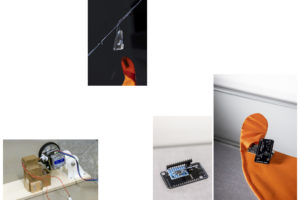
Betreut durch
Prof. Jussi Ängesleva, Prof. Kathrin Busch, KM Luiz Zanotello, Prof. Jozef Legrand
MANTA ARRAY | Bachelorarbeit 2021
Das Projekt widmet sich der Lärmbelästigung in unseren Lebensräumen. Im englischen Noisepollution genannt. In den vergangen zwei Jahrzehnten gab er mehr Veröffentlichungen zu dem Thema als je zuvor, was nur einer der klaren Anzeichen für die Verbreitung des Problems und die akute Sachlage ist. Die stetig wachsenden Ballungszentren führen zu einer Intensivierung der Grundlärmbelastung. Diese Lärmbelastung betrifft jeden, aber vor allem die Menschen in den Innenstädten. Jeder kennt den Moment in dem die Sprachverständlichkeit so gering ist, dass es einiges an Konzentration fordert, dem Sprechenden zu folgen. Jedem ist das Phänomen bekannt jedoch wird die eigentlichen Auswirkungen auf Körper und Geist zu meist vernachlässigt. Genau dieser Problematik, die nur wenigen wirklich bewusst ist, widmet sich das Projekt.
Manta Array ist ein künstlerisch, -technischer Ansatz die Akustik in unseren Lebensräumen zu verbessern und so die Lärmbelastung der wir täglich ausgesetzt sind zu minimieren.
The project is dedicated to noise pollution in our habitats. In the last two decades there have been more publications on the subject than ever before, which is only one of the clear signs of the spread of the problem. The ever-growing urban centers lead to an intensification of the noise pollution levels. This noise pollution affects everyone, but especially the people living in the inner cities. Everyone knows the situation when they are listening to someone speaking and it requires quite a bit of concentration to follow the speaker. Everyone is aware of this phenomenon, but the actual effects on body and mind are usually neglected. Exactly this problem, of which only a few are really aware, is the subject of this project.
Manta Array is an artistic, -technical approach to improve the acoustics in our living spaces and thus minimize the noise pollution to which we are exposed daily.
Prozess
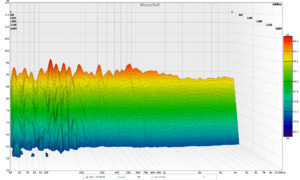
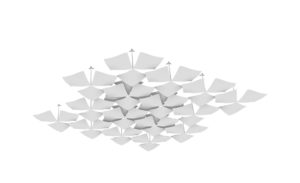
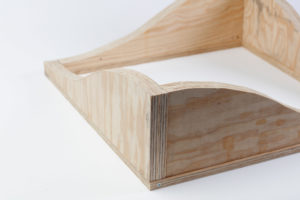
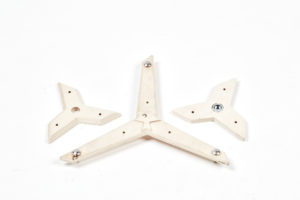
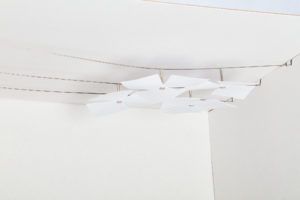
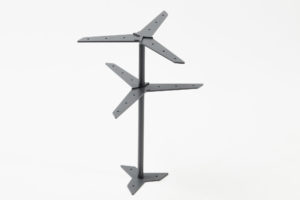
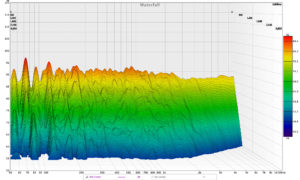
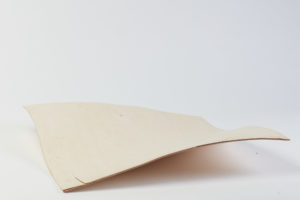
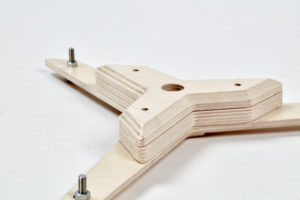
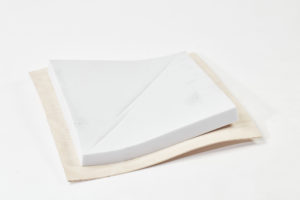
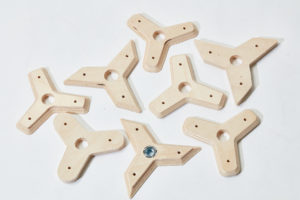
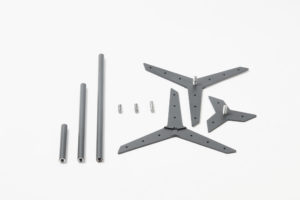
Betreut durch
Prof. Ineke Hans, Prof. Holger Neumann, Steffen Herm
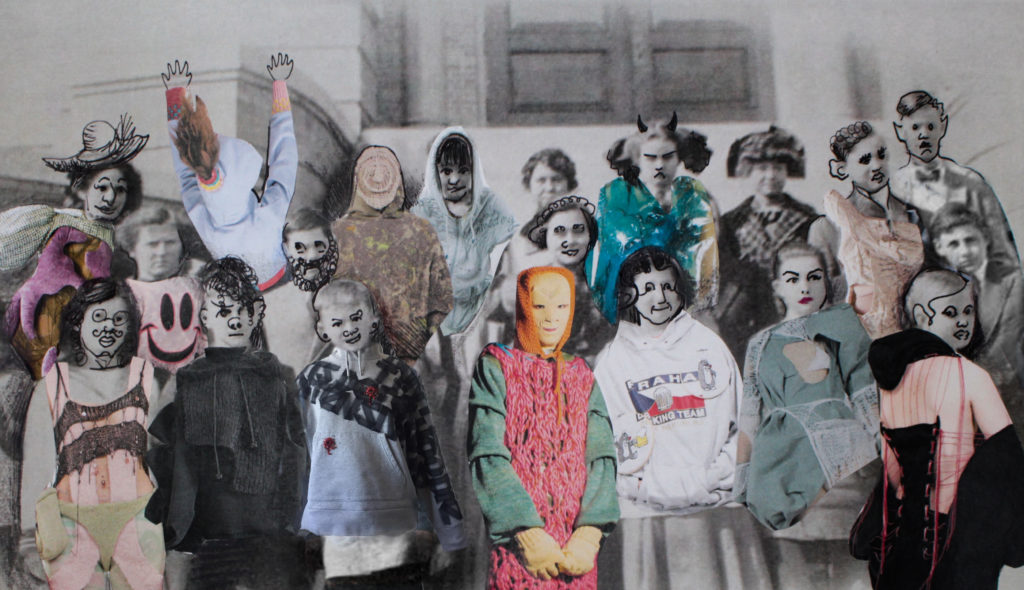
Wir freuen uns sehr, euch für den Event diesen Donnerstag, 28.10. 19-22 Uhr im Voo Store einzuladen!
Es wird eine Veranstaltung mit 2G sein. Eine Auswahl des Hoodie-Wettbewerbes vom Sommersemester 21 wird im Voo Shop ausgestellt und verkauft, eine weitere Auswahl wird bei der Show am Samstag durch den UdK-Shop verkauft.
Alle Studierenden des Mode-Instituts sind bereits auf der Gästeliste, jeder weitere Gast meldet sich bitte selbst an auf: mit Betreff: Save the Date – UdK x VooStore
Wir freuen uns sehr auf euch!
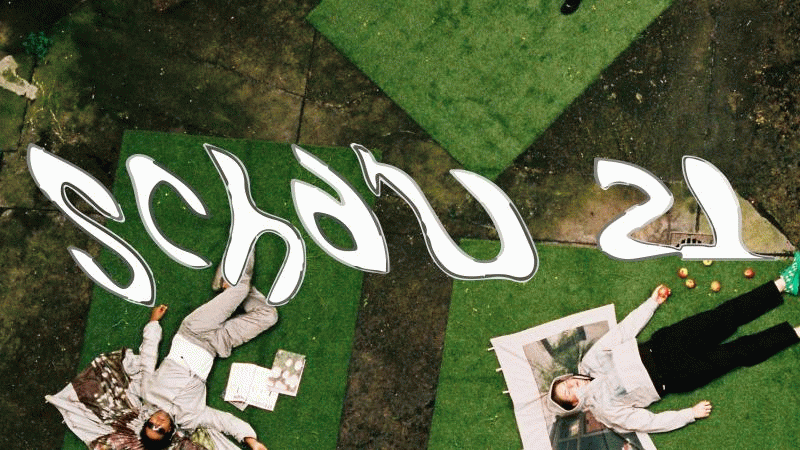
In Kooperation mit der Gesangsklasse Prof. Deborah York der UdK Berlin und zeitgebilde Filmproduktion UG.
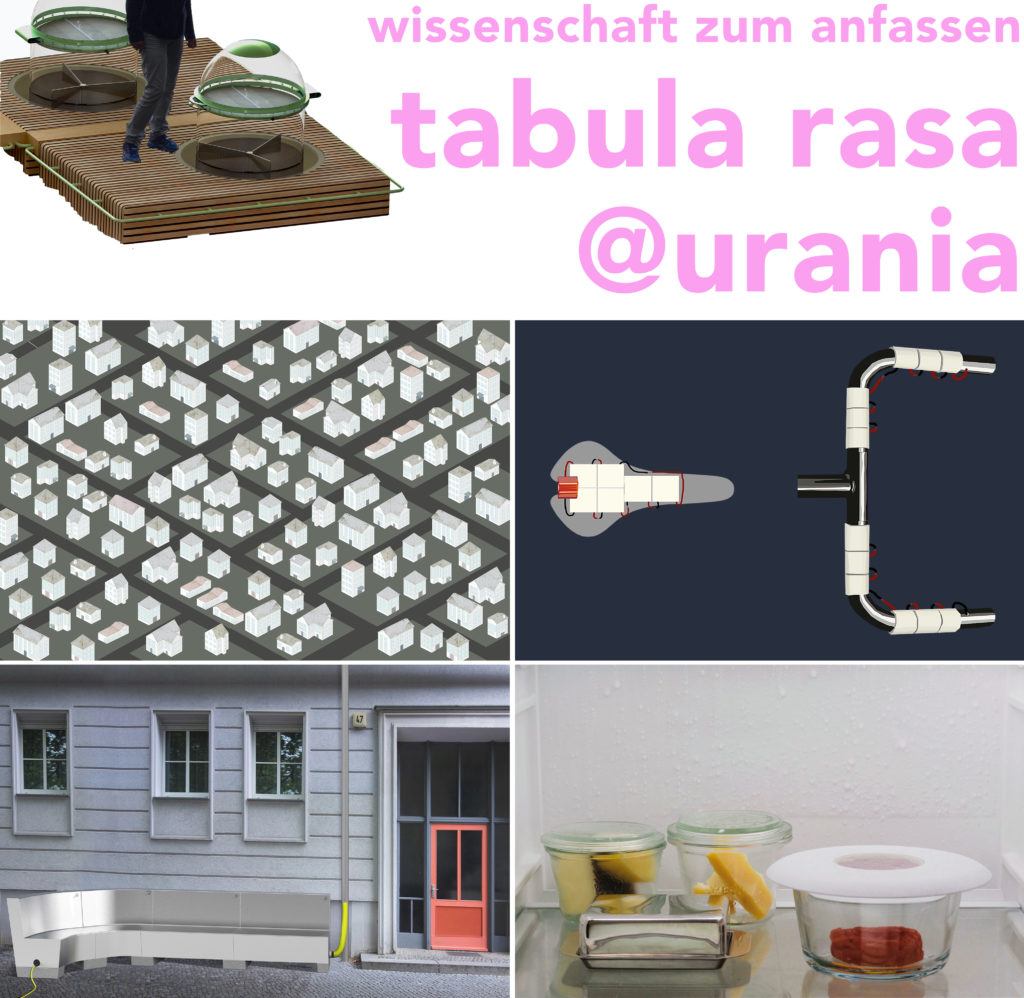
On the occasion of the major project Knowledge City 2021 and to kick off Berlin Science Week, Urania Berlin is organising an open forum for science, politics and the general public to meet: the science fair „Tabula rasa.
As part of a compact theme day, the „Tabula Rasa“ science fair, together with the partner network of the Berlin Year of Science and the Berlin Science Week, offers an exciting forum for young ideas from science that appeals to different generations in a vivid way and in dialogue. One focus is on presenting Berlin as an innovative science location. To this end, young scientists will present their work on current topics relating to digitalisation, the environment and climate, medicine and health in poster sessions and then engage in a relaxed exchange with other experts and visitors providing visitors with numerous opportunities to actively participate in the discourse.
At the Tabula Rasa – science at your fingertips / Wissenschaft zum Anfassen event Dominique Bertisch, Anna Maria Argmann, Hendrik Lucka, Roya Haupt and Kimia Amir Moazami will present as UdK product design students. Kimia’s Vorkoster is her graduation project, the other projects are developed in the Find a Fact & Act project in the wintersemester of 2020/21 under supervision of prof. Ineke Hans.
The dialogue programme is complemented by a short film programme on the theme of „StadtNatur- Berlin ökologisch denken“. Here, visitors can immerse themselves in the topics of biodiversity and climate change and experience different worlds in a very vivid and lively way. In the Q&A session with the filmmakers and protagonists afterwards, visitors can ask their own questions.
A moderated final discussion will bring politicians and scientists into conversation with each other. The final event at Café Urania offers all participants the opportunity to exchange ideas and network. There will be a special hands-on area for children called „Understanding Science“.
The event is moderated by journalist, author and Zeit editor Fritz Habekuß.
Admission free, registration required
read more HERE
and find more info HERE
30 October 14:00
An der Urania 17
10787 Berlin-Schöneberg
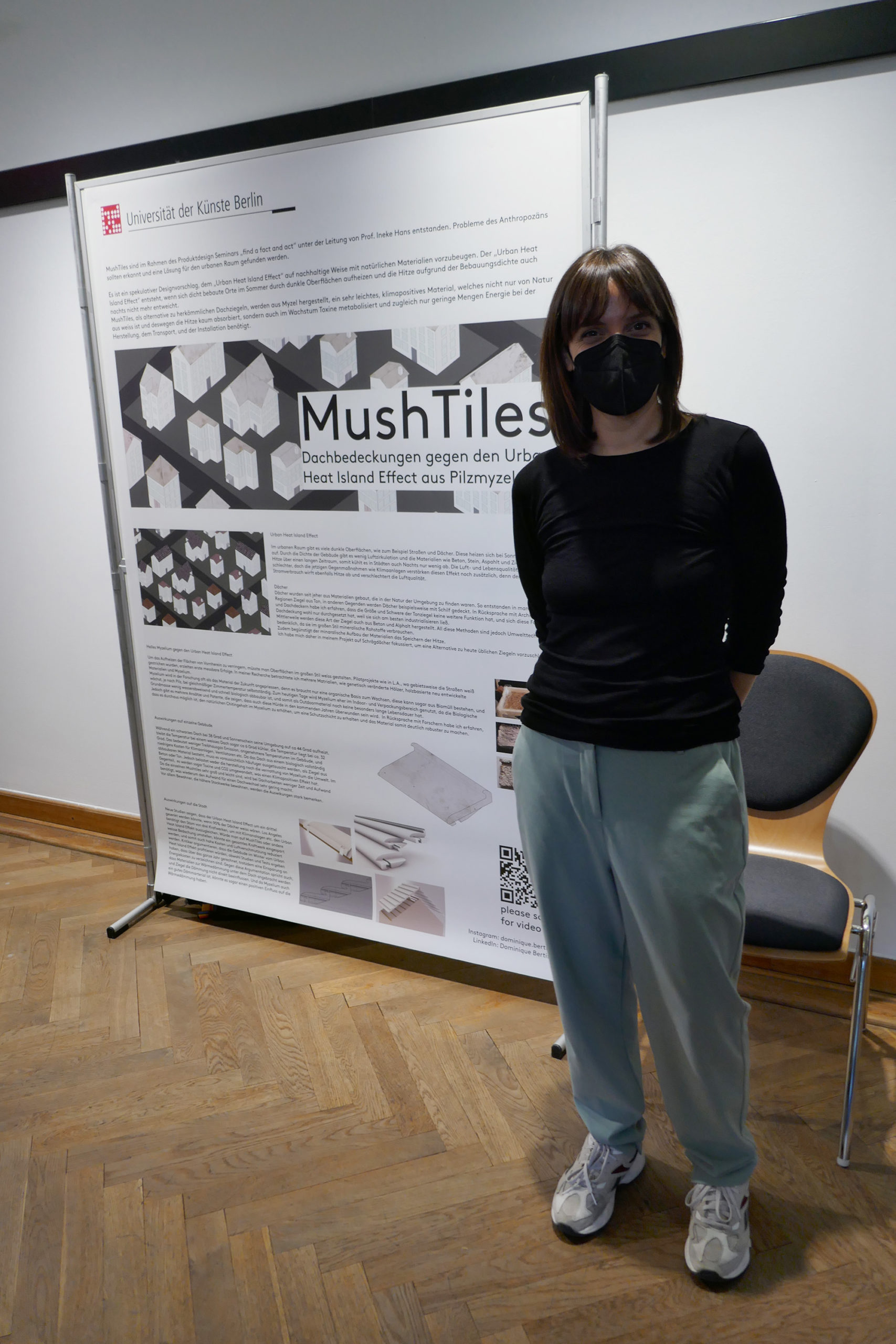
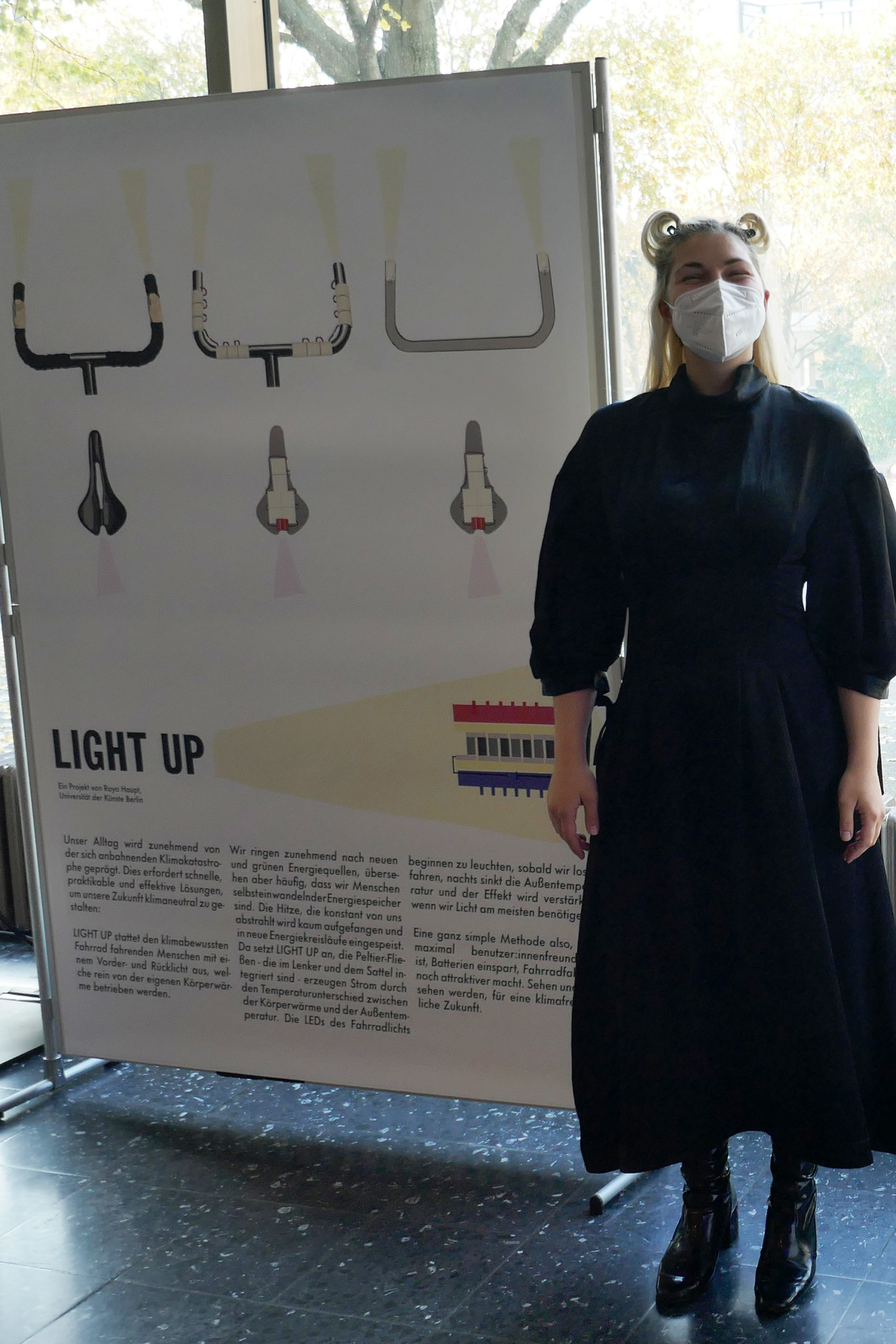
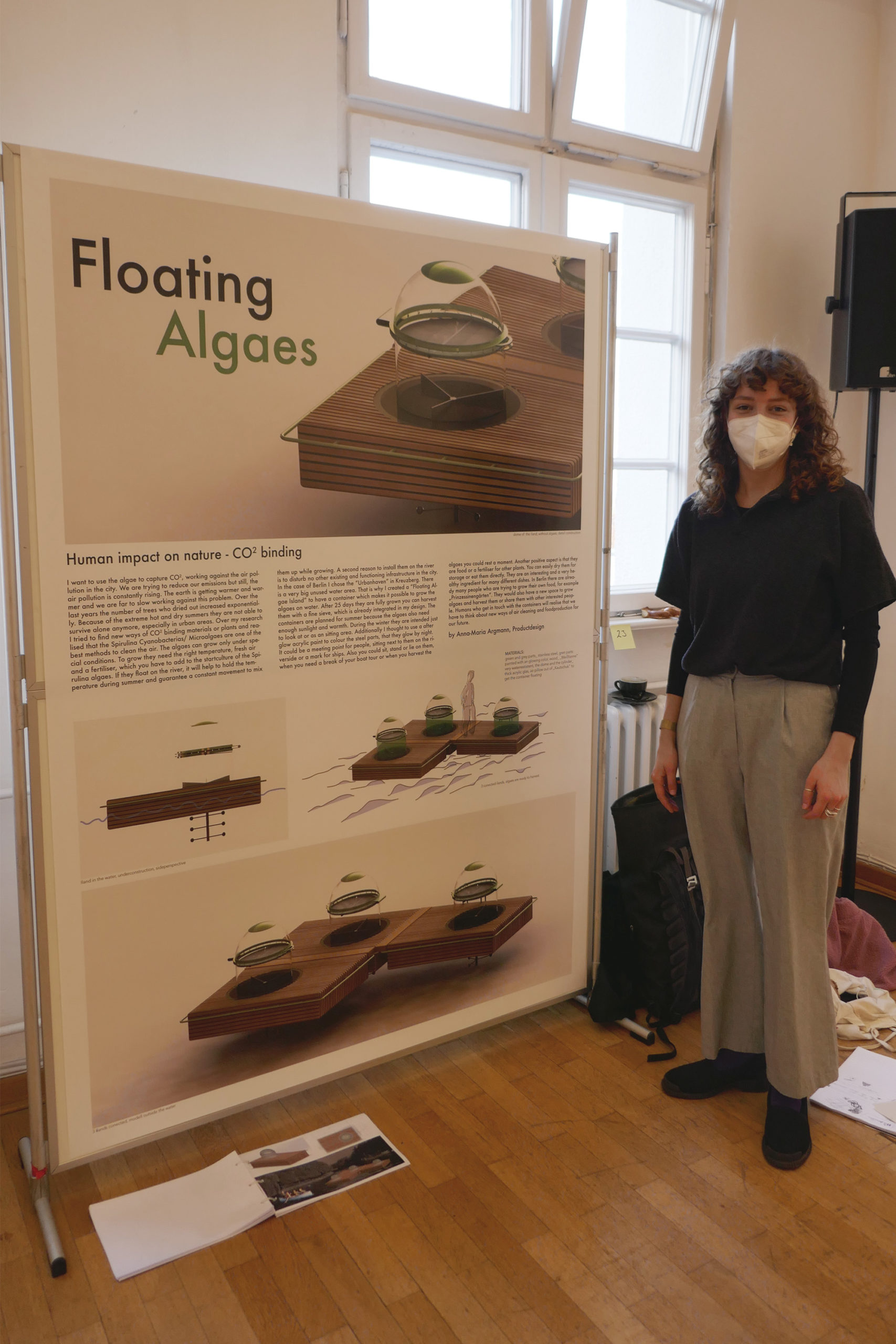
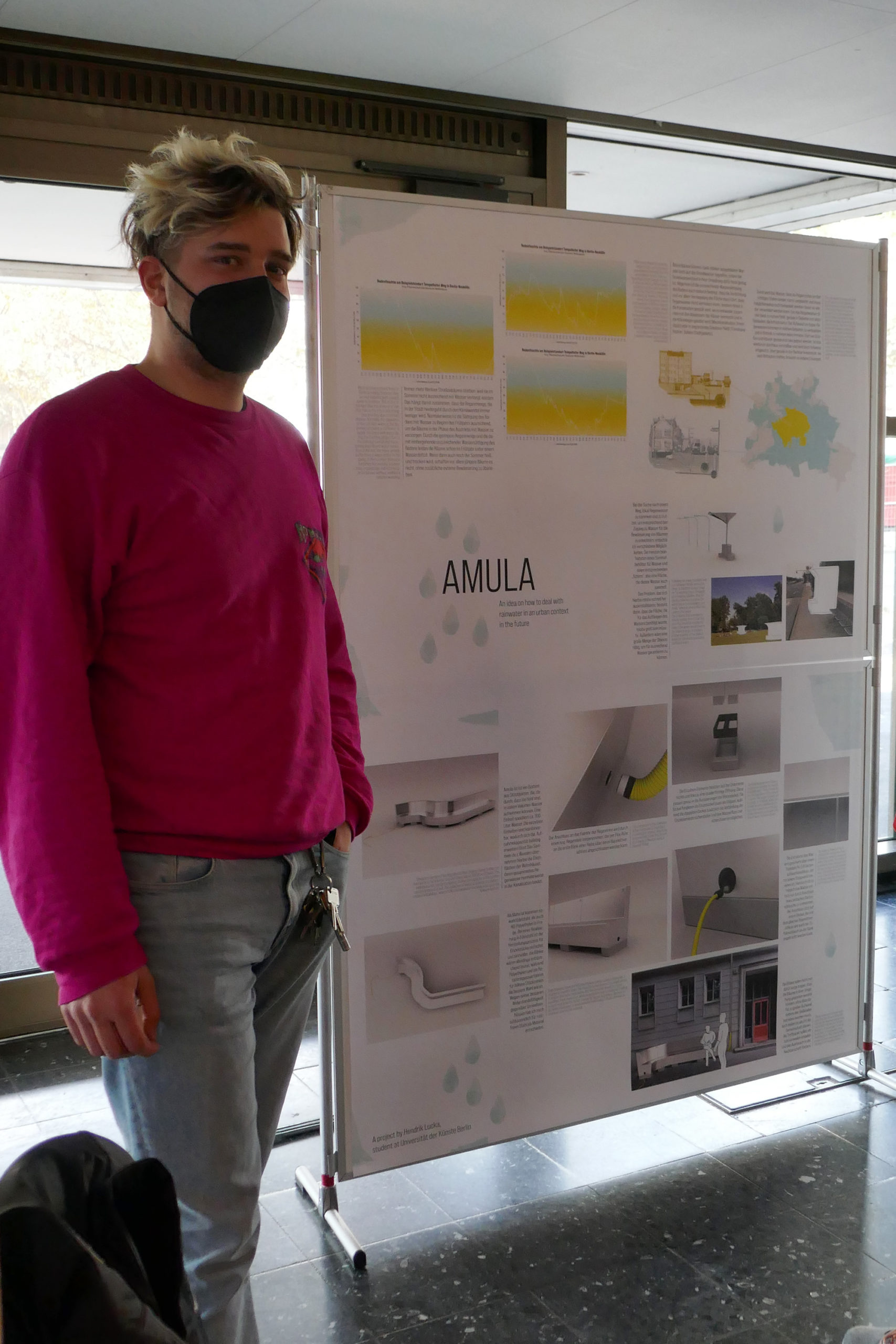
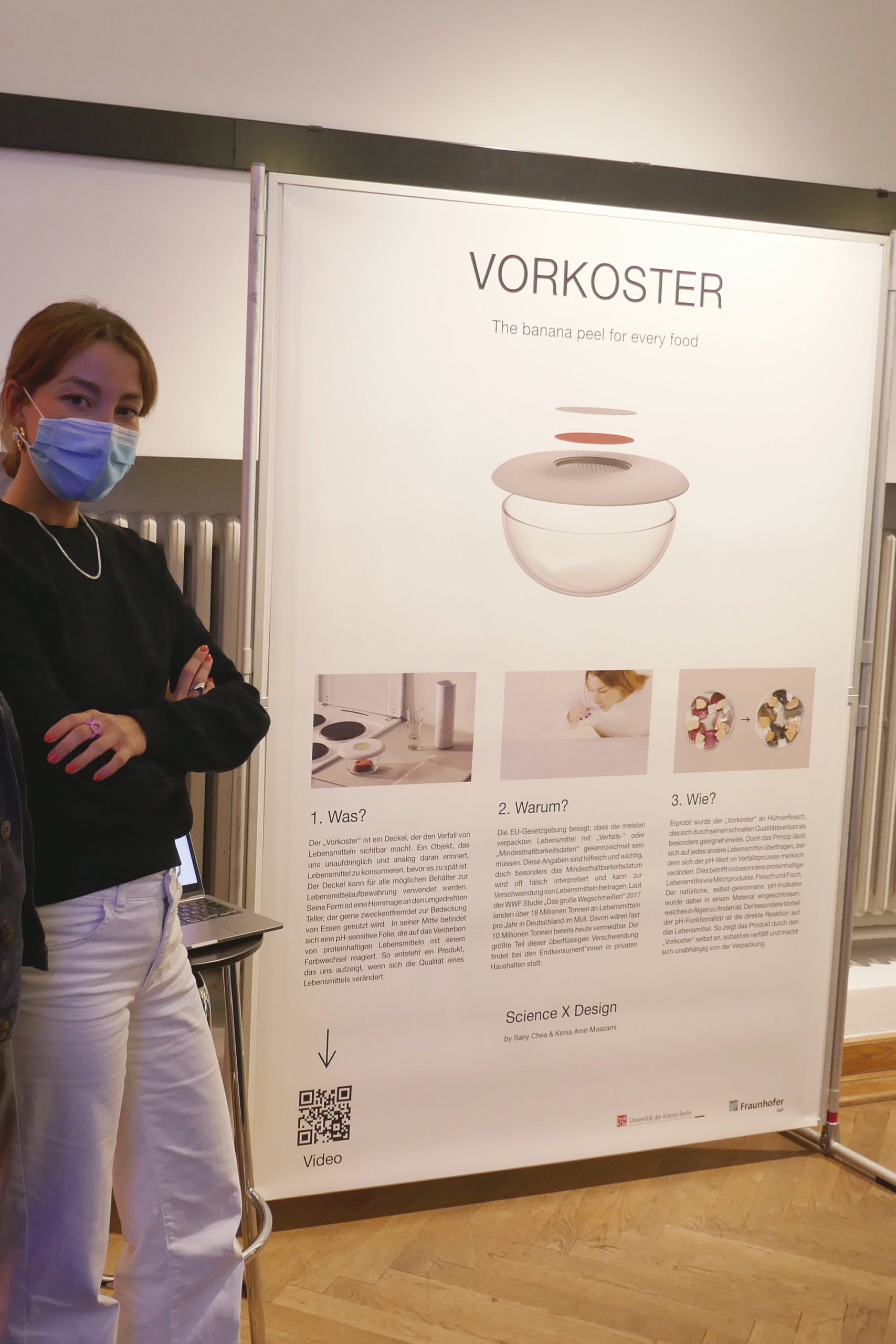
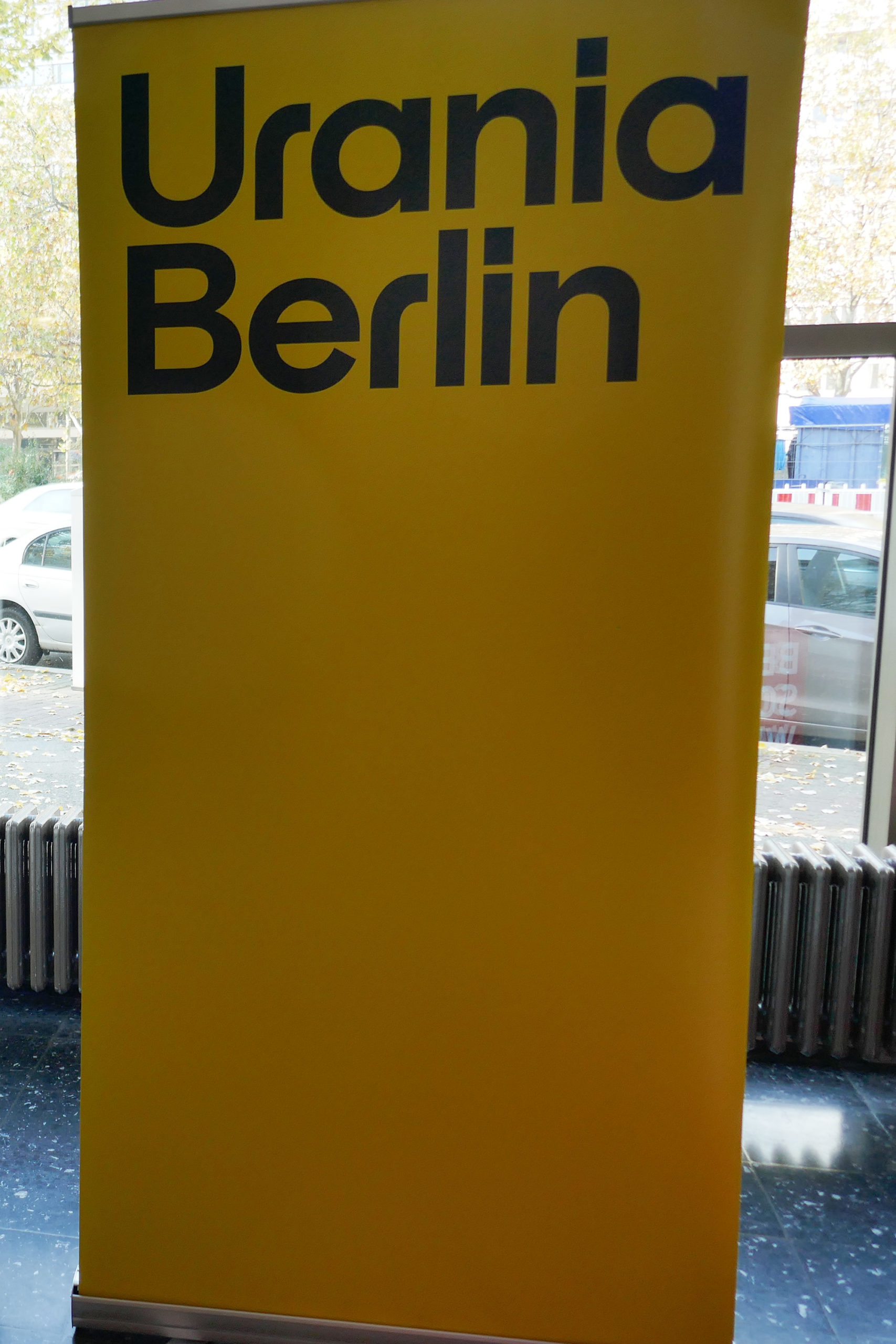
The Elusiveness of objects and worlds
Weil die Bedeutung der Funktionalität naheliegend ist, geben wir der Fülle an Symbolen, die in unserem Unbewussten schlummert, wenig Aufmerksamkeit. Symbole entstehen aus vergangenen Ereignissen und sind geprägt durch Emotionen, die einst diese ursprünglichen Ereignisse in uns auslösten. Sie können aber auch einen kollektiven Ursprung haben und uns durch Gesellschaft, Kultur, Zeit und Raum infiltriert worden sein. So oder so ist ein Symbol nicht nur die Bedeutung eines Dings, sondern auch ein Gefühl, das uns erst einnimmt, und uns dann im Sog der Interpretationskraft davonträgt. Ist es einmal im Unbewussten manifestiert, müssen wir uns damit auseinandersetzen. Um uns selbst in unserem Dasein bewusst zu werden, müssen wir uns um das Verständnis symbolischer Bedeutung und deren Wirksamkeit bemühen. „The Elusiveness Of Objects And Worlds“ erforscht die archetypische Symbolik von Objekten, die durch eine Verschmelzung des digitalen und analogen Raums geboren sind. Zufall und eigene Interpretationskraft werden Instrumente zur Veranschaulichung der unbewussten Vorstellungskraft. Es entsteht eine intuitive Weise des Gestaltens, unbekannte Formen und damit eine Gruppe an phygitalen Artefakten, die Symbole aus beiden Welten mit sich bringen.
Because the meaning of functionality is always most apparent to us, we may pay just little attention to the richness of symbols that are inherent in our unconscious. Symbols arise from past events and are shaped by the emotions that these original events once triggered in us. But symbols can also rise from a collective origin. Those have been infiltrated into us by the society, culture, time and space, that we live in. Either way, a symbol is more than just the plane meaning of a thing. It’ s a feeling that we get touched by first and then, by the pull of power of our own interpretation, we get carried away. Once it’s manifested in the unconscious, we have to deal with it. In order to become aware of our own existence, we have to strive the understanding of symbolic meaning and its effectiveness. “The Elusiveness Of Objects And Worlds” explores the archetypal symbolism of objects that are born through a fusion of digital and analogue space. Analogue and digital chance and power of interpretation become instruments of creation to illustrate the unconscious power of imagination. The result is an intuitive way of designing unknown shapes and phygital artifacts that are carrying symbols from both worlds within them.
Prozess



















Betreut durch
Prof. Axel Kufus, Anja Lapatsch, Prof. Jozef Legrand
Seemannsgarn
Eine kleine Insel wandelt inmitten der Wüste des offenen Meeres.
In den Erzählungen, treibt sie leuchtend auf der spiegelnden Oberfläche,
und in der Nacht grau zwischen Wellenbergen.
Entsprechend der Gezeiten, greift rhythmisch in ihr, eine Mechanik vom Wasser getrieben. Sie strickt einen Draht in das Unmenschliche hinab.
Die Strömung bedingt auch den Strom, der das Salzwasser spaltet;
Calciumcarbonat und Magnesium versteinern das Strickwerk zu Aragonit.
Die Bewohner des Wassers sind am Stein gesiedelt,
Mollusken und Algen haften dem Mineralischen an.
Auf ihrer Wanderung vorbei ziehende Fische, finden hier Nahrung, ihrerseits Beute für größere Räuber.
A small island wanders in the middle of the desert of the open sea.
In the stories, she floats shining on the reflecting surface,
and gray in the night between wave crests.
Corresponding to the tide, a mechanism that is driven by the water intervenes in it rhythmically. She knits a wire down into the inhuman.
The current also causes the current that splits the salt water;
Calcium carbonate and magnesium turn the knitting into aragonite.
The inhabitants of the water are settled on the stone,
Mollusks and algae adhere to the mineral.
Fish passing by on their migration find food here, in turn, prey for larger predators.
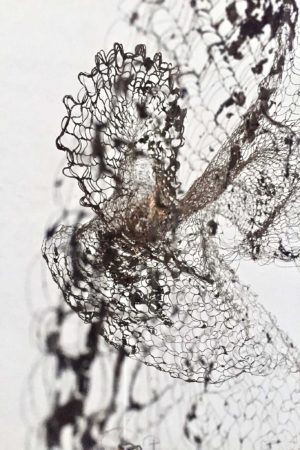
Prozess
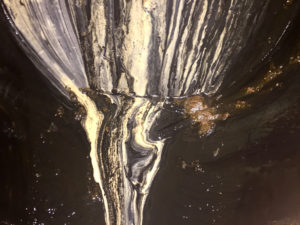
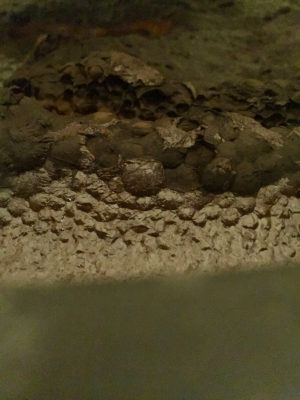
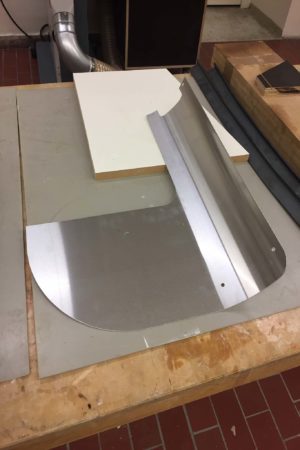
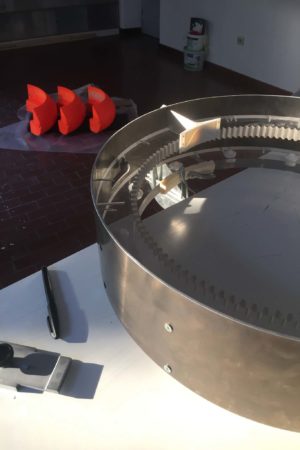
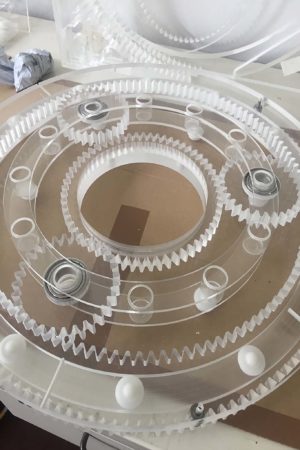
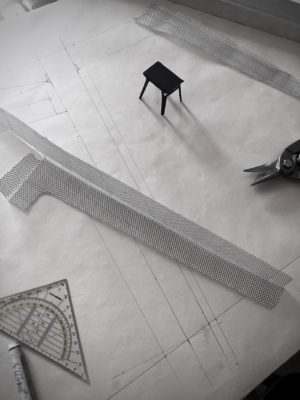
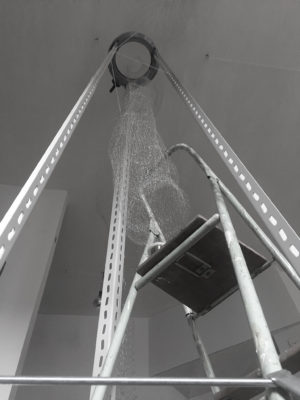
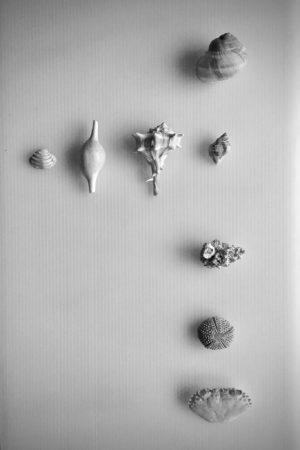
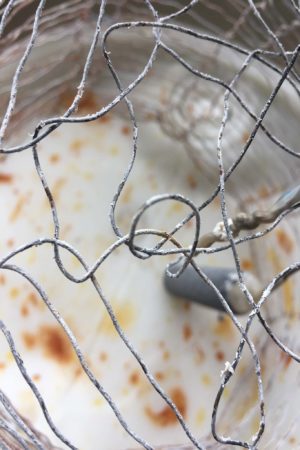
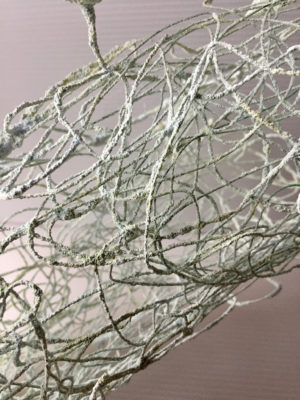
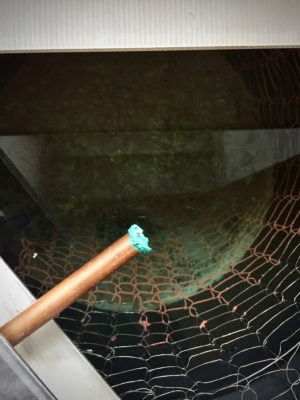
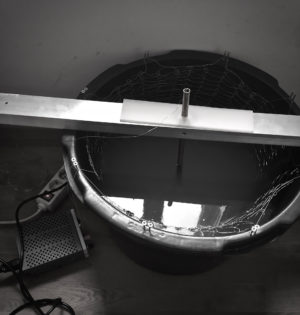
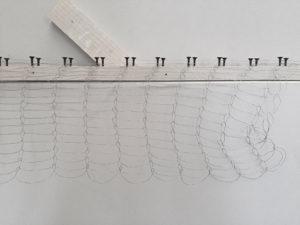
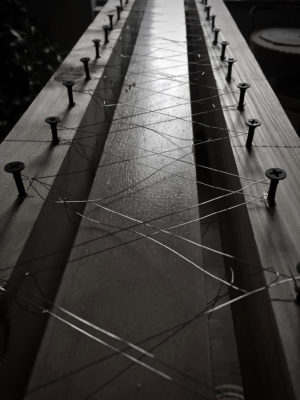
Betreut durch

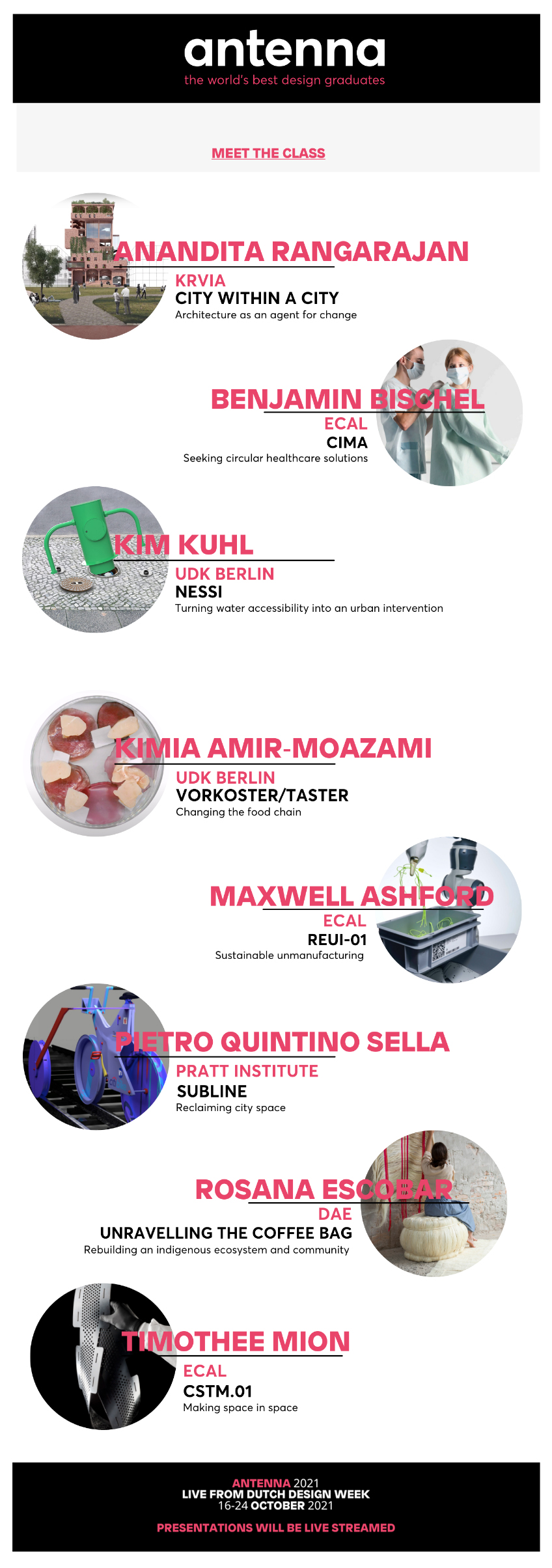
Nessi by Kim Kühl and Vorkoster by Kimia Amir Moazami are selected for Antenna 2021 at DDW Eindhoven
Antenna is a platform for young, international design talent, initiated by Design Indaba and Dutch Design Week. They aim ‚to pick the very best of a next generation that will have a positive impact on the world with new insights, clear ideals and strong ambition. No superficial products or big names, but people searching for answers to global challenges. Antenna gives them a voice and the chance to change the world.‘
Annually Antenna presents young students or recent graduates (past 2 years), under 35 years of age, ranging from first-year all the way to PhD level, who are creating design work that has the potential to change the world for the better.
At Dutch Design week projects are presented that show a high level of quality of work (innovation, function & use, sustainability & life cycle). The projects address one or more of the 17 Sustainable Development Goals as an overall aspect.
Antenna is interested in the process and the thinking behind the product or service, its environmental and social impact, its current feasibility and implementation, and its potential for future development.
Selected candidates are invited to Holland for a matchmaking and networking program and supported in short talks to targeted audiences.
This year 8 students and their projects were selected from international design schools. Among them: Kimia Amir Moazami and Kim Kuhl from UdK.
• Kimia is selected with her graduation project Vorkoster a device that informs you about the quality of your food that you can use over and over again. Kimia developed Vorkoster by working closely together with researchers from the Fraunhofer Institut.
Kimia is invited to Dutch Design Week 2021 and will speak for a selected audience at the Ambassadors‘ dinner.
• Kim Kuhl is selected with Nessi a project that deals with draught and trees in urban environment. Nessi was developed in the Find a Fact & Act project of Prof. Ineke Hans
More info on the projects below
You can find more about join Antenna and the conference at Dutch Design Week 2021
Vorkoster at Antenna
Nessi at Antenna
see more about previous antenna’s here
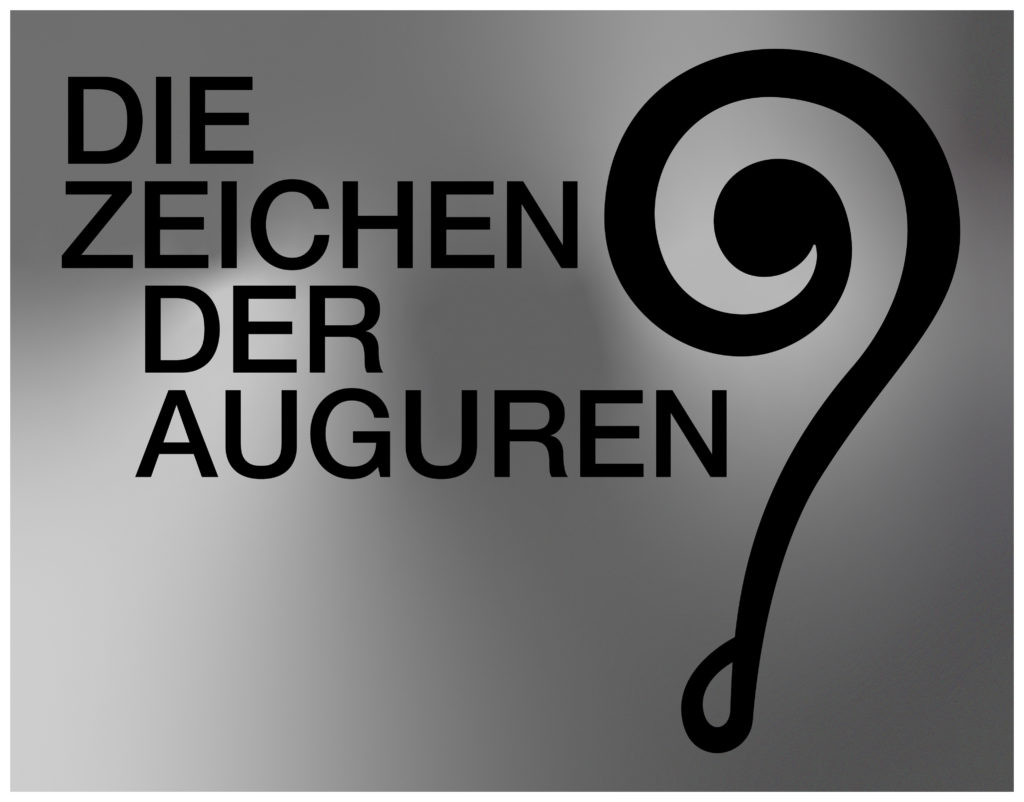
über Fluch und Segen von technologischen Entwicklungen
Auguren im alten Rom deuteten mit Krummstäben die göttliche Zustimmung oder Ablehnung geplanter Vorhaben.
Wir leben in einer Zeit des immensen Umbruches, Paradigmenwechsels und grundlegender Fragen. Wir erleben Spaltung, Verwirrung und Verunsicherung.
Big Tech, Big Pharma und Big Money haben neben steigenden Profiten auch wachsenden politischen und gesellschaftlichen Einfluss u.a. in Private / Public Partnerships.
Die Verschmelzung von Mensch und Technologien schreitet voran durch das Internet der Körper, Künstliche Intelligenz, Automatisierung, Nano- und Biotechnik, Biosecurity, Designer-Organismen, Geo-Engineering, Digital-Homeschooling, Smart-Homes und Cities sowie verordnete Kontaktverfolgung und digitale Identität für den Zugang zum öffentlichen Leben.
Werden wir mit unseren digitalen Schatten unter Global Governance in einem superdigitalisierten, hypervernetzten, biometrisch-technokratischen Überwachungsstaat leben – einer Mischung aus George Orwell’s „1984“ und Aldous Huxely’s „Schöne neue Welt“?
Technologien bergen das Potenzial für großen Segen sowie für unfassbaren Fluch, und sie sind immer nur so gut oder schlecht, wie die Menschen, die sie entwickeln und anwenden. Wie kann Design die Zeichen deuten, Verantwortung übernehmen und die Richtung mitsteuern für eine menschlichere, freiere, gerechtere Welt?
Alle sind willkommen mit Gesprächen, Visuals, Videos und Installationen daran mitzuwirken.
Taschenlicht
Das [TL.21] Taschenlicht ist eine minimalistische Stehleuchte. Die TL.21 ist eine zusammenklappbare Stehlampe, die als Antwort auf die Problematik des Versands schwerer Sockel erstanden ist. Auf der Suche nach Lösungen in der Outdoor-Branche, die sich auf leichte und zusammenklappbare Materialien konzentriert, die Im bestenfalls mit lokalen Herstellern Produziert werden kann, So kann TL.21 in einem Paket verschickt werden, das nur einen Bruchteil der Größe und des Gewichts der Leuchte ausmacht. Der Sockel der Lampe besteht aus einem verschweißtem TPU-Beschichtetem Nylon Gewebe, das bei der Konstruktion von aufblasbaren Kajaks verwendet wird, und wird zum Gebrauch mit Wasser oder Sand gefüllt. Eine LED-Leuchte, die in einer Taschenlappenartigen Gehäuse sitzt unter einem Recycelten PET Leuchtschirm verborgen ist, wird von einem Zeltstange getragen. Flexibel und dauerhaft. Geschaffen für Esszimmer, Büros, Wohnzimmer und Wohnräume. Hochmoderne Designmaterialien, die sich für Empfangsbereiche und Büros eignen. „Taschenlicht“ verbindet den strukturellen Charakter der Architektur mit der Dynamik der Outdoor Branche in bleibender Qualität. Ebenso bietet [TL.21] funktionelle und ästhetische Lösungen für den Wohn- oder Aussenbereich. „Taschenlicht“ hat eine eigene Identität und ein einzigartiges Profil, mit dem Fokus auf präzise Details. Das Design zeichnet sich durch eine moderne Palette klassischer Farben aus, welche die Fähigkeit des Systems unterstreichen, ein einzigartiges und persönliches Erlebnis zu bieten. Graphitschwarz und Silber sind die traditionellen Farbcodes, während Tieforange die Signaturfarbe ist.
The [TL.21] pocket light is a minimalist floor lamp. The TL.21 is a collapsible floor lamp, the answer to the problem of shipping heavy bases. Looking for solutions in the outdoor industry, focusing on lightweight and collapsible materials that Im able to produce at best with local manufacturers, So TL.21 can be shipped in a package that is only a fraction of the size and weight of the lamp. The base of the light is made of a welded TPU coated nylon fabric used in the construction of inflatable kayaks, and is filled with water or sand for use. An LED light, which sits in a flashlight-like housing hidden under a Recycled PET light shade, is supported by a tent pole. Flexible and durable. Created for dining rooms, offices, living rooms and residential spaces. Ultra-modern design materials suitable for reception areas and offices. „Taschenlicht“ combines the structural character of architecture with the dynamism of the outdoor industry in lasting quality. Likewise, [TL.21] offers functional and aesthetic solutions for living or outdoor areas. „Taschenlicht“ has its own identity and unique profile, with a focus on precise details. The design features a modern palette of classic colors that highlight the system’s ability to provide a unique and personalized experience. Graphite black and silver are the traditional color codes, while deep orange is the signature color.
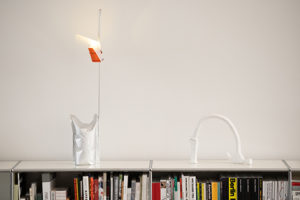
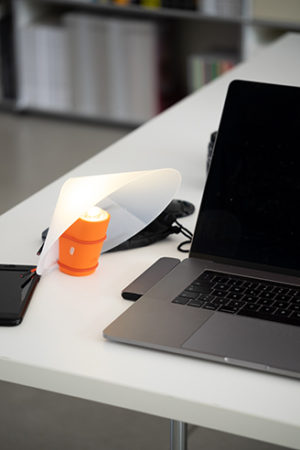
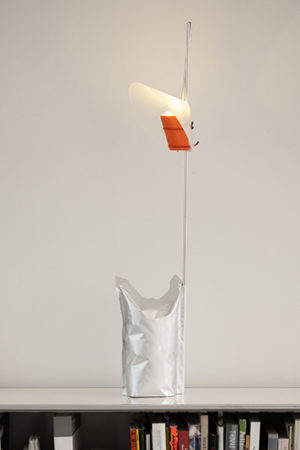
Prozess
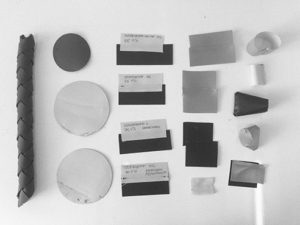
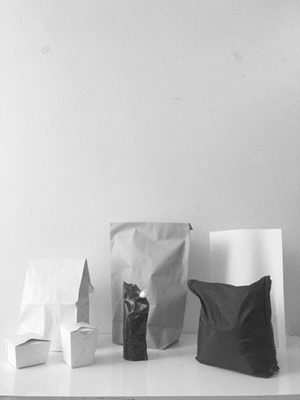
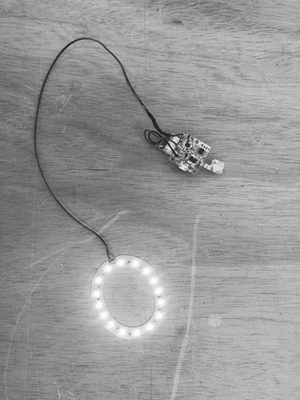

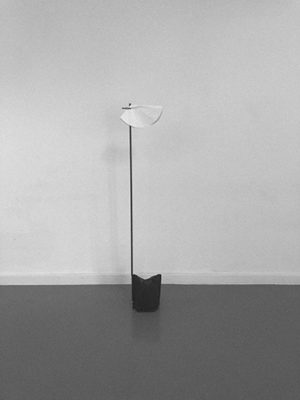

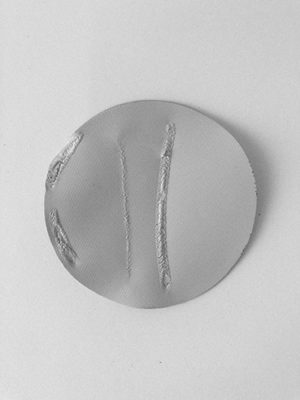
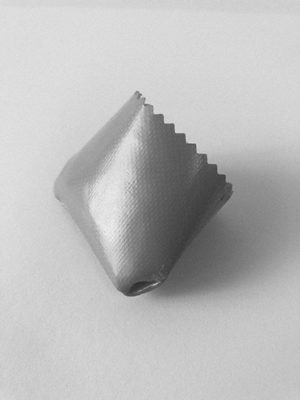
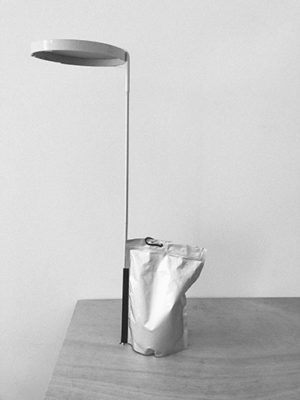
Betreut durch
Prof. Axel Kufus, Prof. Burkhard Schmitz, WM Martin Beck
Kontakt
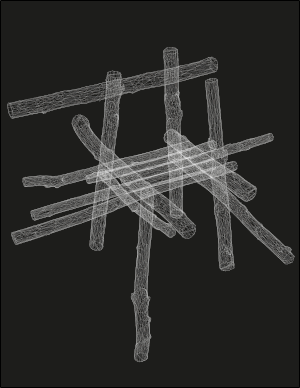
New Sources
Während des Masterstudiums habe ich einen Prozess zur nachhaltigen Herstellung von Holzobjekten entwickelt, durch eine Verbindung von Computerdesign, 3D-Scannen und Roboterfertigung. Ständige Neuberechnungen ermöglichen den Einsatz unregelmäßig geformter Materialien für die Serienfertigung. Ein speziell für dieses Projekt entwickelter Algorithmus analysiert die Geometrie gescannter Äste und platziert sie im virtuellen Raum an die richtige Position. Darüber hinaus werden alle notwendigen Produktionsdaten automatisch berechnet und an einen industriellen Fräsroboter gesendet. Äste werden vorab per Mustererkennung selektiert. Verschiedene Formen passen zu verschiedenen Teilen. Um während der Covid-Pandemie selbstständig arbeiten zu können, habe ich einen kaputten 22 Jahre alten Kuka-Industrieroboter gekauft, repariert und in der Garage meiner Eltern in Ränkam, einem kleinen Dorf im ländlichen Bayern, eine temporäre Werkstatt eingerichtet. Der Computerblockstuhl ist das Endergebnis dieser Fallstudie, bei der Restmaterialien aus der Holzindustrie als alternative Materialquelle für den Bau von Wohnobjekten verwendet werden. In diesem Fall werden Birkenzweige verwendet. Durch die Verwendung von Ästen anstelle von vorgeschnittenem Holz ist jedes Objekt ein Unikat und hat einen anderen Charakter. Die präzise gefrästen Flächen, die rund um das Objekt erscheinen, vermitteln die Schnittstelle zwischen Natur und Technik. Die Birkenrinde bleibt teilweise erhalten und dient als natürliches Ornament, um die Natur und ihre unregelmäßigen Formen zu feiern. Die Materialwahl kritisiert den Massenkonsum und stellt die Standardisierung natürlich angebauter Materialien im industriellen Kontext in Frage.
During the master i developed a process for sustainable production of wooden objects, through an interconnection of computational design, 3D scanning and robotic manufacturing. Constant recalculation makes it possible to use irregular formed materials for serial production. An algorithm specially developed for this project analyzes the geometry of scanned branches and places them into the right position in virtual space. Furthermore all necessary production data gets calculated automatically and sent to an industrial milling robot. Branches will be selected in advance using pattern recognition. Different forms fit different parts. To work independently, during covid pandemic, i bought a broken 22 year old kuka industrial robot, fixed it and set up a temporary workshop in my parent’s garage in Ränkam, a small village in rural Bavaria. The computational log chair is the final outcome of this case study using left over materials from wood industry as an alternative material source for building domestic objects. In this case birch branches are used. Using branches instead of pre cut wood every object is unique and has a different character. The precisely milled surfaces that appear all around the object communicate the intersection between nature and technology. The birch bark partly remains and works as a natural ornament to celebrate nature and its irregular forms. The material choice criticizes mass consumption and questions the standardization of natural grown materials in industrial context.
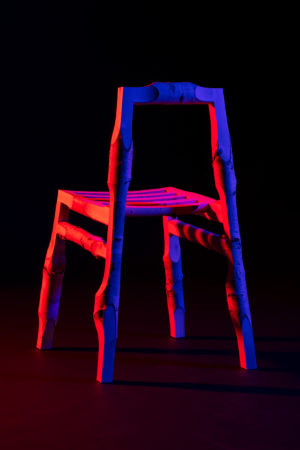
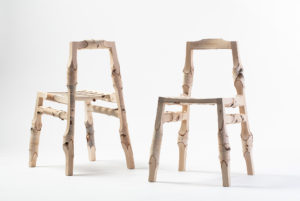
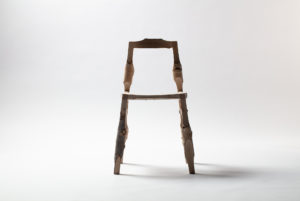
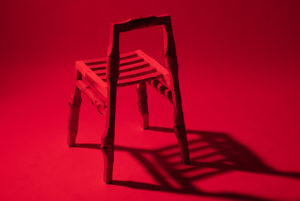
Prozess
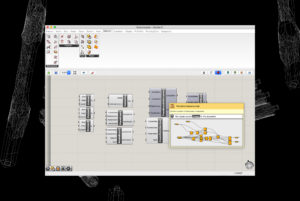
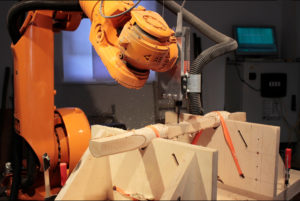
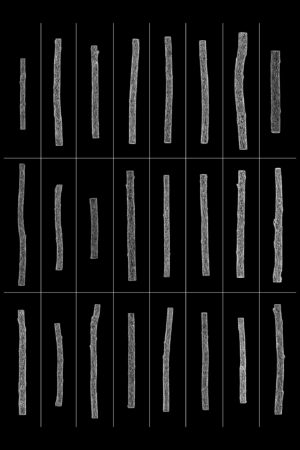
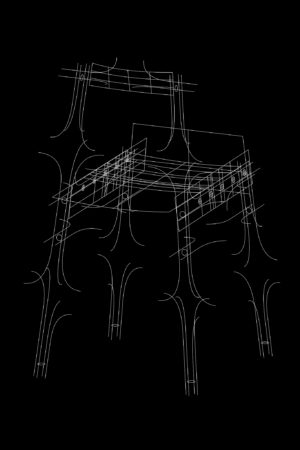
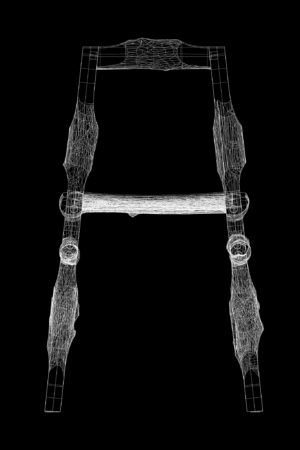
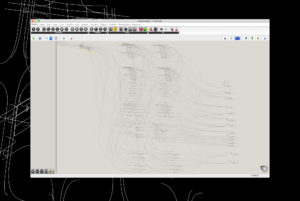
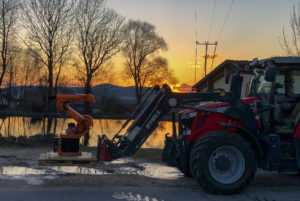
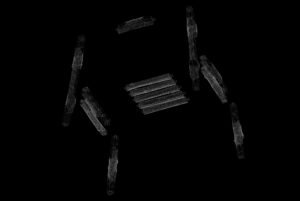
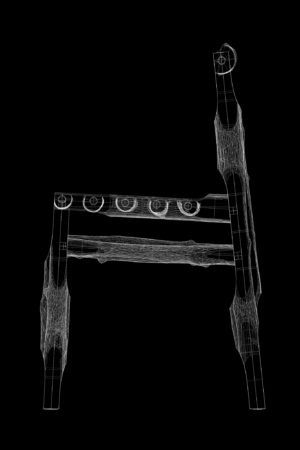
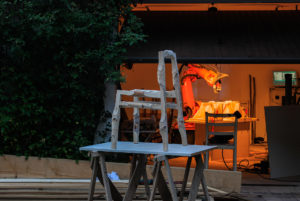
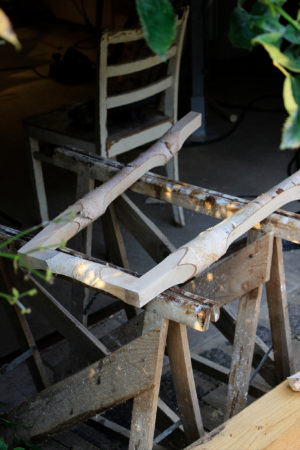
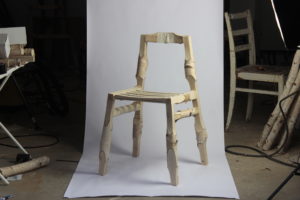
Betreut durch
Prof. Axel Kufus, Prof. Burkhard Schmitz, Prof. Holger Neumann
Kontakt
Matthiasgschwendtner.com
https://www.instagram.com/maaatthias/
So Muse
Sprachassistenzen sind heutzutage weder sehr persönlich noch sonderlich intelligent. Durch technische und kulturelle Entwicklungen lassen sich aber auch neue Anwendungsgebiete erahnen, die über das Stellen eines Weckers hinausgehen. Es werden immer natürlichere Unterhaltungen mit Maschinen möglich und in diesem Projekt geht es darum neue Ansätze für eine sprachbasierte Mensch-Maschine Interaktion zu entwerfen.
Ein Teil der Arbeit besteht darin eine alternative Persönlichkeit für eine Sprachassistenz zu konzipieren. Dafür wurde die Rolle einer Muse gewählt. Statt Befehle auszuführen geht es darum zu inspirieren. „Es“ hört auf den Namen Sunny und wurde darauf trainiert bei kreativen Prozessen zu unterstützen. So kann es beispielsweise Feedback zu Ideen geben oder für Brainstormings eingesetzt werden. Dabei hört es zu, stellt Fragen und regt das Gespräch mit eigenen Vorschlägen an. Der andere Teil der Arbeit dreht sich um die Verkörperung. Mit gängigen Sprachassistenzen wird vor allem über das Smartphone oder über Smartspeaker kommuniziert. Dabei handelt es sich allerdings um sehr statische Objekte. Um sich mit einer Maschine auf einer Ebene zu unterhalten sollte diese auch als ein Gegenüber wahrgenommen werden. Basierend auf diesen Annahmen wurde ein Prototyp entwickelt, der sich neben der Fähigkeit zu sprechen und zu hören auch bewegen kann.
Intelligent personal assistants are nowadays neither very intelligent nor very personal. Despite that, they are still part of our daily lives and are used for simple tasks such as setting alarms or reading the news. With cultural and technological shifts, new use cases emerge that allow more natural conversations between humans and machines. The first use case focused on general brainstorming or giving feedback on conceptual ideas.
In order to have natural conversations with a machine, it is helpful if the interaction is not explicitly based on language. For example, in human conversations the interaction is enriched by gestures and facial expressions, which is an integral part of transmitting the information appropriately. This is why a physical prototype which is able to move and express itself was developed. This personal robot listens out for its name: „Sunny“. It has one eye, four ears and can move its head. It’s powered by some of the most advanced AI systems available today and listens to your ideas or responds with its own ideas. It can also help you to evaluate and choose different options. Although Sunny’s answers are not always as accurate as they would be from most human beings, they can more often than not help you to expand your horizons.
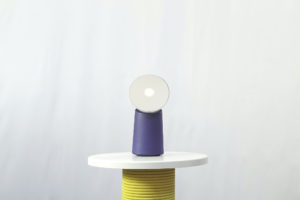

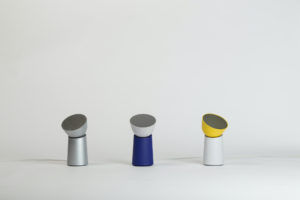
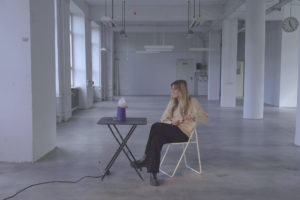
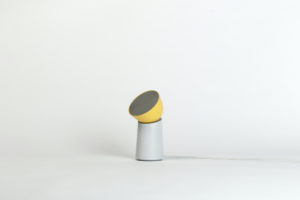
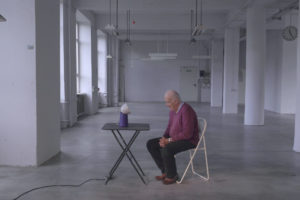
Prozess
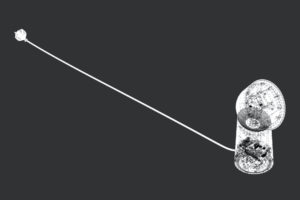
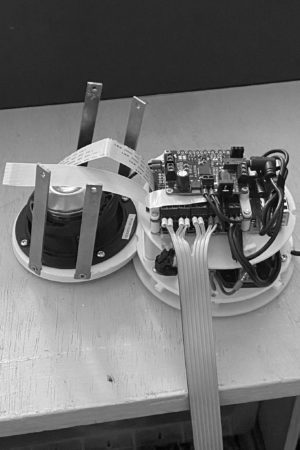
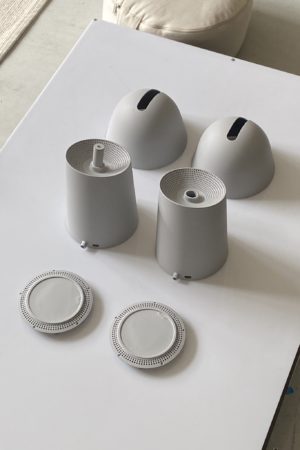
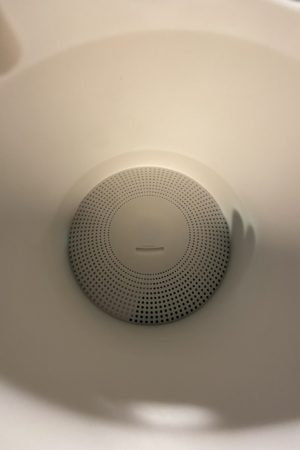
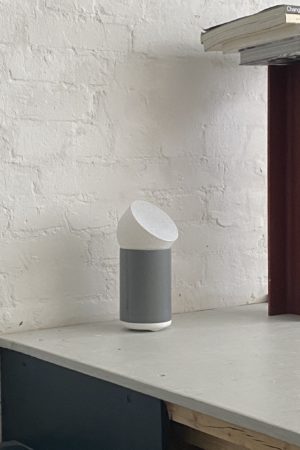
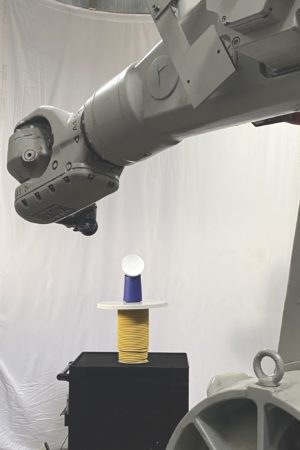
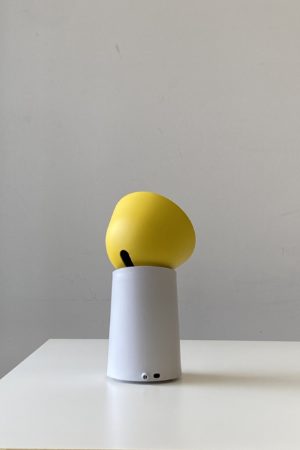
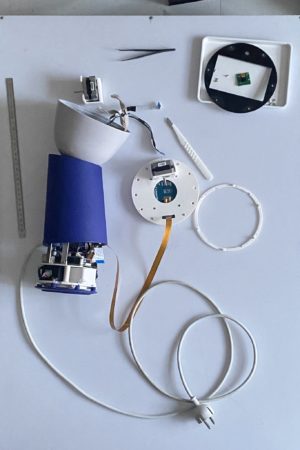
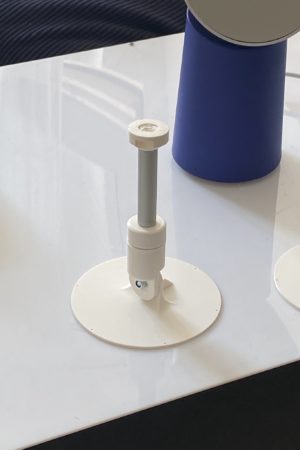
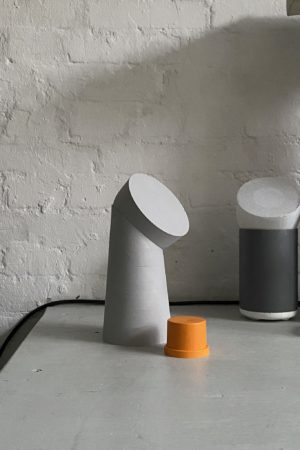
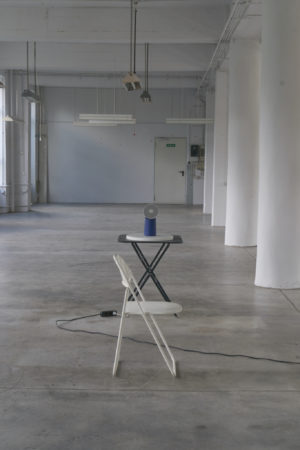
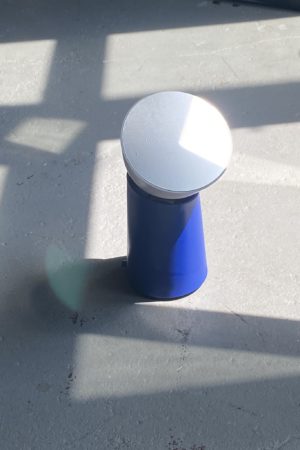
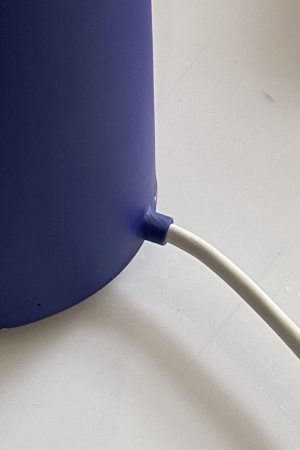
Betreut durch
Prof. Axel Kufus, Prof. Burkhard Schmitz, Prof. Jozef Legrand
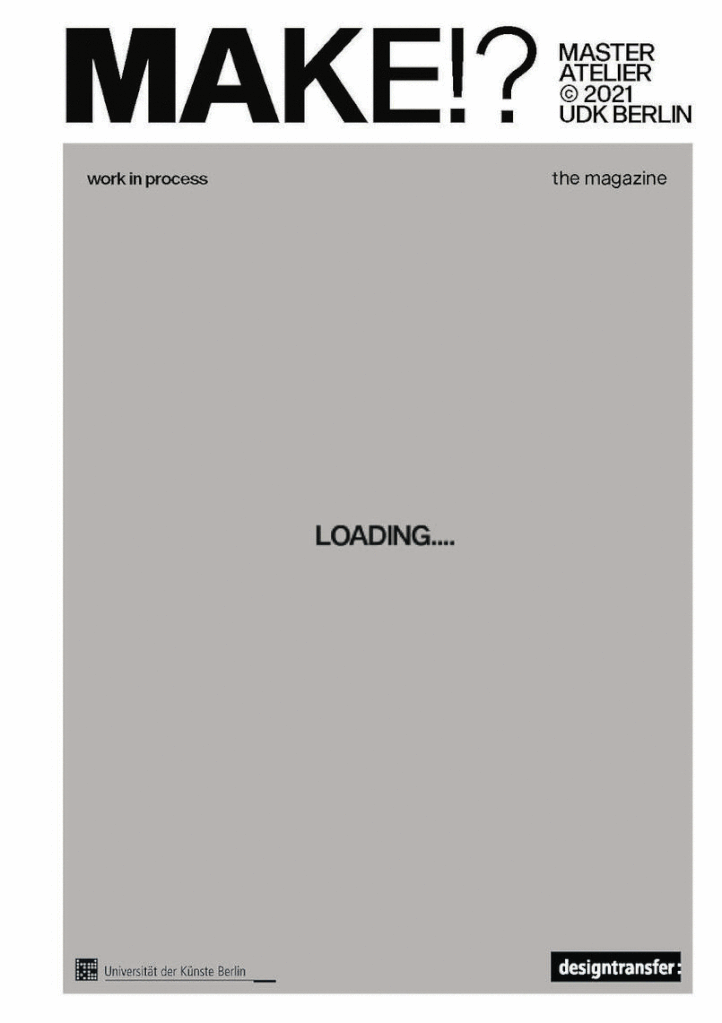
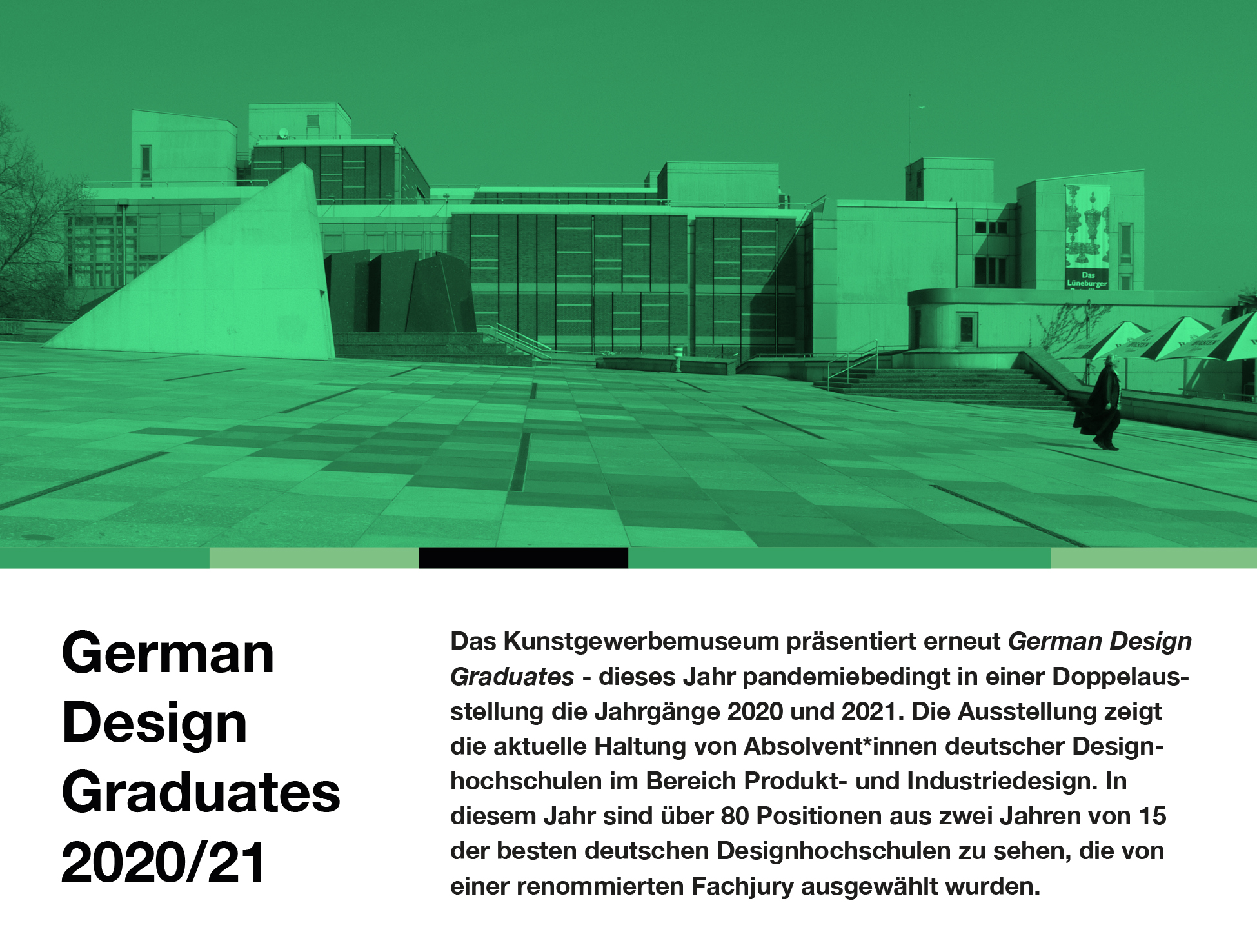
On 8 Oktober, German Design Graduates 2020/2021 will open in the Kunstgewerbemuseum Berlin. Since 2020 was a special year, that did not allow a physical exhibition, the selected works of 2020 will be on show in a double-expo 2020-2021.
Facts on 2021 selection:
• 177 projects from graduates of 15 German Design Schools are online in the so called HALL OF FAME.
• the young designers all graduated between 30.6.2020 and 31.5.2021
• 23 students graduated from UdK Produkt Design
• for 2021 50 projects of the online archive are selected for an exhibition that highlights topical themes by a a Jury of 5 GDG ambassadors from the fields of Design Culture, Design Praxis, Design Presentations, Design Perspectives, Design Press
• Representatives from the 5 ambassador groups will hand out green cards, supports and awards to the total HALL OF FAME at the award ceremony of 8 October in the Kunstgewerbemuseum Berlin
The exhibition will run from 09.10.2021 till 31.10.2021
You can find more on the UdK exhibitors 2020 and 2021 below
During this first weekend events and talks will take place at the Kunstgewerbemuseum
Saturday 9 October Mediapartner talks
13:00 THF Radio Talk
Post Graduate Perspectives – how much utopia can reality take?
16:00 Ndion Talk
Transferleistung. Wie kommt das Design in die Produktion?
Sunday 10.October: Design Reflection Talks
13:00 UdK Design Talk: Amelie Klein *
To Hell with Good Intentions Why design won’t save the world
16:00 Sebastian Herkner
Balance of things
* the Amelie Klein Talk ist ein UdK talk im rahmen des GDG
For more info see the German Design Graduates website
and apply for the newsletter to keep up to date!
a game to make cooking easy, intuitive and fun
Two people or more at a table, half a million food combinations, more than a million taste buds on a tongue – lets have some fun!
EaTable is a game to motivate young and elderly to cook together, get more creative and intuitive and make cooking as easy and fun as possible. In the middle of the playing field one spins a bottle and starts picking cards from the stacks each round, until the first player has assembled four ingredients. The group then decides who has to offer the best sounding dish that then will be cooked. One game takes no longer than 15-30 minutes.
Based on the science of food pairing EaTable has five different aromatic groups that will ensure each dish turns out tasty yet exotic.
Aurelia Lehmann – SS2021
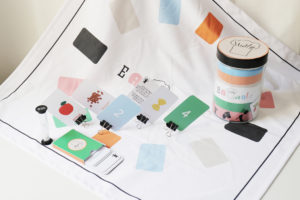
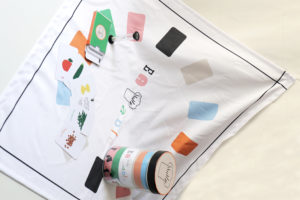
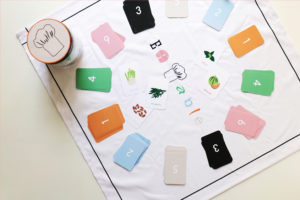
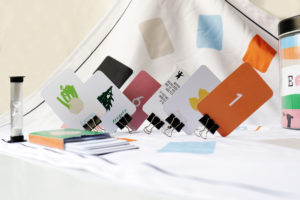

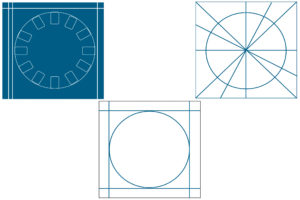
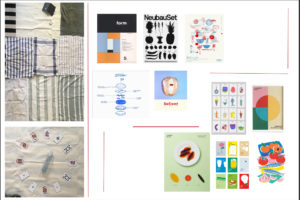
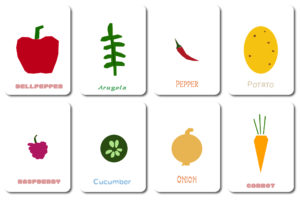
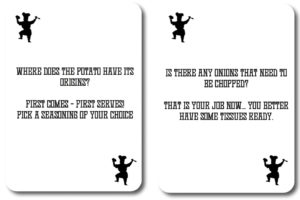
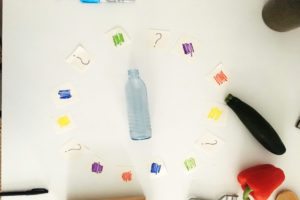
My approach was to link two problems, to bring less plastic and canned food into circulation and to offer our organic leftovers another use besides compost. They can be used to make dry dog food, to buy less plastic-packed food and to make good use of nutrient-rich organic
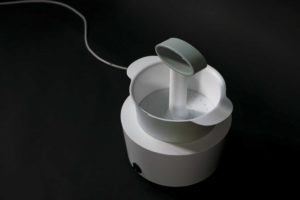
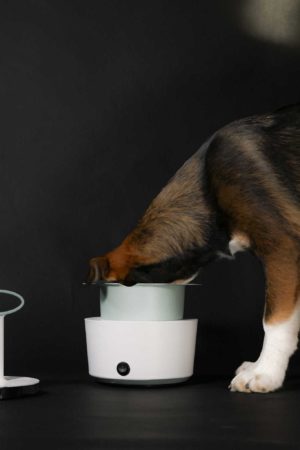
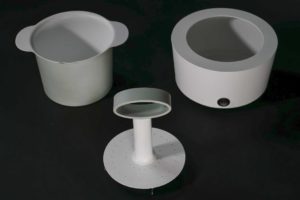
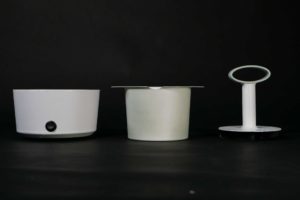
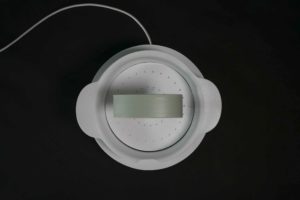
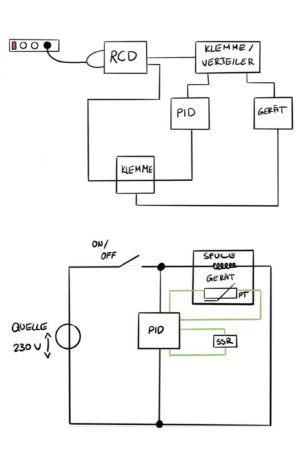
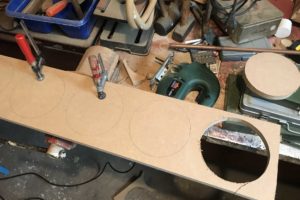


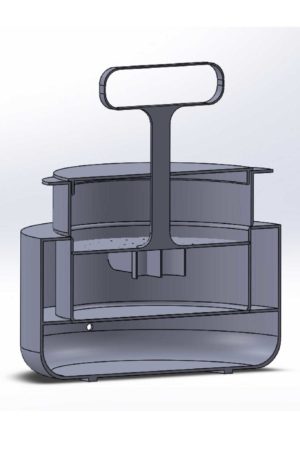
A systematic approach that caters to the life cycle of the Hermetia Illucens (The Black Soldier Fly) to be then optimized for our society and ultimately the environment. A concept of reinventing the consumer’s food supply choices by the desensitization of insects in which they are intriguingly exhibited for acceptance.
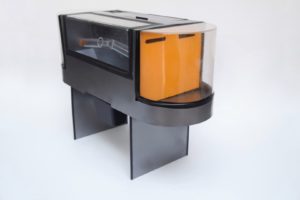

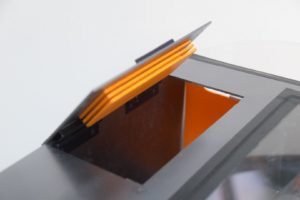
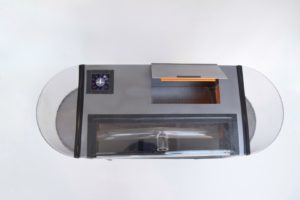
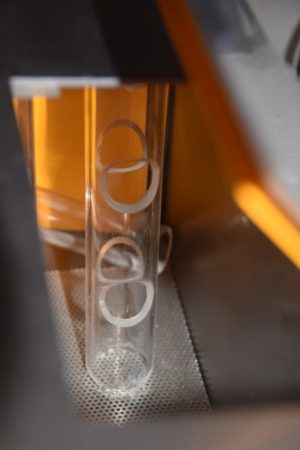
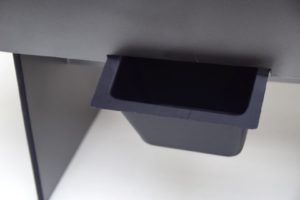
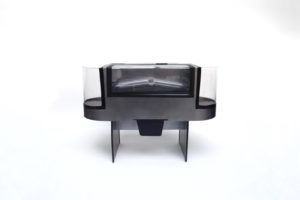
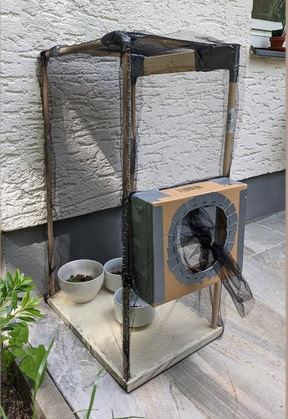

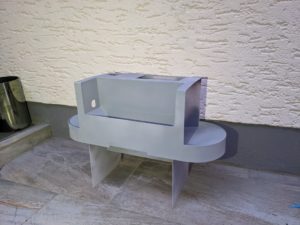
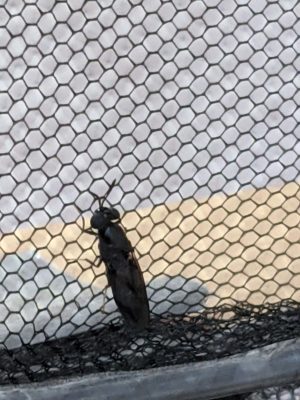
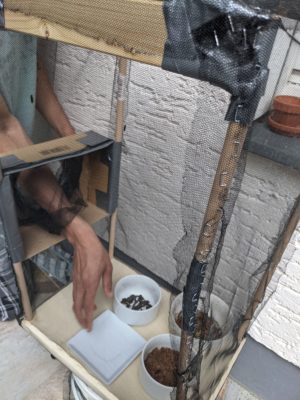
CITY CHICKENS adds to the beauty of cohabitation of different species in cities by reviving the coexistence of humans and farm animals in urban areas. A colorful housing system integrates wild chickens functionally and socially into small and large, private and public urban green spaces.

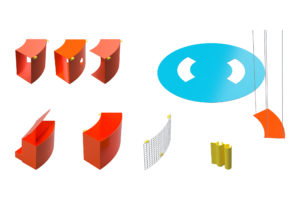
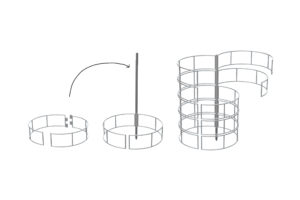
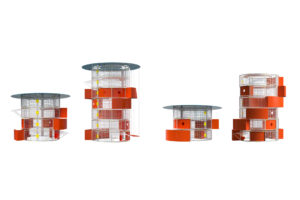
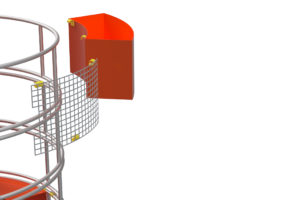
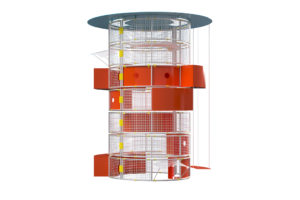
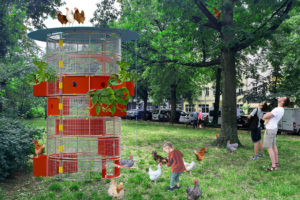
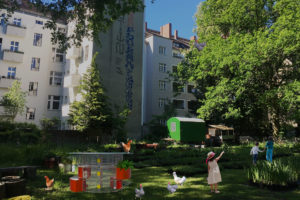
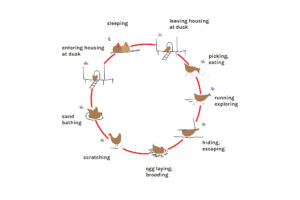
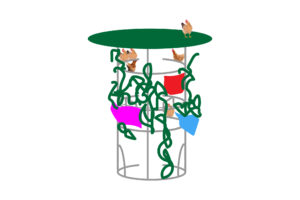
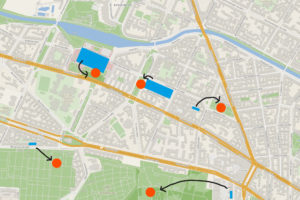
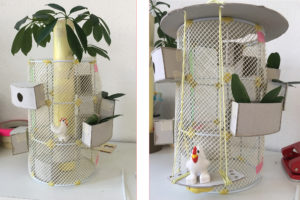
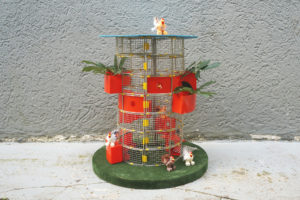
Our senses show us what we like to eat. But what else could we like to taste? How can we cook to find new taste experiences? One possible approach is “foodpairing”. Through a precise flavor analysis, we know which foods and spices go together or support each other in their flavor.I have integrated this information into the shelf system “Spice Up”. A color and symbol system accompanies us while cooking and supports us to combine our spices and foods. In addition to our experience of cooking, we have more possibilities to enjoy food. By using the knowledge of flavor components, we can find unexpected flavor combinations or rediscover familiar tastes.
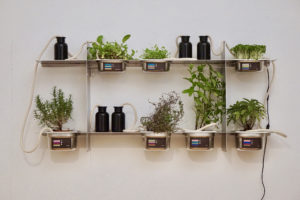

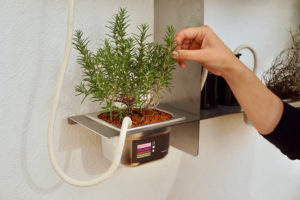
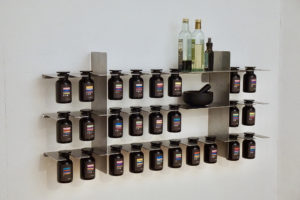
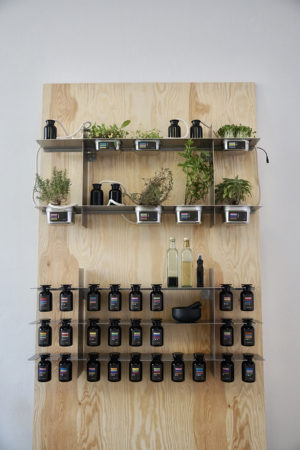
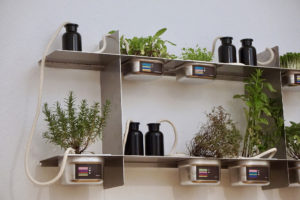
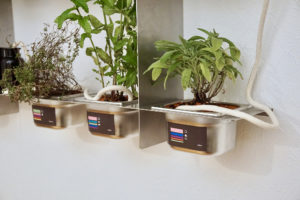
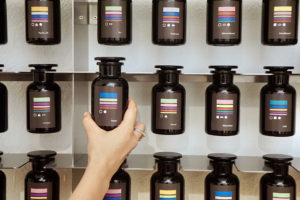
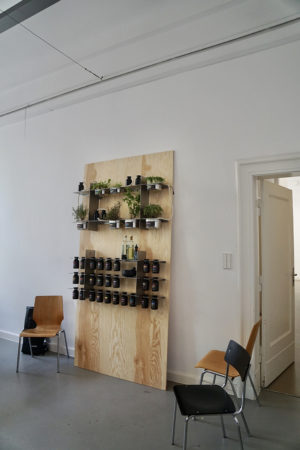
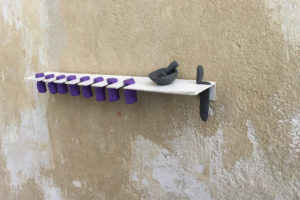
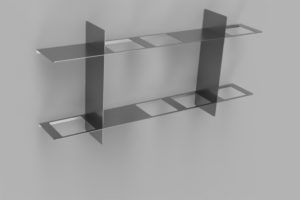

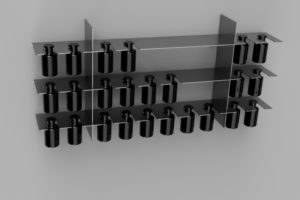
I’m setting out to rethink the systems and habits around producing, packaging and delivering meals with the goal of providing a hands-on vision of a possible future that doesn’t deny current and future developments of the technologies and economics in food and transportation, yet finds a way to make them work in the interests of a humanitarian society.
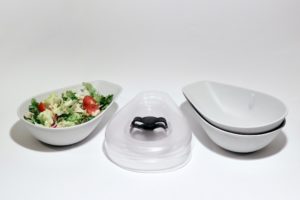
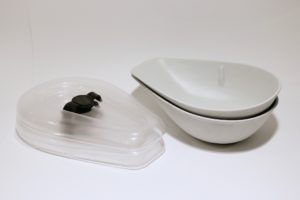
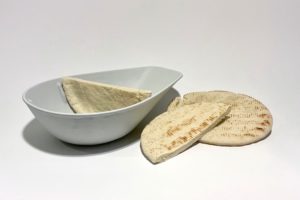
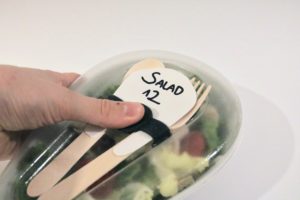
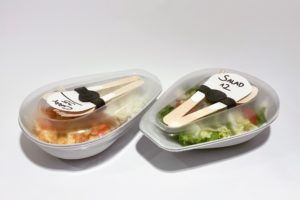
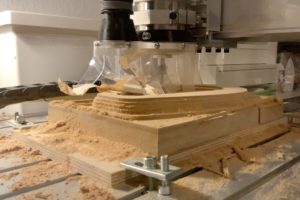

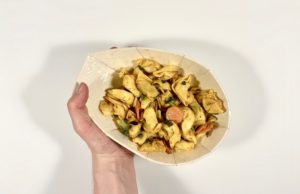
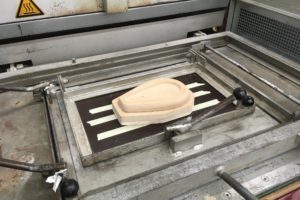
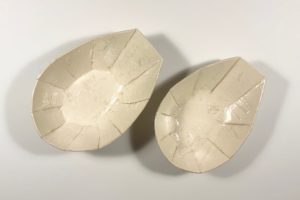
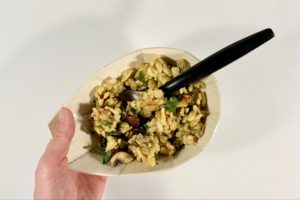
![]()
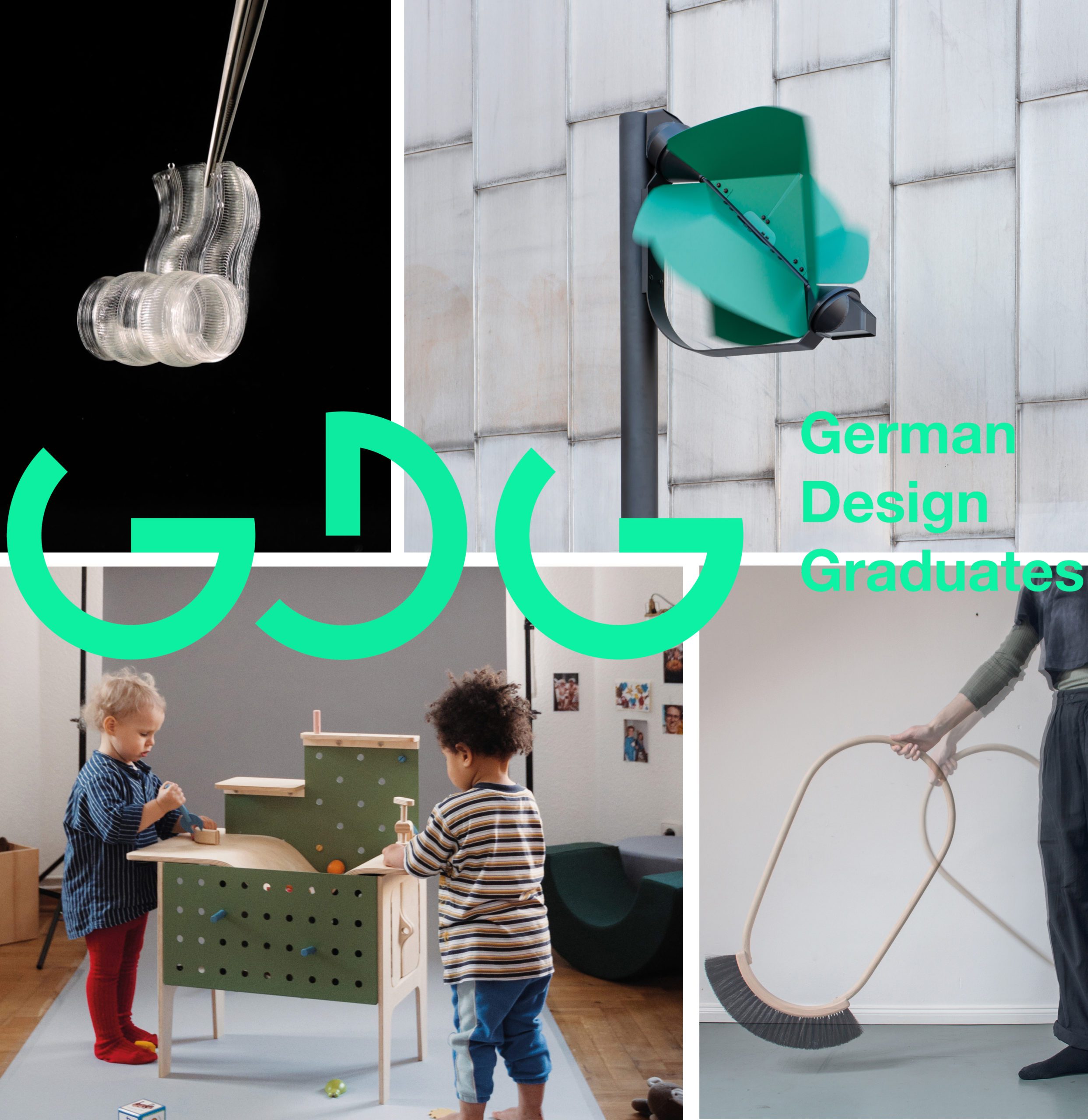
German Design Graduates is set up to offer visibility and networks to Graduates that come out of German
Design Education, via an annual museum exhibition, an award gala and network event. Next to it there are events and exhibitions during the year
In 2021 a total 177 graduates of 15 Design Schools send in their work that is visible on the GDG platform, an online database with all graduates the so called HALL OF FAME.
GDG is supported by a wide range of organisations from the professional design field: the ambassadors
For the annual exhibition at least 3 projects of all participating schools are picked by a Jury of 5 GDG ambassadors from the fields of Design Culture, Design Praxis, Design Presentations, Design Perspectives, Design Press
In 2021 the UdK exhibits are:
– Die Werkelküche by Christine Oehme (BA)
– Papilio by Tobias Trubenbacher (BA)
– Das Tun an Sich by Agnes Kelm (BA)
– Programmable Matter by Moriel Blau (MA)
Since 2020 was a special year, that did not allow a physical exhibition, the selected works of 2020 will also be on show in the double-expo 2020-2021 in Kunstgewerbemuseum Berlin from 9 till 31 October

Nessi by Kim Kühl and Vorkoster by Kimia Amir Moazami are selected for Antenna 2021 at DDW Eindhoven
The Antenna Design Conference is part of Antenna, initiated by Design Indaba and Dutch Design Week. Antenna is the platform for international design talent who focus on generating positive impact in the world. The platform goes beyond sharing ideas. It includes a coaching program to assist participating designers in manifesting their ideas.
Antenna is the first international event that showcased the current state of international young talent.
You can see more about join Antenna and the conference at Dutch Design Week 2021
see more about previous antenna’s here

IGNIS and PAPILIO two design projects by Tobias Trübenbacher under supervision of Prof. Ineke Hans are both selected for the Deutscher Designer Club Award 2021!
In September the nominees are invited to the What is Good Event in Frankfurt to find out who has won awards in the categories: communication, product and room.
Tobias Trübenbacher’s graduation project Papilio is widely published all over the world!
18. May FRESH GADGETS (NL)
www.freshgadgets.nl/papilio-straatverlichting-die-werkt-op-windenergie
19. May: FAST COMPANY (US)
www.fastcompany.com/90637504/these-playful-street-lamps-are-powered-by-the-wind
19. May: SWIAT OZE (PL) 19 mei
20. May: Qiio MAGAZINE (DE)
www.qiio.de/gegen-lichtverschmutzung-ein-berliner-erfindet-die-strassenlaterne-neu
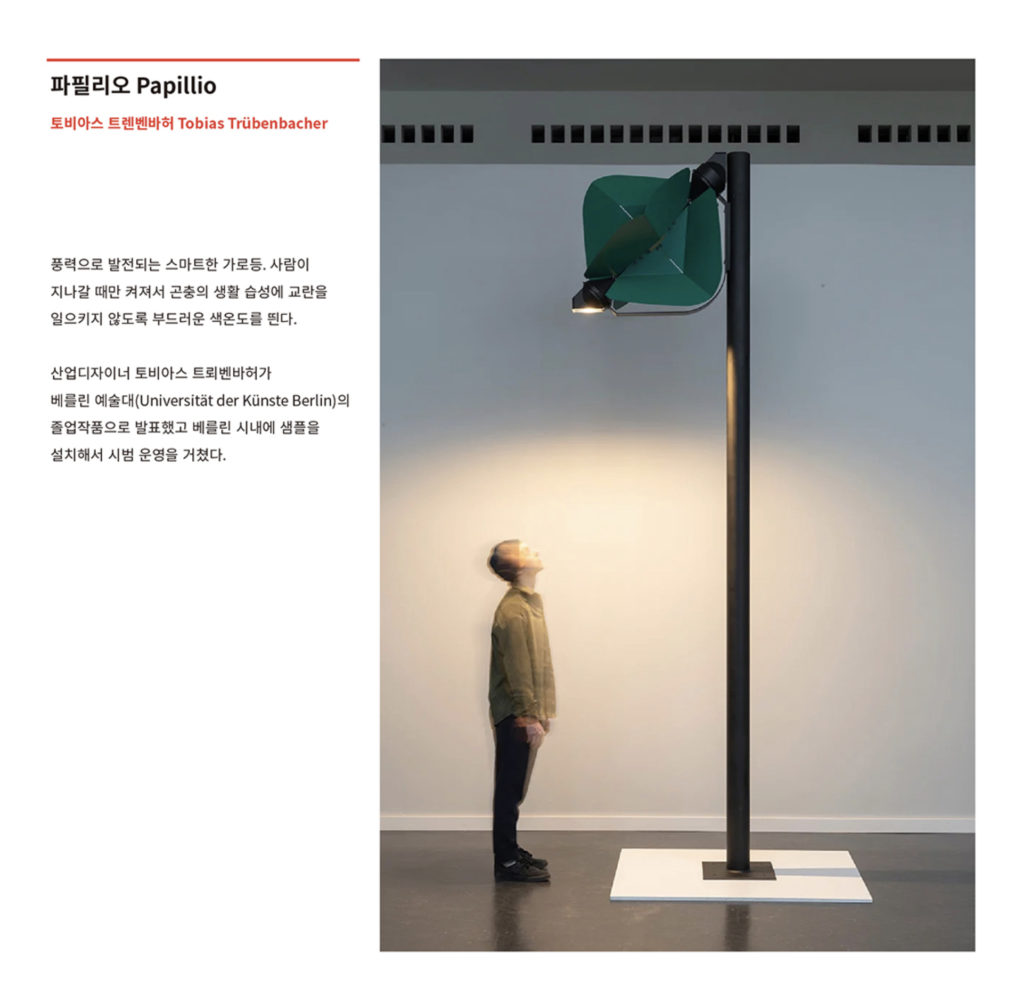
Tobias Trübenbachers graduation project was selected for DESIGN KOREA 2021 in Seoul
The exhibition with the title CARBON ZERO, from EV to plastic zero is organized by the Korean Design Organisation KIDP focusses on how our environment is threatened and how design and designers can play a role in this.
Papilio presented in zone 3 the section Energy with nature: Power Generation
Various new renewable energies such as solar power, wind power and hydrogen power are used to obtain the required electricity without emitting greenhouse gases. It exhibits various cases from industrial facilities with high electricity demand, through public facilities such as street lights to products used at home.
DESIGN KOREA 2021 by KIDP
10.6.2021 till 10.10.2021
Seoul Yangjae aT Centre
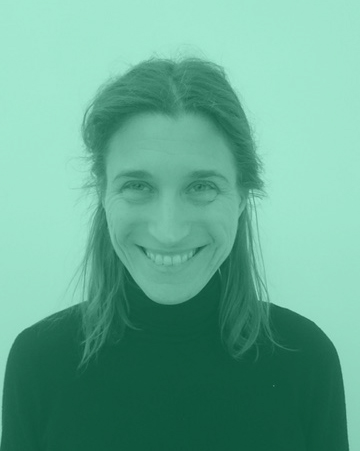
Design has a long and sad history of complicity. It makes things beautiful, new and desirable and thus contributes to consumer frenzy and increasing pollution of land, water and air. It attracts with user-friendliness and helps to violate data protection regulations and personal rights. It promises solutions to whatever problem and claims to make the world a better place. Better for who? And what’s better? Often too little is given to this.
As a mediator between people and their environment, design has to say goodbye to its self-image as a problem solver. Rather, it has the task of conveying complexity so that we can find our way around the world and with the world. Will everything be fine then? Probably not. Because there is no such thing as black and white.
On Amelie Klein
Amelie Klein is an independent Viennese design curator, writer and critic. Most recently, she opened an exhibition at the Museum für Kunst & Gewerbe in Hamburg, Germany, titled Heimaten – Eine Ausstellung und Umfrage. This summer, she also co-curated the first iteration of the Design Campus School at the Kunstgewerbemuseum in Dresden / Pillnitz dedicated to Design & Democracy.
Until July 2019, she worked at the Vitra Design Museum in Weil am Rhein, Germany, where she was responsible for several international traveling exhibition such as Victor Papanek: The Politics of Design, Hello, Robot. Design between Human and Machine and Making Africa — A Continent of Contemporary Design.
Klein was nominated twice for the German art magazine’s Curator Prize, an award granted for the best exhibition in Germany, Austria and Switzerland. She completed an MFA in Design Criticism at New York’s School of Visual Arts as well as an MBA at the Vienna University of Economics and Business, Austria. For more than ten years, Klein worked as an editor and journalist publishing amongst others in the Austrian daily Die Presse and magazines such as Abitare and Metropolis.
As guest of UdK-Berlin’s project group Design & Social Context Amelie Klein will speak in the Kunstgewerbemuseum in Berlin where she will reflect on design and society today, where themes like new design strategies & politics, sustainability, identity and sense of belonging are topical and also so reflected in the German Design Graduates exhibition 2019/20 – 2020/21.
Amelie’s talk is therefore part of the talks program of German Design Graduates that was initiated by prof. Ineke Hans and is open for students and the general public.
Seats are limited and there are corona rules
but you can use THIS LINK to make a reservation
(in trouble send a mail to
Date: Sunday 10 October, 13:00 hrs
Venue: Kunstgewerbemuseum Berlin
read more on Amelie and the exhibitions she made HERE and below
www.design-museum.de/en/exhibitions/detailpages/making-africa.html
www.design-museum.de/en/exhibitions/detailpages/victor-papanek-the-politics-of-design.html
www.mkg-hamburg.de/de/ausstellungen/aktuell/heimaten.html
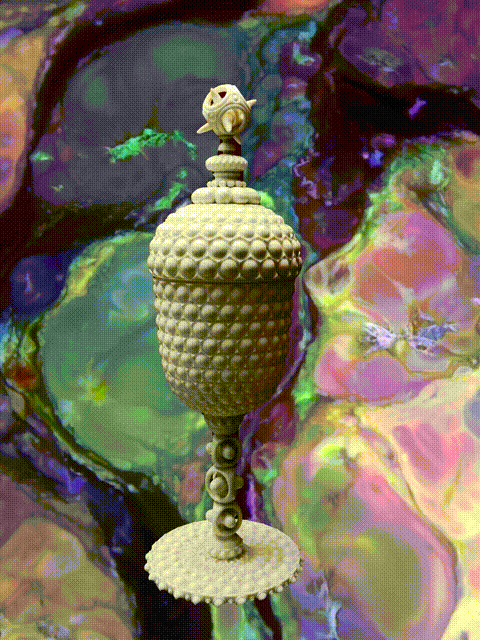
WILLKOMM VOL. II
Aus der Dauerausstellung des Kunstgewerbemuseums in Berlin wurden im Rahmen des Entwurfsprojektes Neobionten Willkomm-Pokale entführt und in die Heutige Zeit versetzt.
Die ersten Willkomm-Pokale, stammen aus der frühen Neuzeit und dienten als große Trinkgefäße. Der Brauch war es, eine zu ehrende Person oder Gast mit einem Trunk aus einem kostbaren Gefäß zu begrüßen. Die Verwendung des Willkomms war fester Bestandteil der Rituale in Versammlungen, Zeremonien und festlichen Anlässen adeliger Gesellschaften oder bürgerlicher Korporationen, insbesondere Zünften.
Das Bild eines Pokales, aus dem jeder trinken kann, ist ein Bild geprägt von Zusammengehörigkeit, des Zusammenseins.
Aufgrund der aktuellen Weltsituation verschwindet der Gedanke an einen Willkomm, aus dem alle gemeinsam trinken, eher schnell. Fragen wie, wie können wir nach Monaten des „social distancing“ wieder zusammenfinden? – Wie können wir gemeinsam feiern? – Oder anders gefragt: Wie kann aus den vielen vereinzelten Individuen eine Einheit werden und welche Rolle spielen dabei Rituale? – kommen auf.
Sehr kraftvoll ist jedoch das Bild eines gemeinsamen Trinkgefäßes, das in der Mitte einer Gruppe steht, um gemeinsam auf einen besonderen Moment anzustoßen.
Willkomm vol. II bringt die vereinzelten Individuen der Gesellschaft zu einer Einheit zusammen, repräsentiert durch mehrere gestapelten Becher und es entsteht EIN Willkomm.
As part of the Neobiont design project, welcome cups were kidnapped from the permanent exhibition of the Kunstgewerbemuseum in Berlin and relocated to the present day.
The first welcome cups come from the early modern era and were used as large drinking vessels. It was customary to greet a person or guest to be honoured with a drink from a precious vessel. The use of the welcome was an integral part of the rituals in meetings, ceremonies and festive occasions of aristocratic societies or civil corporations, especially guilds.
The image of a cup that everyone can drink from is an image of togetherness, of unit.
Due to the current world situation, the thought of a welcome, from which everyone drinks together, disappears rather quickly. Questions like, how can we get back together after months of “social distancing”? – How can we celebrate together? – Or to put it another way: How can the many isolated individuals become a unit and what role do rituals play in this? – appear.
However, the image of a shared drinking vessel standing in the middle of a group to toast a special moment together is very powerful.
Welcome vol. II brings the isolated individuals of society together to form a unit, represented by several stacked cups. ONE welcome emerges.
Prozess
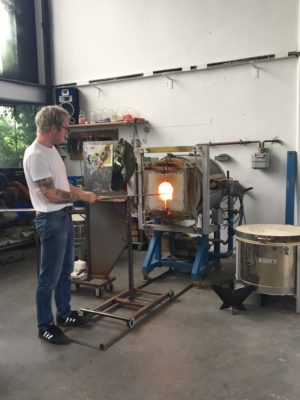
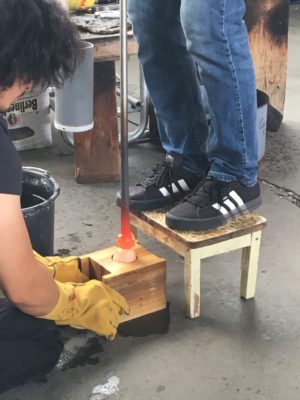
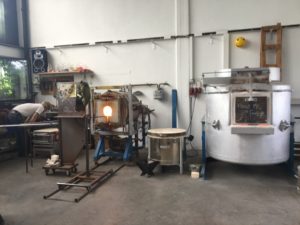
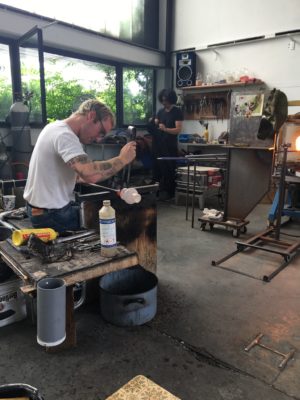
SIMPLE MEMORY
Einfache Strohmatratzen dienten bis ins späte 19. Jahrhundert üblicherweise als Schlafunterlage. Solche Gegenstände, die von dem entbehrungsreichen Leben der einfachen Leute zeugen, trifft man in Museen jedoch kaum an. Was sagt das nun über unser kulturelles Gedächtnis aus?
ORIGINAL Neuwieder Kabinett
Erworben 1779 vom Kronprinzen Preußens. Preis: 12.000 Goldtaler oder 21.500 Gulden. Eines der teuersten Möbelstücke seiner Zeit. Abraham Roentgen, der Vater David Roentgens, zahlte im Jahre 1763 für ein großes Haus nebst Werkstätten und Schuppen 3.140 Gulden (Haben die etwas mit dem Kabinett zu tun oder ist das ein beliebiges Beispiel??). Das Neuwieder Kabinett wurde nur selten benutzt, es diente vor allem Repräsentationszwecken.
Until the late 19. century, simple straw mattresses were being used as sleep overlays. Such objects, which are relics of the plain folks life full of privation, one seldomly encounters in museums. What does this have to say about our cultural collective memory?
ORIGINAL Neuwieder Kabinett
Purchased in 1779 by the crown prince of Prussia. Price: 12,000 gold coins or 21,500 guilders. One of the most expensive furnitures of its time. In 1763 Abraham Roentgen, the father of David Roentgen, paid 3,140 guilders for a big house with workshops and shed. The Neuwieder cabinet was seldomly used, its main function was representative.
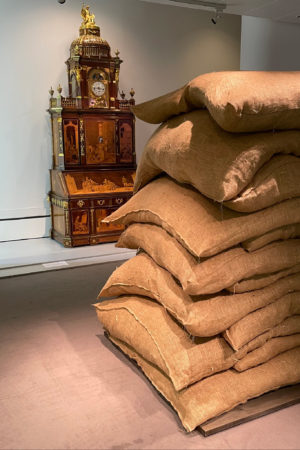
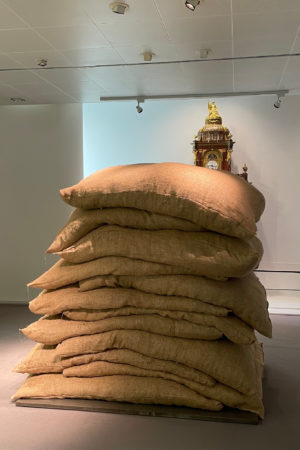
RELIQUIAR KUPPEL
Das KuppelreliquIar spielt mit dem Gegensatz von Innen und Außen, von Zeigen und Verbergen, von Austellungs- und Kultwert: Während die detailliert ausgeführte Außenhülle den Innenraum einer Kirche quasi nach außen kehrt, kann der eigentliche Inhalt des Gefäßes, die Reliquie, nicht eingesehen werden. Das Kuppelreliquiar wurde im Laufe der Jahrhunderte unterschiedlich verwendet: Während es zunächst die Kopfreliquie von Gregor von Nazianz enthielt, diente es später als Hostienbehälter.
Heute – über 800 Jahre später – stellt sich die Frage, womit das Objekt, das nunmehr seine religiöse Funktion eingebüßt hat, seinen Platz im Museum verdient? Aufgrund der meisterlichen Handwerkskunst? Wegen der Verarbeitung hochwertiger Materialien? Weil es einfach schön anzuschauen ist? Oder eben doch, weil es ehemals die Kopfreliquie von Gregor von Nazianz bewahrt hat?
Das geheimnisvolle Wechselspiel von Außen und Innen des Kuppelreliquiars wird hier umgekehrt: Der Inhalt wird zur Hülle, die Hülle zum Inhalt. Doch was passiert dabei mit dem Wert und dessen Zuschreibung? Wohnt er der Reliquie selbst inne oder stellt er sich erst über den Entzug her? Gewinnt etwas nur dann an Wert, wenn es nicht von allen gesehen oder besessen werden kann?
The dome reliquary plays with the contrast of inside and outside, of revealing and covering, of exhibition value and cult value: While the inside of a church is being turned out into the detailed façade, the actual inner life of the vessel, the relic, can´t be seen. The dome reliquary has been used for multiple causes throughout the centuries: While it originally accommodated the head reliquary of Gregory of Nazianzus, it later served as host container.
Nowadays – over 800 years later – the question arises, if the object that henceforth forfeited its religious function, still deserves its place in the museum?
Owing to its finest craftsmanship? On account of the usage of high-class materials? Because it is simply nice to look at? Or since after all it previously stored the head reliquary of Gregory of Nazianzus?
The mysterious interplay of outside and inside of the dome reliquary is being turned around: The inner life becomes the façade, the façade becomes the inner life. Thus what happens with the value and its value adjustment? Is it inherit to the relic itself, or is it being created by deprivation. Does it only gain value when it can`t be seen nor possessed by anyone?
Prozess
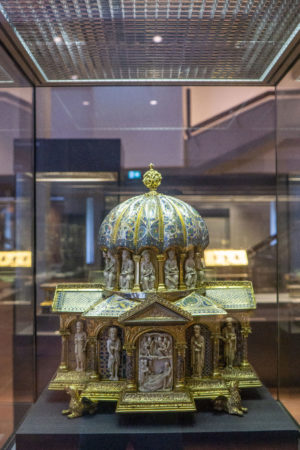
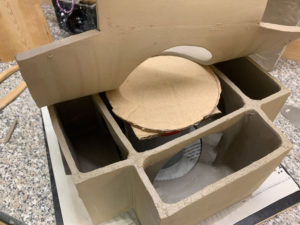
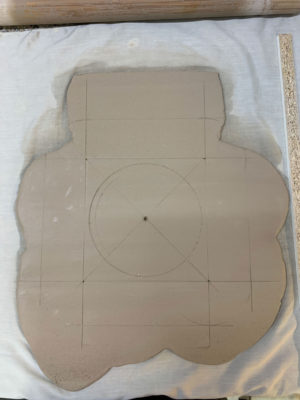
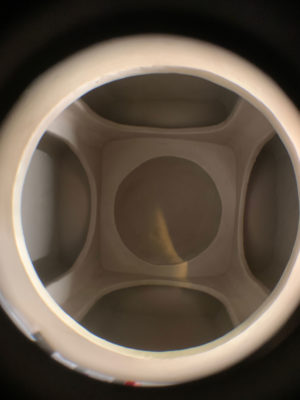
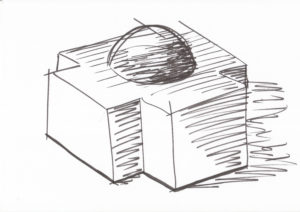
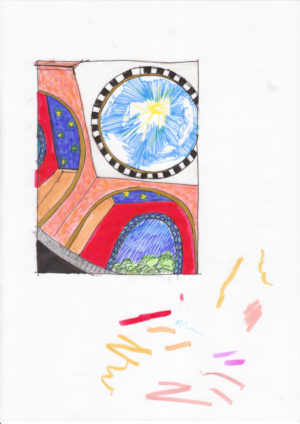
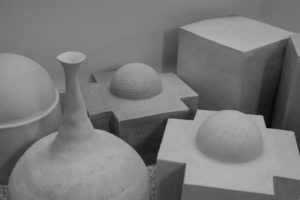
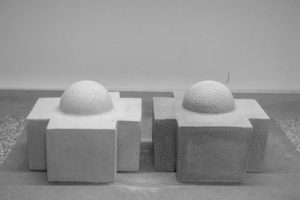
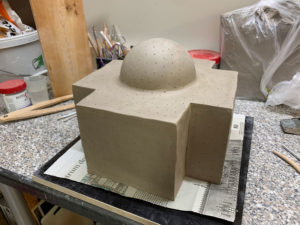
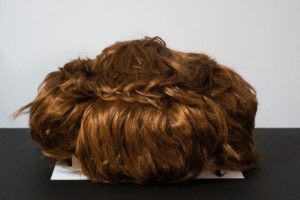
PENMUBRA
Was genau passiert eigentlich, wenn wir einem Objekt begegnen?
Für gewöhnlich sehen wir die Dinge als etwas Statisches oder Unveränderliches an – und auch die Museen stützen eine solche Perspektive, da sie die vielfältigen individuellen Erfahrungen, die Generationen von Besucher:innen mit den Objekten gemacht haben, nicht mitrepräsentieren.
Aber was wäre, wenn sich das Wesen eines Objektes verändert, abhängig davon wie wir es betrachten? Zwar bleibt die Materialität der Dinge (mehr oder weniger) unverändert, aber die Interpretationen, die wir an sie herantragen, sind potentiell unendlich. Den Dingen wohnt also nicht nur eine Wahrheit inne, sondern so viele Wahrheiten wie Besucher:innen mit ihnen verknüpfen. Ihre Identitäten werden fluide.
Penumbra möchte dieses Wechselverhältnis zwischen Objekt und Betrachter:in sichtbar machen. Der lebendige Schatten, der neben dem Objekt ausgestellt wird, gibt einen Hinweis auf dessen genuine Pluralität: Das Objekt hinterlässt Spuren an der Wand, bekommt eine Stimme, reagiert und interagiert. Kurz, es wird zu einem dynamischen Gegenüber, wodurch die traditionelle Hierarchie zwischen aktiver:m Betrachter:in und passivem Objekt hinterfragt und aufgebrochen wird.
What really goes on during the encounter of an object?
Artifacts are usually perceived as unchangeable, permanent and stationary. Museums tend to uphold this basic principle, failing to represent thousands of generations of visitors’ experiences with objects that somehow seem to remain eternal and immutable.
But what if the essence of an object were to change depending on how we look at it? The material object is unalterable, but the interpretations we can have of it are infinite: its identity becomes fluid, embodying not only one truth, but as many realities as viewers bring along with them.
Penumbra aims to make visible the role we play in an object’s identity. The exhibited artifact is displayed along with its shadow, dynamic, lively and unpredictable, providing a constant reminder of its plurality. On the wall, the object leaves a trace, has a voice, reacts and interacts, becoming an active counterpart in the museum experience, thus challenging the long established hierarchy between the viewer and the exhibit.
Prozess


NEO MARY Reframing Women in Christianity
Maria, die am häufigsten dargestellte biblische Frauenfigur, wird als devote, schweigsame Persönlichkeit repräsentiert. Dieses Bild hat sich gesellschaftlich manifestiert und reproduziert. Daran lässt sich erkennen, dass Darstellungsformen Teil eines Gesamtgesellschaftlichen Diskurses sind, welcher zur jeweiligen Zeit reguliert, was sagbar und zeigbar ist, der jedoch auch immer beweglich und durch Interventionen veränderbar ist.
Das Projekt NEO MARY regt dazu an, die gewohnten christlichen Darstellungen in Frage zu stellen und einseitige sowie männlich dominierte Repräsentationen aufzuzeigen und zu kritisieren. Ziel ist es, den Repräsentationskreislauf der demütigen, stillen und gefügigen Frau zu durchbrechen und Maria Raum für eine neue und zeitgemäße Stimme zu geben.
Das Glasbild „Neo Mary“ ist eine Neuinterpretation des im KGM Berlin ausgestellten Glasgemäldes „Geburt Christi“ von Peter Hemmel. Wie das Original, zeigt „NeoMary“ Maria im blauen Marienmantel in der bekannten Stallszenerie mit Ochse und Esel, nimmt den Titel jedoch wörtlich. Erhobenen Hauptes blickt die Gebärende die betrachtende Person an und beherrscht den Raum. Die klassische Darstellung Marias als devote und schweigsame Person wird überwunden, die Fremdbestimmung abgelegt. Hemmels Werk stammt aus einer Zeit in der das Christentum in vielen Kulturkreisen sinnstiftend war und die Lebenswelten stark beeinflusste. Auch wenn in weiten Teilen die Institution Kirche an Bedeutung eingebüßt hat, ist auch 540 Jahre später noch die westliche Kultur und Gesellschaft stark von christlichen Traditionen und Denkweisen bestimmt. In den modernen Familien- und Rollenbildern werden christliche Werte und Subjektivierungsweisen fortgeschrieben, verschiedene Formen der Diskriminierung werden religiös legitimiert und nicht zuletzt wird der Akt der Geburt nach wie vor tabuisiert. Das Glasbild im Format 48 x 58 cm besteht aus insgesamt 36 transparenten Buntglasstücken, die in Bleiruten gefasst sind.
Mary, the most frequently portrayed biblical female figure, is represented as a submissive, silent personality. This image has manifested and reproduced itself socially. This shows that forms of representation are part of an overall social discourse, which at the time regulates what can be said and shown, but which is also always flexible and changeable through interventions.
The project of ”NEO MARY“ encourages to question the usual Christian representations and to point out and criticize one-sided as well as male-dominated representations. The aim is to break the cycle of representation of the humble, quiet and submissive woman and to give Maria space for a new and contemporary voice.
The glass picture „Neo Mary“ is a reinterpretation of the stained glass „Birth of Christ“ by Peter Hemmel exhibited at KGM Berlin. Alike the original, the ”NeoMary” depicts Mary in a blue virgin mary cope in the infamous nativity scene with ox and donkey, but interprets the title literally. With her head held high, the birthing mother is observing the viewer and dominates the room. The classical depiction of Virgin Mary as a devoted and taciturn person is being overcome, the heteronomy discarded. Hemmels artwork stems from a time when Christianity had a great influence and heavily affected the living environment. Even though the institutionalized church has mostly lost its meaning, 540 years later the Western culture and society is still heavily shaped by Chritian traditions and concepts. Within the modern view on family and gender, Christian values and modes of subjectivation are being continued, different forms of discriminations are being legitimated by religion and last but not least the occurence of birth is still kept taboo. The 48 by 58 cm glass picture consists of 36 transparent coloured glass pieces, which are girthed by lead camings.
Prozess
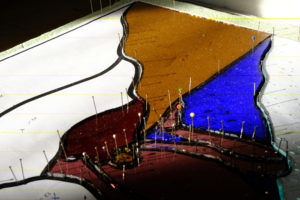
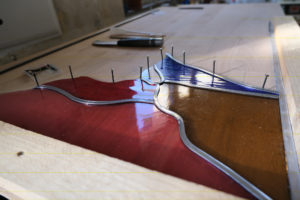
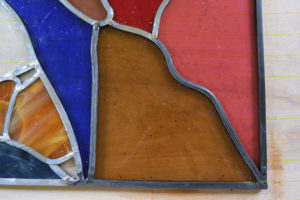
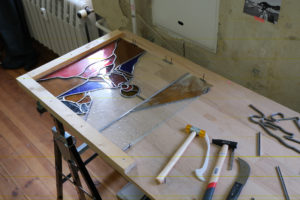
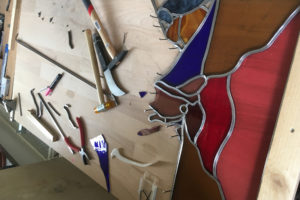
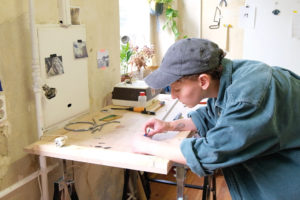
NAUTILUS PARUM AFFINIS
Das Projekt „Nautilus P.A.“ ist weniger eine gestalterische Weiterentwicklung der Nautilus Pokale der Renaissance, als eine Reflektierende Arbeit nach den Gesichtspunkten der Moderne. Die Arbeit möchten einen Bezug schaffen, sowohl auf die Entstehungsgeschichte der Prunkpokale als auch die absehbar bevorstehende Entwicklung der vom Aussterben bedrohten Gattung der Nautilus. Die Kunsthandwerkliche Erscheinung der Kerze bildet eine abstrahierte Nachbildung der Nautilus ab, welche mit einem Fischernetz von Menschenhand gefangen wurde.
Archäologische Funde aus Osttimor belegen das Menschen bereits vor über 40.000 Jahren die Schale der Nautilus gesammelt, verziert und zu Schmuckstücken verarbeitet haben. Das kunstvolle verarbeiten eben dieser Schalen wurde über viele Jahre zur Perfektion getrieben, sodass schlussendlich unzählige dieser Meisterwerke in den fürstlichen Kuriositäten Kabinetts in zentral Europa zu finden waren. Gegen Ende der Renaissance fand die Nautilusschale als Vanitas-motiv Eingang in die Stillleben Malereien. Gemäß der Philosophie dahinter, verkörpert die Nautilus nun die Vergänglichkeit von Schönheit, Reichtum und Eitelkeit und zelebriert die Tatsache, dass alles vergänglich und nichtig ist.
Mit der neuen Interpretation eines Nautilus Pokals aus Paraffin soll auf die tragische Ironie hingewiesen werden, dass eine Uralte Gattung auf Grund ihrer Schönheit noch immer aus dem Meer gefischt wird, und zwar in noch nie dagewesenen Mengenverhältnissen. Sowie die Kerze anschaulich verbrennt, vergeht auch diese Lebensform vor unseren Augen.
The project „Nautilus P.A.“ is not so much a further development of the Renaissance Nautilus goblets in terms of design, but a reflective work according to the aspects of contemporary development. The work aims to create a reference both to the history of the origin of the sumptuous goblets and to the anticipated development of the endangered species of the nautilus. The artisan appearance of the candle depicts an abstracted replica of the nautilus, caught by human hands with a fishing net.
Archaeological discoveries from East Timor prove that people collected the shell of the nautilus more than 40,000 years ago, decorated it and crafted it into jewellery. The artistic processing of these shells has been perfected over many years, so that in conclusion countless of these masterpieces were to be found in the royal cabinets of curiosities in central Europe. Towards the end of the Renaissance, the nautilus shell found its way into still life paintings as a motif of the vanitas philosophy. According to the philosophy, the nautilus now embodies the transience of beauty, wealth and vanity and celebrates the fact that everything is impermanent and void.
The new interpretation of a Nautilus goblet made of paraffin is intended to point out the tragic irony that an ancient species is being fished out of the sea for its beauty in unprecedented proportions. As the candle vividly burns, this life form also perishes before our eyes.
Prozess
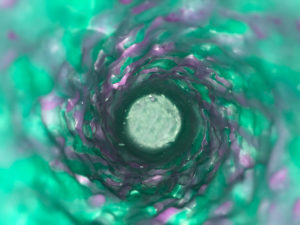
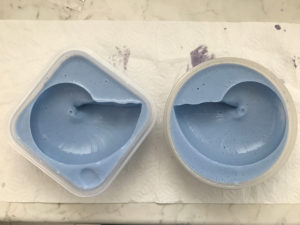
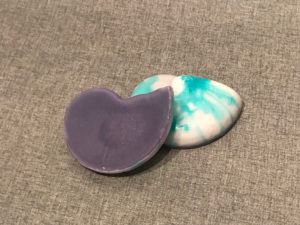
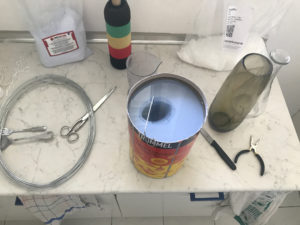
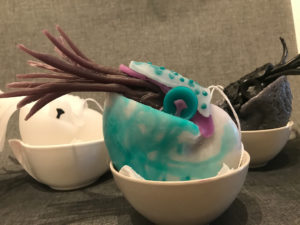
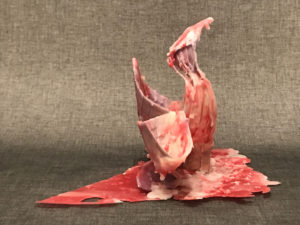
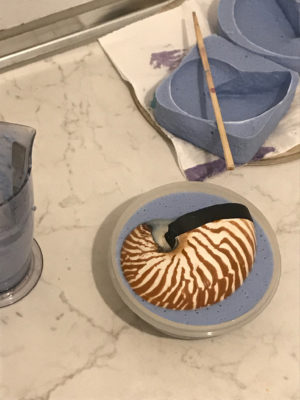
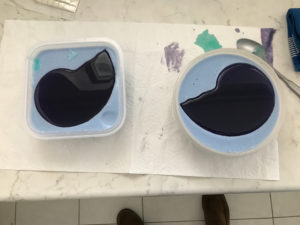
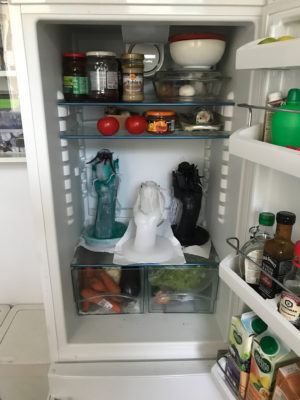
MICRO GOES MACRO GOES KGM
Was hätte ein „Design auf Zeit” im KGM verloren, in dem Zeit normalerweise stillgestellt wird? Die Objekte sollen hier so gut es geht vor dem Verfall bewahrt werden – dazu werden sie zunächst in der sogenannten „Entwesungskammer” von allen potentiell schädlichen Organismen befreit. Doch nicht alle Schädlinge lassen sich restlos beseitigen. Einige Bakterienarten leben aller Maßnahmen zum Trotz auch im Museumraum weiter.
Mithilfe von Petrischalen, einem Agarnährboden und einigen Bakterienproben aus dem Museum wird das „geheime Leben” der Museumsbakterien aufgedeckt. Es wird also nichts neues in das KGM gebracht, sondern mit dem gearbeitet, was ohnehin bereits vorhanden ist: Ob auf dem Kuppelreliquiar, der Eingangstür, der Vase von Louis Comfort Tiffany oder dem Schlüsselbund des Museumsleiters.
„Temporary design“ in the context of the KGM doesn’t really fit, since this is a place where time is usually suspended. The objects here are to be preserved from decay as best as possible – therefore they are first freed from all potentially harmful organisms in the so-called „disinfestation chamber“. However, not all pests can be completely eliminated. Despite all the measures taken, some types of bacteria continue to live in the museum. With the help of Petri dishes, an agar culture medium and some bacterial samples from the museum, the „secret life“ of the museum bacteria can be uncovered. So nothing new is brought into the KGM, rather work is done with what is already there: whether on the dome reliquary, the entrance door, the vase by Louis Comfort Tiffany or the museum director’s keychain.
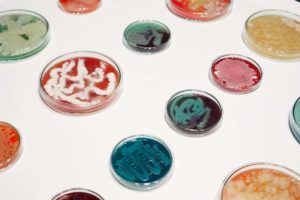
Prozess

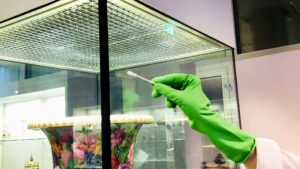
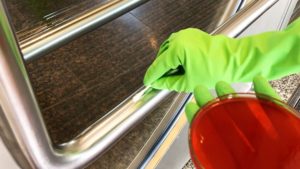
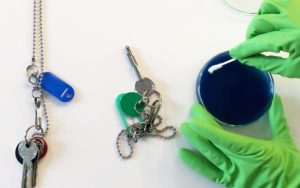
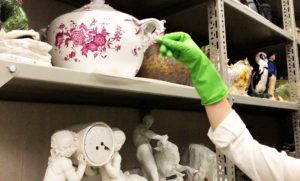
BOYS WILL BE BOYS
Der Wandteppich “Boys will be boys” thematisiert Gewaltdarstellungen in unserer Gesellschaft. Wo entsteht Gewalt und wie kann sie sichtbar gemacht werden? Auch wenn vielleicht niemand mehr auf die Idee kommen würde, die eigenen Wohnräume mit Kriegsszenarien zu schmücken, so wird doch bei genauerem Hinsehen deutlich, dass auch unser Alltag nach wie vor von verschiedenen Gewaltformen durchzogen ist. Und dazu gehört auch die strukturelle Gewalt des Patriarchats. Wie aber wäre es, wenn wir dafür ein Bild fänden, eines, das den bitteren Ernst patriarchaler Machtkämpfe in ein Gefecht plüschiger Penisersatzobjekte verwandelt?
Der großformatige Wandteppich konterkariert die brutale Kriegsdarstellung des Originalgobelins mit seiner flauschigen Haptik und bricht mit der Darstellungsweise von Epen, indem die Krieger ihrer Rüstung beraubt und anstatt Waffen mit bunten Vibratoren ausgestattet lächerlich wirken. Die Absurdität von Krieg als aufeinander einschlagende Männer, die mit phallusartigem Penisersatz ihre Macht demonstrieren, wird ersichtlich. Die Arbeit ist als schmunzelnder Kommentar aus feministischer Perspektive zum Patriarchat zu verstehen.
The tapestry Wandteppich “Boys will be boys” broaches the issue of depictions of violence in our society. Where does violence begin and how can it be depicted? Despite no one considering to decorate their private spaces with war scenes, when taking a closer look, it becomes evident that our everyday life is still strained by different forms of violence. The structural violence of patriarchy being part of it. Hence what would happen, if we found a depiction for it, one that sublimates the deadly serious patriarchal power struggle into a battle of plushy penis substitutes?
The tapestry in large format impedes the brutal war depiction of the original with its fluffy haptics and breaks with the traditional portrayal of epics, by the warriors being deprived of their armour and their weapons being substituted with colorful vibrators, which makes them seem ridiculous. The absurdity of war becomes evident as men being at each other’s throats with phallus-like penis substitutes to demonstrate power. The work can be seen as a miscevious commentary about the patriarchy from a feminist point of view.
Prozess
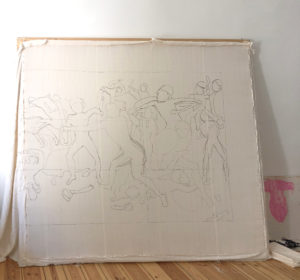
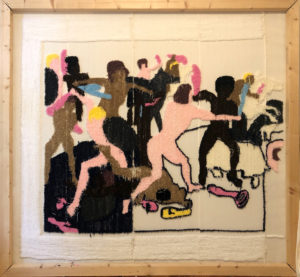
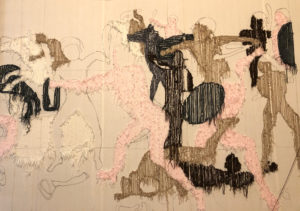
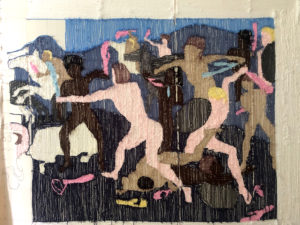
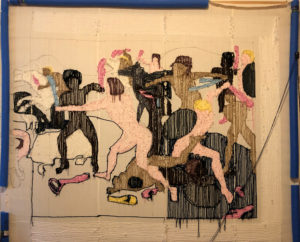
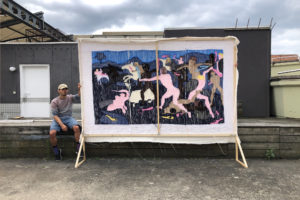
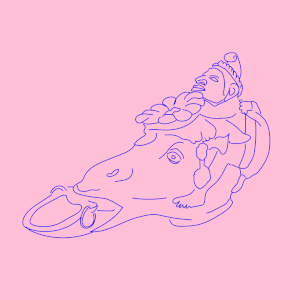
BAKING STORIES
Das Kunstgewerbemuseum ist angefüllt mit Objekten, die zwar schön zu betrachten sind, die wir aber intuitiv nicht (mehr) verstehen können: Wir wissen weder wie sie hergestellt wurden, noch welche Funktion sie einmal hatten. Wie gehen wir aber mit solchen Objekten um? Können wir dazu unsere eigenen Geschichten erfinden?
Durch Memes (Informationen, die durch Imitation übermittelt werden) werden neue Geschichten über einige Objekte der Sammlung erzählt. Die Texte spekulieren über mögliche soziale und kulturelle Zusammenhänge, in denen die Objekte einst existiert haben, heute existieren oder in Zukunft existieren könnten. Auf diese Weise fungiert das Museum nicht mehr nur als Archiv des Vergangen, sondern bildet auch einen Resonanzraum für neue Begegnungen und Phantasien. Inspiriert von den mittelalterlichen Backformen und ihrer Funktion, mit Bildern eine Geschichten zu erzählen, werden diese Memes in Form von Keksen und Stempeln serviert. Auf diese Weise findet das Meme den Weg zu dem Ort an dem Geschichten erzählt werden: dem Mund.
ORIGINAL
Die mittelalterlichen Backformen unterscheiden sich von den übrigen Sammlungsobjekten des Kunstgewerbemuseums. Anders als bei den vielen wertvollen Exponate, sind für ihre Herstellung weder hochwertige Materialien vonnöten noch eine spezifische Kunstfertigkeit. Hinzu kommt, dass Alltagsgegenstände, die von einfachen Leuten benutzt worden sind, kaum Eingang ins Museum gefunden haben.
Die Backformen bestehen aus geschnitztem Speck- oder Kalkstein, mit dem ein Motiv in den Teig eingedrückt wurde. Die Bildmotive sind aufgrund ihres Alters und der Präsentation im Museum jedoch schwer zu erkennen. Der bloße Anblick der Objekte verrät uns nicht, wie sie einst benutzt worden sind. Wie können wir ihren praktischen Gebrauch nachvollziehen, wenn sie in einem Kontexten ausgestellt werden, die sich so sehr von ihrer ursprünglichen Verwendungszusammenhängen unterscheiden?
The Kunstgewerbemuseum is filled with beautifully manufactured objects we cannot intuitively understand: we don’t know how they were made and how they were used. How do we deal with an object when we cannot relate to its actual practice context anymore? Can we make up our own stories? Through memes (information spread by imitation) new stories about some objects of the collection are invented. The texts speculate about possible contexts in which this object once may have lived, is living now or will live in the future. In this way, the museum does not only function as an archive of the past but also as a space for new sorts of interaction with objects. Inspired on the medieval baking moulds and it’s function of telling a story by showing an image, these memes are distributed in form of a biscuit and a stamp. Thus, the meme find its way to the place where stories are told: the mouth.
ORIGINAL
The medieval baking mould distinguishes itself from the Kunstgewerbemuseum’s collection. Unlike many of the valuable and appreciated objects in the museum there were neither a special material nor high skills needed to produce this mould. Besides, not many everyday objects or kitchen tools that were used by ordinary people are being displayed. The moulds are made out of soap- or limestone which are engraved to show a relief image on the baked goods. The iconography depicted on these moulds is hard to recognize because of the mould’s age and the way it is presented in the museum. By seeing the object displayed in the museum one can hardly imagine how it was used. How can we experience the former usage of a tool when presented in a context so different from its actual practice context?
Esmée Willemsen, 8.sem SS 2019- www.esmeewillemsen.com –
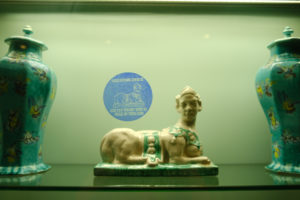
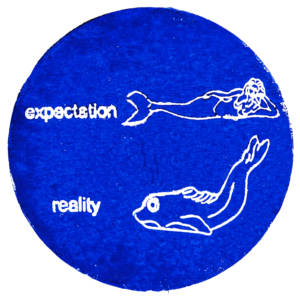
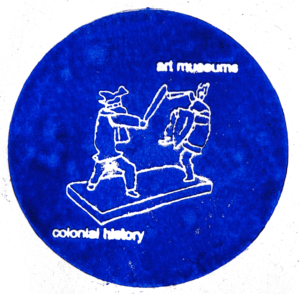
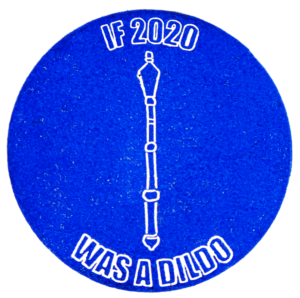
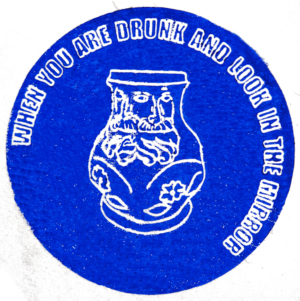

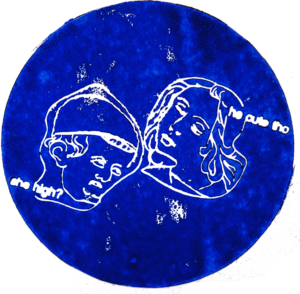
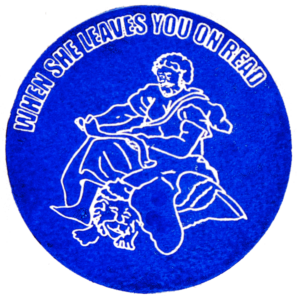 +
+

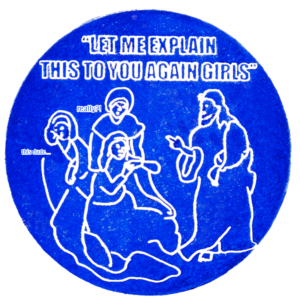
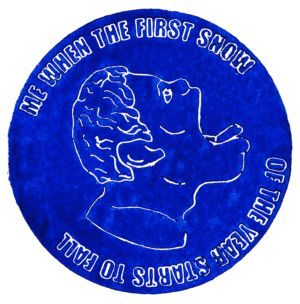
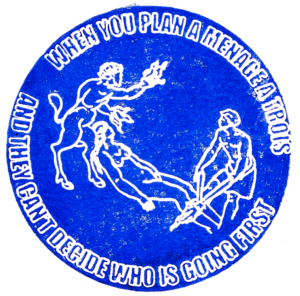
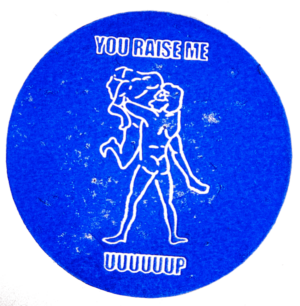
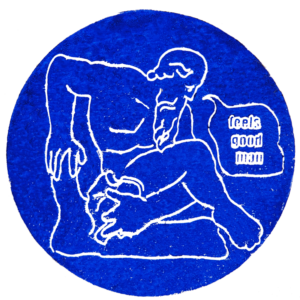
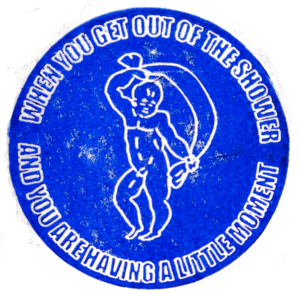
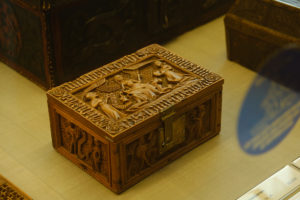
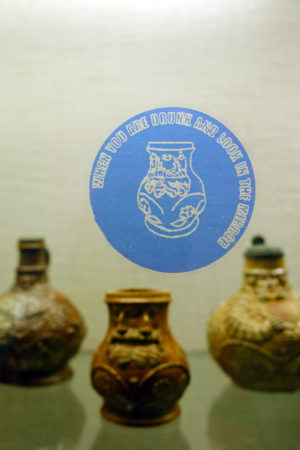

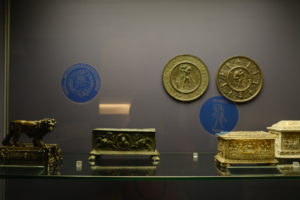
Prozess
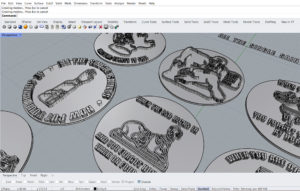
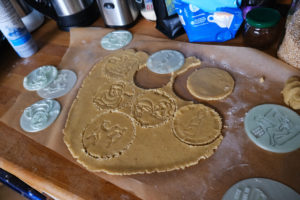
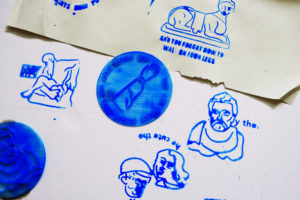
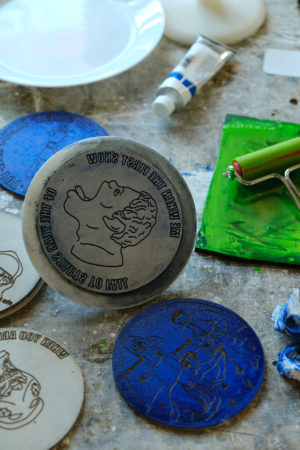
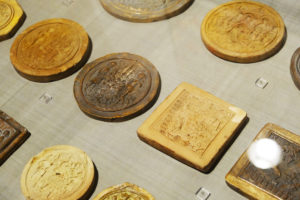
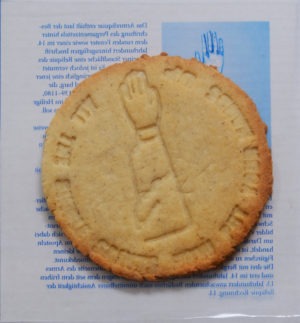
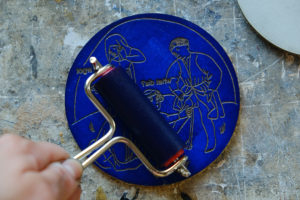
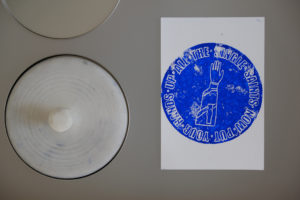
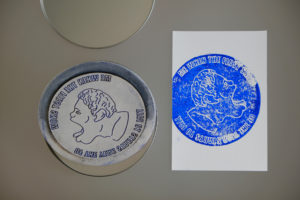
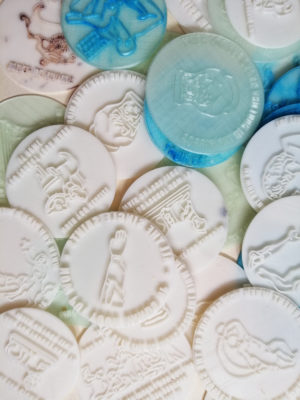
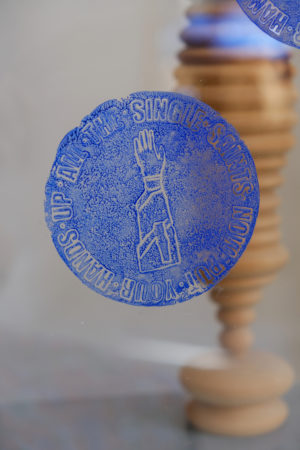

98% POLYESTER 2% COTTON // SS 21 // Design project starting from 5th Semester
Working with limitations is a creative force. For the summer semester 2021 we still weren’t back to normal, continually being forced to think and work in different ways. The challenge to work with nylon materials and to push the boundaries of the usage of this material was the main focus and task of this semester project, to put the negative notions of this material to one side and concentrate on and evolve positive ones.
Outerwear and accessories are the most obvious categories where nylons are used. Poppy colours, clean shades, construction, finishings with zips, velcro and seamless bonding have become the obvious codes for these kinds of garments and accessories. The students were challenged to put these accepted norms into question and refuse the standard trimmings and the obvious ways of constructing these kind of materials and research the more craft based techniques in other categories where nylon is used as well.
Each of the students were asked to determine from the beginning of the project a percentage of nylon they will use to create their final outfits and accessories but it must be at least 50% nylon the rest can be any other material.
Lecturer: Prof. Wowo (Waldemar) Kraus, KM Alexandra Börner , Stefan Hipp, Dorothée Warning
// Mona Gutheil & Laurin Stecher „STEREOTINDER“
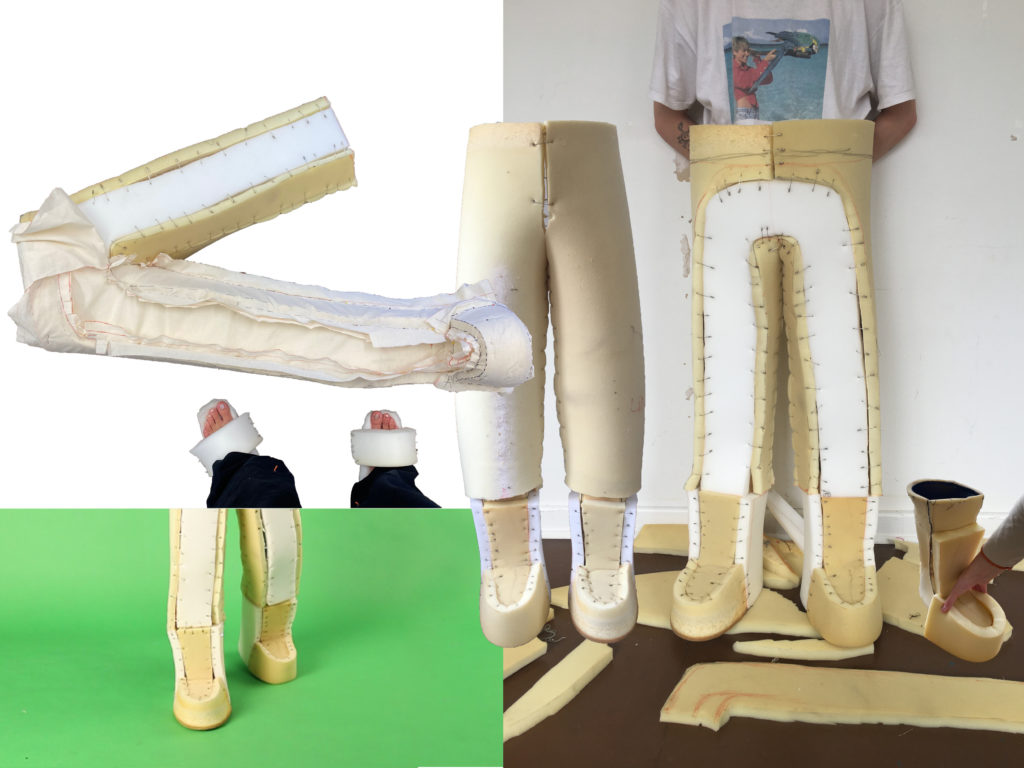
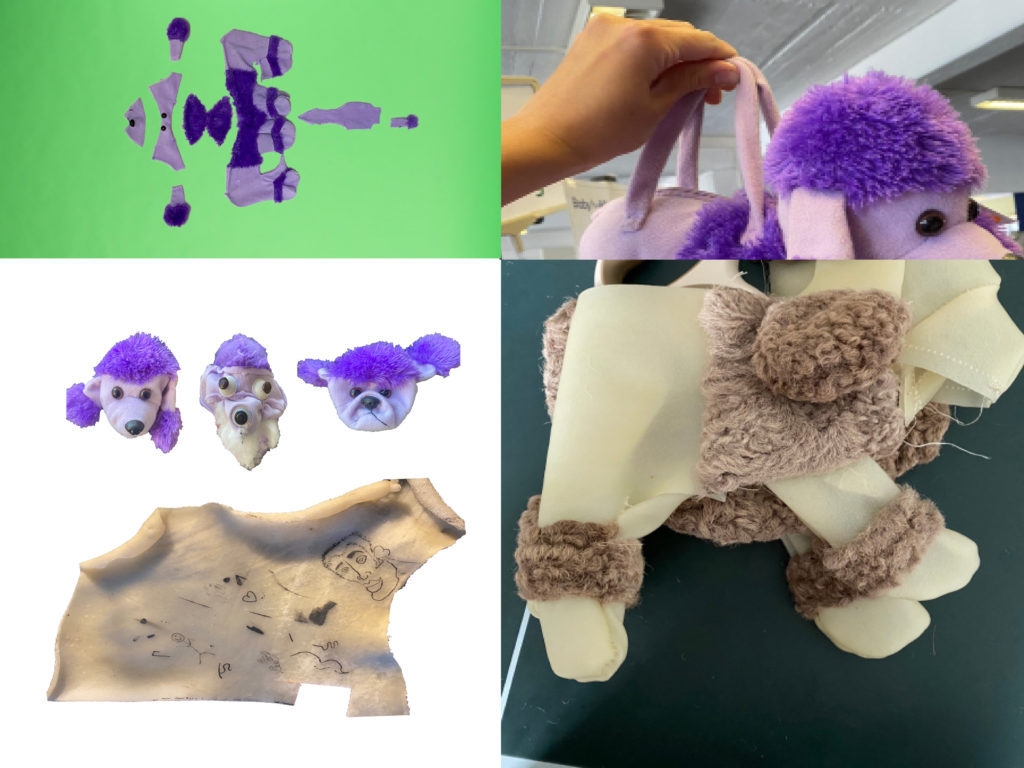
It seems that most people strive for individuality. We consume clothes in order to stand out from our surroundings. However, we mostly still move within a pigeonhole and thus set clear codes to our outside world. What happens when we consciously resort to strongly connoted items of clothing from different pigeonholes and remove them from the contextual pigeonhole? This problem, the striving for individualism,
not only concerns the end consumer, but also the designer.
The human brain, as well as artificial intelligence, collects data and information to generate new contexts. We categorise and systematise our environment, thus reducing complex information to stereotypes. This happens mostly in an unconscious cognitive mapping. We have incorporated the design methodology (morphing) of an artificial intelligence into our design. The Ai cannot distinguish within its data set where the backpack ends and the top begins.
So we were able to morph stereotypical garments within a drawer into something new. It is precisely through technical innovations such as artificial intelligence that the role of the human designer is also called into question. The stereotypes depicted refer to the western world, the Berlin area. With our project, we ourselves take on the role of the conscious observer and, by dissolving the context, attempt to remove a categorization into pigeonholes.
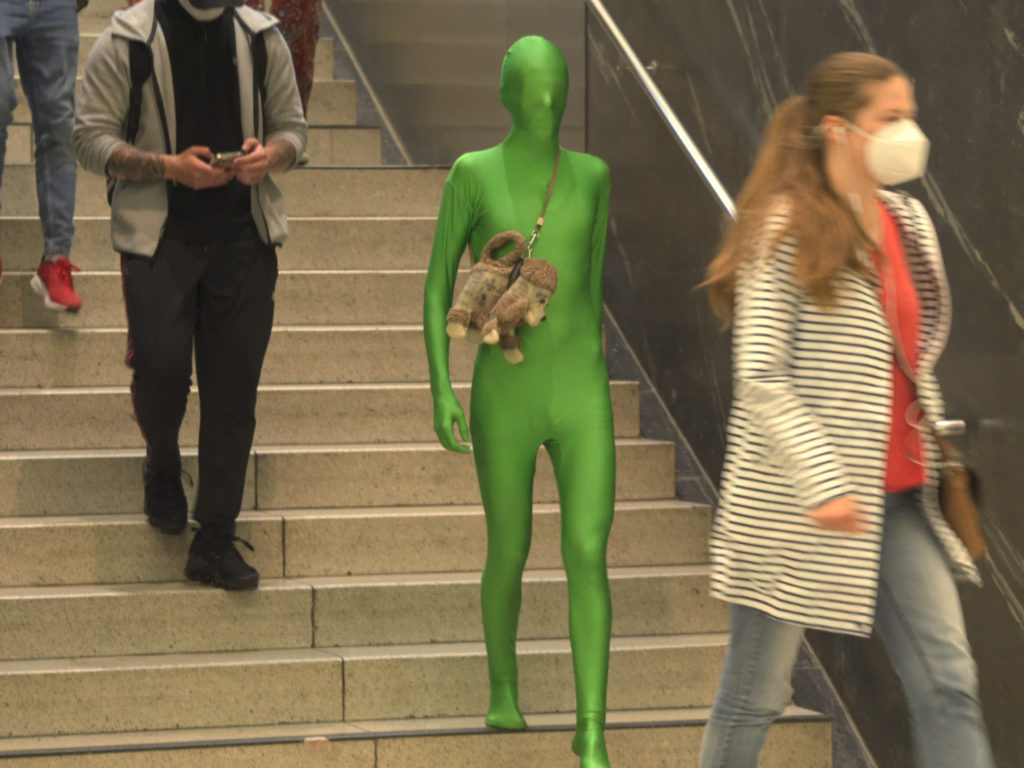
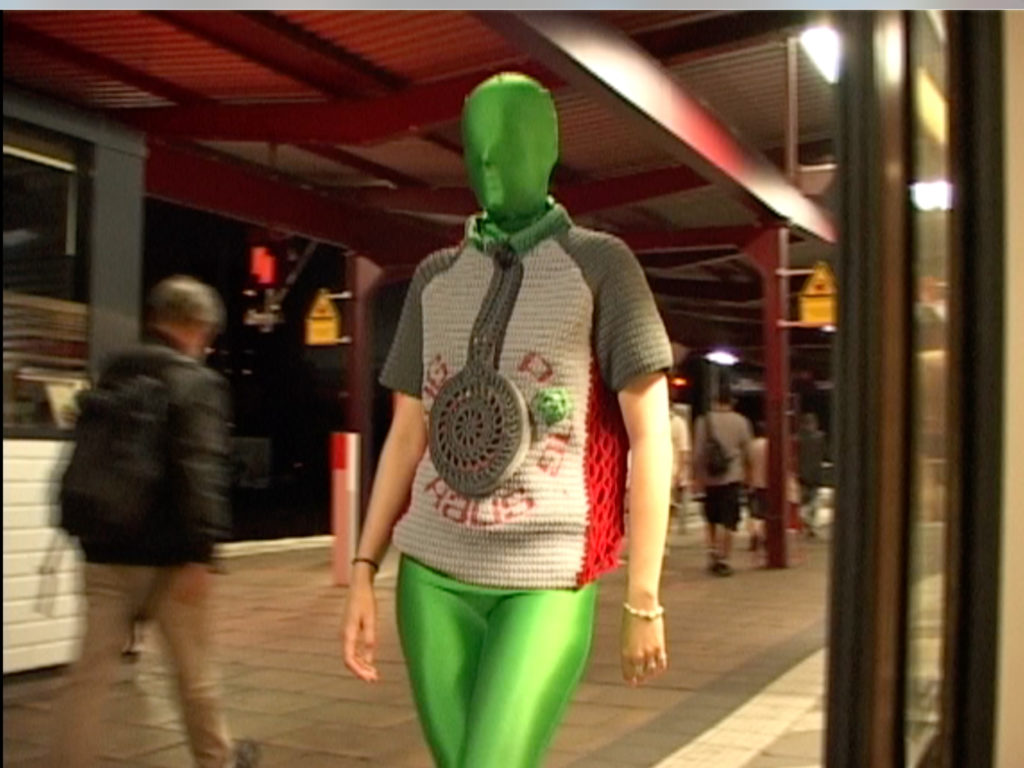
// Luzie Richter „Landlust“
>> a project about the countryside, the people and technology <<
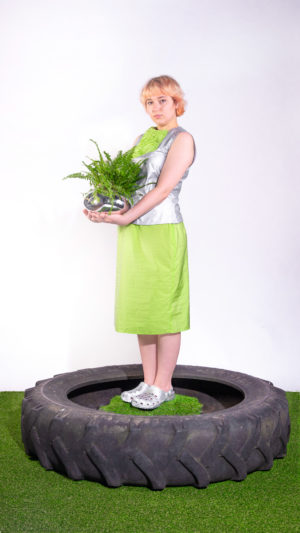
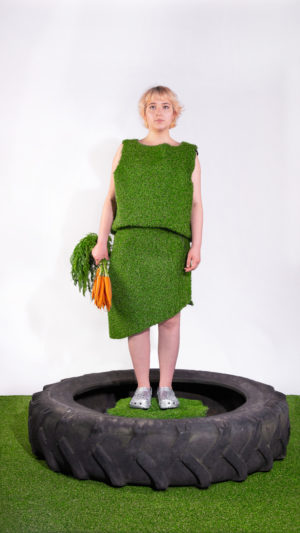
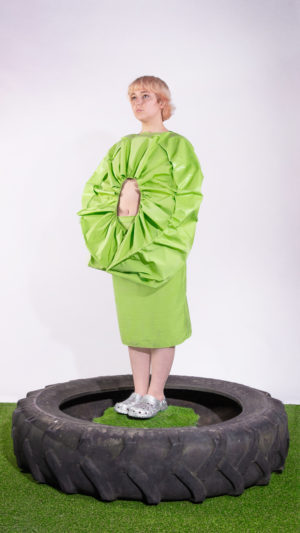
It’s summer in the countryside. The last couple of weeks were wonderful. You sit in your small house, with the most beautiful view over all the summerly fields, meadows and the woods. You stand up from your rocking chair, put your book aside and walk to the terrace. You step outside. Your naked feet feel the tingle of the grass. Breath in. Breath out. The air smells sweet and warm. You take your little basket and straw your way to the strawberry field.
Bling. bling. You get a notification. The tomatoes need water. You press OK. Seconds later the drone heads of with your watering can.
Later that day you take your old bike out of the shed and head to the farmers market. It’s already evening, but the air is still warm and full of crickets chirping. On the dusty country road a tractor without driver passes you. The tractors turns on a small dirt track and continues it’s way through the golden wheat spikes. It’s a perfect summer day.
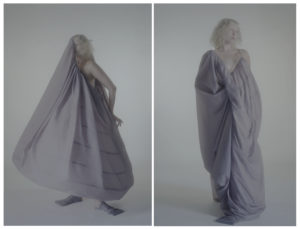
// Kristel Jänes „Ühendus “
Connecting the structural design of Soviet era block buildings & the idea how simple form can affect the viewer. How much excess one can remove without making it unrecognisable?
In this context my main interest was in balconies – they are structurally very limited & firm, but also have the feeling of freedom through users own individuality. It’s a space that belongs to to the owner and to the public at the same time.
Through using historical shape my aim was to create silhouette that took up space to give the wearer the feeling of security and was easily changeable.
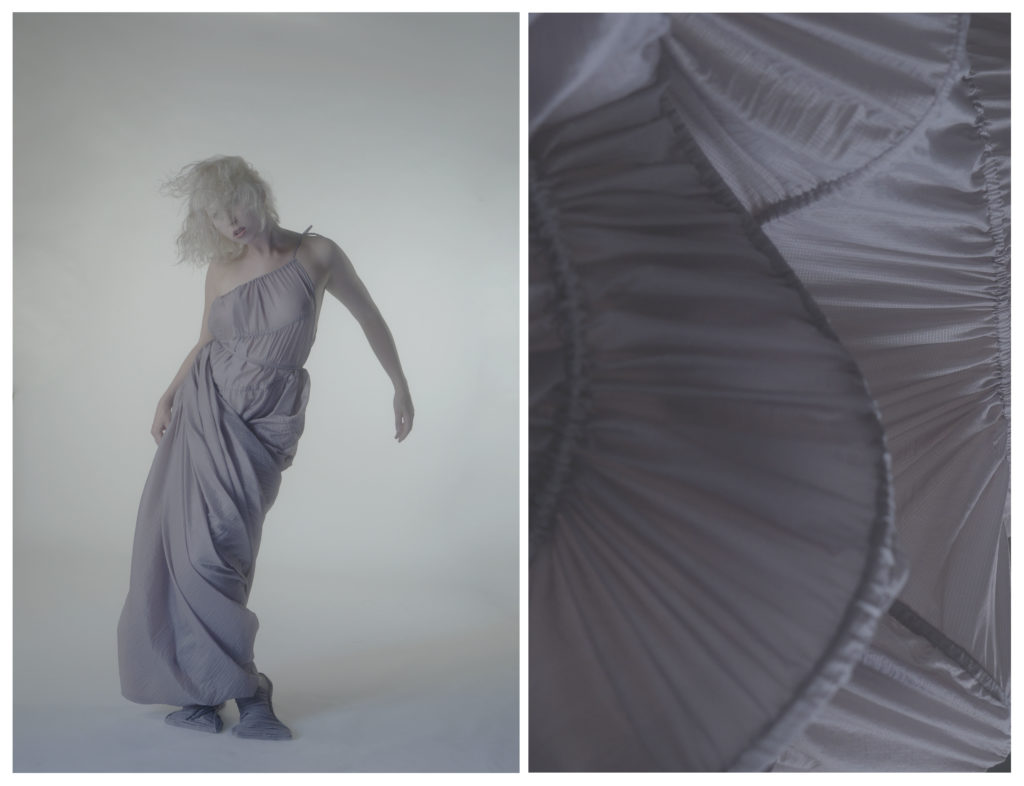
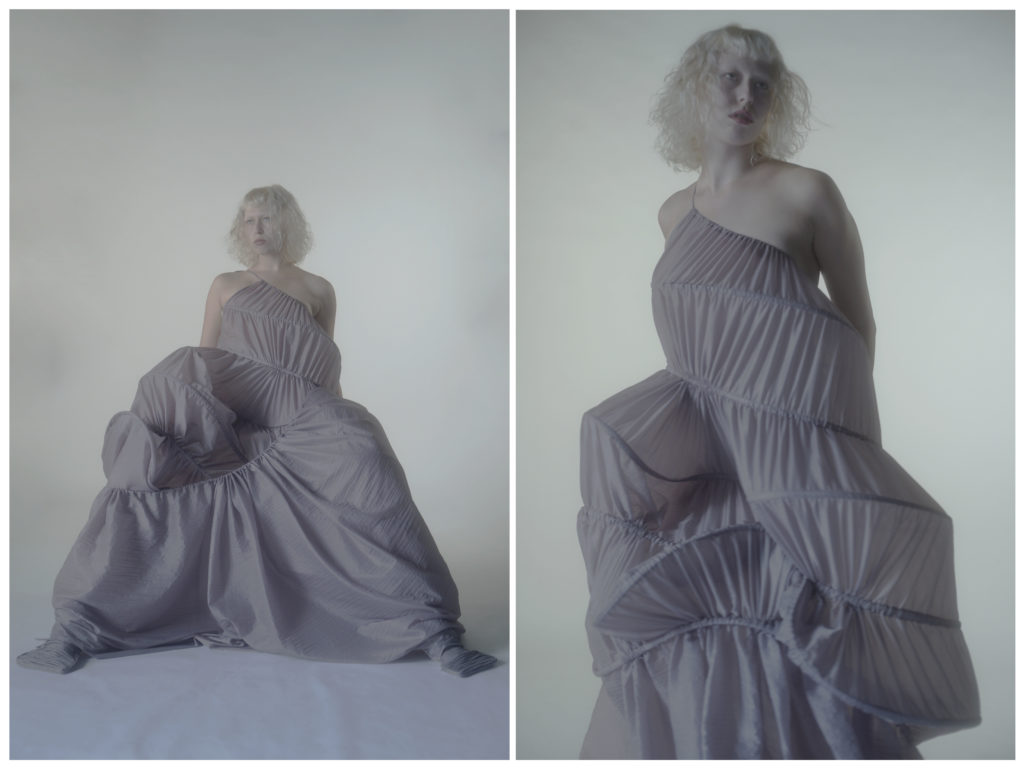
// Sezgin Kivrim „Anneaneme“
This semester I teamed up with a person who is very special to me – my grandmother. Listening to her personal stories, analyzing her clothing behavior and closet, seeing all the old pictures and spending a lot of quality time together, I had a very yet different but interesting and productive design process.
Aiming to create garments combining her personality, tradition and typical style on the one hand side and the use of nylon and my modern interpretation on the other hand side, the result is unisized garments fitting my grandmother, mother and younger sister leading to a discourse by three generations questioning the understanding of style, sustainability and comfort.
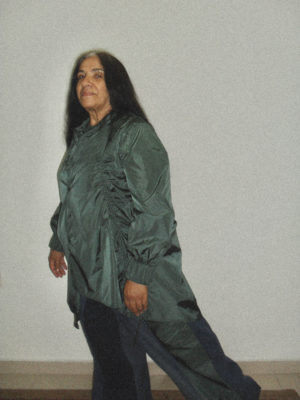
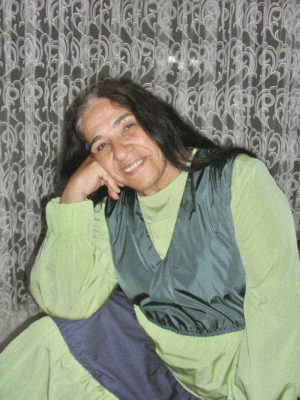
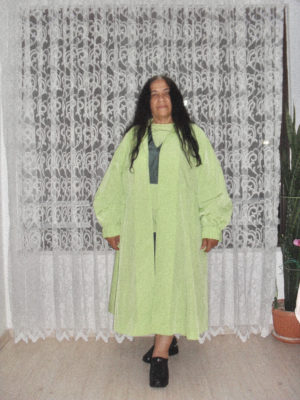
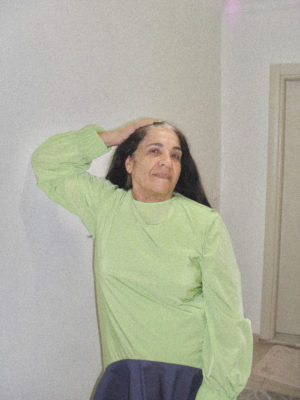
// Denise Kipke „DIS / CONNECTED“
Social Distancing lead to meetings in non-places, places in the digital world. These meetings on the internet restrict. Everything is focused on the face. Facial expression is the only expression that determines our being. The body becomes disconnected, cut off by the frame of the screen.
We curate ourselves in a digital cage, rectangular in front cameras that will spot every single one movement. No one can feel what it means to experience space and confinement, tightness in this non-place, in this digital universe.
In the man-made universe, the individual merges with the glossy screen to become an object.
This work is based on reconnecting the head with the body. The fragile subjectivity of the human being is transformed through a return to the perception of the physical: space and tightness. Freedom and limitations. The reconnection of subject/human and object/clothing.
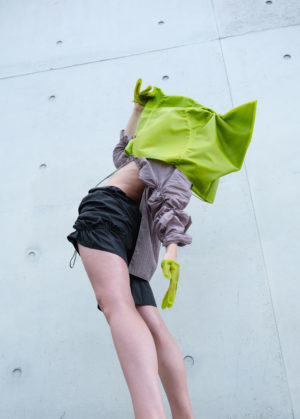
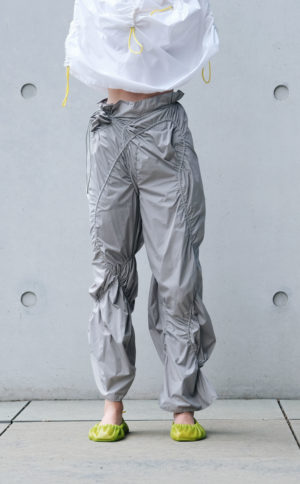
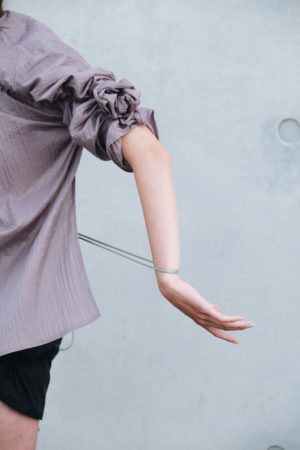
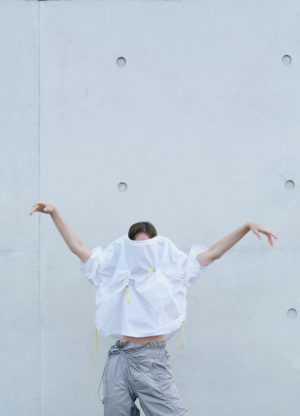
// L M „Outfit (2021)“
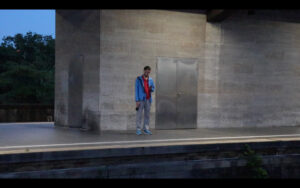
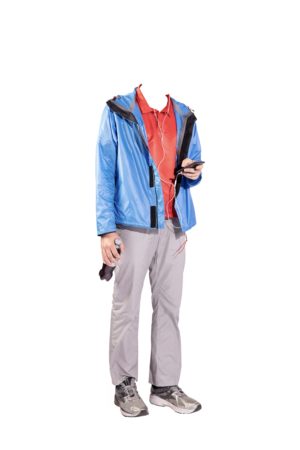
An approach of preserving an image through cloth.
In the form of a portrait of an (in)visible person dressing and appearing in the so far 21st Century.
A person with a maximum of things or nothing to project into it.
A reproduction of existing complexities in which a person of our time lives a live in.
(reproduciton) <- – -> (the real)
It is about „reality“, outfits, „the void“ and design depression.
(violently) normal.
// Alex Hein „Sempro“
Working with a controversial and personally unconventional material is already a challenge.
When, additionally to that, things like limitation, unfamiliar ways of finishings and closures, fabric overhang,and an ongoing lockdown also come into play, you have to think outside the box and leave your comfort zone. In the beginning there was nylon; in different variations, in almost endless yardage.
Why not getting inspiration from the fabric itself? How is it different from other fabrics? How does it behave?
How does it sound? How does it feel? How does it move?
Rethinking the typical usage of the fabric, questioning its value, try to make it more accessible to my own aesthetics, my designthinking and my wishes for the fabric. The garment research focused on volumes, the back as a sensual bodypart, cutouts, narrowing, gatheringsand effortless closures
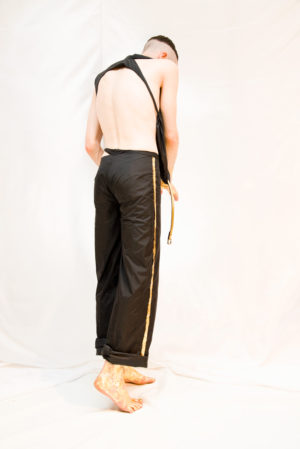
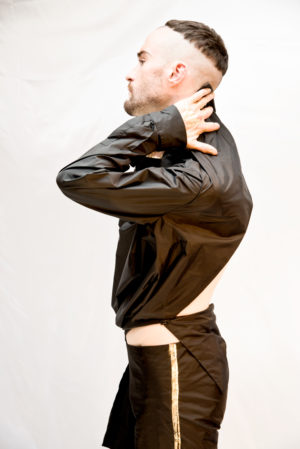

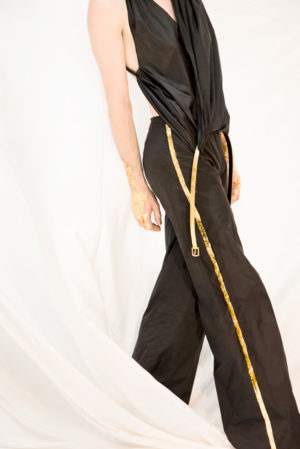
// Maurice Gerlach „GIKS“
Graffiti opened up the world of art to me and inspired me when I was young. The function and appeal is to create something new out of something old, and to make things new through painting. This function inspired me to transfer and combine graffiti into fashion, which is why I decided to do an upcycling project with secondhand clothes. I reworked the garments. In addition, they were written on with markers. To deviate even more from the old design, I padded the garments and incorporated lettering with the help of quilting. To make the garments reversible, I added a lining. The garments are very detailed, functional and convey the art of graffiti in combination with upcycling.



INVERSIS
Inversis, die Umstülpung, ist eine Bewegung in der sich das Äußere nach Innen und das Innere nach außen kehrt. Während Umstülpungen als Phänomen in der Natur und in unserer Textilproduktion weit verbreitet sind, sind Entwicklungen zu geometrischen Umstülpungen platonischer Körper erstaunlich neu. Erst Anfang des 20. Jahrhunderts entwarf Paul Schatz den ersten umstülpbaren Würfel. Das Projekt Inversis konzentriert sich auf die Zerlegung und Umstülpung des Hexaeders. Jedes Modell ist von einem anderen Gestalter entwickelt worden und zerlegt den Würfel anhand unterschiedlicher Symmetrieachsen. Aus der gleichen Grundform ergeben sich durch das Umstülpen von Innen nach Außen neue Formen, Bewegungen und Körper. Da die meisten dieser Körper patentiert sind, bleiben Information und Bilder zu diesem Thema im Internet schwer erhältlich, geschweige denn Anleitungen oder Abwicklungen der komplexeren Körper.
In diesem Projekt soll ein kleiner Einblick in einen spezifischen Bereich der Umstülpung gegeben werden an welchem sich jedoch viele allgemeine Strukturen umstülpbarer Körper erkennen lassen. Die entwickelten Faltbögen werden für interessierte Gestalter gerne auf Nachfrage bereitgestellt und sind als Einladung gedacht um selber zu stülpen, zu verstehen und die bestehenden Systeme weiterzuentwickeln.
INVERSIS
Inversis or inversion is the process of turning the outside to the inside and the inside to the outside. Even through inversion is a phenomenon well known in nature and textile production, the developments on geometrical inversions are fairly recent. At the beginning of the 20th century Paul Schatz developed the first invertible cube. The project Inversis concentrates on the deconstruction and inversion of the hexahedron. Each model is designed by a different person and uses alternating axes of symmetry to divide the cube. Through inversion, the hexahedron moves and transforms each time into new shapes and variations. Because most of the invertible objects are patented it’s hard to find pictures, information and any kind of instructions on how to build the objects online.
This project is ment as a teaser, to show part of the invertible universe and help understand it´s structures. The instructions on how to build the bodies will be offered to anyone interested.
LP_01
Der Leuchten Prototyp stellt den Versuch dar mit neuzeitlichen Mitteln und Komponenten eine typologisch reine Form einer Schreibtisch Leuchte zu entwickeln. Als Vorbild diente hierzu die Maschinenform des Roboter Arms.
Untersucht wurde vor allem die Anzahl und Anordnung der Freiheitsgrade sowie Achsen der Koten und deren Auswirkung auf die Beweglichkeit der Leuchte. Die zukunftsorientierte Forderung besteht darin sich auf den Wandel des reinen Handwerkzeugs hin zur voll automatischen Bewegung einzulassen und diesen voran zu treiben. Welche bewegten Produkte können, werden oder sollten sich in Zukunft verselbständigen? Was währen die Implikationen einer Evolution hin zu einer Halb- oder Vollautomatischen Umwelt? Werden wir in Zukunft nur noch indirekt agieren?
LP_01
The lamp prototype represents the attempt to develop a typologically pure form of a desk lamp using modern means and components. The machine shape of a robot arm served as a reference for this design. In this first and foremost extensive research went into the number and placement of the axes as well as the degrees of freedom of the knots and their effect on the mobility of the lamp were examined. The future-oriented requirement is to engage with the change from pure hand tools to fully automated moving tools and to drive this forward. Which moving products can, will or should become independent in the future? What are the implications of an evolution towards a semi or fully automatic environment? Will we only act indirectly in the future?
OFFSET
OFFSET ist leichter und stabiler Tritthocker aus Formsperrholz, welcher aus drei Teilen besteht. Der Tritthocker bezieht seine Form aus einer Geometrie, die aus den Nutzungsparametern, einer effizienten Nutzung von Material und einer eindeutigen Statik ermittelt wurde.
Mit Hilfe der Biegesperrholzplatte „Upm-Grada“ können die Verbindungen bereits vor der Formpressung eingefräst werden, sodass eine industrielle Fertigung kostengünstig erfolgen kann. OFFSET möchte eine Lösung aus Holz anbieten, die eine Alternative zu bisher etablierten Gestellkostruktionen und Kunsstoffprodukten darstellt.
Durch die pandemiebedingte Situation des Onlinesemesters wurde zur Prototypisierung das Sperrholz durch radiales Einschlitzen durch CAD/CNC in Form gebraucht.

Photon 360
Phototropismus ist das Streben aller Pflanzen nach dem Licht. In einem urbanen Lebensraum stehen oft Wände und Häuser vor der Sonne, weshalb besonders Zimmerpflanzen meist nur in eine Richtung wachsen. In der Natur, unter freiem Himmel, würden diese Pflanzen gleichmäßiger und natürlicher wachsen, ohne uns die kalte Schulter zu zeigen.
Photon 360 löst dieses Problem, indem es die Pflanze dreht. Geräuschlos und langsam dreht ein solarbetriebener Getriebemotor die hängende Pflanze, so dass sie sich nicht mehr verbiegen muss.
Photon 360
Phototropism is a plants strive for the light. Walls and buildings often block out the sun in urban living spaces, which is why especially houseplants tend to grow in one direction only. In nature, under the open sky, these plants would grow more even and natural, without turning their backs on us.
Photon 360 strives to solve this problem, by spinning the plant. Slowly and without a sound, a solar powered gear motor is spinning the hanging plant, so it doesn’t have to grow crooked anymore.
FLÄCHENLEBEN
„Flächenleben“ ist eine Installation, die das Gefühl vermittelt auf einem Feld zu stehen, während der Wind über die Getreidehalme streicht. Das Bild dieser riesigen wabernden, bewegenden Fläche hat mich schon immer fasziniert.
Getreidehalme wurden durch einen mit Rattan bespannten Rahmen gesteckt und einzeln befestigt. Mithilfe eines Motors auf der Rückseite des Objektes wird eine Stange rollladenähnlich hoch- und runtergefahren und streift von hinten über die Halme. So entsteht vorne eine wellenartige Bewegung der Fläche. Zwei Platinen regeln die Geschwindigkeit und sorgen für die Umschaltung des Motors nach zehn Sekunden.
Die Installation kann sich so über längere Zeit ohne Fremdeinwirkung bewegen und Ruhe in den Innenraum transportieren.
FLÄCHENLEBEN
„Flächenleben” is an installation that conveys the feeling of standing in a field while the wind strokes the stalks of grain. I have always been fascinated by the image of this huge billowing, moving surface.
Corn stalks were put through a frame covered with rattan and attached one by one. With the help of a motor on the back of the object, a rod is raised and lowered like a roller shutter and sweeps over the stalks from behind. This creates a wave-like movement of the surface at the front. Two circuit boards regulate the speed and ensure that the motor switches over after ten seconds.
The installation can thus move for a long time without external interference and transport peace into the interior.
ACCORDION – ein Licht bewegen
Im Alltag sind wir gewohnt Einstellungen nur durch einen Knopfdruck zu steuern. Fasziniert von Licht und seiner Wahrnehmung habe ich in meinem Projekt das Semesterthema „Bewegung“ auf die Steuerung der Helligkeit einer Leuchte angewandt. Der Nutzer wird zu einer Bewegung animiert, um die Leuchte bedienen zu können. Durch Stauchen, Strecken und Verformen wird die notwendige Lichtmenge angepasst und die Richtung der Beleuchtung verändert.
Der flexible und zugleich statische Körper macht das ungreifbare Licht haptisch, formbar und verstellbar. „accordion“ ist eine mobile und kompakte Leuchte, die ohne Schrauben, Kabel, Lampenschirm und verschiedene Gelenke uns als alltägliche Helligkeit begleitet.
ACCORDION – moving a light
In everyday life we are used to control settings just by pressing a button. Fascinated by light and its perception, in my project I applied the semester-topic „movement“ to controlling the brightness of a lamp. The user is animated to move in order to operate the luminaire. By compressing, stretching and deforming the required amount of light is adjusted and the direction of the lighting can be changed.
The flexible and at the same time static body makes the light haptic, malleable and adjustable. „accordion“ is a mobile and compact lamp that accompanies us as everyday light without including screws, cables, lampshades and various joints.
NEN
Im schnelllebigen, von grellen Bildschirmen geprägten Alltag, durchleben wir Menschen der postmoderne oft ein hohes Maß an Stress und Unruhe, die wir mit an den Arbeitsplatz bringen. Die Leuchte „Nen“ bringt durch ihr warmes Licht eine wohlige und ruhige Atmosphäre zurück an ihren Schreibtisch. Ihr simpler Aufbau und ihre weiche Haptik, regt zu einer spielerischen Auseinandersetzung und Kreativität an.
„Nen“ lässt sich variabel in ihrer Höhe und Ausrichtung verstellen und bringt eine Vielzahl an Bewegungsmöglichkeiten und Licht-Einstellungen mit. Durch die Möglichkeit der individuellen Ausrichtung der Leuchte, kann sowohl mit intensivem, direktem, als auch mit gedämpftem Licht gearbeitet werden. Zu jeder Aufgabe und jedem Arbeitsschritt bietet die Lampe das passende, inspirierende Ambiente. In Ihrem geschlossenen, statischen Grundzustand erzeugt die Leuchte ein warmes Licht und wirkt als eine in sich geschlossene Energiequelle.
NEN
In today’s fast-paced life, characterized by glaring screens, we often experience high levels of stress and restlessness, which we bring with us to the workplace. With its warm light, the „Nen“ lamp brings a soothing and calming atmosphere to your desk. The simple design and soft feel of the surface, encourage a playful approach and creativity.
„Nen“ can be adjusted in height and orientation and thus brings a variety of movement options and light settings. The possibility of aligning the luminaire individually, makes it possible to work with intense, direct light as well as with dimmed light. For every task and every work step, the lamp offers the appropriate, inspiring ambience. In its closed, static basic state, the lamp produces a warm light and acts as a self-contained energy source.
BLOBJECT
Bewegung ist Flexibilität.
Bewegung ist die Entwicklung vom zweidimensionalem ins dreidimensionale.
Bewegung ist Inflation.
Bewegung ist BLOBJECT.
Inspiriert von aufblasbaren Konstruktionen aus plastischen Strukturen, die durch Luftdruck ihre Form erhalten, entstand die Auseinandersetzung mit aufblasbaren Objekten. „Inflatable Objects“ und „Inflatable Architecture“ haben den Vorteil, dass sich diese durch ihre Flexibilität an verschiedenste Situationen (Krisen) bzw. Bedingungen anpassen können. Durch die Möglichkeiten der Veränderung von Größe, Volumen und Formen sind sie praktisch und transportabel. Luft als allgegenwärtiges Element und „Material“ braucht nur einen Rahmen, um Gestalt anzunehmen und seine Eigenschaften nutzen zu können.
BLOBJECT ist ein „Inflatable Object“, das verschiedene Sitzmöglichkeiten anbietet. Durch die zwei materiell und formal unterschiedlichen Elemente ergeben sich ästhetisch als auch funktional verschiedene Varianten.
Die beiden Parameter, Pneu & Stahlrohr funktionieren als Antagonisten, die sich gegenseitig beeinflussen. Das Pneu wird einerseits durch das Metallgerüst in seiner Form verändert. Andererseits wird das Metall durch das Pneu erst benutzbar gemacht. Durch die Flexibilität des pneumatischen Körpers und der Form des Metallgestells ergeben sich auf den vier unterschiedlichen Seiten variierende Sitzmöglichkeiten und Nutzbarkeiten. Aufgrund der Leichtigkeit des Pneus und der simplen Gestaltung des Stahlrohrs ist BLOBJECT mobil und kann an beliebigen Orte bewegt und installiert werden.
BLOBJECT
Movement is flexibility.
Movement is the development from the two-dimensional into the three-dimensional.
Movement is inflation.
Movement is BLOBJECT.
Inspired by inflatable constructions made of plastic structures that obtain their shape through air pressure, the exploration of inflatable objects came into focus. „Inflatable Objects“ and „Inflatable Architecture“ have the advantage that they can adapt relatively easily to a wide variety of situations (crises) or conditions due to their flexibility. The possibilities of changing size, volume and shapes make them practical and transportable. Air as an omnipresent element and „material“ only needs a frame to take shape and to be able to use its properties.
BLOBJECT is an „Inflatable Object“ that offers various seating possibilities. The two materially and formally different elements result in aesthetically as well as functionally different variations.
The two parameters, pneu & steel tube function as antagonists that influence each other. On the one hand, the shape of the pneumatic tube is changed by the metal and on the other hand, the metal is made usable by the pneumatic tube. The flexibility of the pneumatic body and the shape of the metal frame, which has different sides, result in a wide variety of seating options and uses. Due to the lightness of the pneu and the simple design of the steel tube, BLOBJECT is mobile and can be moved and installed in any location.
MAGNETIC SURFACES
Mein Ziel war es, eine Oberfläche zu schaffen, die eine Form von Bewegung durch zwei verschiedene Zustände besitzt: einen unbewegten, bewegungslosen und einen anderen, der eine Transformation aufweist, die durch eine Interaktion verändert wird.
Die Ausgangsfrage war, wie die Geometrie der Oberfläche eine Verbindung mit einem Mechanismus haben könnte, um diese Veränderung zu erzeugen. Die Antwort kam mit Magneten, die viele interessante Eigenschaften besitzen. In diesem Projekt wird die Fähigkeit des Magneten, als unsichtbare Kraft zu wirken, wenn er sich in der Nähe von Eisen befindet, ohne dass ein Kontakt erforderlich ist, weiter erforscht. Mein Interaktionswerkzeug ist ein Magnetstab, der aus übereinander gestapelten Magneten besteht, wodurch sich deren Kraft erhöht. Die Oberfläche ist flach und glatt, wenn der Magnetstab entfernt ist; wenn er sich nähert, tauchen die Stahldrahtstücke auf. Was also zunächst wie ein weißes, glattes Quadrat aussieht, verändert sich durch die Interaktion mit dem Magneten.
MAGNETIC SURFACES
My goal was to create a surface that possessed some form of movement through two different states: a still, motionless one, and another which exhibits a transformation, altered through an interaction.
The starting question was how the geometry of the surface could have a connection with a mechanism to create this change. The answer came with magnets, which possess many interesting qualities. In this project, the magnet’s ability to act as an invisible force when in proximity of iron without the need for contact, is further explored. My interaction tool is a magnetic stick, composed of magnets stacked together, increasing their force. The surface is flat and smooth when the magnet stick is away; as it nears, the steel-wire pieces pop up. Thus, what at first seems like a white, smooth square, changes through the interaction with the magnet.
LEADME
LEADME ist der Versuch eine Deckenleuchte zu entwickeln, die im Raum beweglich ist und dort jede Position einnehmen kann. Die Konstruktion besteht aus zwei Aluminium H-Profilen, die quer zueinander auf Schlitten bewegbar sind. Auf der unteren Schiene läuft der Lampenkörper. Die Bedienung der Lampe beinhaltet zwei Möglichkeiten: Die Intuitive Variante ist das Seil, das aus dem Lampenkörper hängt. Das Seil bedient einen Joystick, der die entsprechenden Richtungsimpulse interpretiert und über einen Mikrocontroller 2 Getriebemotoren ansteuert, die den Lampenkörper in die gewünschte Richtung bewegen. Die zweite Möglichkeit ist eine Bluetooth Steuerung, die über jedes beliebige Smartphone steuerbar ist. Ziel der Lampe ist es, die Anzahl an nötigen Zusatzbeleuchtungsquellen (Schreibtischlampe, Stehlampe, Leselampe, etc.) zu reduzieren, die bei fest installierten Deckenleuchten oft genutzt werden müssen.
LEADME
LEADME is an attempt to develop a ceiling lamp that is able to move in a room, where it can take any position. The construction consists of two aluminum H-profiles, which are movable transversely to each other on slides. The lamp body runs on the lower rail. The operation of the lamp includes two options: The intuitive option is the rope hanging out of the lamp body. The rope operates a joystick, which interprets the corresponding directional impulses and controls 2 gear motors via a microcontroller, which move the lamp body in the desired direction. The second option is a Bluetooth controller that can be controlled via any smartphone. The goal of the lamp is to reduce the number of necessary additional lighting sources (desk lamp, floor lamp, reading lamp, etc.) that often have to be used with permanently installed ceiling lights.
DRY in style – wherever, whenever
Der Wäscheständer. Jeder kennt ihn. Die meisten nutzen ihn. Die wenigsten mögen ihn. Selten praktisch, nicht wirklich ästhetisch. Funktional gestaltet, steht er wohl oder über als unliebsames Objekt in unseren Wohnungen – mit oder auch ohne nasse Wäsche. DRY ändert das. DRY ist ein praktischer und ästhetisch ansprechender Wäscheständer. Das Monogelenk – inspiriert von Giancarlo Pirettis Stuhl Plia – ermöglicht ein einfaches Auf- und Eindrehen. Die Mechanik innerhalb des Gelenks arretiert die Beine sowie die Auflagefläche des Ständers ohne zusätzliche Hilfe. Die Auflagefläche lässt sich auf eine Länge von 160cm ausziehen. So finden auch ausladenden Textilien, wie Bettbezüge ausreichend Platz. Das Design stellt, wie bei klassischen Entwürfen die Funktionalität in den Mittelpunkt und referenziert auch hier den Plia-Stuhl und dessen Chrom-Finish. Somit ist DRY nicht nur ein formschöner Alltagshelfer, sondern auch eine Hommage an das italienische Design der 70er Jahre.
DRY in style – wherever, whenever
The laundry rack. Everyone knows it. Most people use it. Very few like it. Rarely practical, not really aesthetic. Functionally designed, it is part of our apartments – with or without wet laundry. DRY changes that. DRY is a practical and aesthetically pleasing laundry rack. The monojoint – inspired by Giancarlo Piretti’s Plia chair – makes it easy to open and close. The mechanism inside the joint locks the legs as well as the horizontal bars without additional help. The horizontal bars can be extended to a length of 160cm. This way there is enough space even for large textiles, such as bed covers. The design, as in classic designs, focuses on functionality and also references the Plia chair and its chrome finish. Thus DRY is not only a stylish everyday helper, but also a tribute to the Italian design of the 70s.
Pantrograf
In einer Zeit in der die Welt neu ausgemessen wird und die Abbildung der Erdoberfläche Genauigkeit und Präzision verlangt wurde der Pantograf erfunden. Ein Pantograf ermöglicht als mechanisches Zeichenwerkzeug das genaue Übertragen von Zeichnungen im gleichen, größeren oder kleineren Maßstab. In der Kartografie und Geodäsie war der Pantograf ein Präzisionsinstrument zur Vergrößerung und Verkleinerung von Karten und Plänen und war lange die einzige Möglichkeit Zeichnungen zuverlässig zu übertragen.
Durch die digitalen Möglichkeiten der Bildbearbeitung spielt der Pantograf in der Technik keine wichtige Rolle mehr dafür in der Kunst als Malwerkzeug und weitere Versuchszwecke. Die Funktion des Pantografen basiert auf dem Prinzip des Parallelogramms. Die sich jeweils parallel gegenüberliegenden Seiten in einem Parallelogramm müssen gleich groß sein, um eine möglichst genaue Darstellung zu bieten. Bei diesem Pantografen ist es möglich die Größen der Seiten nach belieben einer Verzerrung der übertragenden Zeichnung einzustellen. Mit den insgesamt 16 Möglichkeiten unterschiedlicher Längen können Darstellungen vielseitig manipuliert werden.
Pantograf
At a time when the world is being remeasured and the mapping of the earth’s surface requires accuracy and precision, the pantograph was invented. A pantograph, as a mechanical drawing tool, allows the accurate transfer of drawings in the same, larger or smaller scale. In cartography and geodesy, the pantograph was a precision instrument for enlarging and reducing maps and plans. For a long time it was the only way to reliably transfer drawings.
Due to the digital possibilities of image processing, the pantograph no longer plays an important role in technology, but in art as a painting tool and for other experimental purposes. The function of the pantograph is based on the principle of the parallelogram. The sides in parallel opposite of each other in a parallelogram must be the same size in order to provide the most accurate representation possible. With this pantograph, it is possible to adjust the sizes of the sides to any distortion of the transmitted drawing. With a total of 16 possibilities of different lengths, representations can be manipulated in many ways.
UrUhr
Viele Menschen haben verlernt die Natur zu lesen. Nur wenige von uns sind in der Lage die Uhrzeit anhand des Sonnenstandes erkennen zu können. Kontemporäre Architektur und Städtebau erschwert dies heute zudem. Direktes Sonnenlicht in Innenräumen ein wahrer Luxus.
UrUhr ist ein experimentelles Licht Objekt, dass ich basierend auf diesen Feststellungen und meinen Beobachtungen der letzten Monate gefertigt habe. Die Leuchte soll das Verhalten von filigranen Lichtstreifen die mit der Zeit durch ein Zimmer wandern imitieren und so den Zusammenhang von Licht und Zeit und Zeit und Licht zurück in unsere Köpfe bringen. Die Lampe ist so aufgebaut, dass sie sich an der richtigen Stelle im Raum platziert, einmal um sich selber drehen wird und den NutzerInnen so nicht nur ein wohliges Licht im Innenraum schenkt, sondern zudem die Uhrzeit verraten wird.
Der „Lampenschirm“ der Leuchte besteht aus matt-schwarz lackiertem Holz und 0,5mm starkem und in Form gebogenen Messing Blech. Der Sockel der Leuchte ist aus Beton gefertigt, welcher mit einem Edelstahl Mantel umhüllt ist. Der Innenraum des Rohrs ist verchromt um eine größtmögliche Reflektionsfläche für das Innenliegende Leuchtmittel zu kreieren. Der „Lampenschirm“ ist an einen Stepper Motor angeschlossen, welcher im Kern der Leuchte, oberhalb des LED Leuchtmittels montiert ist. Der Motor wird von einem Arduino Board angesteuert und ist so programmiert, dass er sich in 12 Stunden einmal um sich selber dreht. Aktuell sind Motor und Licht nicht aneinander gekoppelt, sodass zwei separate Stromquellen benötigt werden, die Lampe sich also auch im nicht leuchtenden Zustand weiterdreht. Für ein nachfolgendes Modell, soll hierfür eine bessere Lösung gefunden werden. NutzerInnen werden dazu aufgefordert die Leuchte erstmals zu einer beliebigen vollen Stunde im Raum zu platzieren und anzustellen. Auf diese Art und Weise kann nun beim anschalten der Leuchte abgelesen werden wie spät es ist, je nachdem wo sich die Projektion des Lichtstreifens im Raum befindet. Das Licht ist nicht besonders stark, es soll daher als „mood light“ dienen und ist nicht als Arbeitsleuchte o.ä. geeignet.
UrUhr
Many people have forgotten how to read nature. Only a few of us are able to tell the time by the position of the sun. Contemporary architecture and urban planning also make this difficult today. It became a real luxury to have direct sunlight indoors.
UrUhr is an experimental light object that I created based on these observations and my conclusions of the last months. The lamp is meant to imitate the behavior of light stripes that travel through a room over time and thus bring the connection between light and time and time and light back into our minds. The lamp is designed in such a way that when it is placed in the right place in the room, it will rotate once around itself, thus not only providing the user with a pleasant light in the interior, but also revealing the time of day.
The „lampshade“ of the lamp is made of wood and 0.5mm thick brass sheet bent into shape. The base of the lamp is made of concrete, which is covered with a stainless steel jacket. The interior of the tube is chrome-plated to create the largest possible reflective surface for the interior bulb. The „lampshade“ is connected to a stepper motor, which is mounted in the core of the lamp, above the LED. The motor is controlled by an Arduino board and is programmed to rotate around itself once in 12 hours. Currently, the motor and the light are not coupled to each other, so that two separate power sources are needed, i.e. the lamp continues to rotate even when it is not lit. A better solution is to be found for a subsequent model. Users are asked to place the lamp in the room for the first time at any full hour and turn it on. In this way, when the light is switched on, the user can see what time it is, depending on where the projection of the light strip is located in the room. The light is not particularly strong, it should therefore serve as a „mood light“ and is not suitable as a work light or the like.
Journalist Barbara Titze had a conversation with Tobias Trübenbacher on his degreework Papilio and it was published in the Passer Neue Presse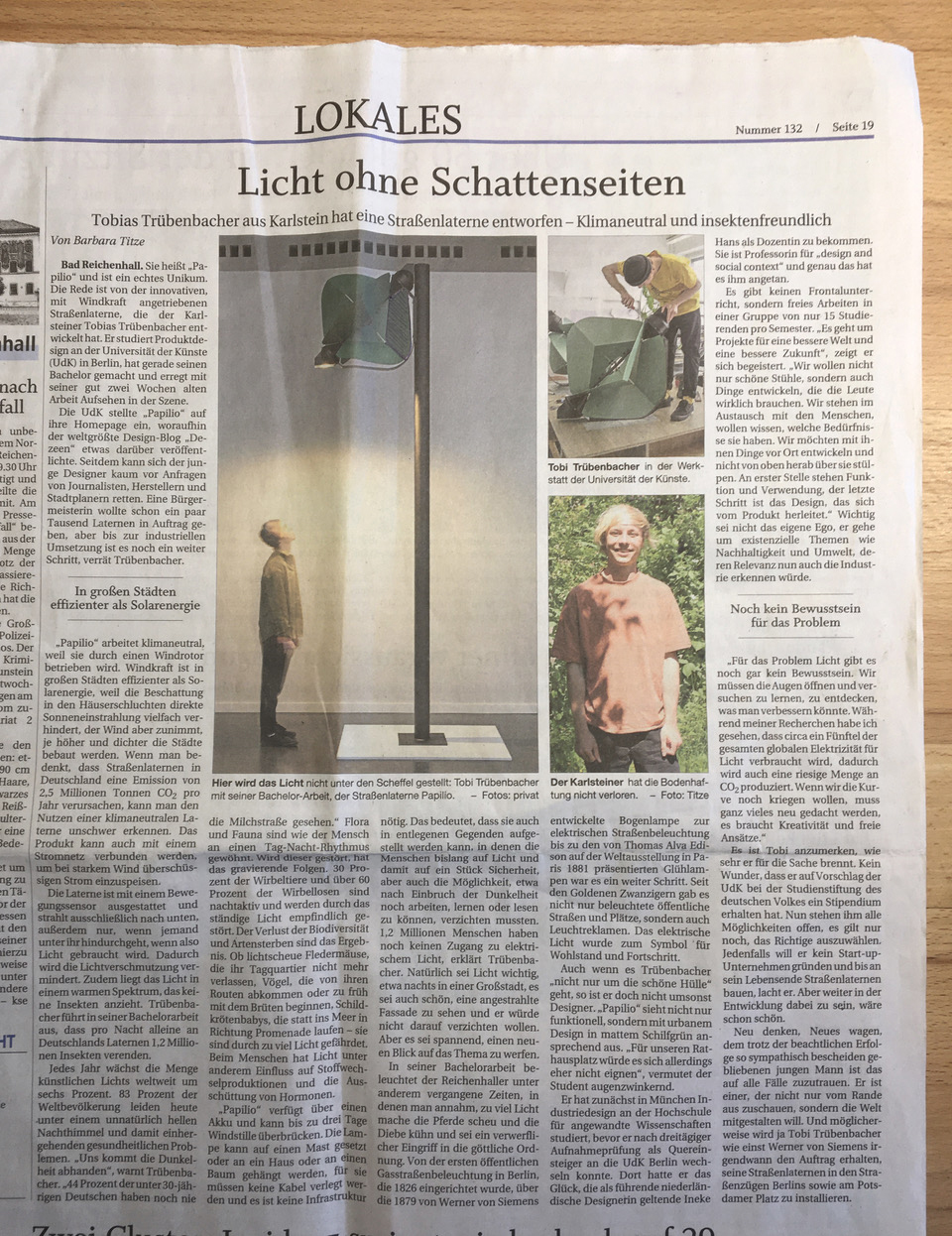
25.7.2021: Tobias Trübenbacher was interviewed by Berliner Zeitung about his Papilio light, design and innovation
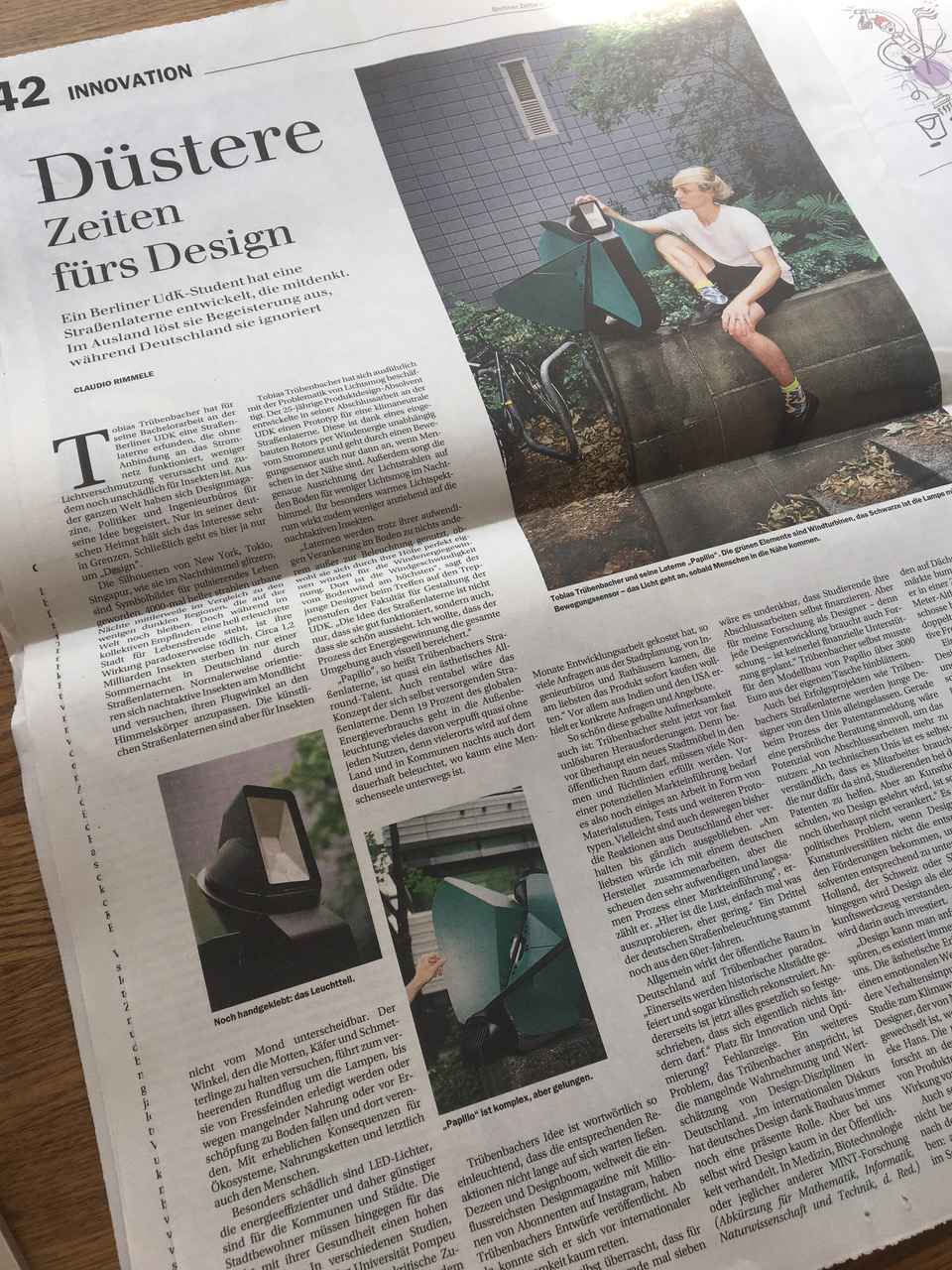
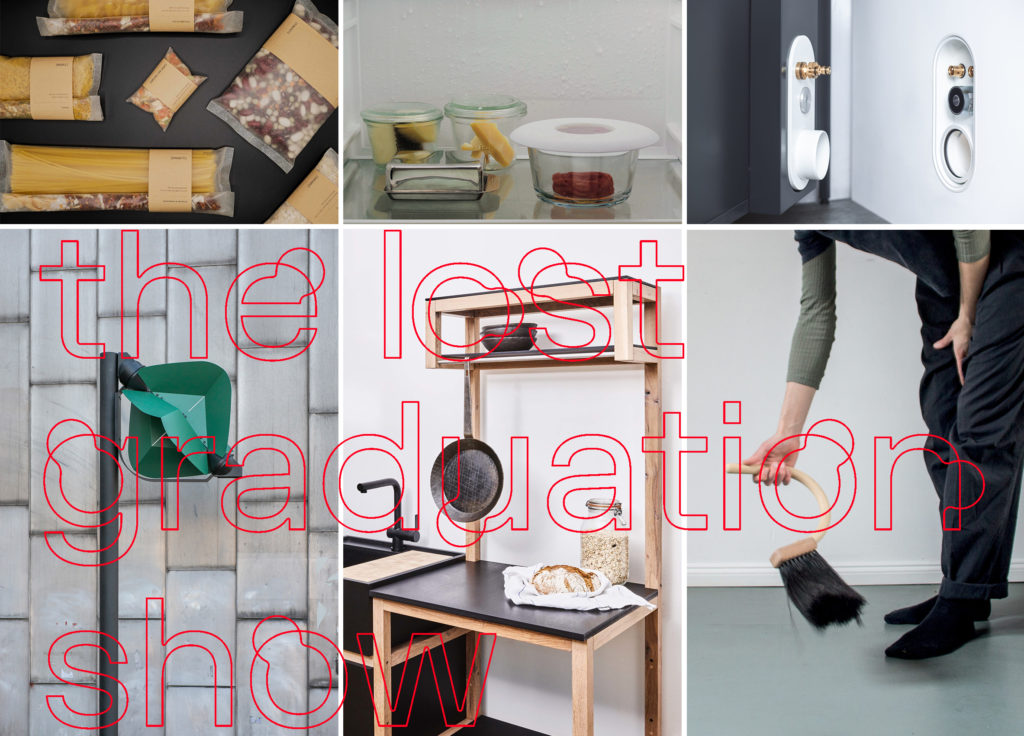
Six UdK graduates are selected for the Lost Graduation Show in Milan that takes part from 5-10 September. The show highlights projects by graduates who did their exams in Corona times. Agnes Kelm, Amelie Graf, Kimia Amir Moazami, Marie Scheurer, Tobi Trübenbacher and Yannik Rohloff will show their degree work at the fairgrounds among a selected group of international graduates.
The selections for the Lost Graduation Show took place under the wings of Designcritic Anniina Koivu, who previously curated the acclaimed U-Joints exhibitions.
The Lost Graduation Show is part of SUPERSALONE that takes place Fiera Milano, a special event at Salons del Mobile 2021, and a new format curated by architect curated by Stefano Boeri.
More on Lost Graduation Show
More on Supersalone
Follow the Lost Graduation Show via Instagram
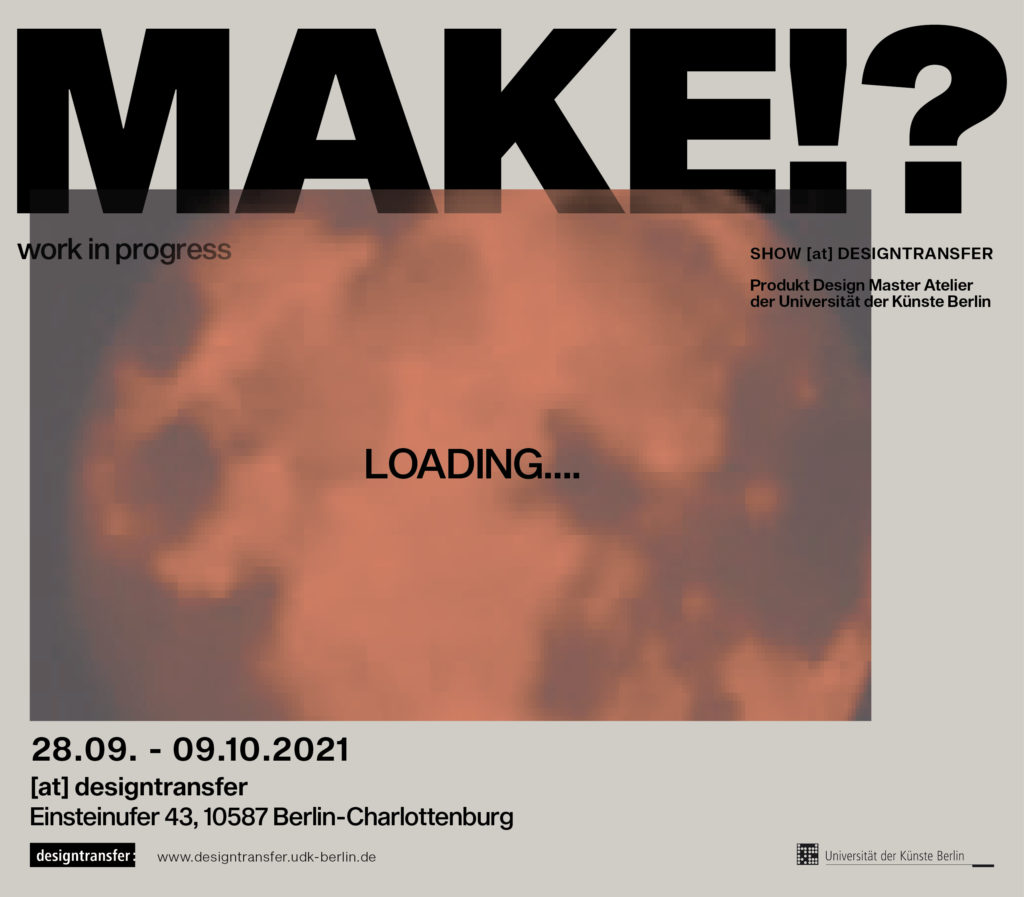
work in progress
In täglicher Umtriebigkeit errichten wir ganze Welten und bringen sie wieder zu Fall, sind stets in Bereitschaft zur Rückschau, beginnen nochmals von vorn und werfen uns gar selbst auf den Scheiterhaufen.
Jedem Schritt wohnt ein neuer Start inne und die Bedeutsamkeit des Zwischendrin blendet Anfang und Ende aus.
In aller Geschäftigkeit vergessen wir fast, dass wie wir den Weg gestalten, zugleich auch unser Leben gestalten.
Die ewige Entwicklung ist unser Schicksal, wir sind „in the making“.
Wir haben gelernt zu akzeptieren, dass nicht jeder Sachverhalt aufgeklärt und nicht alles beendet werden muss.
Gibt es kein Ziel, gibt es kein Werk, das man zu kompensieren versucht – ein erlösender Gedanke.
MAKE ist der Weg, das „Nicht-Lösen“ des Problems, die ewige Fragestellung als immerwährende Herausforderung.
In der Produktdesign-Master-Ausstellung 2021 zeigen wir deshalb einen kollektiven Prozess, ein Zwischenspiel aus fruchtbarer Langeweile und überwindbarer Frustration.
Die Frage am Ende ist nicht „to make or not to make?“,
sondern „what are we making out of it?“
Eröffnung bei der designtransfer Aussenvitrine: Dienstag, 28. September, 19:00 – 21:00
Vitrinenausstellung: 28. September – 31. Oktober, 24/7, Einsteinufer 43
Samstag, 30. Oktober, 15:00 – 18:00:
Meet the Masters bei der Vitrine während dem UdK Rundgang 29. – 31. Oktober, Alle sind willkommen
Risse in Realitäten
Die Rauminstallation „Cracks in Realities“ bricht, verrückt und re-arrangiert Perspektiven auf städtische Szenen. Das mobile Spiegelobjekt sucht nach bewegten ungesehenen und übersehenen Sichtweisen, die sich in gebauten und gelebten Alltäglichkeiten verstecken. Dabei agiert die Installation nicht nur als ein Spiegel des Bestehenden, sondern auch als Infrastruktur, die das Bestehende stört. Sie tut das, indem ein ungeplantes Arrangement entsteht, das Nicht-Zusammengehöriges ineinander schiebt: Im Stadtgrün bricht sich ein Plattenbau, auf vierspurigen Straßen steht ein Baum, durch die Zapfsäule fährt ein Reifen, Gebäude werden verzerrt, Fassaden verschmelzen, Menschen fahren mit ihrem Roller in entgegengesetzte Richtungen, Straßenschilder zeichnen einen Weg auf die Straße, der ins Labyrinth führt.
Durch die Kreisform, die sich auf Rollen bewegt, lässt sich das Objekt um seine eigene Achse drehen – je nach Geschwindigkeit dieser Umdrehung verschmelzen und verschwimmen Umgebungen oder verwackeln und spiegeln sich. Jeder Betrachter und jede Betrachterin sieht durch diese Objekt-Form und je nachdem auf welcher Höhe in die menschengroße Spiegelinstallation geschaut wird, unterschiedliche Szenen, die dynamisch und nicht statisch sind. Es gibt nicht die eine Perspektive auf die Realität der Stadt; es zeigen sich unendliche viele Möglichkeiten von gebauten Szenen, in denen sich Menschen und Natur bewegen. Jede BetrachterIn; jeder Mensch hat seine individuelle Perspektive, die zu unterschiedlichen Realitäten führt.
Cracks in Realities
The spatial installation „Cracks in Realities“ refracts, dislocates and re-arranges perspectives on urban scenes. The mobile mirror object searches for moving unseen and overlooked perspectives hidden in built and lived everyday realities. In doing so, the installation acts not only as a mirror of what exists, but also as an infrastructure that disrupts what exists. It does this by creating an unplanned arrangement that pushes the non-coherent into one another: a prefabricated building breaks in the city green, a tree stands on four-lane roads, a tire drives through the gas pump, buildings are distorted, facades merge, people ride their scooters in opposite directions, street signs draw a path on the road that leads into the labyrinth.
The circular shape, moving on rollers, allows the object to rotate around its own axis – depending on the speed of this rotation, environments merge and blur or reflect. Each viewer sees through this object form and depending on the height at which one looks into
the human-sized mirror installation, different scenes that are dynamic and not static. There is not one perspective on the reality of the city; there are infinite possibilities of built scenes in which people and nature move. Each viewer; each person has their own individual perspective that leads to different realities.
4×250
Ein Problem bei wiederverwendbaren Trinkflaschen ist die Reinigung. Oftmals gibt es nur eine Öffnung und man gelangt nur schwierig in das Innere der Flasche. Zufolge hat dies, dass die Flasche am Ende nur eine begrenzte Lebensdauer hat und doch ausgetauscht werden muss. Diese Problematik wurde Im Rahmen des Projektes, In Bewegung, durch das Multiplizieren des Schraubsystems gelöst.
4×250 besteht aus 4 Hauptkomponenten, die miteinander verschraubt werden können. Auseinandergeschraubt sind die Einzelteile einfach zu reinigen. Zusammengeschraubt, kann der Nutzer die Größe der Flasche, durch die Anzahl der genutzten Komponenten, selbst bestimmen (min. 500ml – max. 1000ml). Durch gummierte Gewinde sind keine zusätzlichen Dichtungsringe nötig.
4×250
One problem with reusable drinking bottles is the cleaning part. Often there is only one opening and it is difficult to get inside the bottle. As a result, the bottles ultimately have a limited lifespan. This problem was solved in the context of the project, in Bewegung, by multiplying the screw system.
4×250 consists of 4 main components that can be screwed together. The individual parts are easy to clean when unscrewed. When screwed together, the user can determine the size of the bottle by the number of components used (min. 500ml – max. 1000ml). No additional sealing rings are necessary due to the rubberized thread.
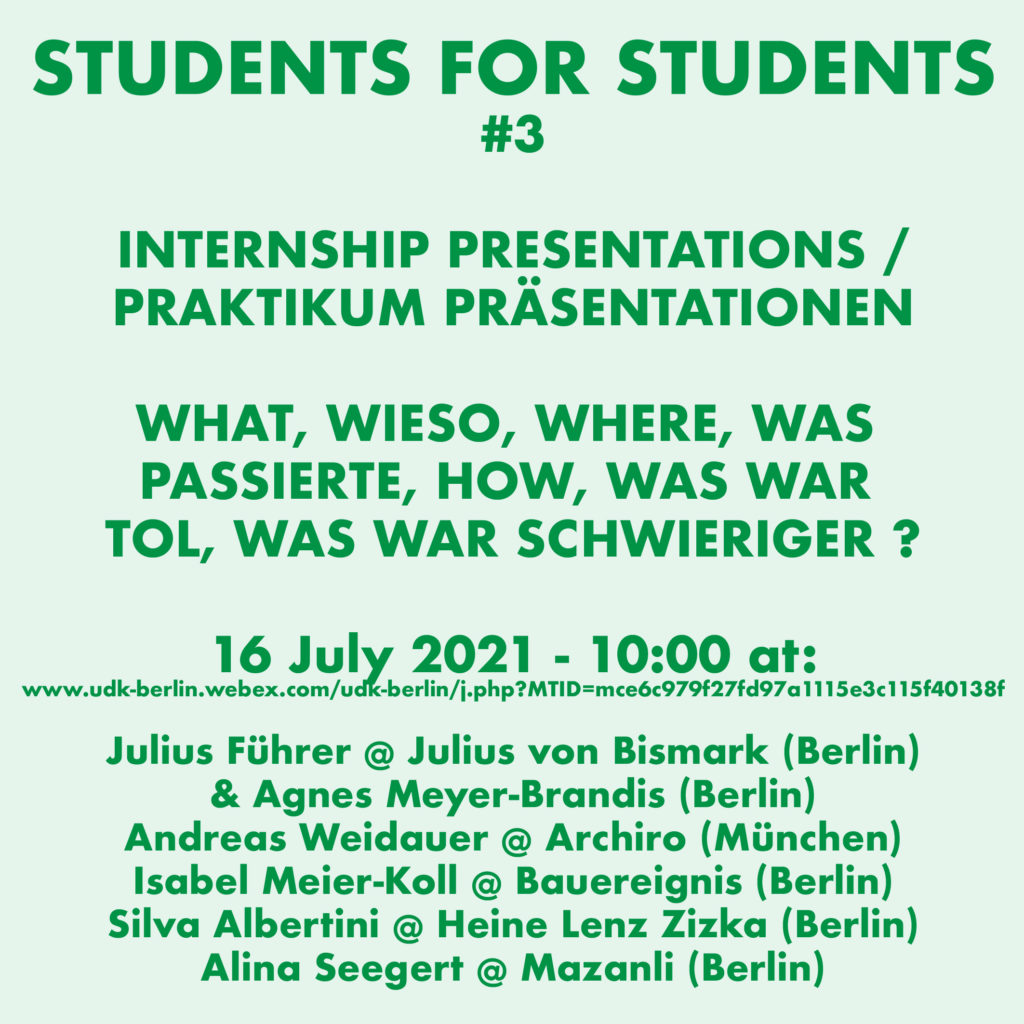
Produkt Design Students have internships. After an earlier presentation there will be an online presentation of students that present their whereabouts and the do and don’ts for internships: where were they, what did you do there, what was super and not so super, what did they learn, what can they advise, what was the overall experience, did you get paid, etc…
FRIDAY 16 July 10:00 via:
https://udk-berlin.webex.com/udk-berlin/j.php?MTID=mce6c979f27fd97a1115e3c115f40138f

Sexualisierte Diskriminierung und Gewalt am Arbeitsplatz sind keine Ausnahmeerscheinung. Laut einer Umfrage der Antidiskriminierungsstelle des Bundes aus dem Jahr 2015 hat jede zweite befragte Person sexualisierte Diskriminierung und Gewalt am Arbeitsplatz erlebt. Ähnlich berichten 51% aller Studentinnen an deutschen Hochschulen, dass sie Erfahrungen mit sexualisierter Diskriminierung und Gewalt gemacht haben.
Das Büro der Frauenbeauftragten hat eine Broschüre erarbeitet, die über sexualisierte Diskriminerung und Gewalt informiert und Handlungswege aufzeigt, Diskriminierung und Gewalt zu begegnen.
Die Broschüre ist in elektronischer Form HIER erhältlich.
Sexualized discrimination and violence in the workplace are not exceptional. According to a 2015 survey by the German Federal Anti-Discrimination Agency, every second person surveyed has experienced sexualized discrimination and violence in the workplace. Similarly, 51% of all female students at German universities report having experienced sexualized discrimination and violence.
The Office of the Women’s Representative has developed a brochure that provides information about sexualized discrimination and violence and shows ways to take action to counter discrimination and violence.
Electronic copies of the brochure are available HERE.
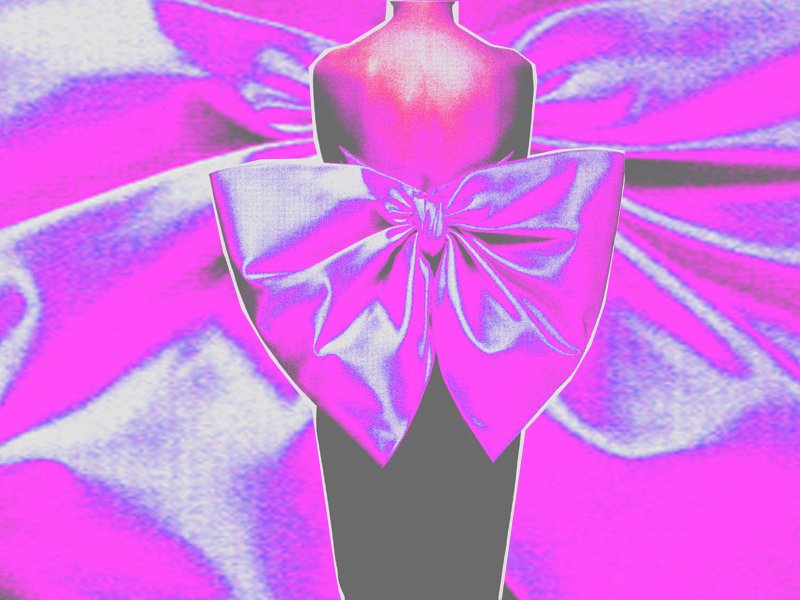
G.I.F.T. // WS 20/21 // Design project form 3th Semester
Giving is art. Giving is culture. Giving is one of the oldest cultural techniques of mankind for the purpose of socialization, for establishing relationships in societies. In his 1923/1924 essay on the gift, the French sociologist Marcel Mauss discusses the riddle of the cultural practice of giving being a “hybrid mixture of gift and economy, of generosity and self-interest, voluntariness and coercion”. Isn’t fashion also a “hybrid mixture of gift and economy, of generosity and selfishness, voluntariness and coercion”?
In this project, fashion and clothing were explored in their various dimensions of identity constructions, and empathy was learned as an essential tool for user-oriented design. The relationships between artistic expression and service, between risk and comfort, between anticipation and reproduction, between sensuality, meaning and meaningfulness were explored.
The participants had the task to make a person of their choice a present with an outfit. The students also developed a specific textile print in screen printing techniques and a conceptual fragrance.
Lecturer: Prof. Franziska Schreiber, KM Alexandra Börner , Stefan Hipp, Dorothée Warning
Guests: Christian Frank Müller &Klara Ravat (smell lab)
Students: Haleh Afshar, Andreas Soyka, Dominik Hurni, Emely Zanon, Lara Geyer, Lenard Schnitzler, Melanie Schill, Michael Siewike, Minji Park, Miriam Schade, Philine Beutel, Philip Welp, Tim Keuschnig, Titja Grefe
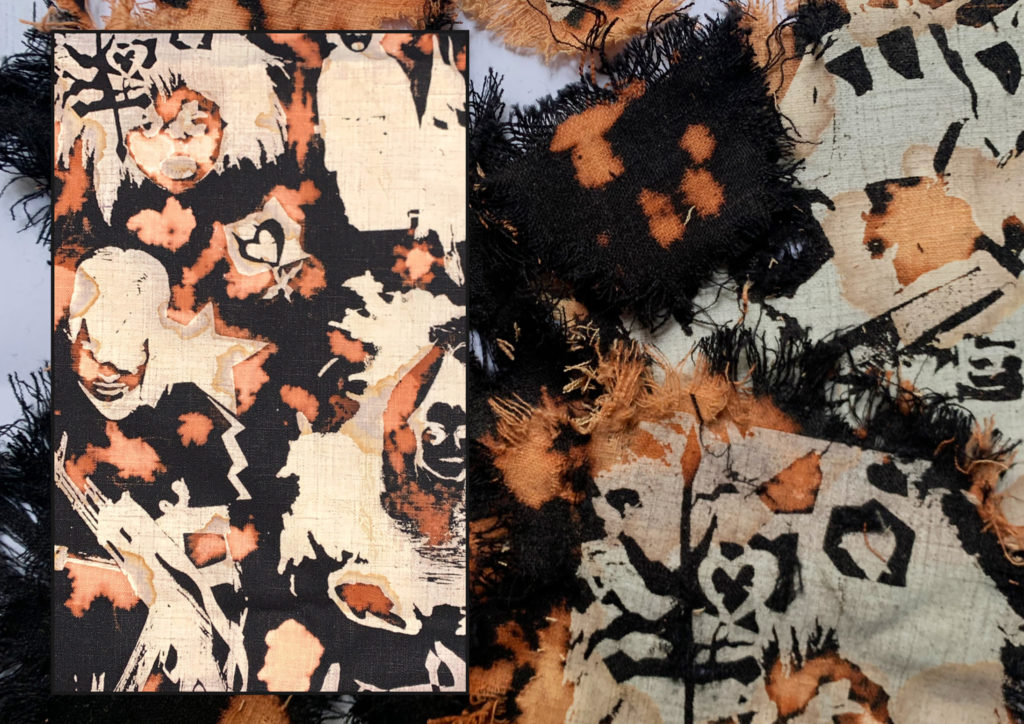
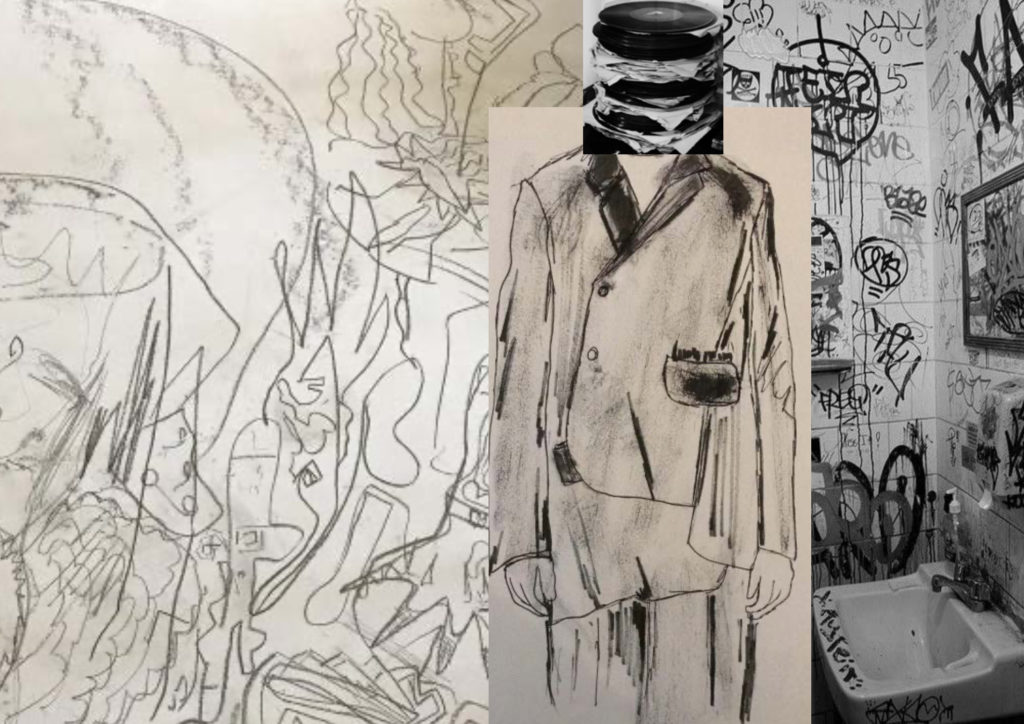
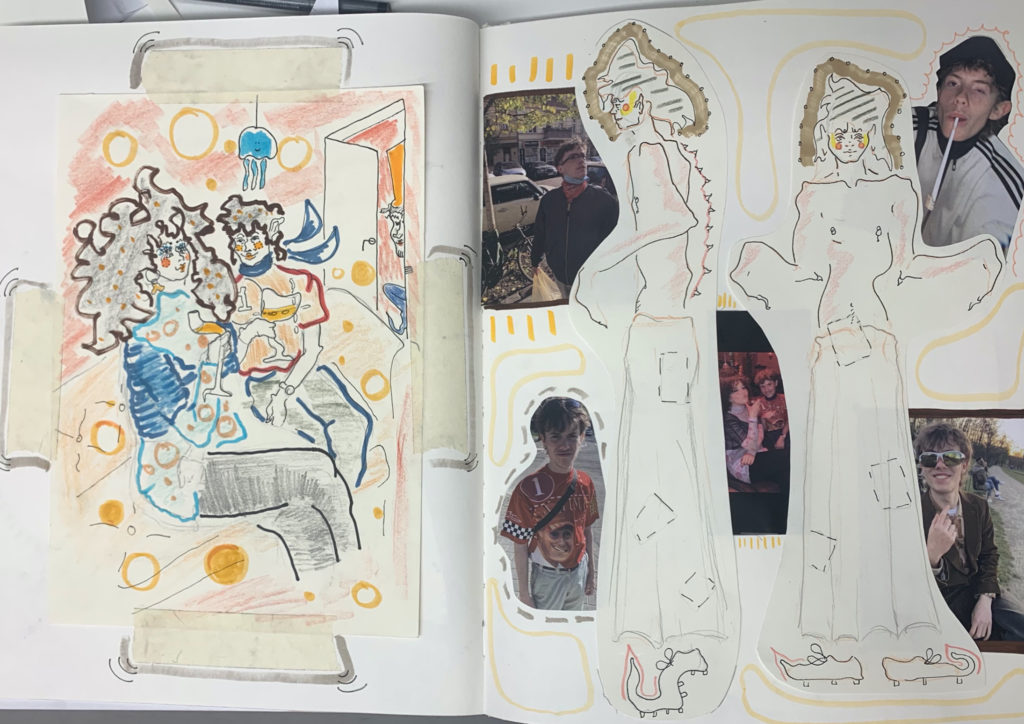
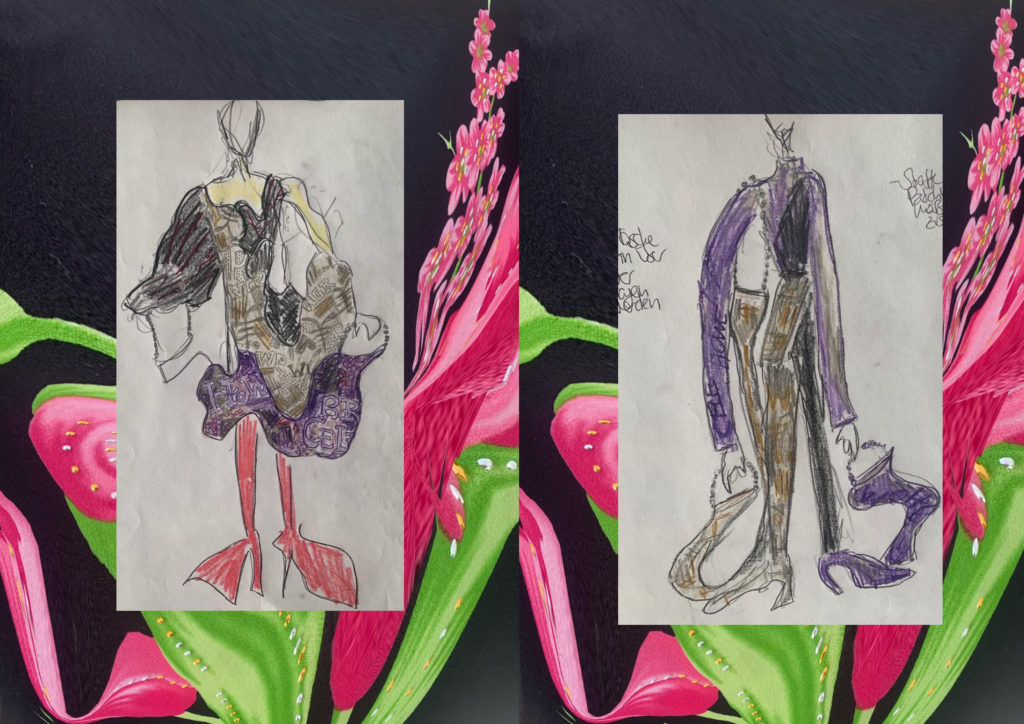
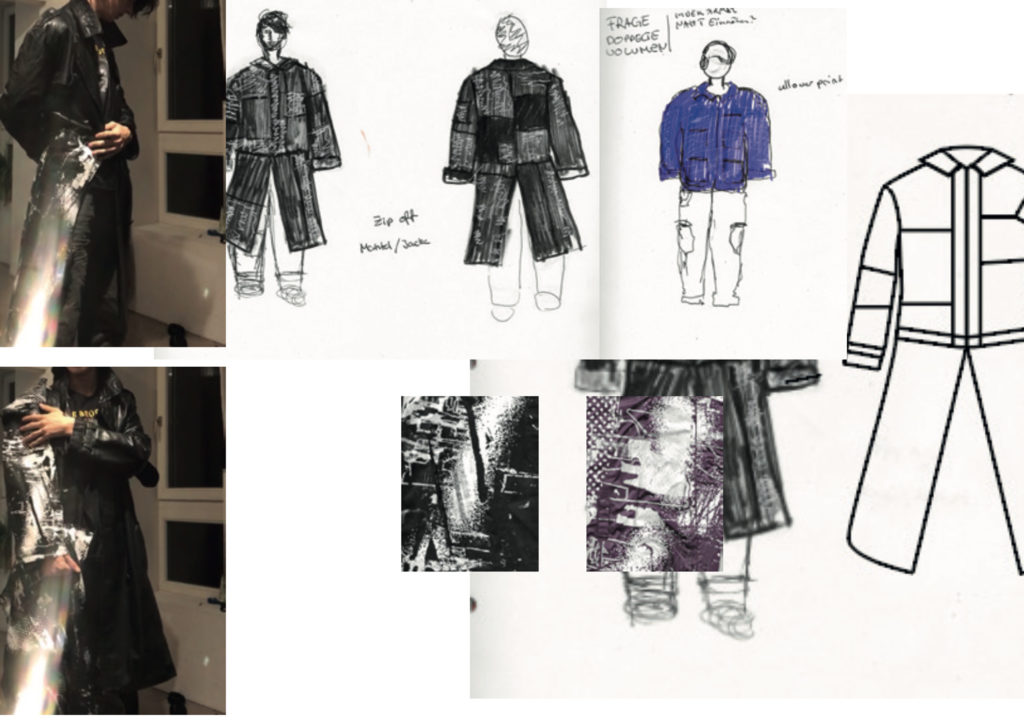
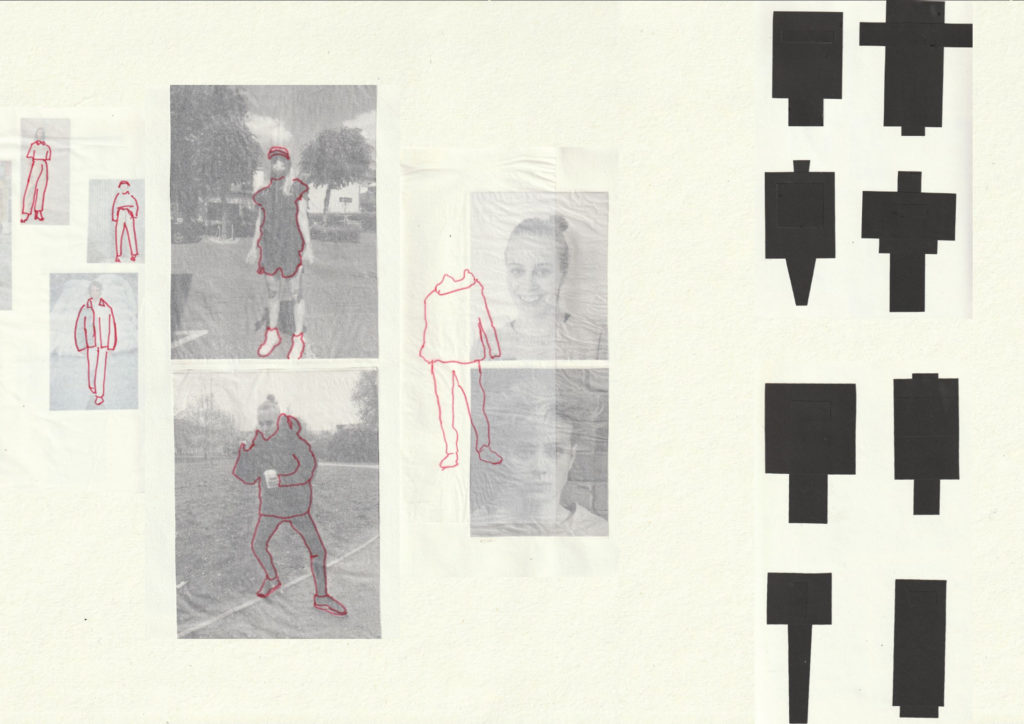
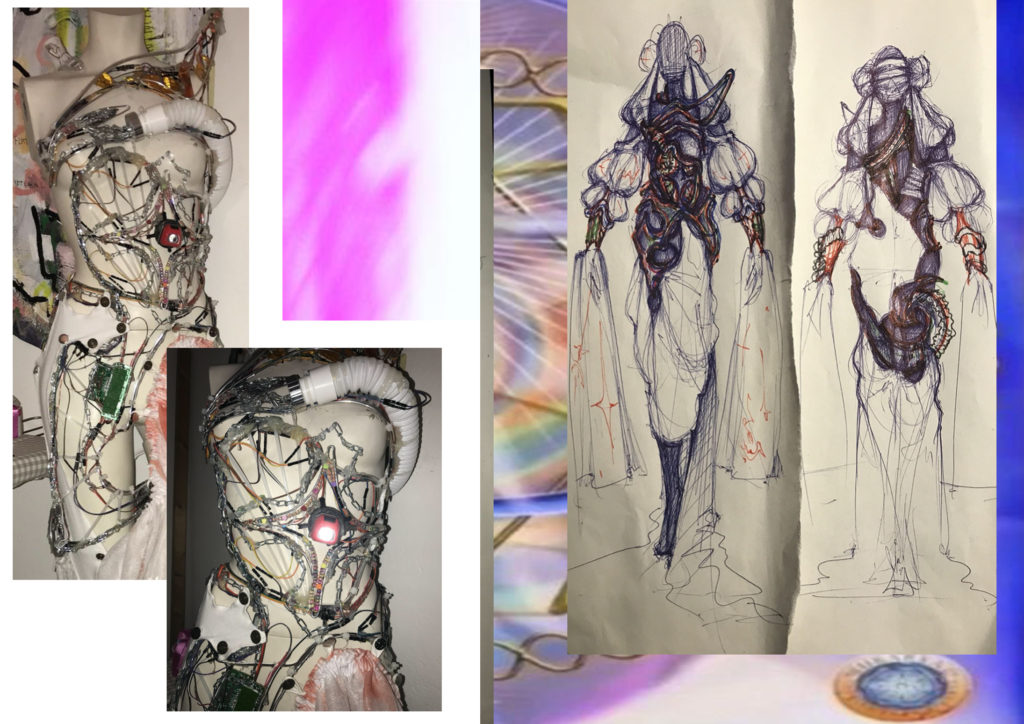
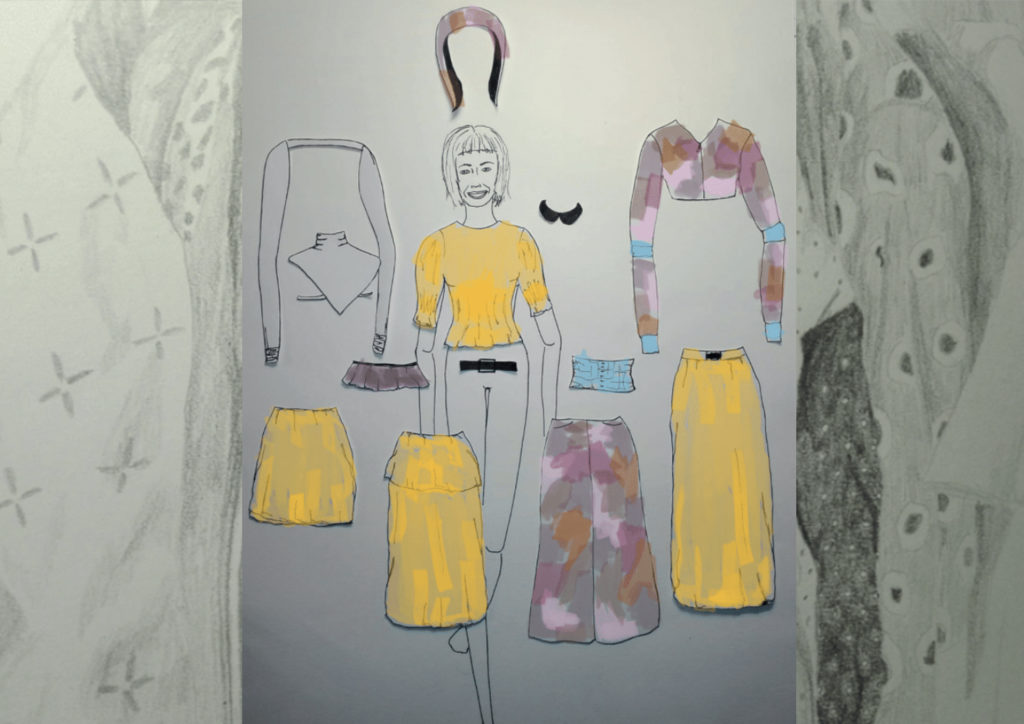
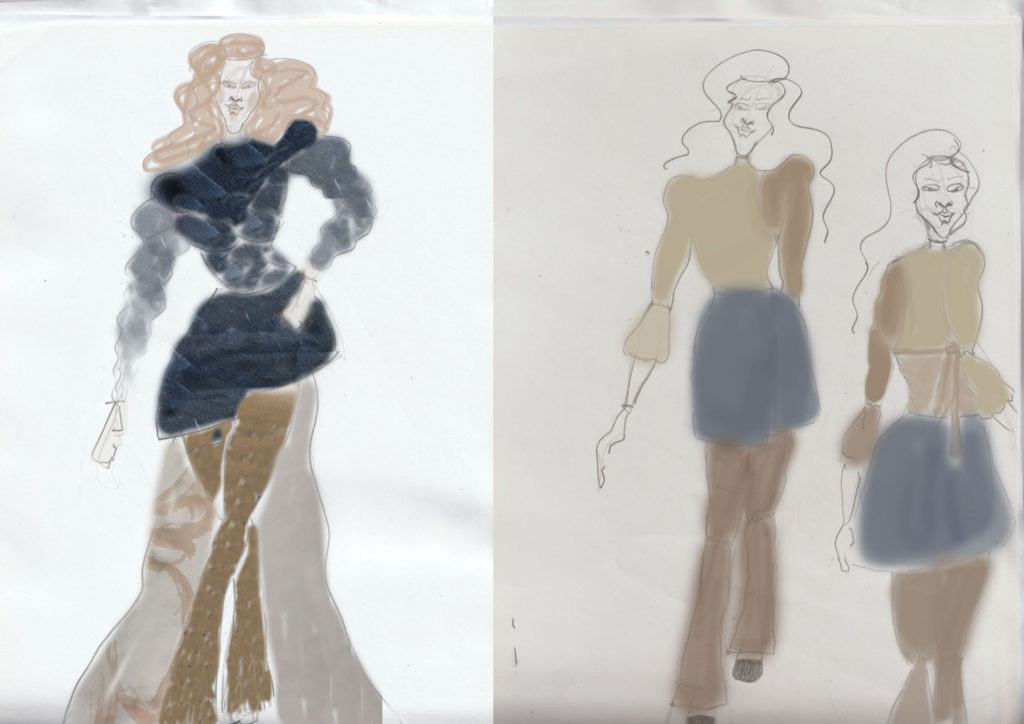
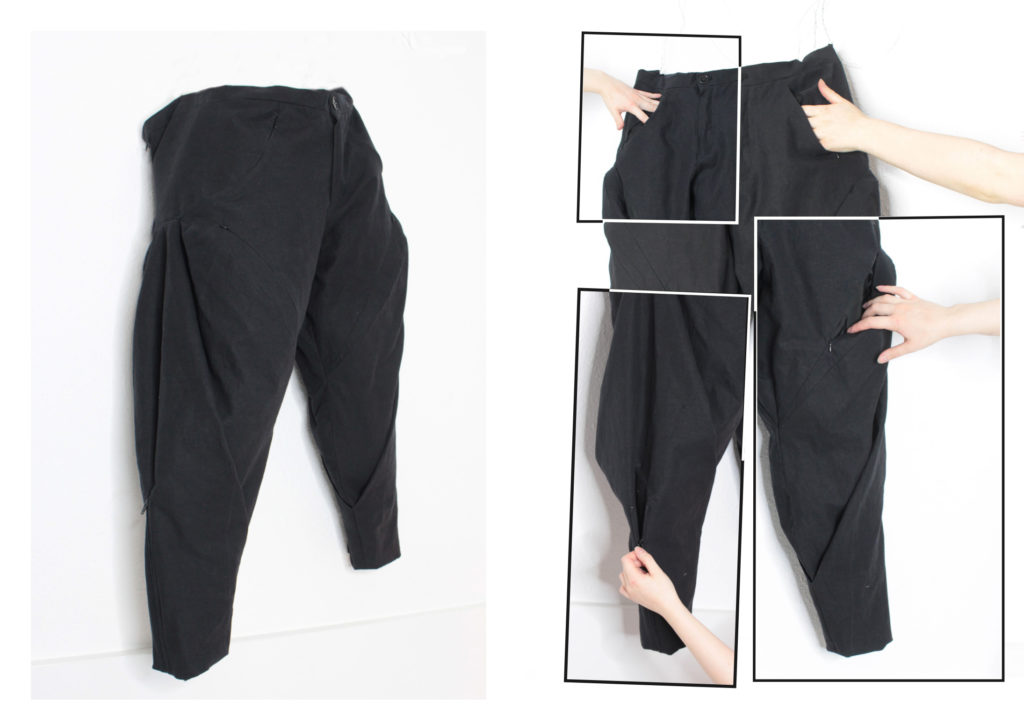

Teil des designtransferdemokratie.blog
„Exercises for / in Exchange“ ist ein Experiment des Austauschs zwischen Studierenden der Universität der Künste Berlin und der weissensee kunsthochschule berlin: Da pandemiebedingt das Studium auch im Sommersemester 2021 kaum mehr in den Räumen der Hochschulen stattfindet, gilt es die Möglichkeiten des Digitalen produktiv zu machen und gemeinsame, hochschulübergreifende Räume zu schaffen.
Im ersten Teil des Workshops wurde zunächst ein digitaler Austausch über Perspektiven angestossen – ob aus dem Fenster oder auf das Studium blickend; verschiedene Formen der Vorstellung wurden erprobt; gestaltend wurde geteilt – einen Kaffee, eine Idee oder auch Frustrationen und Zweifel. Anschließend entwickelten Gruppen aus dem gemeinsam generierten Material typografische Ideen und bereiteten diese zur räumlichen Inszenierung auf. Der finale Teil des Kurses widmete sich dann der Produktion vor Ort, nicht an Bildschirmen, sondern an den Glasscheiben der Ausstellungsvitrine des designtransfers.
So entstand ein Raum, der das Nachdenken über Formen der Verbindungen anregt; der gemeinsame Erfahrungen der Onlinelehre poetisch befragt und typografisch visualisiert; der individuelle Perspektiven kollektiv verortet und auf vielfältige Weise zur Interaktion anregt.
Zeitraum des Kurses: 26.5. – 11.6.2021
Fotos: Mattia Friso
Studierende: Nour Al Safadi, Kseniya Apresian, Yan Chmarau, Hannah Corbaz, Victoria Fechtner, Jonas Gerber, Lisa Grafe, Ben van Heyden, Cäcilie Hoff, Hyuntae Jung, Karola Kulcsár, Jette Kulicke, Lucille Küpferle, Marius Kurz, Raviva Nsiama, Christian Pasqual, Aisha Ramm, Yael Rathjens, Araiké Severino, Inyeong Song, Alissa Schaaf, Lea Verholen Schmitt, Lucia Schmitz, Jakob Erek Sen, Yewon Seo, Antonia Leonie Steinbrink, Taro Usami, Magdalena Weber, Joanna Zvonar
Lehrende: Henrike Uthe (UdK Berlin) & Stefanie Rau (weissensee kunsthochschule berlin)
Mit finanzieller Unterstützung der UdK Frauenförderung
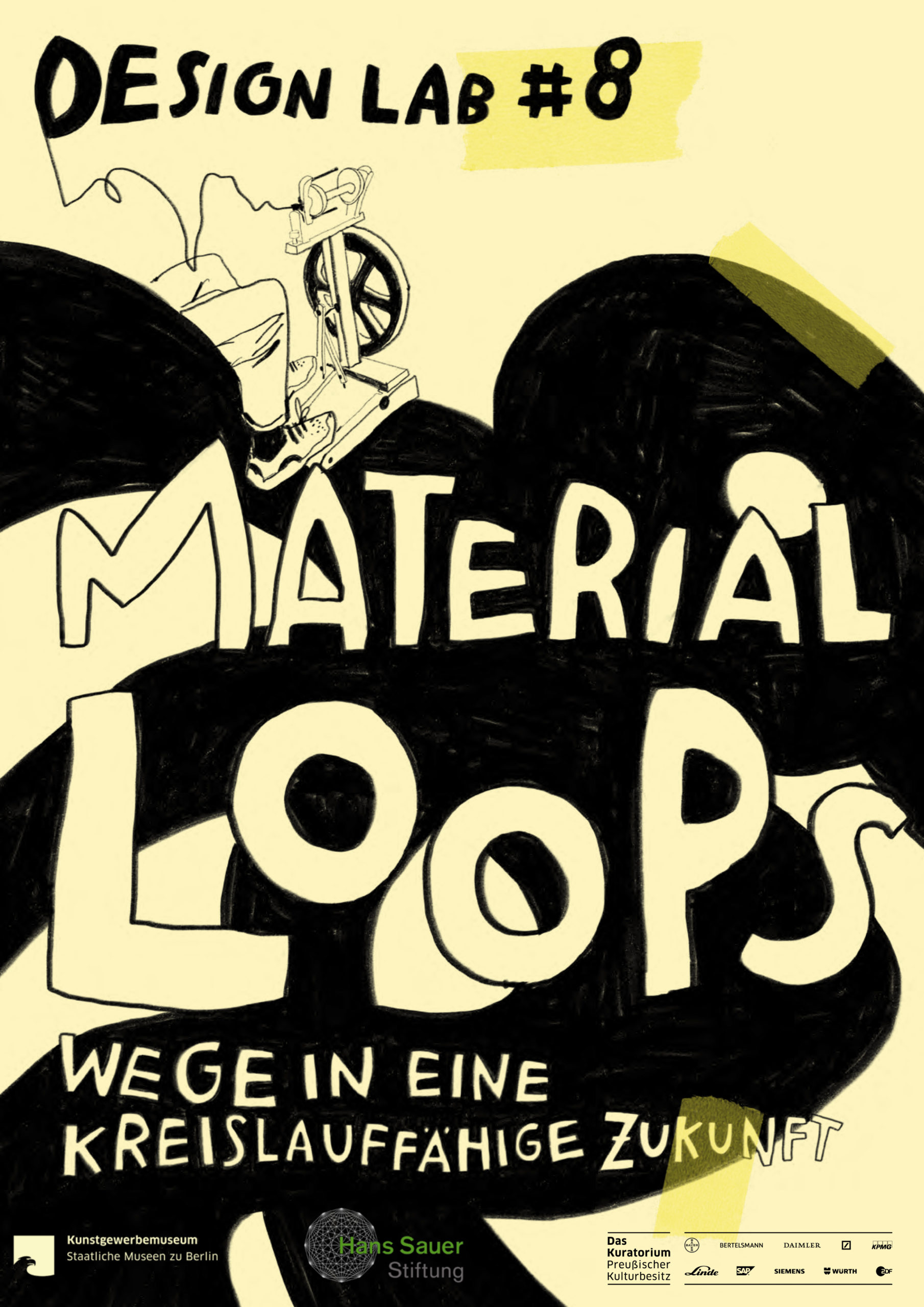
Eine Sonderausstellungsreihe des Kunstgewerbemuseums – Staatliche Museen zu Berlin in Kooperation mit der Hans Sauer Stiftung:
Die Zukunft ist zirkulär – dieser Vision folgend präsentiert die achte Ausgabe des Design Labs im Kunstgewerbemuseum zukunftswei-sende Designprojekte, die das Potenzial von zirkulärem Material wi-derspiegeln. Das Netz von beteiligten Akteur*innen spannt sich von Berlin aus über Deutschland bis nach Italien zur Circular City Prato, die als Gast im Design Lab #8 vertreten ist. Anlässlich der Ausstellung erscheint ein digitaler Reader.
Unterteilt in die sechs Themenschwerpunkte: Loops from the Collection, Places for Looping Materials, Plastic Loops, Fashion Loops, Waste Loops und Speculating Loops präsentiert Design Lab #8 eine Auswahl an Produkten und Designprojekten, die von einigen in der Industrie bereits implementierten Materialien und Best-Practice-Beispielen bis hin zu experimentellen Arbeiten reicht. Ein besonderer Fokus liegt auf den Arbeiten der Designstudierenden, den Gestalter*innen der Zukunft.
Die Gesamtheit der ausgewählten Projekte und ihrer Narrative verdeut-licht, dass kreislauffähiges Material ein essentieller Bestandteil einer zu-kunftsfähigen, nachhaltig denkenden und handelnden Gesellschaft – einer Circular Society – ist. Die Ausstellung vermittelt auf anschauliche Weise, dass unser aktuelles Konsumverhalten nach dem Muster „take, make, waste“ der Vergangenheit angehören muss, und dass wir unsere Res-sourcen mit mehr Sorgfalt benutzen und deren Einsatz sorgfältiger in ei-nen Gestaltungs- und Planungsprozess einbinden sollten.
Die italienische Circular City Prato, die als Gast in das Design Lab#8 ein-geladen wurde, ist ein gutes Beispiel für die Umsetzung eines ganzheitli-chen, kreislauforientierten Ansatzes auf städtischer Ebene. Denn Städte bergen aktuell und auch in Zukunft doch das größte Transformationspo-tenzial.
Zur Ausstellung erscheint ein digitaler Reader in Deutsch und Englisch zum Download mit Statements verschiedener Akteur*innen. Alle an der Ausstellung beteiligten Designer*innen werden darin mit ihren Projekten vorgestellt.
Das Kunstgewerbemuseum und die Hans Sauer Stiftung laden anlässlich des Starts der Ausstellung zur digitalen Eröffnung ein: Am Donnerstag, den 10. Juni 2021, von 17 bis 18 Uhr geben Projektpartner*innen und beteiligte Designer*innen über Zoom erste Einblicke in die Ausstellung und die dort gezeigten Exponate. Es folgt ein Videorundgang durch die Ausstellung. Im Anschluss gibt es Raum für Fragen und Austausch.
Grußwort
Sabine Thümmler Kunstgewerbemuseum – Staatliche Museen zu Berlin
Ralph Boch Hans Sauer Stiftung
Einführung
Claudia Banz Kunstgewerbemuseum – Staatliche Museen zu Berlin
Barbara Lersch Hans Sauer Stiftung
Kaja Ninnis Kunstgewerbemuseum – Staatliche Museen zu Berlin
Insights
Alessandro Colombo (Rèco Festival, Prato)
José Hendo (Modedesignerin, London)
Tobias Trübenbacher (Universität der Künste Berlin)
Ina Turinsky (Kunsthochschule Burg Giebichenstein Halle)
Nicholas Plunkett (Kunsthochschule Weißensee)
Die Veranstaltung findet auf Deutsch und Englisch statt. Interessierte können mit der Meeting-ID 996 2163 4903 und dem Kenncode 262932 unter folgendem Zoom-Link an der Veranstaltung teilnehmen.
Coronabedingt kann sich die geplante Laufzeit der Ausstellung kurzfristig ändern. Der Besuch ist derzeit ohne tagesaktuelles, negatives Schnell-testergebnis möglich. Zeitfenstertickets sollten weiterhin vorab online ge-bucht werden: www.smb.museum/tickets
A special exhibition series by the Kunstgewerbemuseum – Staatliche Museen zu Berlin in cooperation with the Hans Sauer Foundation:
The future is circular – following this vision, the eighth edition of the Design Lab at Berlins Kunstgewerbemuseum presents forward-looking design projects that reflect the potential of circular material. The network of participating actors stretches from Berlin across Germany to Italy to the Circular City Prato, which is represented as a guest in Design Lab #8. A digital reader will be published on the occasion of the exhibition.
Divided into the six main themes: Loops from the Collection, Places for Looping Materials, Plastic Loops, Fashion Loops, Waste Loops and Speculating Loops, Design Lab #8 presents a selection of products and Design projects ranging from some materials already implemented in industry and best practice examples to experimental works. A special focus is on the work of Design students, the designers of the future.
The exhibition will be accompanied by a digital reader in German and English for downloading with statements by various actors. All the designers involved in the exhibition and their projects are presented in it.
The Kunstgewerbemuseum and the Hans Sauer Foundation invite you to the digital opening of the exhibition: On Thursday, 10 June 2021, from 5 to 6 pm, project partners and participating designers will give first insights into the exhibition and the exhibits. This will be followed by a video tour of the exhibition. Afterwards, there will be space for questions and exchan-ge.
Welcome
Sabine Thümmler Kunstgewerbemuseum – Staatliche Museen zu Berlin
Ralph Boch Hans Sauer Stiftung
Introduction
Claudia Banz Kunstgewerbemuseum – Staatliche Museen zu Berlin
Barbara Lersch Hans Sauer Stiftung
Kaja Ninnis Kunstgewerbemuseum – Staatliche Museen zu Berlin
Statements
Alessandro Colombo (Rèco Festival, Prato)
José Hendo (Fashiondesigner, London)
Tobias Trübenbacher (Universität der Künste Berlin)
Ina Turinsky (Kunsthochschule Burg Giebichenstein Halle)
Nicholas Plunkett (Kunsthochschule Weißensee)
The event will be held in German and English via Zoom. Interested parties can attend the event with the meeting ID 996 2163 4903 and the identifi-cation code 262932 following this link.
Due to the current pandemic situation the dates of the exhibition may change at short notice. Please visit our website for up to date information: www.smb.museum
More info via Hans Sauer Stiftung
with links to the English and German readers
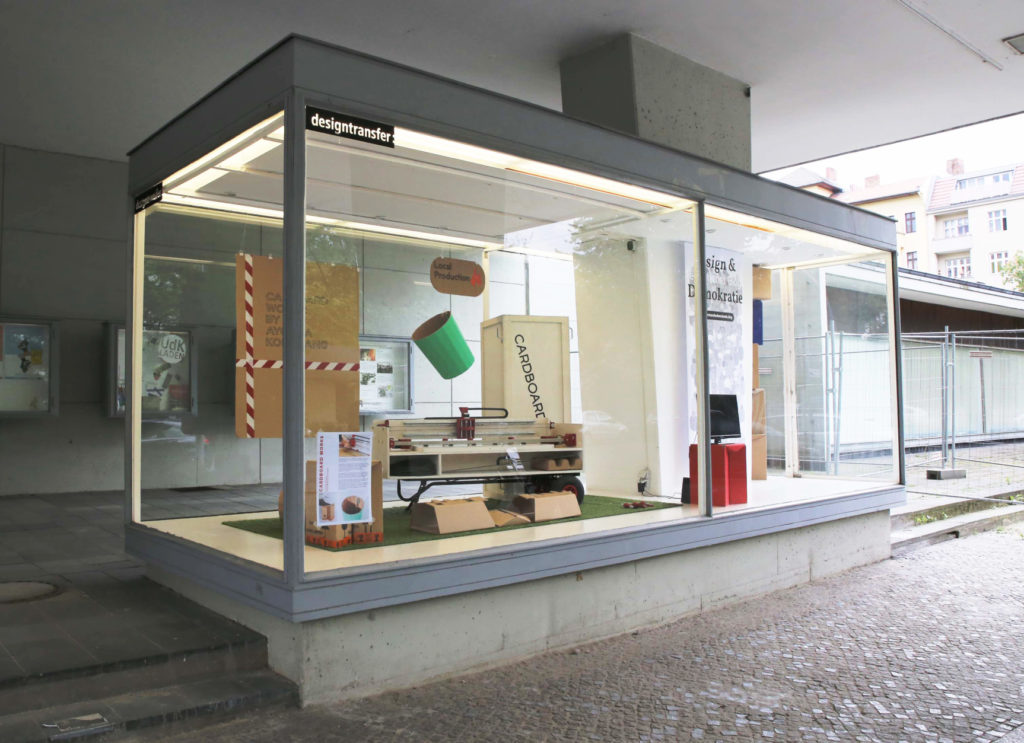
In the summer semester 2021, UdK’s designtransfer continues its activities and public exchange and discourse mainly online in the blog Design & Demokratie, and…. the design transfer vitrine showcases projects that contribute to the topic.
From 19 May till 9 June recent graduate and co-founder of THF Radio and Torhaus Berlin Ayosha Kortlang shows CARDBOARD WORKS in the vitrine: a machine for the democratization of means of production and for the local recycling of residual materials.
see more: Vitrine Einsteinufer 43
read more: Ayosha’s blog contribution
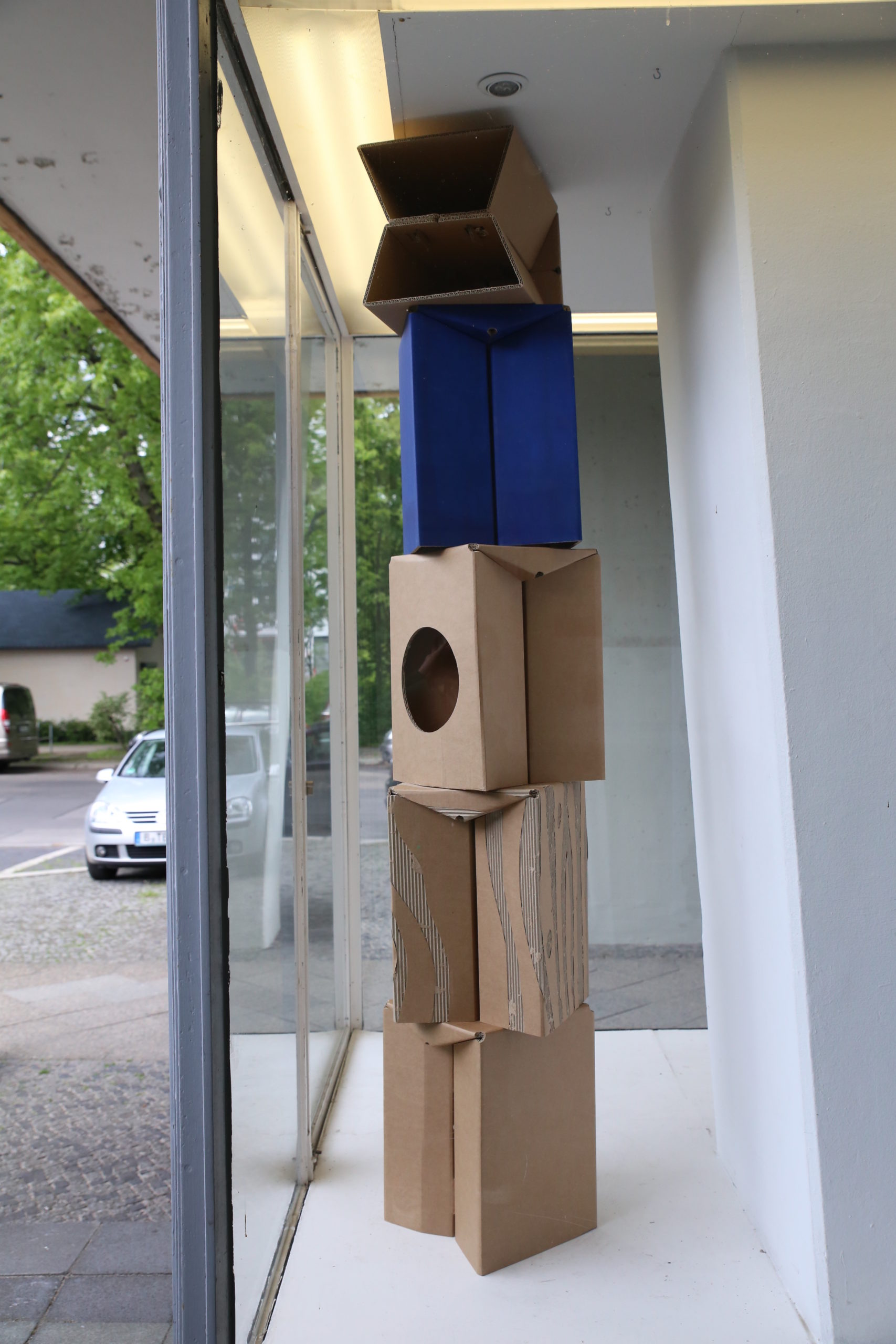
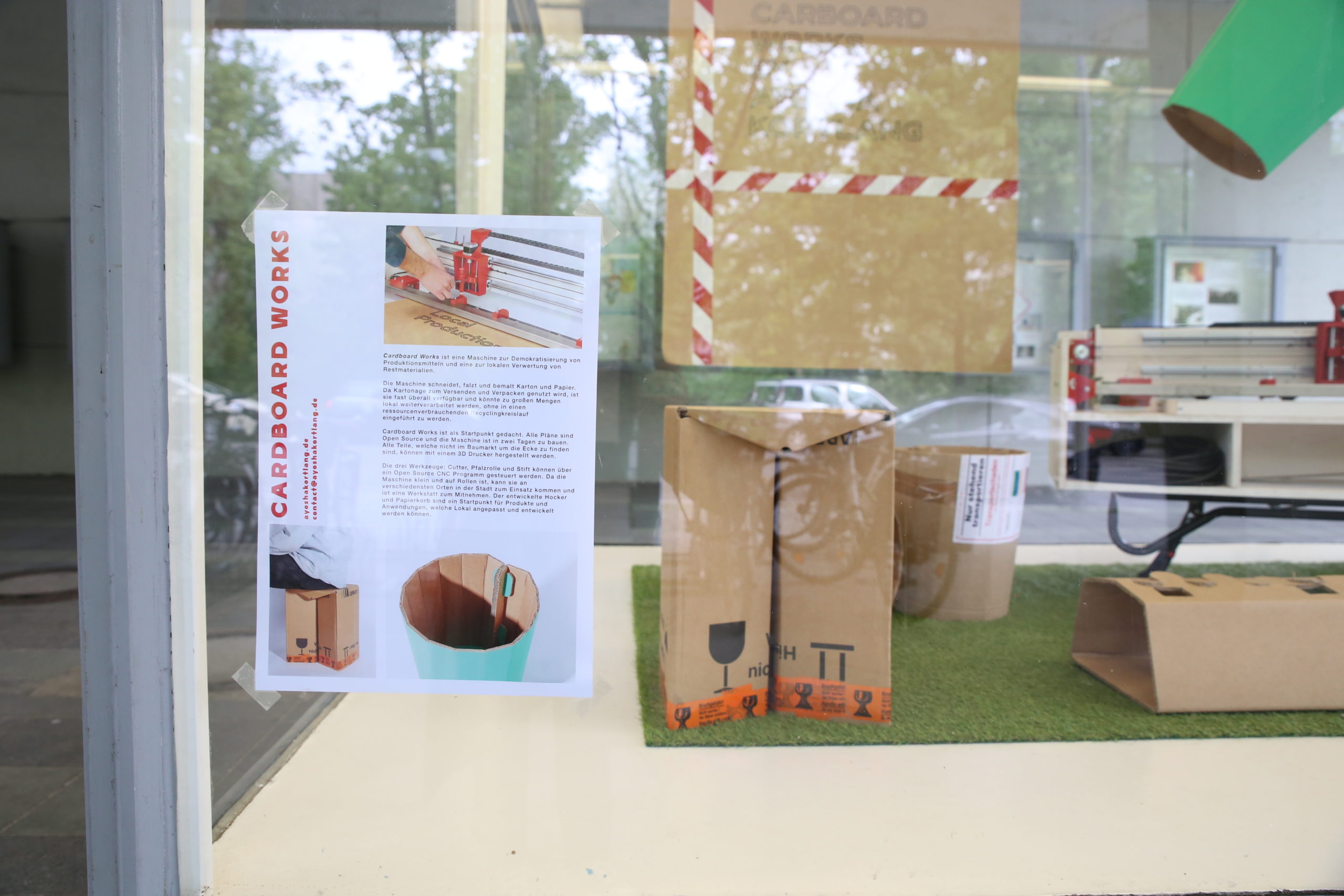
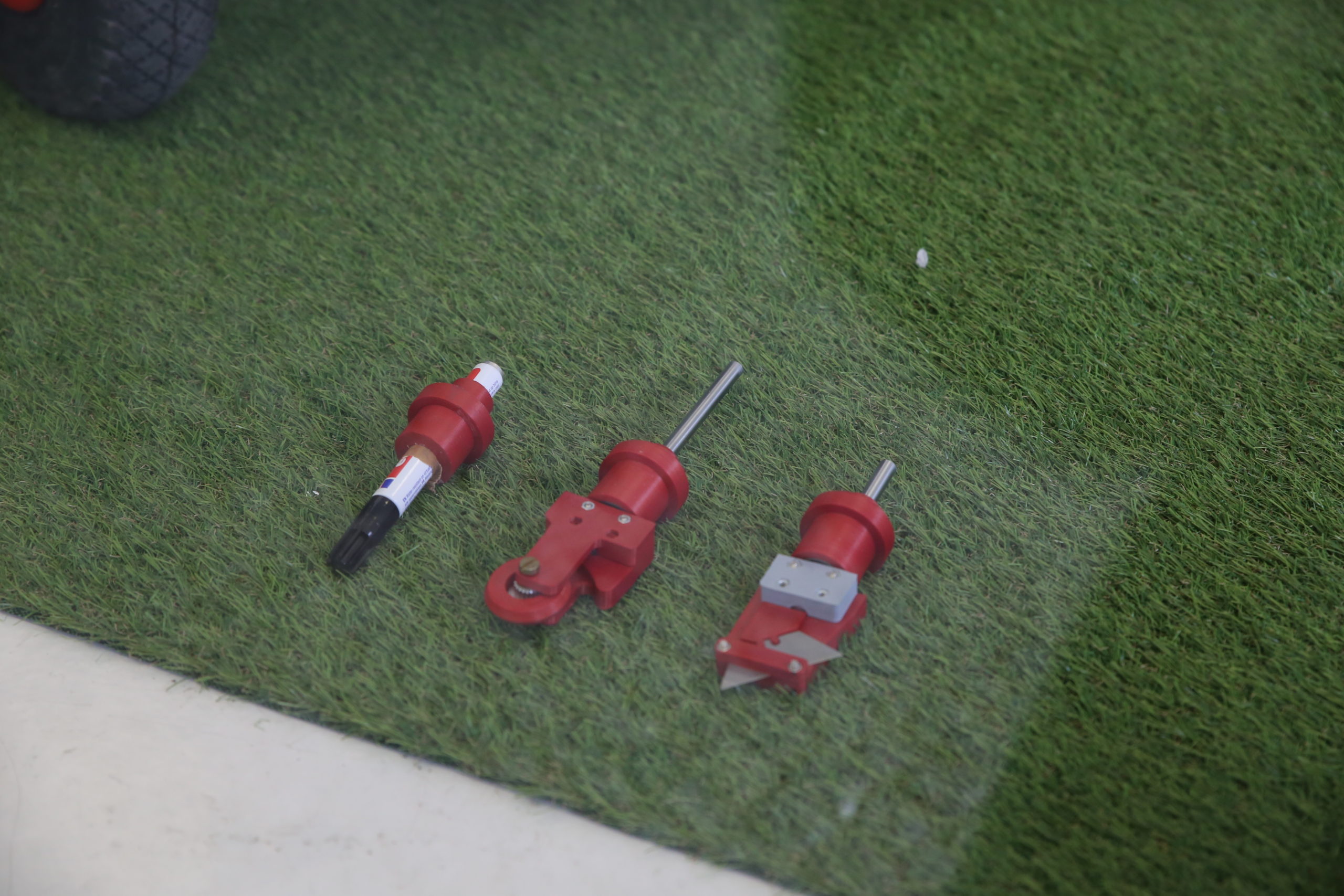
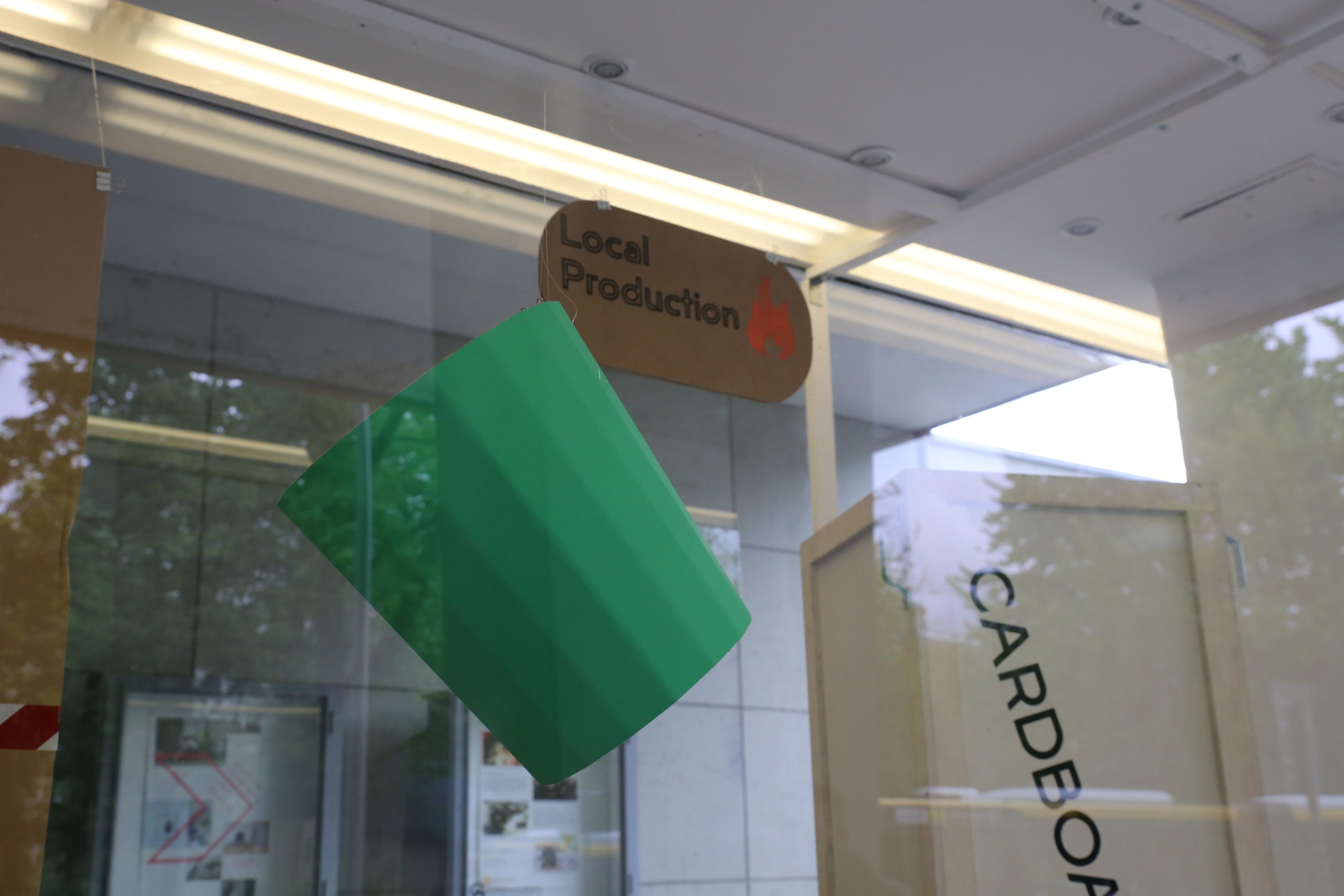
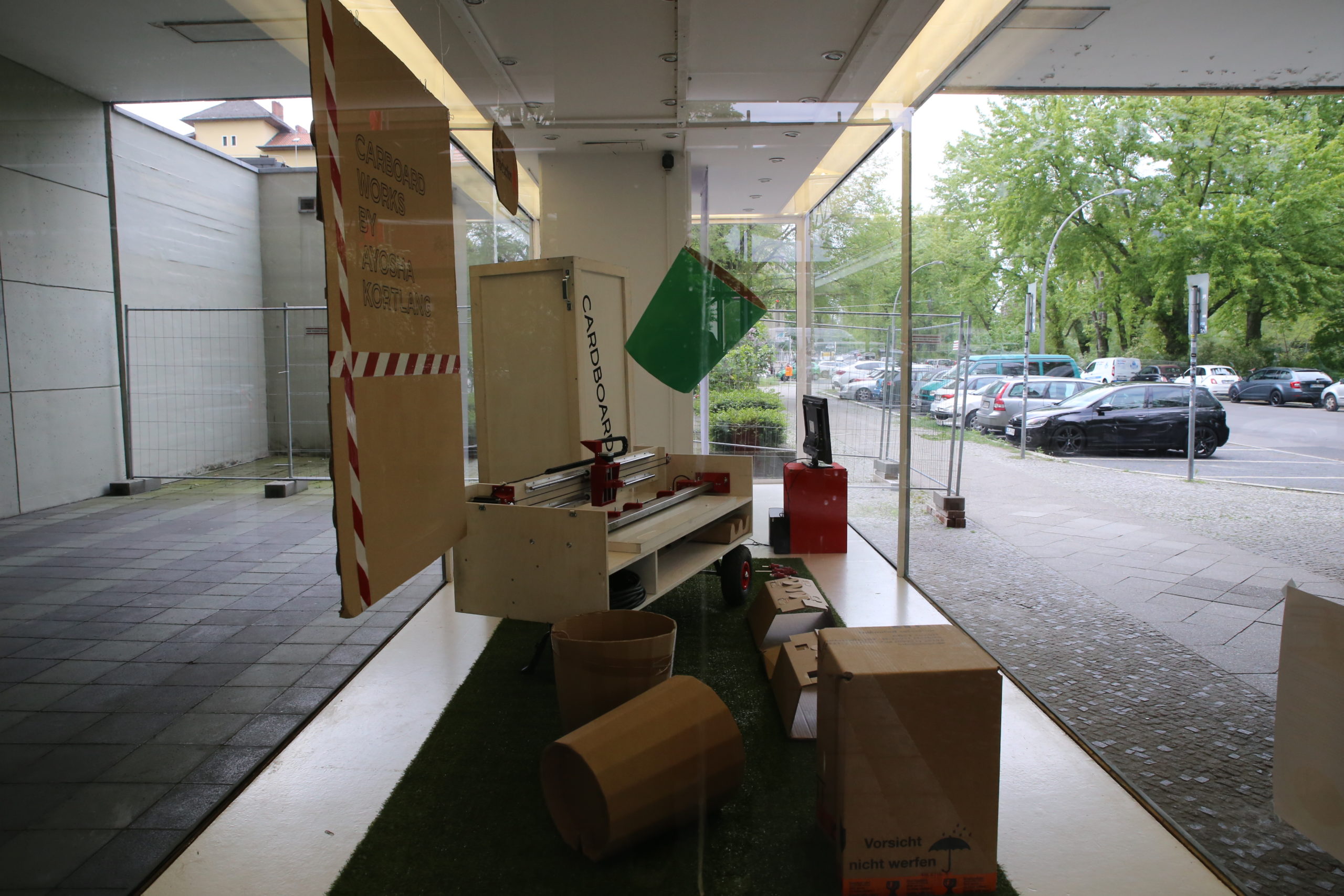



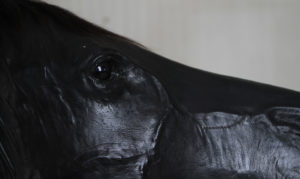
Skin // WS 20/21 // Design project starting from 5th Semester
Leather is one of the oldest materials used by humans to protect themselves from the elements. Moreover, leather craft has deep and very distinctive roots in many cultures. For its unmatched qualities such as durability, breathability, water repellence and biodegradability, leather was and is still used in a great variety applications. During its long history it was first transformed and crafted entirely by hand, in time becoming highly industrialised in its processing, with all the associated issues related to mass global production and consumption. In modern leather processing, the hides are so highly treated, that all reference to their origin is lost and most consumers are not even aware which animal skin they wear on their own skin.
How can leather be used with due respect to create ecological and enduring products, accessories or garments? The critical aspect of working with animal skin will raise a discussion about these complex issues and on the subject of cultural appropriation.
Lecturer: Prof. Wowo (Waldemar) Kraus, Gast Prof Deepti Barth, Stefan Hipp, Dorothée Warning
// Denise Kipke „Skin“
Skin, thematises the surface of the body. The connection between the inside and the outside communicates with us, it reflects our behaviour and our awareness towards it: if something is too tight, it stands out like a negative of the pattern. If you hit anything, your skin turns bluish. If it is cold, the fine, soft hairs of your body begin to stand up one by one. A collage of scraps and scraps of animal skin with bite marks from parasites, scratches or organic edges that are of no further use for industrial production shape the character of the design, just as each of our scars, our scratches and stains tells the remembered story of our own selves.
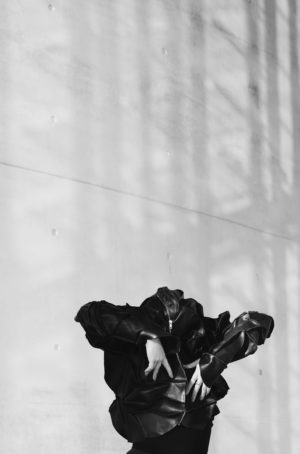
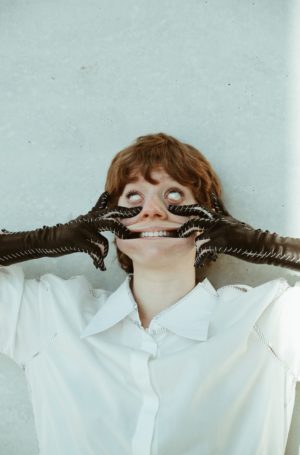
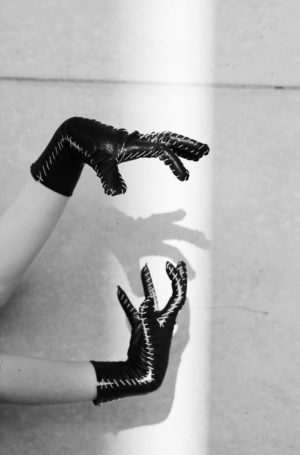
// Linus Nicholson & Karl Hoess „Keeper Of The“
Keeper of the was born out of the desire to create a label that makes clothes that are actively sustainable. In our current time, sustainability is the most important aspect of creating anything, but even a sustainable product can be consumed too much. So sustainability begins with the product but ends with the consumer. For us this creates two main aspects: the materials and means of production, and the final use of the product. Considering both these aspects we create products for the last generation that has still has the ability to turn the tide. As a material leather is one of the longest lasting in the garment industry and one that has the potential to outweigh it’s ethical and environmental drawbacks if used long enough. A sustainable yet unused product does not add to anything meaningful. We combine this with performance textiles and deliberate design. We want the wearer to feel the durability, quality and potential through wear, educating our customers in a more tangible way.
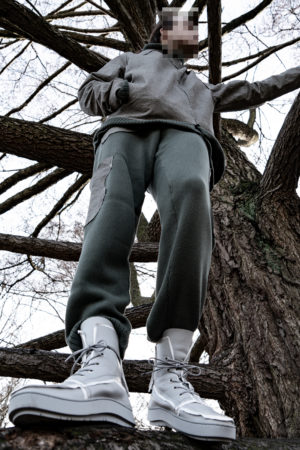
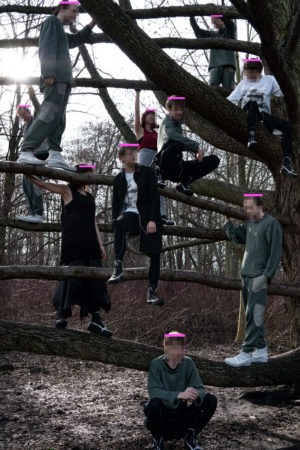
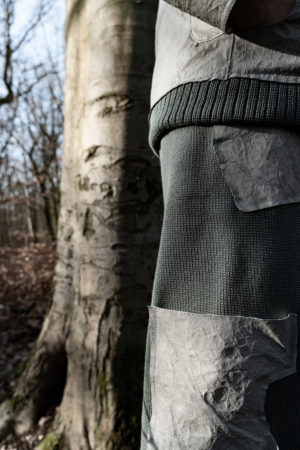
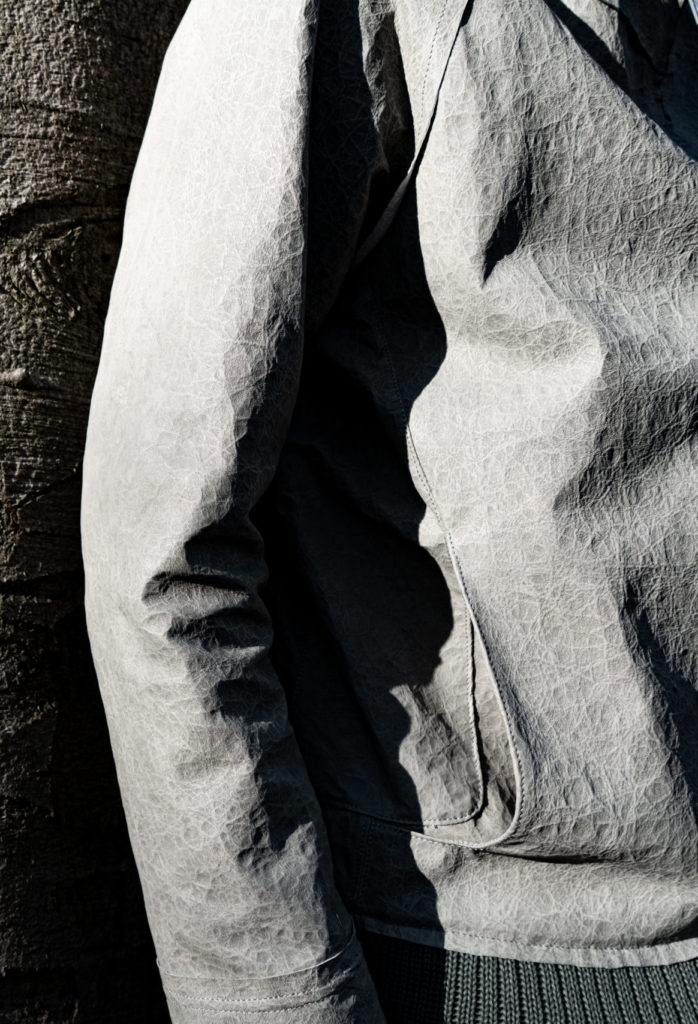

// Laurin Stecher „Fucktrade“
Fashion has a great negative impact on our environmental conditions. We are all aware of this, yet clothing is becoming increasingly short-lived. The purchase decision is not based on the durability of the garment, but on the price in order to be able to follow quickly changing trends. In the best case, clothing should provide a sense of belonging to a group and individuality, but it should also be inexpensive and, above all, up-to-date. Essential components for self-made clothing such as sewing and cut construction are lost in mass consumption, as it is cheaper to buy new clothes instead of repairing them.
Social media also plays its part due to the general ephemeral nature of the internet. A digital identity has long been indispensable for many people. There, too, clothing is a very present medium for presenting one’s personality. However, there is an opportunity to minimise one’s
ecological footprint in the digital world.
Photo by Deepti Barth © 2011 Carol Christian Poell
Project from Denise Kipke: Photography – Caroline Thiergart; Model – Sabina Smith-Moreland
IDEKYN – I DON`T EVEN KNOW YOUR NAME | Masterarbeit 2021
Alle Objekte und Kollektionen müssen dokumentiert werden, um ihre Existenz zu beweisen oder ihre Desirability zu vermarkten. Sie werden in einem Setting platziert, um fotografiert oder gezeichnet zu werden. In meinem Masterprojekt IDEKYN schöpfte ich aus einen historischen, theoretischen und künstlerischen Ansatz des Endergebnisses: dem Bild.
Als Designerin stellt sich mir häufig die Frage, wie ich Recherche aus queeren, intersektionell-feministischen und dekolonialen Feldern in physische Formen oder Kleidungsstücke übersetzen kann. Abgesehen von bewussten studies in der Theorie, existiert am Ende nämlich ein Produkt, das nicht spricht und im schlimmsten Fall auf den ersten Blick eine eindimensionale Botschaft vermittelt. Ich habe den Eindruck, dass Ideen, die auf den gekleideten Körper projiziert werden, oft den Kontext einer Universität, einer Kunstgalerie oder intensiver Marketingmöglichkeiten benötigen, um ein Narrativ zu etablieren. Die geltenden „Dresscodes“ reproduzieren und feiern oder dekonstruieren und “reclaimen” Implikationen von beispielsweise gender-spezifischer Geschichte. Letztendlich bedeutet dies, dass Designer:innen durch das kulturelle Konstrukt der Binarität kommunizieren, da selbst ihre Kritik und Anti-Haltung auf der visuellen Akzeptanz dieses Erbes beruht. Im besten Fall sind die Kleidungsstücke dann Werkzeuge für bewusste performative Handlungen.
In meinem Masterprojekt entwarf ich ein kollektives Film-Experiment, welches in ein Wurzelgebilde aus unterschiedlichen Knotenpunkten verflochten ist, um hierarchischen Machtstrukturen, die Beobachten, Interpretieren und Repräsentieren auf konditioniertes Sehen zurückführen, entgegnen zu wirken. Der Projektprozess konzentriert sich eher auf die Möglichkeiten des Schreibens und Schaffens durch, als über einen ersten Ausgangspunkt, um eine rein subjektive Inspirationsquelle zu generieren. Ausgehend von den Möglichkeiten surrealistischer Ansätze, bewusster sowie unbewusster politischer Bildgestaltung und der exhibitionistischen Qualität des Filmemachens verstehe ich das Konzept als Experiment in der Gestaltung bewegter Bilder durch eine Collage aus Forschung, Fiktion und kollektiver Autorschaft.
All objects, fashion products or collections need to be documented in the end, to prove their existence or market their desirability. They need to be placed in a setting to be photographed, rendered or drawn. Within my master project I DON’T EVEN KNOW YOUR NAME, I drew from a historical, theoretical and artistic approach of the final result: the image.
As a designer I find it hard to translate research from queer, intersectional-feminist and decolonial theories into an actual physical form or garment. Of course, apart from conscious studies and research, in the end, there somehow is a product that does not talk and, in its worst cases, at first sight conveys a one-dimensional message. I am under the impression that ideas projected onto the dressed body often need the context of a university, an art gallery or intense marketing possibilities to shape a narrative. The “dress codes” applicable either reproduce and celebrate, or deconstruct and reclaim implications of for example gendered history. Ultimately, it means that designers communicate through the cultural construct of the binary, as even their critique and anti-attitude are based on the visual acceptance of this legacy. At their best, the garments then are tools for conscious performative acts.
To counter the double-bind that ties observation, figuration and representation to the hierarchical power structures embedded in the shared realities of our lives, I wanted to explorer methods of thinking about and collaborating with other humans. The process centres on the possibilities of writing and creating through or by, rather than about a first starting point to generate a purely subjective source of inspiration. Drawing from the possibilities of surrealists approaches, conscious and unconscious political design, and aesthetic attraction-based film making, I understand the concept as an experiment of creating images through a collage of research, fiction writing, and shared authorship.
Prozess:
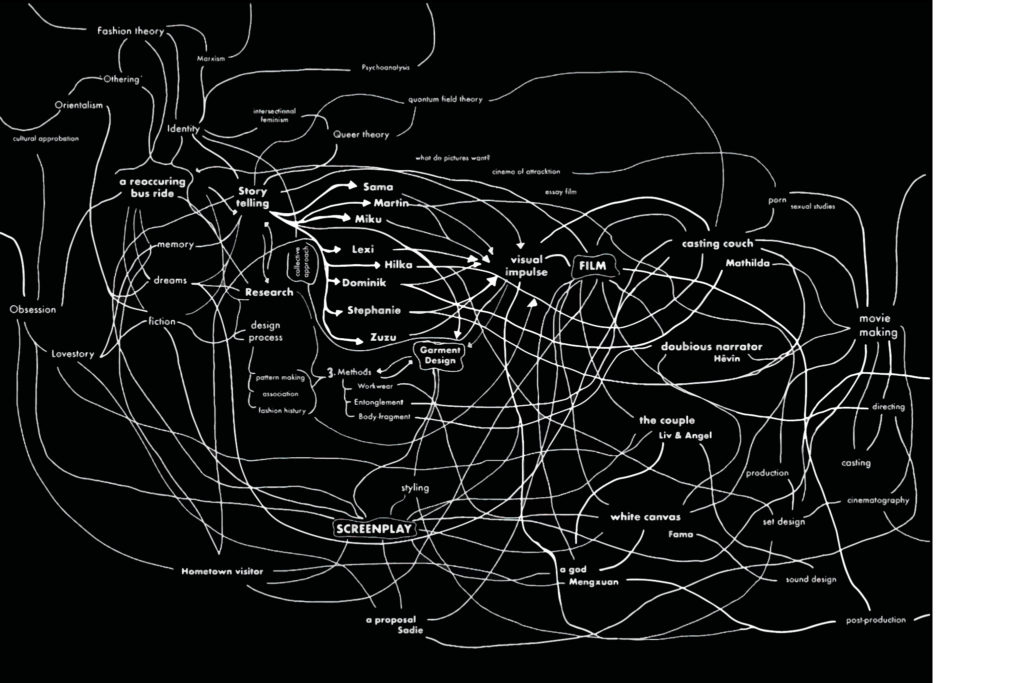
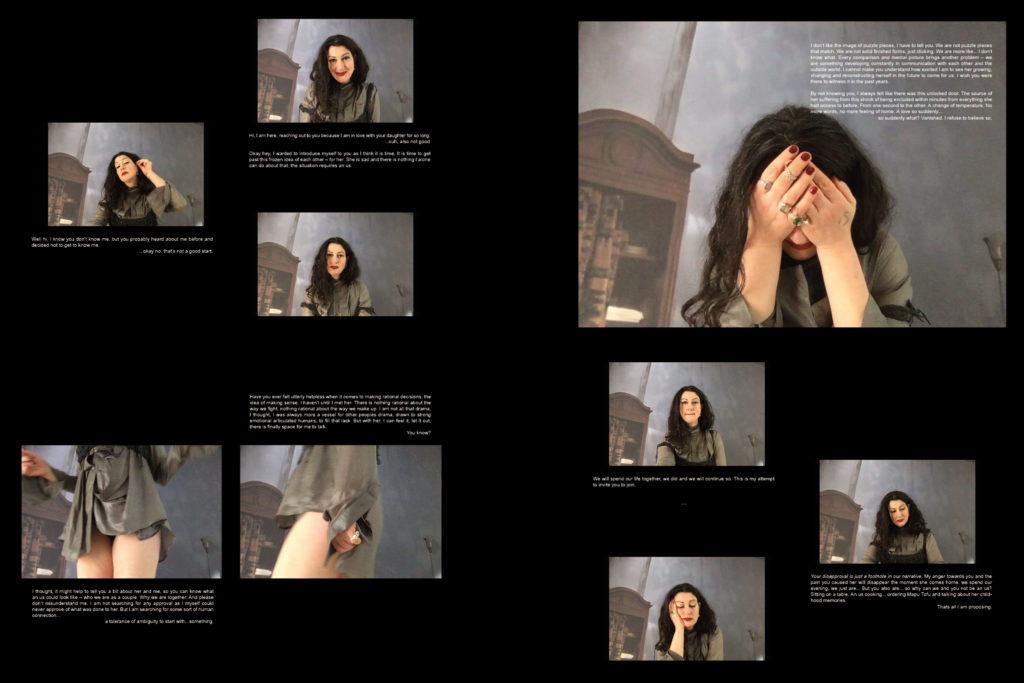
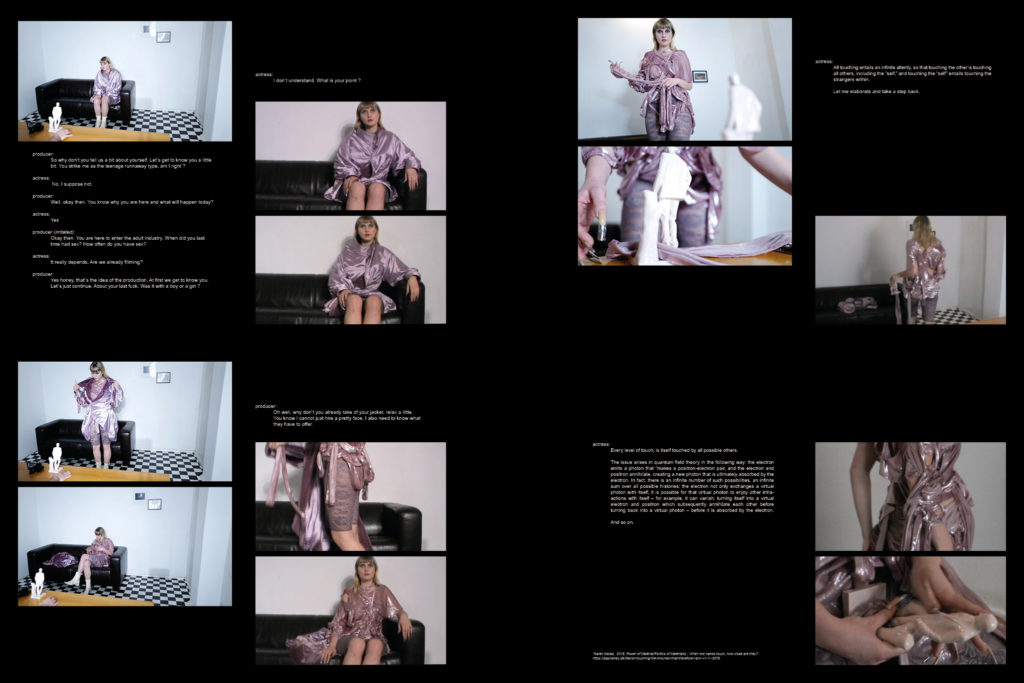
Betreuer:
Valeska Schmidt-Thomsen & Ira Solomatina
Credits:
POSTER:
Photography: Lexi Sun, Poster Design: Hilka Dirks, Artists & Actors: Mathilda Switala, Angel Hafermaas,Liv LeMoyne, Fama M‘Boup,-
Sadie Lune, Lexi Sun, Mengxuan Sun, Hêvîn Tekin, Hair and Make-Up: Una Ryu and Nina Luckat, Nail Design: Camilla Volbert, Sewing Assistances : Veronika Hopponen, Gabi Selzer, Anni Uder and Carina Schulz
FILM PROJECT:
Director of Photography: Lexi Sun, Garment Design: Johanna Braun, Production Design: Hilka Dirks, Camera: Sezigin Kivrim, Gaffer: Abby Wright, Director of Audiography: Liese Schmidt, Music by Fama M‘Boup, Liv LeMoyne and Selenay Kiray, Hair and Make-Up: Una Ryu and Nina Luckat, Nail Design: Camilla Volbert, Sewing Assistances: Veronika Hopponen, Gabi Selzer, Anni Uder and Carina Schulz.
Written and directed by Johanna Braun
With collective Input by Zuréh Zuzu Jaramillo, Dominik Cosentino, Sama Abu Hanna, Martin Fell, Stephie Morawetz, Miku Kivu, Lexi Sun and Hilka Dirks.
In collaboration with Mathilda Switala, Angel Hafermaas,Liv LeMoyne, Fama M‘Boup, Sadie Lune, Lexi Sun, Mengxuan Sun and Hêvîn Tekin.
Habitus. Habitat. | Masterarbeit 2021
We are in this together…und ohne einander könnten wir nicht überleben.
Wir leben in einer globalisierten, heterogenen Welt, in der Kulturen und Gesellschaften zunehmend aufeinandertreffen – neue Lebensräume entstehen, neue Lebensräume entfalten sich. Dieses Zusammenleben ist nicht immer einfach und manche Menschen ziehen immer wieder Grenzen um sich herum. Wie kann man diese Grenzen überwinden? Ungeschützt ist es leichter, Mauern um sich zu ziehen, zu vergessen, dass wir aufeinander angewiesen sind. Was also macht unser Bedürfnis nach Sicherheit und Schutz aus? Schafft und inszeniert nicht auch Kleidung Lebensräume und erzeugt damit Grenzen? Sie ist die Hülle, die dem Körper am nächsten ist und damit unsere erste Grenze zur Außenwelt. Sie bedeckt, schützt und gibt Raum. Wir bewohnen sie.
Kleidung und Gebäude haben demnach verwandte Gestaltungsprinzipien und erfüllen analoge menschliche Bedürfnisse. Es besteht eine enge existenzielle Beziehung zwischen ihnen. Wir fühlen uns sicher, wenn wir bedeckt sind. Paradoxerweise ist aber die Sicherheit unserer Hüllen als Schutzzonen, die einen temporären Rückzugsort von der Welt bieten, nur durch soziale Allianzen gewährleistet. Auch aus kulturanthropologischer Sicht ist der Mensch keine einsame „Monade“ im Leibnizschen Sinne, sondern ein soziales Wesen. Letztlich fühlen wir uns nur sicher, wenn unsere Hüllen transzendieren und interagieren. Es entsteht eine zusätzliche Dimension, ein Sicherheitsnetz, gewoben durch (soziale) Bindungen. Kleidung wird zur Behausung, zum temporären Rückzug aus der Welt als Schutzzone.
We are in this together and without each other we could not stay alive.
We live in a globalised, heterogeneous world where cultures and societies increasingly clash – new habitats emerge, new living spaces unfold. This living together is not always easy and some people keep drawing borders around themselves. How can these boundaries be overcome? Unprotected, it is easier to draw walls around ourselves, to forget that we depend on each other. What constitutes our need for security and protection? Doesn’t clothing also create and stage living spaces and thus generate boundaries? It is the shell that is closest to the body and thus our first border to the outside world. It covers, protects and gives space. We inhabit it.
Clothing and buildings thus have related design principles and fulfil analogous human needs. So there is a close existential relationship between them. We feel safe when we are covered. Paradoxically, however, the safety of our covers as protective zones that provide a temporary retreat from the world is only guaranteed through social alliances. From a cultural anthropological point of view, too, man is not a solitary „monad“ in the Leibnizian sense, but a social being. Ultimately, we only feel safe when our shells transcend and interact. An additional dimension emerges, a safety net woven through (social) bonds. Clothing becomes a dwelling, a temporary retreat from the world as a protective zone.
AUFBAU
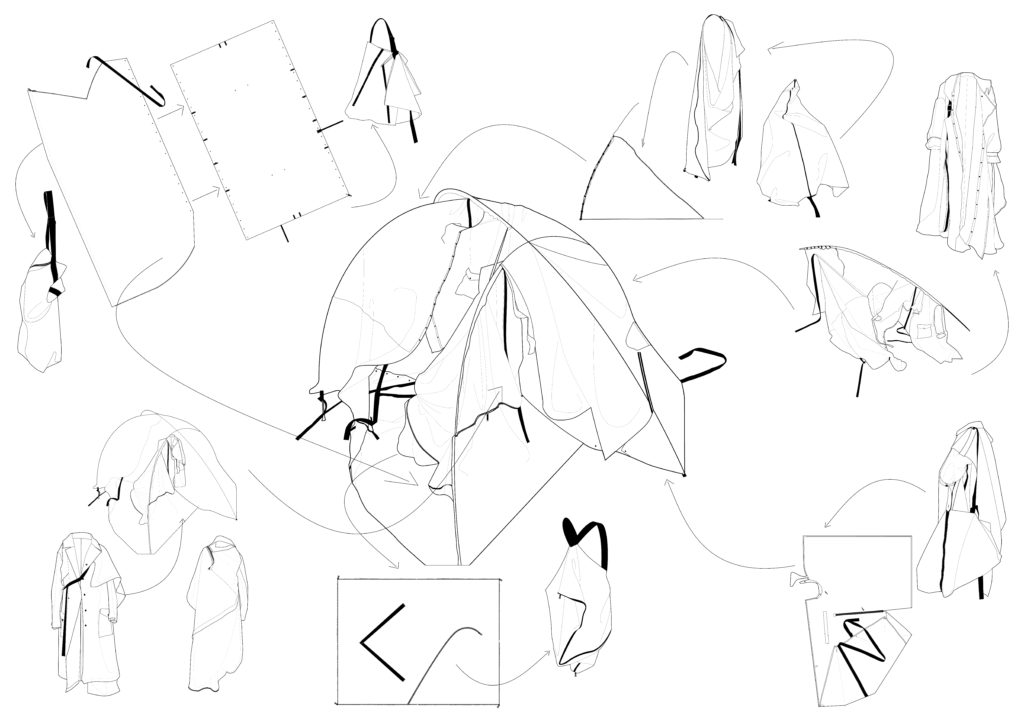
Betreuer:
Valeska Schmidt-Thomsen & Ira Solomatina
Credits:
creative direction & concept: Clara Twele | @clara_twl
camera: 1999 berlin – Louis Hein & Fynn Stoldt | @1999berlin
cut: Louis Hein, Fynn Stoldt, Clara Twele
dance performance:
Charlotte Brohmeyer | @charlotte.brohmeyer.dance
Daniel Conant / @danielconant
Simona Dervishi | @trupmedykoka
Rebecca Dirler
Emma Langstrump | @emma.langstrump
Yannis Mitsos | @yannis.mitsos
Pilar Villadangos | @pilar___________
direction: Louis Hein & Fynn Stoldt
fashion: Clara Twele
lighting design: Vito Walter | @vito_lighting
set design: Clara Twele & Vito Walter
assistance: Michaela Tomaskova | @michnatomaskovna
SIMULACRUM | Masterarbeit 2021
Ständig in Bewegung, werden unsere digitalen Bilder in einem Netzwerk ohne Referenz gefangen, während die Kopie einer Kopie ihre eigene Wahrheit erfährt. Wenn das Original seine Funktion verliert, wird das kopierte Bild über unendliche Verteilungskanäle geschichtet, verschoben, komprimiert und ist vom Original letztendlich nicht mehr zu unterscheiden.
Inspiriert von der Überbevölkerung digitaler Bilder, welche wir durch das Kopieren und Teilen ständig manipulieren, untersuche ich in meiner Arbeit wie die Hyperlink Struktur des Internets unser emotionales Leben prägt.
Heute sind wir mehr denn je auf Technologie angewiesen, um unsere Gefühle zu kommunizieren, unsere Gedanken auszudrücken und unsere Emotionen zu teilen. Dies ist der einzige Weg, um in Verbindung zu bleiben, wenn physischer Kontakt unmöglich ist. Dadurch wird der Emotion ein Warenwert zugeteilt.
Bedeutung wird durch ständige Manipulation erzeugt und Wahrheit und Realität durch unendliche Kopien definiert. Gibt es in dieser von Bildern überfluteten Welt noch echte Gefühle? Und wenn ja, welchen Wert haben sie?
Constantly in motion, our digital images are caught in a network, devoid of reference, while the copy of a copy experiences its own truth. As the original loses its function, the copied image is layered, shifted, compressed through infinite channels of distribution, indistinguishable from the original.
Inspired by the overpopulation of digital images we manipulate by copying and sharing, the work explores how the hyperlinked network structure invades our identities and questions our emotional relationship with the internet.
Today, more than ever, we depend on technology to communicate our feelings, connect our thoughts and share our emotions as the only way of staying connected when physical contact is impossible. At the same time, these shared emotions are constantly being streamlined, manipulated and even created, hence becoming valuable commodities.
As meaning is created through repetitive manipulation in our digital circulation systems and truth and reality are defined through infinite copies, are there still any real feelings left in this world overpopulated by images? And if so, what value do they hold?
Prozess:
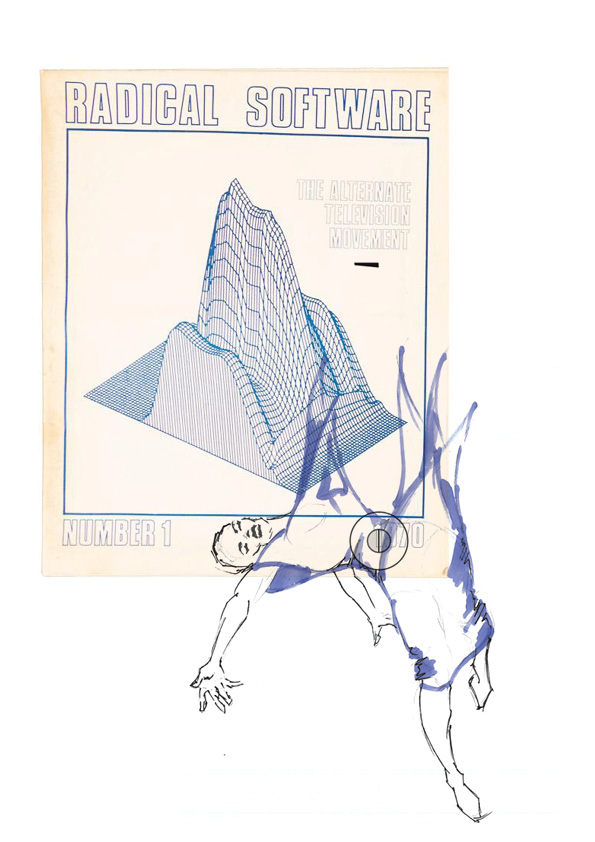
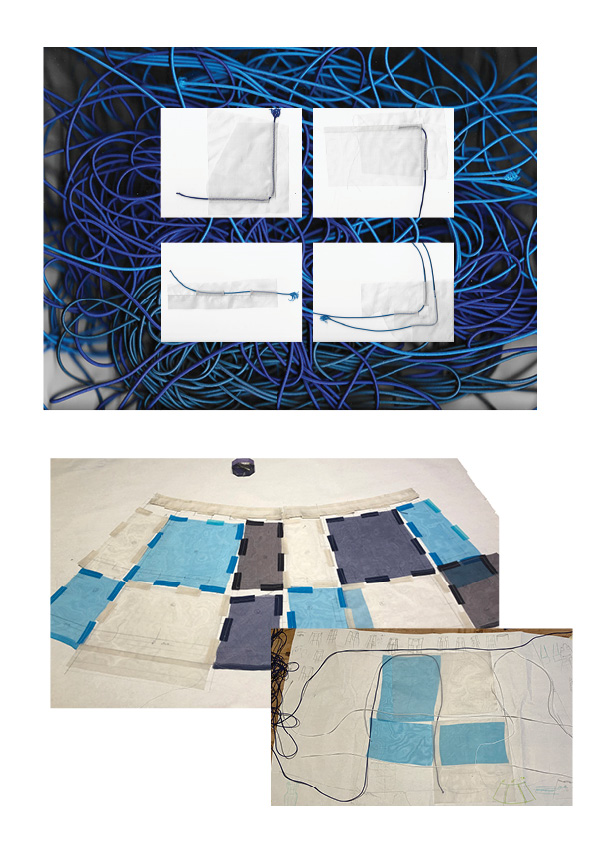
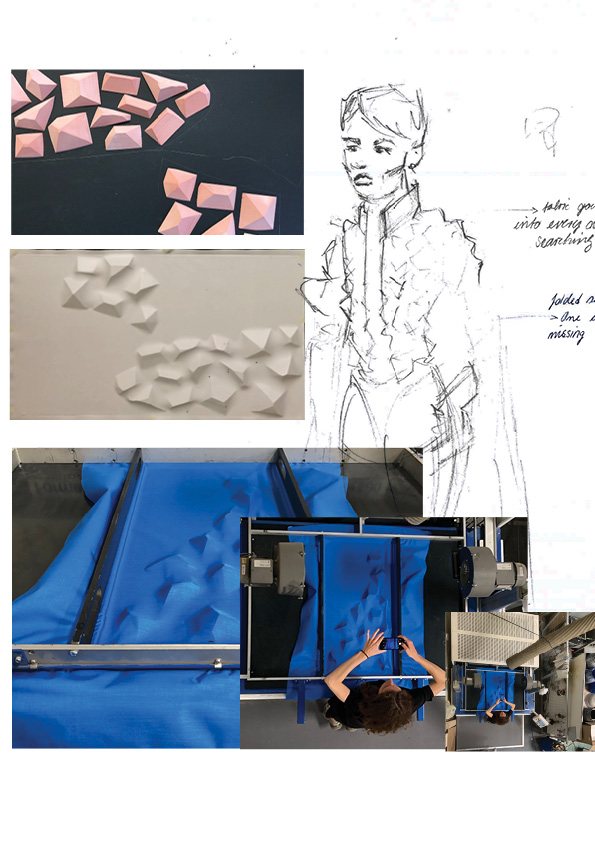
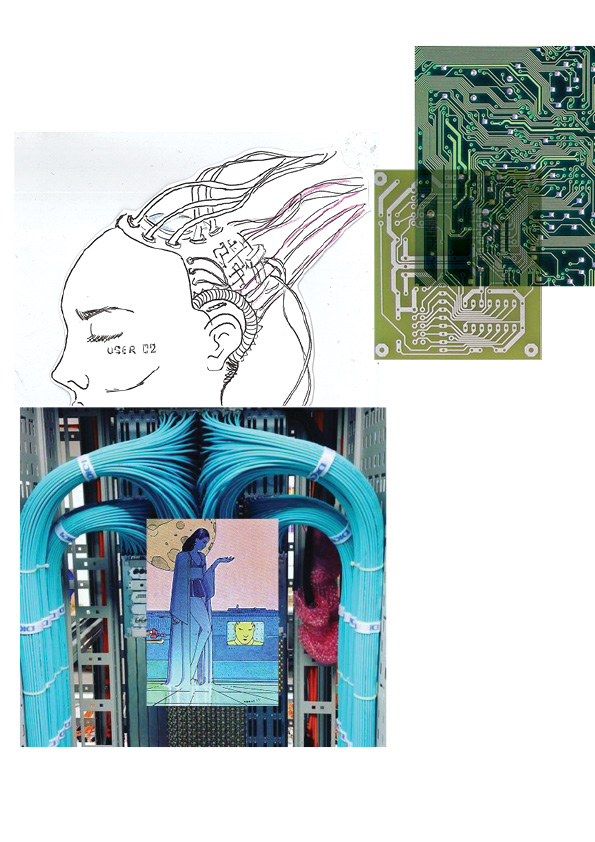
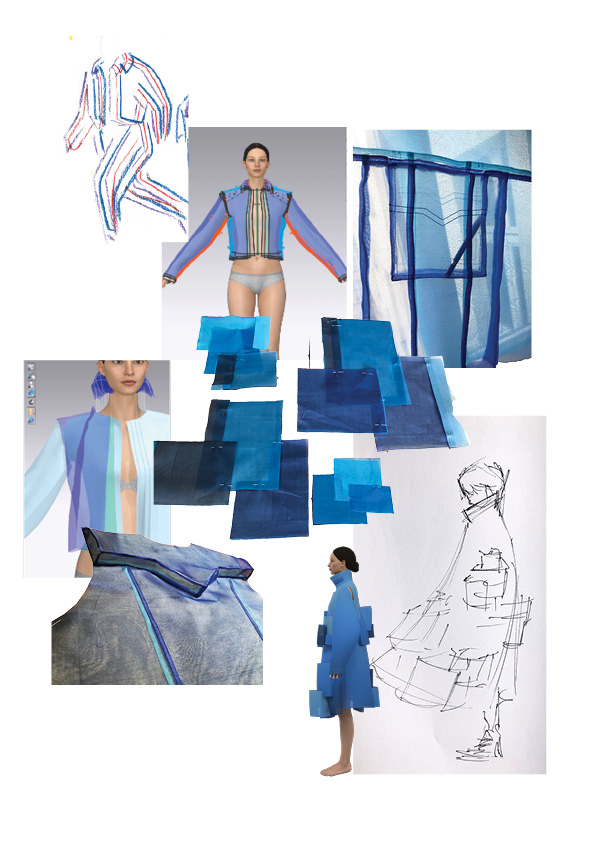
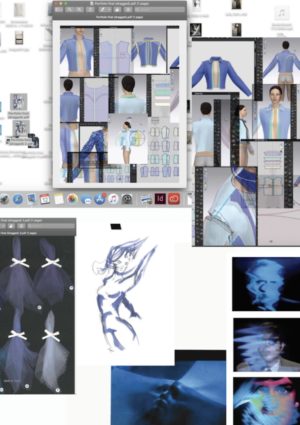
Betreuer:
Valeska Schmidt-Thomsen & Ira Solomatina
Credits:
Photography: Diana Pfammatter
Model: Nyawargak Gatluak
Film: Paul Sonntag
Hair&Makeup: Felix Stößer
Casting: Julia Lange
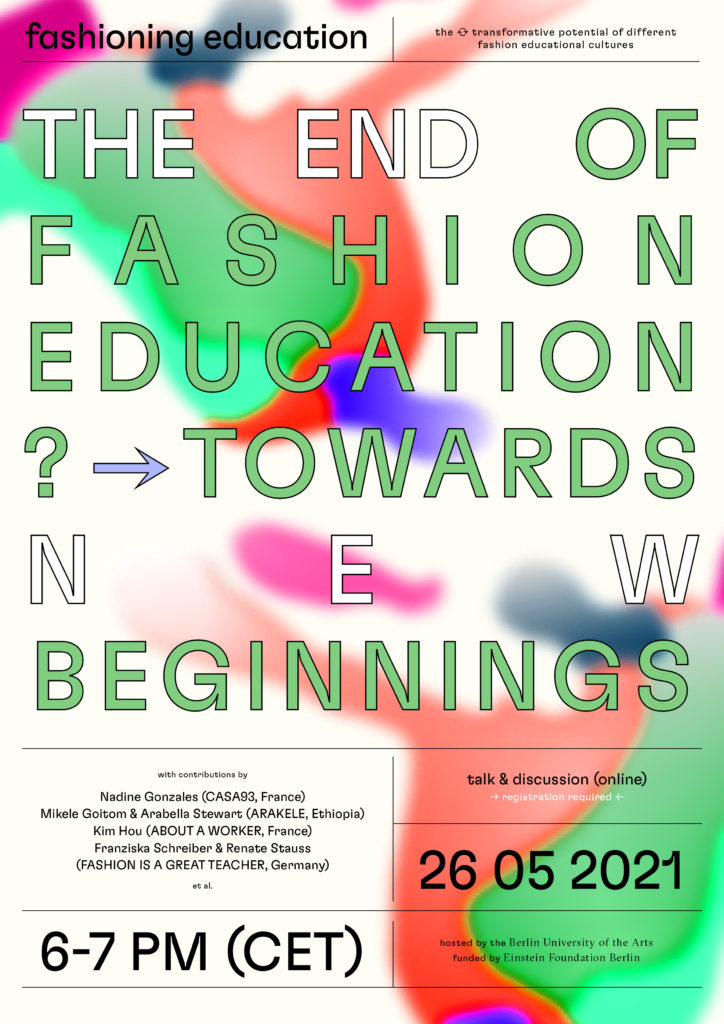 The End of Fashion Education? Towards New Beginnings
The End of Fashion Education? Towards New Beginnings
26. Mai 2021, 6-7 pm (CET)
Talk & Discussion
Online (registration for Zoom Meeting is required – click here )
with contributions by
Nadine Gonzales (CASA93, France)
Mikele Goitom & Arabella Stewart (ARAKELE, Ethiopia)
Kim Hou (ABOUT A WORKER, France)
Franziska Schreiber & Renate Stauss (FASHION IS A GREAT TEACHER, Germany) et al.
What can fashion education do? – fashioning education is a collaborative research initiative to open, facilitate and formalise the debate on fashion education against the backdrop of global social transformations. It brings together experts and creatives from different fields of fashion related education, research and practice into critical conversation and exploration of the transformative potential of fashion. The initiative seeks to contribute to the reflection, networking and reorientation of fashion education that meets the demands of a sustainable, social and conscious future. The three-year project is supported by the Einstein foundation and jointly led by the colleagues of the Fashion Institute of the Berlin University of the Arts Valeska Schmidt-Thomsen, Franziska Schreiber and Renate Stauss.
With its first public event fashioning education explores the potentials of fashion education beyond the tertiary level. Against the backdrop of some of the fundamental shifts and challenges in fashion education “The End of Fashion Education?
Towards New Beginnings” acknowledges the need for reform and re-orientation in the way fashion is learnt and taught. It invites different perspectives on the positive educational impact: more humane, more social and more collaborative/collective. Nadine Gonzales of Casa93, Paris (France) and Mikele Goitom & Arabella Stewart of Arakele, Addis Ababa (Ethiopia), Kim Hou, ABOUT A WORKER, Paris, France (ABOUT A WORKER is a design studio, creative factory and a platform for the actors of the creation and production scene to meet, reflect and build inclusively on possible scenarios for the future of the industry. It is by co-led by the design graduates Kim Hou and Paul Boulenger. Their mission is to give workers a voice, to expose their conditions, to value their craft abilities and creative talents by using design), Franziska Schreiber & Renate Stauss of Fashion is a great teacher (Germany) will introduce their respective work. Their talks will be followed by a public conversation.
Please join fashioning education and spread the word.
We look forward to seeing you!
The event is hosted by the Berlin University of the Arts and funded by Einstein Foundation Berlin.
more information
www.fashioningeducation.udk-berlin.de
DAS TUN AN SICH | Bachelorarbeit 2021
nicht ganz effektive Objekte für die meditative Praxis zu Hause
Die sechs Objekte sind das Ergebnis der Beschäftigung mit der Frage, wie man durch Objekte den Handlungsprozess vor das Ergebnis stellen kann und sich somit beim Tun vom bloßen Erreichen eines Ziels oder Ergebnisses freimachen kann.
Alltägliche Tätigkeiten, wie das Feges eines Raumes und das Gießen der Zimmerpflanzen werden durch Nutzung der Objekte so verändert, dass sich der Fokus vom Ziel auf den Ablauf verschiebt. So bieten sie Anlass zu einer Auseinandersetzung mit leistungsorientiertem Handeln und hinterfragen übliche Annahmen über die Funktionalität und Effizienz von Abläufen. Mit den Besen kann man fegen und mit den Gießkannen kann man gießen, es funktioniert nur etwas anders als man es gewohnt ist.
Das Wasser muss sich seinen Weg durch den Ausguss der Kannen bahnen. Das geht nicht so direkt wie bei einer herkömmlichen Gießkanne. Es nimmt einen Umweg, aber einen ästhetischen, denn es entstehen Schlangenlinien und Luftblasen, die man betrachten kann während man steht und innehält. Befüllen muss man die Kannen langsam und auch der Weg vom Wasserhahn zur Pflanze ist am besten vorsichtig. Die Materialität unterstützt die bewusste und konzentrierte Handhabung.
Die Besen sind weniger fragil in der Benutzung. Sie ermöglichen große und kleine Bewegungen, mal mehr, mal weniger frei und repetitiv. Die Repetition kann eine meditative Wirkung herbeiführen. In jedem Fall dauert das Fegen des Raumes. In der Wiederholung der Bewegung eröffnet sich die Möglichkeit zum Vergleich und zu erhöhter Konzentration auf die Tätigkeit. Wie bewege ich mich und wie den Besen? Da nehme ich einmal mehr Schwung und einmal weniger. Was verändert sich? Die Bewegungen sind nicht kompliziert, aber sie benötigen doch eine achtsame Zuwendung. Einfach nebenbei machen geht nicht.
The six objects are the result of the occupation with the question of how objects can be used to place the process of action before the result and thus free oneself from the mere achievement of a goal or result when doing.
Everyday activities, such as sweeping a room and watering houseplants, are altered through the use of objects in such a way that the focus shifts from the goal to the process. In this way, they provide an occasion for an examination of performance-oriented action and question common assumptions about the functionality and efficiency of processes. You can sweep with brooms and water with watering cans, it just works a little differently than you’re used to.
The water has to make its way through the spout of the cans. It doesn’t do that as directly as it does with a traditional watering can. It takes a detour, but an aesthetic one, because it creates serpentine lines and bubbles that you can look at while standing and pausing. Filling the cans must be done slowly, and the path from the faucet to the plant is also best done carefully. The materiality supports deliberate and concentrated handling.
The brooms are less fragile in use. They allow for large and small movements, sometimes more, sometimes less free and repetitive. The repetition can induce a meditative effect. In any case, sweeping the room takes time. In the repetition of movement, the opportunity for comparison and increased concentration on the activity opens up. How do I move myself and how the broom? I use more momentum at one time and less at another. What changes? The movements are not complicated, but they do require attentive attention. Simply doing it on the side is not possible.
Prozess
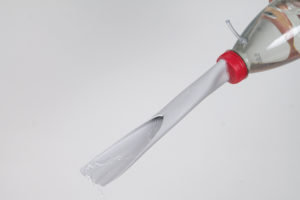
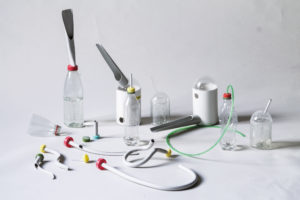
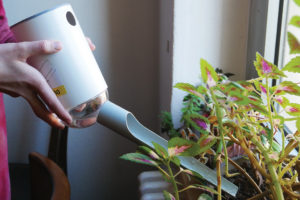
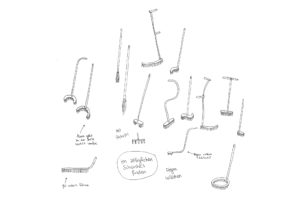
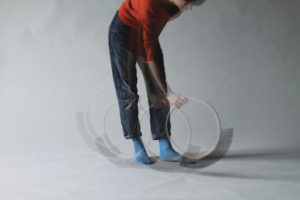
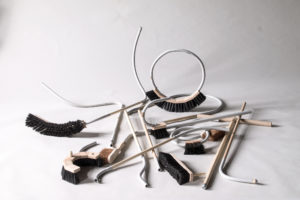
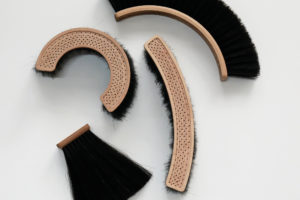
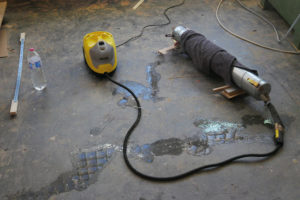
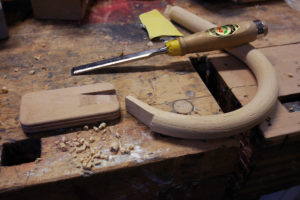
Betreut durch
Prof. Ineke Hans, Prof. Holger Neumann, Annika Unger
Kontakt
FRISCHHOLZ | Bachelorarbeit 2021
Im Zuge des Klimawandels sind in den vergangenen Jahren hunderttausende Bäume, Schädlingen oderklimatischen Ereignissen wie extremer Dürre oder Stürmen zum Opfergefallen. Unsere Wälder sind gegenwärtig durch die steigenden Temperaturen geschwächt. Aber nicht nur der Wald als Ökosystem leidet unter den drastischen Veränderungen, sondern auch die damit zusammenhängende Industrie und insbesondere die Waldbesitzer*innen haben große Probleme. Die Sägewerke sind überfüllt und die Holzpreise im Keller.Die Waldbesitzer*innen sind gezwungen, das Holz über mehrere Jahre extrem kosten-und energieaufwendig zu lagern. Vielerorts verbleibt das Schadholz deshalb unkontrolliert im Wald, was wiederum die Ausbreitung der Schädlinge begünstigt, die sich auch in Totholz vermehren können.Was also tun mit dem ganzen befallenen Holz?Das „Projekt Frischholz“ bietet die Möglichkeit lokal gewonnenes Schadholz in seinem noch feuchten Zustand mit einfachen Herstellungsmethoden und Werkzeugen zu langlebigen Vollholzmöbeln zu verarbeiten. Die auf Zug und Spannung basierende Verbindung ermöglicht die natürliche Transformation des Holzes, wodurch eine herkömmliche, künstliche Trocknung des Rohstoffs vor seiner Verarbeitung überflüssig wird.Das Projekt soll die traditionellen und industriellen Verarbeitungsmethoden überdenken. Entstanden ist einneuer Ansatz der Holzverwertung, welcher sich unabhängig von derIndustrie positionieren kann und lokale, eigenständige Strukturen unterstützt.
As a result of climate change, hundreds of thousands of trees in Germany have been killed by pests or climatic events such as extreme drought or storms in the recent years. Our forests are currently weakened by rising temperatures. But it is not only the forest as an ecosystem that suffers from the drastic changes, but also the associated industry and especially the forest owners are facing major problems. The sawmills are overloaded and wood prices have fallen dramatically at the same time. The forest owners are forced to store their wood costly and energy-intensive for several years.In many places, the wood remains uncontrolled in the forest, which in turn favors the spread of pests. So what to do with all the damaged wood? “Projekt Frischholz” offers the possibility to process locally harvested wood, in its still wet state, with simple manufacturing methods and tools to long-lasting solid wood furniture. The connection, based on tension, allows the natural transformation of the wood. This eliminates the need for conventional artificial drying of the raw material before it is processed. The project aims to rethink traditional and industrial processing methods. The result is a new approach to wood processing, which can position itself independently of industry and supports local, independent structures.
Prozess
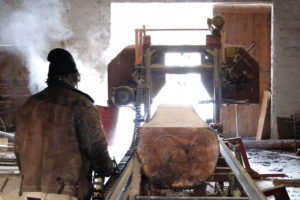
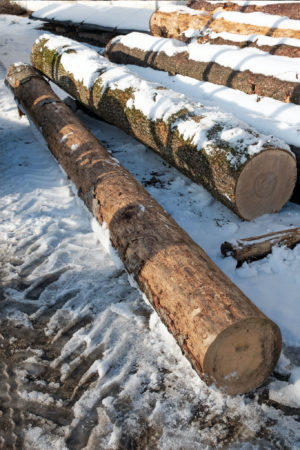

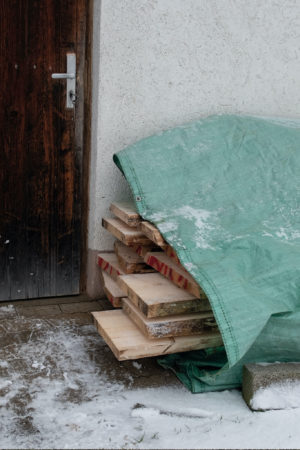
Betreut durch
Prof. Ineke Hans, Prof. Holger Neumann, Steffen Herm
Visual Relations – Die Bilder in meinem Kopf
Visual Relations untersucht die Rolle der digitalen Bilder bei der Wahrnehmung, Konstituierung und Verarbeitung unserer Welt. Bilder sind die Grundlage unserer Seherfahrung geworden. Sie informieren und unterhalten uns, erlauben Kommunikation und Austausch. Sie nehmen eine unwahrscheinlich wirkmächtige Funktion ein, denn sie sind das Medium durch welches wir unsere Welt wahrnehmen. Sie sind wesentlicher Bestandteil unseres Alltags, ob wir wollen oder nicht. Fremde Bilder prägen sich ein, werden Teil unserer Erinnerung und Vorstellungen und damit zu Elementen die unsere Perspektive, Identität und Handlungen steuern. Die digitalen Inhalte werden Teil der inneren Bilder, auf die unsere Imagination unbewusst zugreift und welche von ihr verarbeitet werden. Visual Relations. Die Bilder in meinem Kopf betrachtet die Migration von visuellen Informationen in die Vorstellungen und deren Einflussnahme auf kreative Prozesse. Dabei zeichnet die Arbeit das Wirken eines gestalterischen Unbewussten nach, das die visuellen Provokationen produktiv verarbeitet.
Mittels einer systematischen Vorgehensweise wurde dieser Prozess in eine generative Methodik übersetzt, um die kreative Syntheseleistung nachzuvollziehen und gestalterisch nutzbar zu machen. Die Arbeit stellt dar, wie sich aus fremden technischen Fragmenten Neues bilden kann und in welcher Form die digitale Bilderwelt auf uns wirkt. Durch eine gestalterischen Externalisierung werden diese Visionen materialisiert und geben dadurch Einblick in unbewusste Vorgänge.
Wir können uns der Potenz der Bilder nicht erwehren, denn sie sind fundamentaler Teil unserer Alltagserfahrung. Die Bedingungen des Internets haben diesen Umstand noch weiter verstärkt. Es gibt keine gestalterische Praxis außerhalb der bildlichen Einflussnahme. Auch die Praxis von Gestaltern hat sich diesen neuen Bedingungen angepasst. Das bedeutet aber auch, dass wir immer von den Bildern geprägt sind; folglich dürfen wir uns diesen Gegebenheiten nicht entziehen – wir müssen uns ihnen stellen. Das Projekt Visual Relations zeigt auf, wie wir reflektiert mit den Bildern umgehen können. Die entstandenen Objektkonzepte, sind Ergebnis und zugleich Spiegel der heutigen Bildkultur. Sie stellen dar, dass die visuellen Informationen mit denen wir konfrontiert sind, immer einen Einfluss haben. Dass das Digitale elementarer Bestandteil der eigenen Wahrnehmung und Arbeit ist. Und, dass die Imagination ein hochpotentes Mittel ist, die Bewältigung erlaubt und dabei Neues schafft.
Visual Relations investigates the role digital images play in the perception, constitution and processing of our world. Images have become the basis of our visual experience. They inform and entertain us, allow communication and exchange. They have an incredibly powerful function, since they are the medium through which we perceive our world. They are an essential part of our everyday life, whether we like it or not. Strange images imprint themselves, become part of our memory and imagination, and thus elements which control our perspective, identity and actions. Digital content becomes part of the inner images that the imagination unconsciously draws upon and processes. Visual Relations. The images in my head looks at the migration of visual information into the imagination and its influence on creative processes. In doing so, the project traces the impact of a creative unconscious, that productively processes visual provocations.
By using a systematic approach, this process was translated into a generative methodology in order to trace the creative productivity and to make it usable for design. The work shows how new things can be formed from unknown technical fragments and in what form the digital image affects us. By means of a creative externalization, these visions are materialized and thus provide insight into unconscious processes.
We cannot resist the potency of images; they are a fundamental part of our everyday experience. The conditions of the Internet have reinforced this fact. There is no design practice outside of pictorial influence. The practice of designers has also adapted to these new conditions. But this also means that we are always influenced by the images. Consequently, we must not evade these conditions – we have to face them. The project Visual Relations shows how we can deal with images in a reflective way. The created object are the result and at the same time a mirror of today’s image culture. They show that the visual information we are confronted with, always has an influence. That digital conditions are an elementary part of our own perception and work. And the imagination is a highly potent means that allows for overcoming and thereby creates something new.

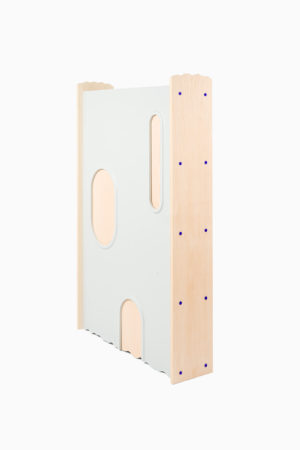

Betreut durch
Prof. Dr. Ingeborg Harms, Prof. Jozef Legrand
Photo credits: Jonathan Bachmann 2021
TAAABLE | Bachelorarbeit 2021
Taaable ist ein Beistelltisch, eine Workstation, die den starken Präsenz von Technologie in unserem Haus als auch die Auswirkungen auf unseren Lebensstil anerkennt. Es bietet die Möglichkeit eines normalen Schreibtisches oder eines Stehpultes. Und es verfügt über eine abnehmbare Tischplatte, die als Laptop-Unterstützung auf Sofas verwendet werden kann.
Ein Schneckengetriebesystem unterstützt die höhenverstellbare Tischplatte. Um die Sicherheit gegen das Problem des Rückantriebs zu gewährleisten, wird für das Drehmoment ein einzigartiges Magnetdesign verwendet. Die linke Platte des Tisches kann zur Wartung der Taaable leicht entfernt werden.
Die Tischplatte kombinierte eine Eschenholzplatte mit einem Kissen. Damit können Benutzer ihren Laptop bequem auf den Schoß stellen und sich von der Hitze fernhalten, die der Computer häufig erzeugt.
Taaable is a side table, workstation designed to acknowledge the strong presence of technology in our home and its impact on our lifestyle. It offers the option of a regular desk or a standing desk. And it features a removable tabletop, which can be used as laptop support on sofas.
A worm gear system supports the height-adjustable tabletop. And to provide safety against the back drive issue, the torque uses a unique magnet design. The left panel of the table can be easily removed for gear maintenance.
The tabletop combined an ash wood top with a cushion. So users can comfortably place their laptop on the lap and away from the heat that the computer often generates.
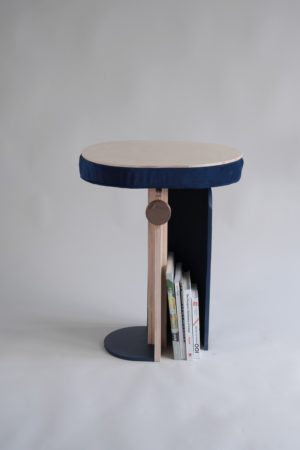
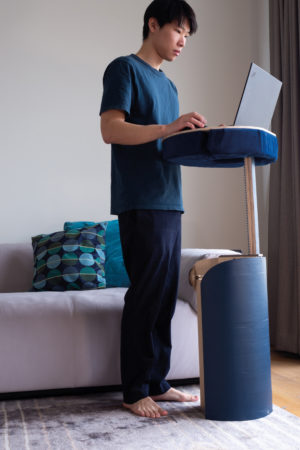
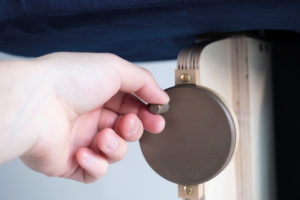
Prozess
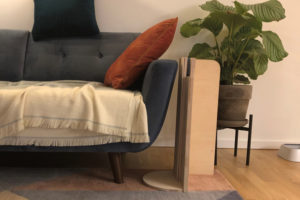

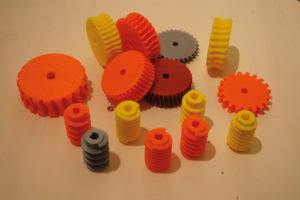
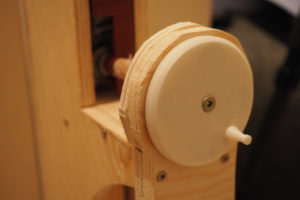
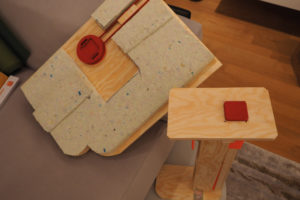
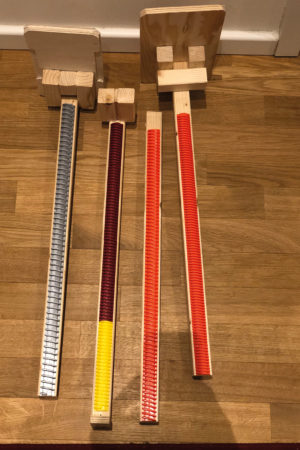
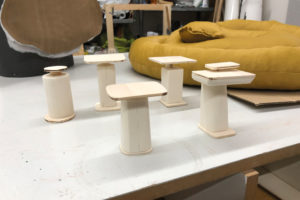
Betreut durch
Prof. Ineke Hans, Prof. Burkhard Schmitz, Prof. Jozef Legrand
Tenderly | Bachelorarbeit 2021
In unserer heutigen Leistungsgesellschaft gilt Stress als ein alltäglicher Begleiter. Das Effizienzstreben der Erwerbstätigkeit überträgt sich mehr und mehr auf das Privatleben. Durch neue Techniken, wie beispielsweise Smartphones, besteht die Möglichkeit jederzeit erreichbar zu sein, wodurch eine Grundspannung erhalten bleibt. Stress erhält somit auch Einzug an privaten Orten, die zu unserer Entspannung dienen. In der Recherche bin ich auf zwei Praktiken aus dem therapeutischen Kontext gestoßen, die unterstützend zur Stressreduktion eingesetzt werden. Die Lagerungstechnik und den Tiefendruck. Gerade jetzt, wo das Thema mentale Gesundheit im Vordergrund steht, kommt die Frage auf, warum diese Techniken eher im Verborgenen bleiben. Wie kann es gelingen diese Techniken, die sich bereits im therapeutischen Kontext bewährt haben, in unseren Alltag und unser Zuhause zu integrieren? Die Arbeit Tenderly ist eine Reihe von drei Objekten, die sich mit dieser Fragestellung auseinandersetzen.
Hugging_pillow – Ein skulpturales Kissen zur Unterstützung des Körpers. Kissen polstern und stützen unseren Körper für eine angenehme Schlaf- oder Liegeposition. Inspiriert ist das H_pillow an der Lagerungstechnik aus dem Pflegebereich. Die Berührungen werden von unserem Tastsinnessystem wahrgenommen und es entsteht ein Gefühl von Geborgenheit. H_pillow greift dieses Thema auf und setzt es in einen neuen Kontext. DeepPressure_vest ist eine Weste, die Tiefendruck generiert. Sie ist mit feinen Glasperlen gefüllte und regt durch den gleichmäßigen Druck auf den Körper, das vegetatives Nervensystem an. Dieser Druck simuliert eine Umarmung und unterstützt dadurch die Produktion des Glückshormons Serotonin. Die Weste wurde für den Alltag gestaltet und bietet die Möglichkeit, in stressigen Situationen oder bei Angstzuständen zu beruhigen. Cocoon_bed ist ein Ruhepol in unserm schnelllebigen Alltag. Das Schlauchkissen ist von Lagerungstechniken aus dem Pflegebereich inspiriert. Die Berührungen werden vom Tastsystem wahrgenommen und erinnern an die Lage im Mutterleib. Mit Glaskugeln gefüllte Deckenteile wirken mit ihrem Gewicht auf das vegetative Nervensystem. Dieser Druck hat eine entspannende Wirkung auf Muskeln, Sehnen und Gelenke, wodurch auch hier die Produktion des Glückshormons angeregt wird. Diese Objekte dienen als Tools, sich zeit und Aufmerksamkeit für sich zu nehmen und auf die Körperliche so wie mentale Gesundheit zu achten.
In today’s competitive society, stress is considered an everyday companion. The striving for efficiency in gainful employment is being transferred more and more to private life. New technologies, such as smartphones, make it possible to be available at all times, which creates a certain level of tension. Stress thus also finds its way into private places that serve to relax us. In my research, I came across two practices from the therapeutic context that are used to reduce stress. The patients positioning technique and deep pressure. Especially now that the topic of mental health is in the foreground, the question arises why these techniques remain rather hidden. How can we succeed in integrating these techniques, which have already proven their worth in a therapeutic context, into our everyday lives and homes? The project „Tenderly“ is a series of three objects that deal with this question.
Hugging_pillow – A sculptural pillow to support the body. Pillows help and support our bodies for a comfortable sleeping or lying position. The H_pillow is inspired by the patients positioning technique from the nursing sector. The touch is perceived by our touch sense and a feeling of security is created. H_pillow takes up this concept and puts it into a new context. DeepPressure_vest is a vest that generates deep pressure. It is filled with fine glass beads and stimulates the autonomic nerve system by applying even pressure to the body. This pressure simulates an hug and stimulates the production of the happiness hormone serotonin. The waistcoat was designed for the daily routine and offers the possibility to calm down in stressful situations or in case of anxiety. Cocoon_bed is a place of calm in our stressful everyday lives. The tube pillow is inspired by patients positioning techniques from the nursing sector. The touch is noticed by the tactile system and is reminiscent of the position in the womb. The weight of the with glass beads filled parts of the blanket has an effect on the vegetative nerve system. The pressure has a relaxing effect on muscles, tendons and joints, which also stimulates the production of the happiness hormone. These objects serve as tools to take care for yourself and to pay attention to your physical and mental health.

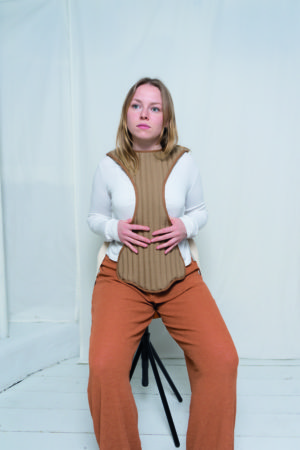
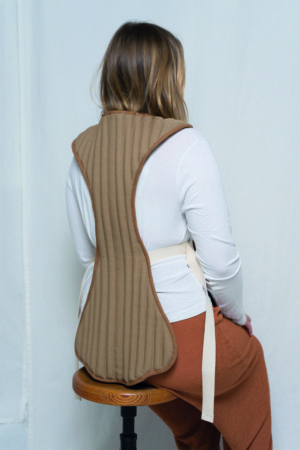
Prozess

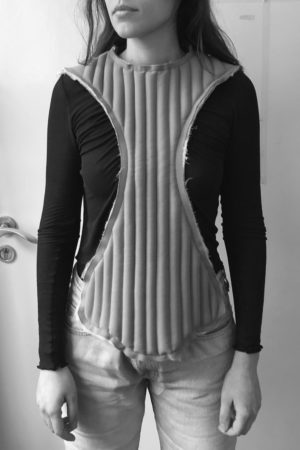
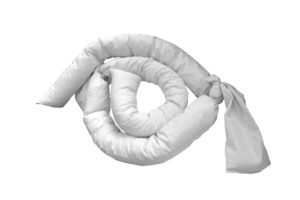
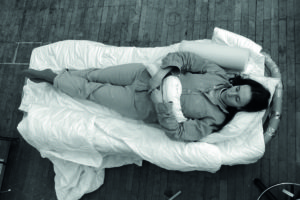

Betreut durch
Prof. Ineke Hans, Prof. Holger Neumann, Maciej Chmara
Constructing Contradictions | Bachelorarbeit 2020
Während wir täglich von vielen Widersprüchen umgeben sind, helfen diese, gegebene Strukturen zu überdenken. In einer Welt, in der Kunst und Design ineinander greifen, in der die Industrie das Handwerk verdrängt, in der wir trotz des Massenkonsums nach etwas Neuem und nach Individualität streben, ist es umso wichtiger, sich zu positionieren.
Während man als StudentIn viel Freiraum hatte, um zu Experimentieren, kann einem dieser Freiraum in der Berufswelt genommen werden. Doch genau diese Arbeitsweise des Experimentierens lässt neue Möglichkeiten und Gedankengänge entstehen.
„Constructing Contradictions“ hat mir gezeigt, dass es wichtig ist, seine eigenen Widersprüche zu hinterfragen. Wir sind stark voreingenommen, vieles der eigenen Wahrnehmung entspricht nicht der Wahrheit und gleichzeitig ist dennoch vieles subjektiv. Man muss sich entscheiden, wer man sein will und wie man dies vermittelt.
Experimente sind wichtig zur Erzeugung von Neuem in der Prozessgestaltung und sollten nicht auf Grund des Druckes, der heutzutage auf DesignerInnen lastet, vernachlässigt werden. Die entstandenen Sitzobjekte dieser Arbeit haben den Ursprungsgedanken des Überflusses. Benötigen wir noch mehr Sitzobjekte? Es wurde mit design-untypischen Materialien gearbeitet, welche zum Teil nur versteckt benutzt werden und für ihre Eigenschaften nicht viel Aufmerksamkeit in der Designwelt bekommen.
Es ist die handwerkliche Arbeit, die in der rohen Ästhetik der Objekte wiederzufinden ist. Es ist die Gefahr, Widersprüche nicht zu hinterfragen, welche bei der Benutzung dieser Stühle auftritt. Es sind die Materialien, welche aus ihrem ursprünglichen Nutzen herausgenommen und deren kontrastierenden Eigenschaften aufgezeigt wurden.
Since we are surrounded by many contradictions every day, understanding those contradictions help us to rethink existing structures. In a world where art and design are intertwined, where the industry is replacing craft, where we desire something new and individual despite mass consumption, it is even more important to position ourselves. While being a student, one has often a lot of freedom to experiment. But this freedom can be taken away in the professional world despite the fact that it is precisely this working method of experimentation that gives rise to new possibilities and trains of thought.
During the research process of “Constructing Contradictions”, I have learned how important it is to question your own contradictions. Since we are strongly biased, a lot of our own perception does not correspond to the truth and, at the same time, it is mostly subjective. Because of that, you have to decide who you want to be and how to convey this.
Experiments are important for creating something new in process design and should not be neglected due to the pressure on designers today. The sitting objects created during this project are a response to the topic of abundance. Do we need more sitting objects? Atypical design materials were used, some of which are usually only used in a hidden way and because of the properties without receiving much attention in the design world.
It is the craftsmanship that can be found in the raw aesthetics of the objects. There is a risk of not questioning contradictions that arise when using these chairs. It is the materials that have been taken out of their original use and their contrasting properties have been demonstrated.
Prozess
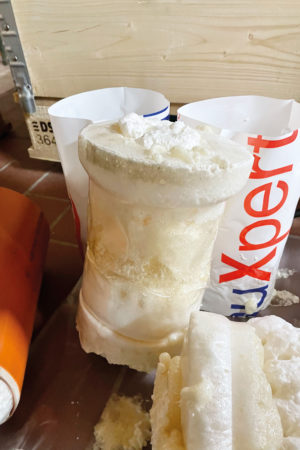
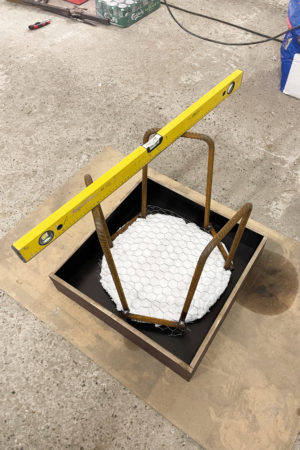
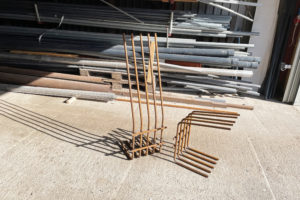
Betreut durch:
Prof. Jussi Ängeslevä, Prof. Jozef Legrand, Prof. Holger Neumann
PAPILIO | Bachelorarbeit 2021
Je höher wir unsere Städte bauen, um so windiger werden sie auch. Einerseits steigern Flurwinde, der Venturi-Effekt und Klimawandel die Windintensität, andererseits wird auch durch den Menschen immer mehr Wind aktiv erzeugt — etwa durch Verkehr oder in U-Bahn Schächten. Es existieret daher ein wachsendes Potenzial zur Nutzung von Windkraft im urbanen Raum.
Gleichzeitig nehmen schädliche anthropogenen Einflüsse auf unseren Planeten immer weiter zu, ganz besonders in dicht besiedelten Gebieten. Ein bislang oft vernachlässigtes, sich immer weiter zuspitzendesProblem ist in diesem Zusammenhang die zunehmende Lichtverschmutzung. Jedes Jahr wächst die Menge künstlichen Lichts weltweit um 6 Prozent. 83 Prozent der Weltbevölkerung leiden schon heute unter einem unnatürlich hellen Nachthimmel. Die damit einhergehende Lichtverschmutzung hat nicht nur ernste gesundheitliche Auswirkungen auf Menschen, sondern auch gravierende Folgen für Flora und Fauna. Artensterben, Orientierungsverlust von Zugvögeln, Einschränkungen für Fischwanderungen, sowie gestörte Biorhythmen von Pflanzen sind nur ein kleiner Teil der Konsequenzen. Ganz besonders betroffen sind Insekten. So wird geschätzt, dass derzeit in einer einzigen Sommernacht nur in Deutschland ca. 1,2 Milliarden Insekten durch Straßenbeleuchtung sterben.
Gleichzeitig verbraucht die Weltbevölkerung laut Bundesministerium für Umwelt, Naturschutz und nukleare Sicherheit für öffentliche Beleuchtung weiterhin rund ein Fünftel der gesamten globalen Elektrizität — und setzt dadurch indirekt eine riesige Menge an Treibhausgasen frei. Allein in Deutschland verursachen Straßenlaternen eine Emission von 2,5 Millionen Tonnen CO2 pro Jahr.
Die Straßenlaterne PAPILIO reduziert den ökologischen Fußabdruck von Straßenbeleuchtung um ein Vielfaches, indem sie Strom durch einen integrierten Windgenerator erzeugt und Lichtverschmutzung gleichzeitig minimiert. Zur Energiegewinnung dient ein Savonius-Rotor, bei dem die Windrichtung irrelevant ist. Durch dessen diagonale Anordnung kann dieser sowohl aus vertikalen (natürlicher Wind), wie auch horizontalen Luftströmungen (z.B. Luftverdrängung durch Verkehr) klimaneutrale Energie erzeugen.
Ein Akku speichert den erzeugten Strom und kann so auch windstille Phasen überbrücken. Dies macht es möglich, PAPILIO einerseits komplett autonom zu betreiben, sodass die aufwendige Verlegung von Elektrizitätsinftrastruktur entfällt. Alternativ kann das Produkt auch mit einem bestehenden Stromnetz verbunden werden, um bei starkem Wind überschüssigen Strom einzuspeisen.
Um Lichtverschmutzung zu minimieren, ist das Produkt als „Full-Cut-Off-Leuchte“ konstruiert, die Licht ausschließlich nach unten auf die Straße abstrahlt und deren Abstrahlwinkel dabei weit unter der Horizontalen liegt. Darüber hinaus verfügt die Straßenlaterne über einen Infrarotsensor, der das Licht nur dann aktiviert, wenn es tatsächlich benötigt wird. Das verwendete Lichtspektrum hat durch eine warme Farbtemperatur von 2700 Kelvin eine geringere Anziehung auf Insekten.
Bei der Straßenlaterne PAPILIO wird der Prozess der Energiegewinnung zum zentralen Element der Straßenlaterne zu einem ästhetischen Spiel, das die Umgebung bereichert — sowohl am Tag, wie auch in der Nacht. Es ist eine Straßenlaterne für eine lebenswerte Zukunft.
The higher we build our cities, the more windy they become. On the one hand, rising air masses above cities, the Venturi effect and climate change increase the wind intensity in urban surroundings. On the other hand, also humans actively generate more and more wind – for example by traffic or in subway shafts. As a result, there is a growing potential for using wind power in urban areas.
At the same time, however, the harmful anthropogenic influences on our planet are increasing — especially in densely populated areas. A problem that has hitherto often been neglected in this context is the drastically intensifying light pollution. Every year the worldwide amount of artificial light is growing by 6 percent. 83 percent of the world’s population already suffer from an unnaturally bright night sky. Light pollution not only has bad health effects on people, but also a serious impact on flora and fauna. Extinction of species, orientation loss of migratory birds, significant restrictions on fish migration, as well as disturbed biorhythms of plants, are only a fraction of these consequences. It is estimated that currently in Germany alone around 1.2 billion insects die because of street lighting in one single summer night.
Nonetheless, according to the BMU, the world’s population continues to spend nearly a fifth of the total global electricity on public lighting, which releases a significant amount of greenhouse gases. In Germany alone, street lights indirectly emit 2.5 million tons of CO2 per year.
The lamp PAPILIO is reducing the ecological footprint of street lighting many times over by generating electricity with an integrated wind generator while at the same time minimizing light pollution. An integrated Savonius rotor made of folded sheet metal, is used to produce climate neutral energy. For its operation the wind direction is irrelevant and due to its diagonal orientation, the rotor works with vertical (natural wind) as well as horizontal air streams (e.g. airflow caused by traffic).
A rechargeable battery stores the generated electricity and can thereby also bridge periods of calm. This makes it possible to either operate PAPILIO completely autonomously without a necessity for expensive underground electricity infrastructure. Alternatively, the product can also be connected to an existing power grid in order to feed surplus energy into the network during strong winds.
In order to minimize light pollution, the product is designed as a “full-cut-off light”, which only emits light downwards, while the lighting angle is far below the horizontal. Moreover, the street lamp provides an infrared sensor, only activating the light when it is actually needed. In addition, the used light spectrum is less attractive to insects due to a warm color temperature of 2800 Kelvin.
With PAPILIO, the process of generating energy becomes the central element of the street lamp and an aesthetic play, enriching streets, walkways and city squares — both during the day and at night. It is a street lamp for a future worth living in.
direct to ACKNOWLEDGEMENTS
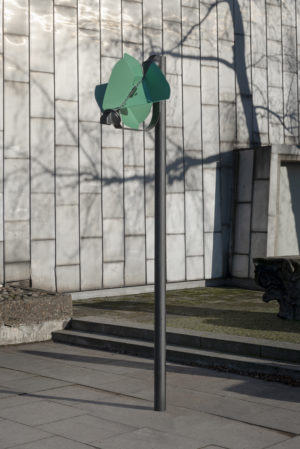
Prozess
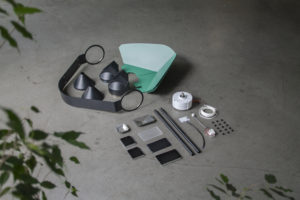
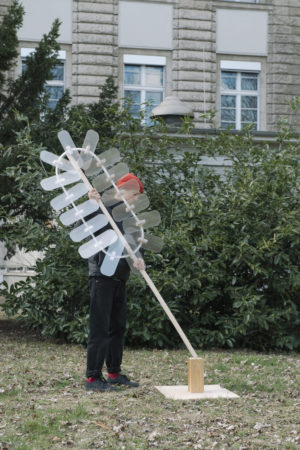
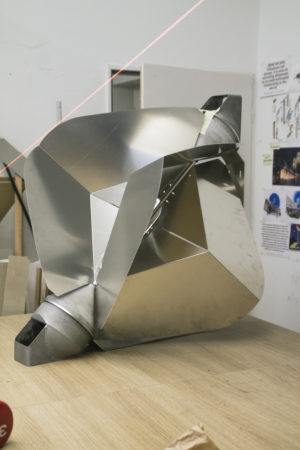
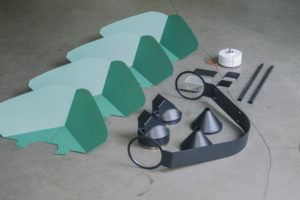

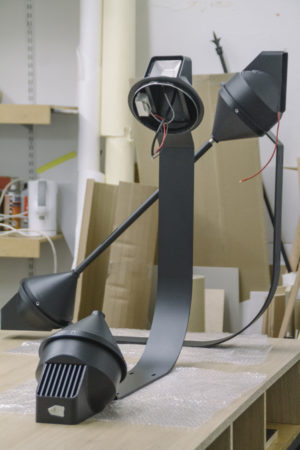
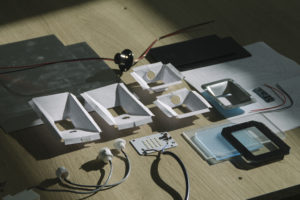
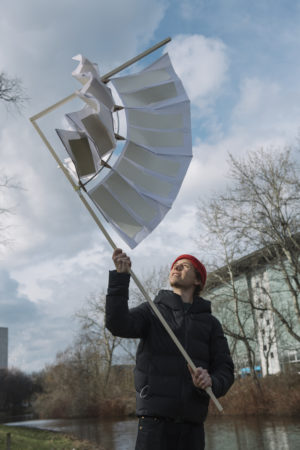
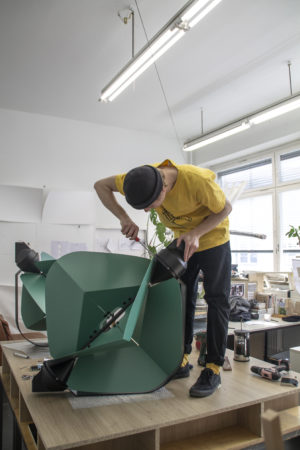

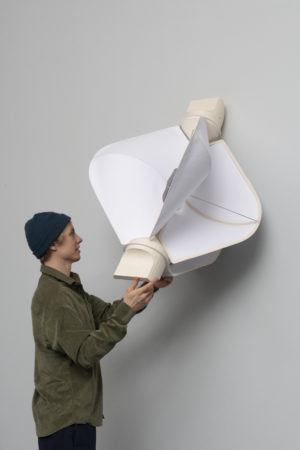
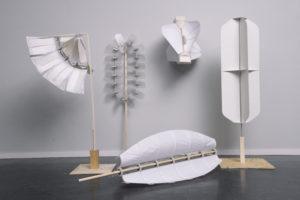
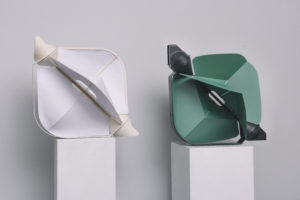
Betreut durch
Prof. Ineke Hans, Prof. Holger Neumann, Steffen Herm
Contact
www.tobiastruebenbacher.com
Museum of Alternate History | Bachelorarbeit 2021
Was wäre, wenn sich Europa nicht vor dem Hintergrund des Patriarchats, sondern eines Matriarchats entwickelt hätte? Welche Geschichten würde seine historischen Artefakte erzählen? Wie würden sie aussehen und welche Aktionen würden sie unterstützen? Würden sie uns desorientieren? …Oder würden sie uns dazu inspirieren, unsere gesellschaftlichen, historischen, sozialen und politischen Strukturen kritisch zu re-evaluieren?
What if European culture had not developed in the context of the patriarchy, but of a matriarchy instead? What stories would historic artefacts tell? What would they look like and which actions would they support? Would they have a disorienting effect on us? …Or would they inspire us to critically re-evaluate our every day life, our society, our history, culture, politics and possibly also our visions for the future?

“Das Schreiben der Cyborgs handelt vom Willen zum Überleben, nicht auf der Grundlage ursprünglicher Unschuld, sondern durch das Ergreifen eben jener Werkzeuge, die die Welt markieren, die sie als Andere markiert hat. Diese Werkzeuge sind häufig wieder- und neu erzählte Geschichten, Versionen, die die hierarchischen Dualismen naturalisierter Identitäten verkehren und verrücken. Im Wiedererzählen derUrsprungserzählungen untergraben die Cyborg-Autorlnnen die zentralen Mythen vom Ursprung der westlichen Kultur.” (Donna Haraway)
Das Museum of Alternate History verbindet feministische Gender Theorien und Spekulatives Design in dem alternativen Geschichtsszenario eines europäischen Matriarchats. So kommentiert es unter anderem die strenge patriarchalische Einordnung von Körpern in zwei “gegensätzliche” Geschlechter und die Unterwerfung und Disziplinierung von weiblichen und nicht-hetero-normativen Körpern. Sechs verschiedene Objekte und ihre beschreibenden Texte übertragen kritische Reflexion in Materialität und eröffnen so wortwörtlich den Raum für die Auseinandersetzung mit vielseitigen politischen, sozialen und kulturellen Themen.
“Cyborg writing is about the power to survive, not on the basis of original innocence, but on the basis of seizing the tools to mark the world that marked them as other. The tools are often stories, retold stories, versions that reverse and displace the hierarchical dualisms of naturalized identities.“ (Donna Haraway)
The Museum of Alternate History combines feminist and gender theories with a speculative design approach in the alternate history scenario of a European matriarchy. In doing so it comments on the the strict patriarchal divide of bodies into two genders and the submission and regulation of female and non-heteronormative bodies in our society. Six objects and their descriptive texts transform critical though into materiality and – quite literally – open up the room for discussion and reflection.
Prozess
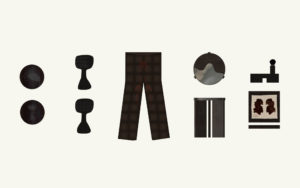
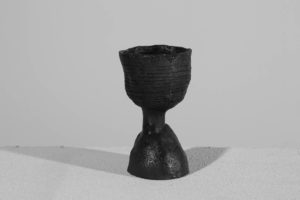
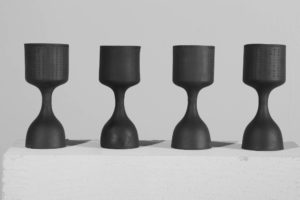

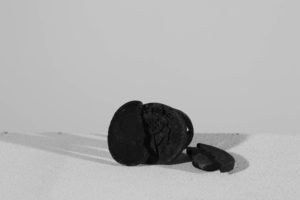
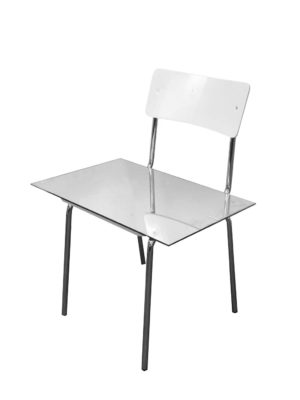
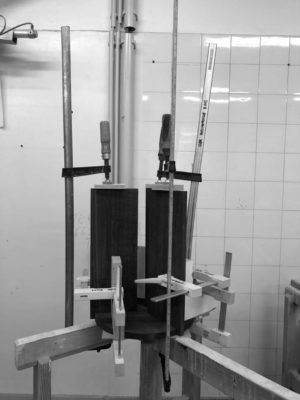


Betreut durch
KM Anja Lapatsch, Prof. Axel Kufus, Prof. Dr. Sophia Prinz
Kontakt
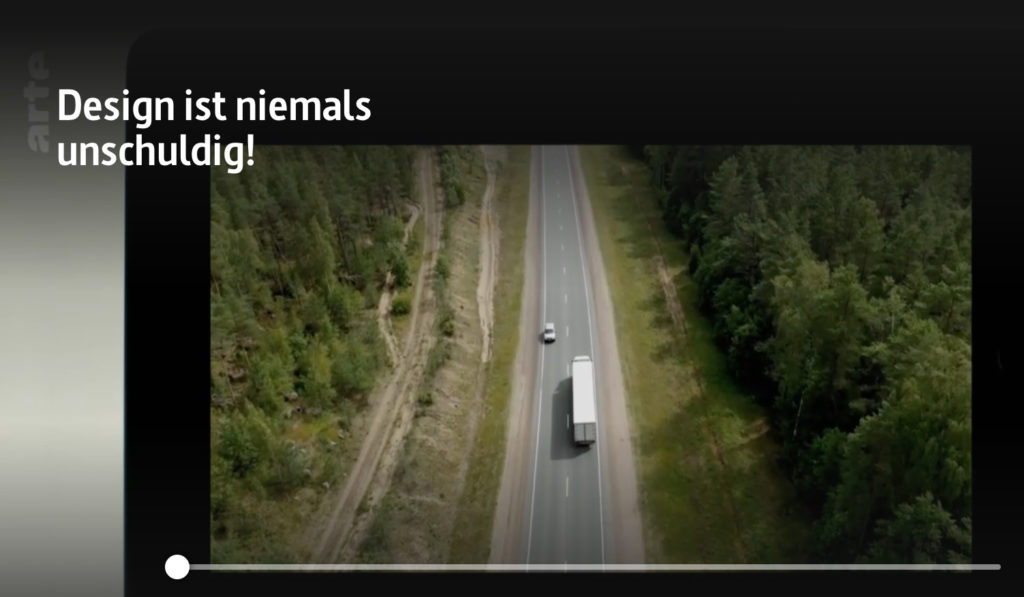
Design is frequently regarded as the seductive facade of a global capitalist system focused on never-ending growth. Designers, the argument goes, sniff out trends and fashions, constantly creating new incentives for people to buy products and inciting mass consumerism – often without regard for the resources this consumes. The documentary Design ist niemals unschuldig (Design is never innocent) by director Reinhild Dettmer Finke explores how contemporary design practice is responding to climate change and the destruction of the environment. It profiles designers who are experimenting with recyclable materials, working in labs they have set up themselves to research energy-saving manufacturing processes in interdisciplinary teams and asking critical questions about the accountability of the sector. In Helsinki, Julia Lohmann is using seaweed to create installation art and other objects, while Marjan van Aubel is working on a “solar democracy” in Amsterdam. In their Superflux studio, meanwhile, Anglo-Indian designer-and-artist duo Anab Jain and Jon Ardern contemplate the prospect of a barely inhabitable Earth resulting from climate change. And in his exhibition Politics of Design. Design of Politics, architect and design theorist Friedrich von Borries demonstrates that design always needs to be understood within a political context. According to the documentary, many contemporary designers agree that as our problems are the result of design, their solutions should be, too. The documentary will be broadcast at 9.40 p.m. on Wednesday, 28 April on ARTE. It will be available in the ARTE streaming library from 27 April until 27 May 2021.
see: Arte on design
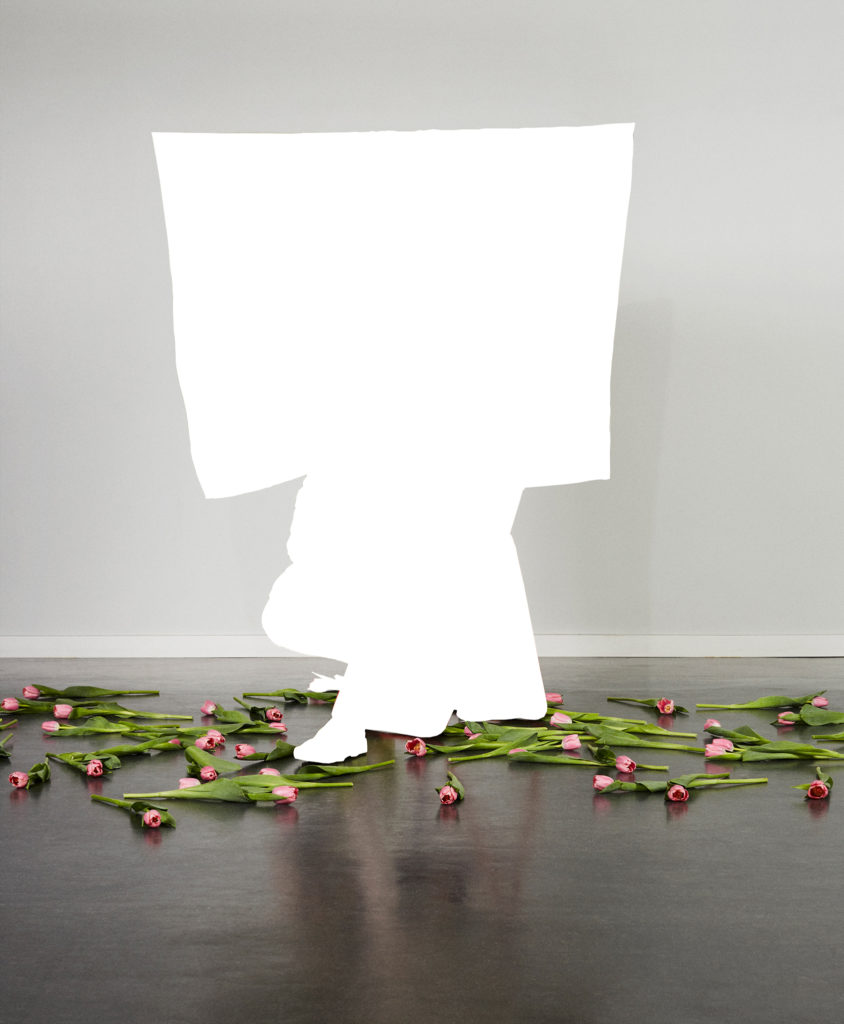
„Illusions of Space“ beschäftigt sich mit der Veränderung von Raumgefühl und der Illusion von Tiefe durch digitale Abbildung und Bildübertragung.
Wir leben in einem Zeitalter der visuellen Information. Jeden Tag werden Millionen von Bildern produziert und als Momentaufnahmen in digitalen Archiven abgelegt.
Unser Alltag wird von zweidimensionalen Bildern bestimmt, die Ausschnitte von verschiedenen Realitäten abbilden.
Dreidimensionalität und perspektivische Tiefe werden suggeriert und eine neue Art von Raum oder Realität wird geschaffen.
Foucault nennt ein Beispiel für eine Art Misch- oder Mittelerfahrung zwischen physischem und virtuellem Raum, einen Ort außerhalb aller Orte und gleichzeitig innerhalb: den Spiegel.
„Im Spiegel sehe ich mich da, wo ich nicht bin: in einem unwirklichen Raum, der sich virtuell hinter der Oberfläche auftut;“
(Michel Foucault, Andere Räume (in: Barck, Karlheinz u.a. (Hg.), Aisthesis. Wahrnehmung heute oder Perspektiven einer anderen Ästhetik, Leipzig 1992, S. 34 – 46); S. 39)
In fortschreitender Digitalisierung werden auch soziale Kontakte zunehmend vom physischen Raum in den digitalen Raum verlegt.
Im Videocall tut sich dieser „unwirkliche“ Raum auf.
Diesen abstrakten digitalen Raum versuche ich mit meiner Arbeit in vier Objekten zu untersuchen.
Die Screenshots aus den Videocalls werden zum Bekleidungselement. Hintergrund und Vordergrund verschmelzen und werden zur Einheit. Die vier Oberteile ergeben sich aus der digitalen Bildrahmung, wie sie im Videocall sichtbar werden; und sind an Outdoorbekleidung angelehnt. Sie verdeutlichen den übergestreiften Charakter der digitalen Identität.
Die Fläche des zweidimensionalen Bildes wird auseinander gezerrt, der oder die TrägerIn in das „Bild“ eingesetzt.
Es entsteht ein neuer virtueller Raum, ein Raum im Raum.
„Illusions of Space“ deals with the change in the feeling of space and the illusion of depth through digital imaging and image transmission.
We live in an age of visual information. Every day, millions of images are produced and stored as snapshots in digital archives.
Our everyday life is determined by two-dimensional images that depict sections of different realities.
Three-dimensionality and perspective depth are suggested and a new kind of space or reality is created.
Foucault gives an example of a kind of mixed or middle experience between physical and virtual space, a place outside all places and at the same time inside: the mirror.
„ …since it is a placeless place. In the mirror, I see myself there where I am not, in an unreal, virtual space that opens up behind the surface; I am over there, there where I am not, a sort of shadow that gives my own visibility to myself, that enables me to see myself there where I am absent;“
(„Of Other Spaces“, Author(s): Michel Foucault in Architecture /Mouvement/ Continuité October, 1984; (“Des Espace Autres,” March 1967 Translated from the French by Jay Miskowiec) p.4)
In advancing digitalisation, social contacts are also increasingly being transferred from physical space to digital space.
In the video call, this „unreal“ space opens up.
I try to examine this abstract digital space with my work in four objects.
The screenshots from the video calls become the clothing element. Background and foreground merge and become one. The four tops result from the digital image framing as they become visible in the video call; and are based on outdoor clothing. They illustrate the slipped-over character of the digital identity.
The surface of the two-dimensional image is pulled apart, the wearer is inserted into the „image“.
A new virtual space is created, a space in space.
Created in Consultation with: Prof. Wowo (Waldemar) Kraus, Gast Prof. Franziska Schreiber, Prof. Jozef Legrand
Credits:
Fotografie: Seb Winter
Set: Mandy Peterat
Styling: Carmen Abele
Haare und Make-Up: Jasmin Erb
Models: Emily Zanon, Fatemeh Roshan, Laurids Köhne, Fabian Senk
Die Hybrid Priests sind eine moderne Priesterklasse, verbunden durch die gemeinsame Anbetung der Ware. Sie sind halb Mensch halb Maschine. Gesichtlose Symbole eines technisch durchdrungenen Lifestyles, in dem der Begriff Güter alles einfasst. Sie vermitteln zwischen ihrer Gottheit und den Gläubigen, da die Faszination der Ware schon lange nicht mehr für die Einzelnen greifbar ist.
The Hybrid Priests are a modern priesthood. Connected by their worship of commodities. They are part human, part machine. Faceless symbols of a technocratic lifestyle, which is characterized by the notion that everything is considered a commodity. They mediate between deities and believers, since the fascination of products isn’t tangible anymore.
Created in Consultation with: Prof. Wowo (Waldemar) Kraus, KM Evelyn Sitter, Prof. Dr. Ingeborg Harms
credits:
shoot by Joseph Kadow @josephkadow
styling by Tim Heyduck @timheyduck
hair and make up by Jasmin Erb @jasmin_erb
production assistant: Jakob Krause jakob.k.krause
models: Dominik and Konstantin @IZAIO management, Finn and Jung @core
sponsoring: Limonta and Ecco Leather
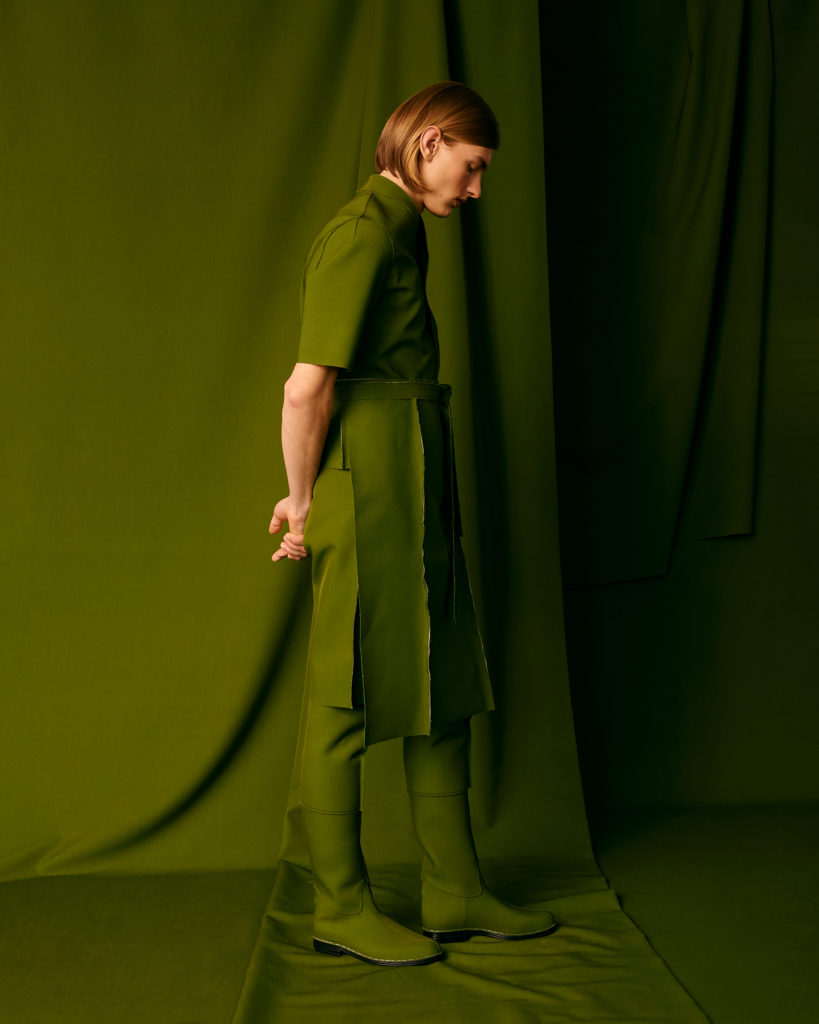

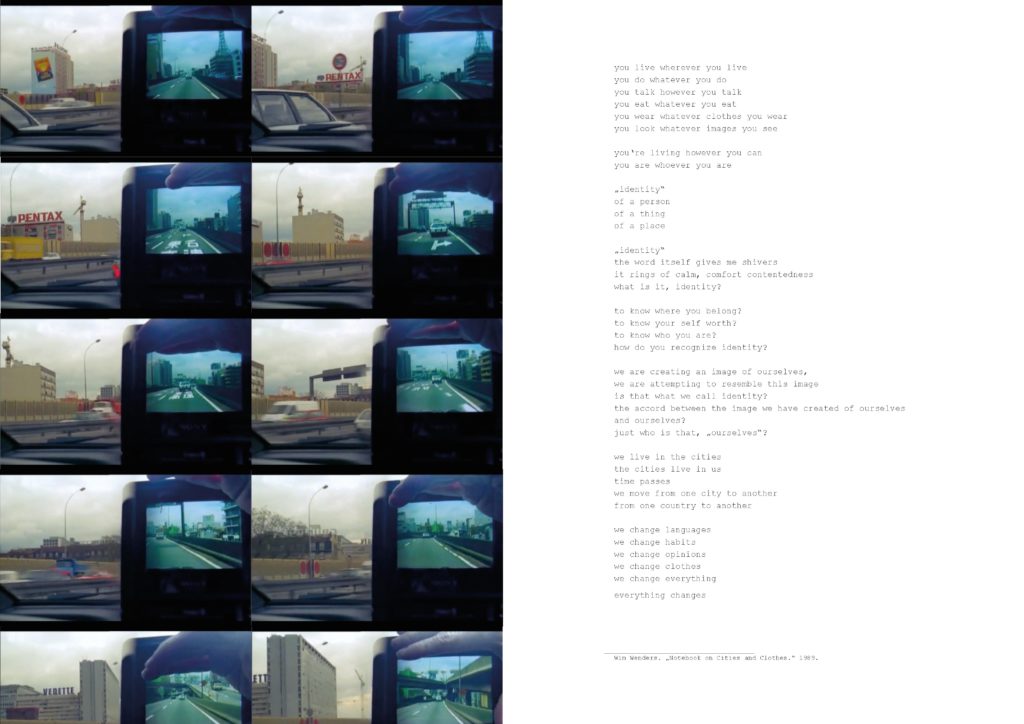
Created in Consultation with: Prof. Wowo (Waldemar) Kraus, KM Magdalena Kohler, Dr. Renate Stauss
credits photoshooting:
photography: José Cuevas
hair and make up: Philipp Verheyen
production: Oliver Tippl
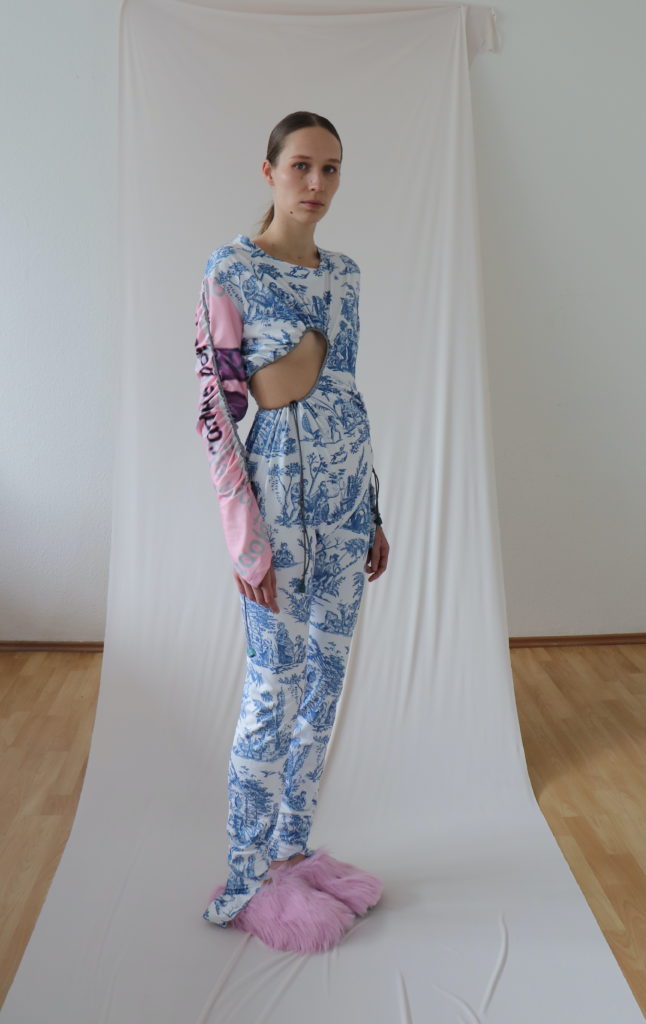
„Bodily experience is related to fashion’s effects on our bodies, body image, and identity. Fashion is a performative medium, a poetic expression in which the body becomes fictionalized.“
Die Wahl unserer Kleidung reproduziert nicht nur Geschlechtsidentität, sondern Mode selbst bewegt sich in einem binären System. Bestimmte weibliche Kleidungsstücke sind so konstruiert, dass sie laut Diane Crane ein Indikator für den Raum sind, den eine Frau im Gegensatz zum Mann einnehmen darf: „Women, as a consequence of their inferior status, are expected to occupy less space than men. This is seen in the expectation that clothing should be neat and well put together. Women’s legs are supposed to be closed rather than apart and arms should be close to the sides of the body.“ Nähte, Schnitte, Passform und Material haben eine direkte Auswirkung auf die Darstellung des Körpers und auf körperlichen Erfahrungen, wie beispielsweise Bewegungsmuster. Kleidung wird weitestgehend als statisches Produkt für Konsument:innen hergestellt, bei denen der Körper sich in erster Linie nach der Kleidung richten soll. Verändern sich körperliche Attribute, verändert sich die Kleidung nicht automatisch mit uns. Unter diesen Beweggründen liegt die Auseinandersetzung des Entwurfs auf performative Designansätzen als Methode, mit der Modedesign als etwas verstanden werden kann, die nicht nur Objekte, sondern auch Einstellungen und Kontexte umfasst, in denen sich Körper bewegen. Ein Schwerpunkt der Arbeit liegt darin, die Reproduktion von Körpern in der Mode zu beleuchten und neue Handlungsmöglichkeiten zu erforschen.
„Bodily experience is related to fashion’s effects on our bodies, body image, and identity. Fashion is a performative medium, a poetic expression in which the body becomes fictionalized. „
Not only the choice of our clothing reproduces gender identity, but fashion itself operates in a binary system. Certain female garments are constructed in such a way that, according to Diane Crane, they are an indicator of the space a woman can occupy compared to a man: “Women, as a consequence of their inferior status, are expected to occupy less space than men. This is seen in the expectation that clothing should be neat and well put together. Women’s legs are supposed to be closed rather than apart and arms should be close to the sides of the body.“ Seams, cuts, fit and material have a direct effect on the representation of the body and on physical experiences such as movement patterns. Clothing is largely manufactured as a static product for three dimensional bodies, that primarily should fit into the clothing. However, if physical attributes change, clothing does not automatically change with us. Among these motives, the design process of this project explores performative design approaches as a method within fashion design, that can be understood as something that not only includes objects, but also attitudes and contexts in which bodies move.
Created in Consultation with: Prof. Wowo (Waldemar) Kraus, KM Alexandra Börner, Dr. Renate Stauss
Credits:
Fotografie: Mia Alvizuri Sommerfeld
Model: Tanja Bombach
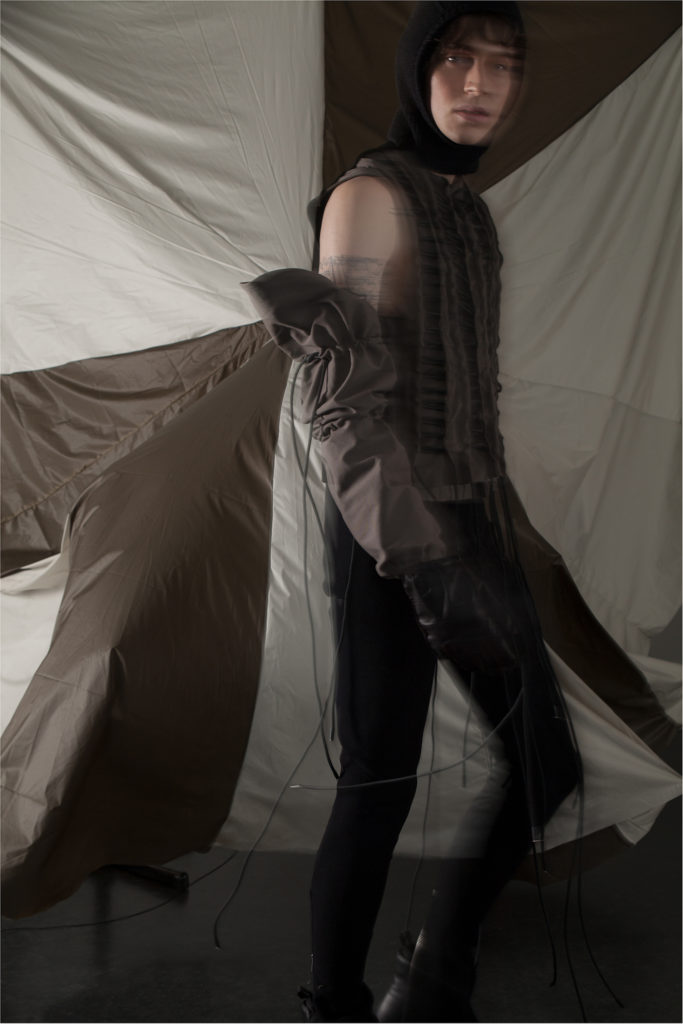
„Ich ermahne dich, Ikarus, dich auf mittlerer Bahn zu halten, damit nicht, wenn du zu tief gehst, die Wellen die Federn beschweren, und wenn du zu hoch fliegst, das Feuer sie versengt. Zwischen beiden fliege.“
– Ovid
Created in Consultation with: Prof. Valeska Schmidt-Thomsen, KM Evelyn Sitter, Prof. Dr. Kathrin Busch
Credits:
Fotografie:Tessa Meyer
Licht & Set: Niclas Moos
Szenografie & Set: Delia Rößer
Haare & Make-Up: Vi Nghiem Tuong
Model: Adriaan Kruitfeld
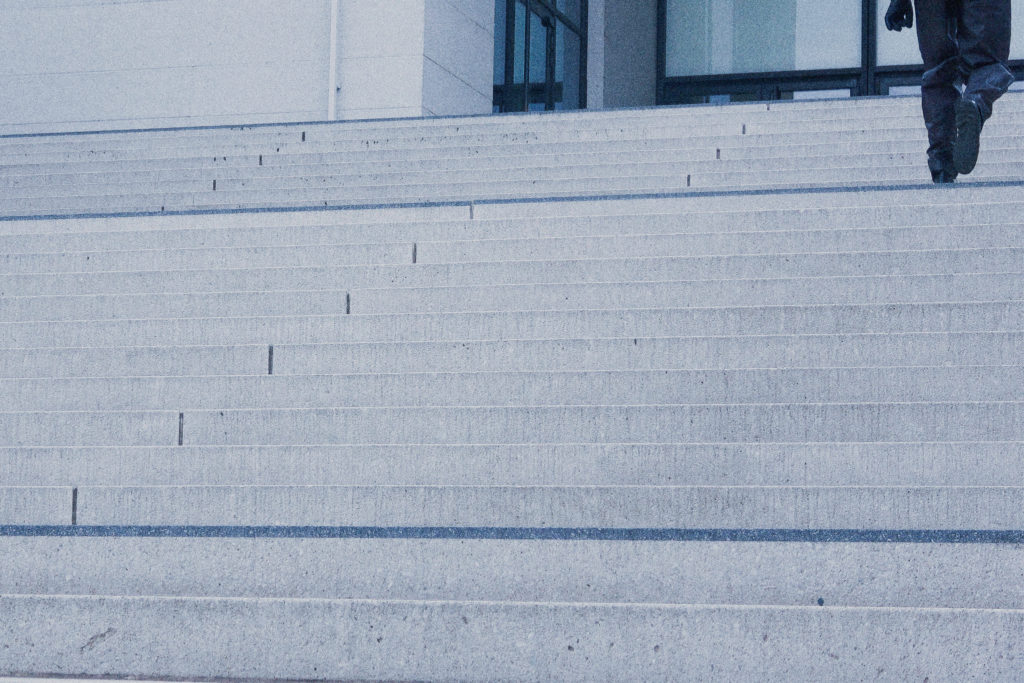
Dieses Projekt hat sich mit Überwachung, ihren Technologien und Gegentechnologien und ihrer Zukunft beschäftigt.
Wie funktioniert Algorithmen basierte Erkennung und wie schützt man sich vor ihr?
Welche Gegenbewegungen gibt es und was sind ihre Strategien?
In Experimenten mit Open-source Erkennungssoftware, habe ich die Limits von Erkennungssoftware getestet und ihre Eigenschaften recherchiert. Funktionale Textilien und Print werden verwendet, um den Träger von unerwünschten Blicken zu schützen. Dieses Projekt macht sichtbar, was meistens im Unsichtbaren passiert. Betrachter*innen werden für Überwachung sensibilisiert.
Ich möchte mich bei Jil Gieleßen für die Fotos und meinen Models Ringo Lukas und Guilherme für das Fotoshooting und Ferdinand Schmidt-Thomé für das Sponsoring bedanken.
This project is about surveillance, its technologies, counter technologies and its futures.
How does algorithmic detection work and how does one protect oneself?
What counter movements against surveillance exist and what are their strategies?
In experiments with open-source detection technologies I have tested their capabilities and researched its characteristics.Applications of functional textiles and print are applied to protect the wearer from unwanted views.This project visualizes what mostly happens invisibly. The viewer’s perception of surveillance is challenged.
I want to thank Jil Gieleßen for the photos and Ringo Lukas and Guilherme for modelling and I want to thank Ferdinand Schmidt-Thomé for the sponsoring.
Created in consultation with: Prof. Wowo (Waldemar) Kraus, Gast Prof. Deepti Barth, KM Magdalena Kohler
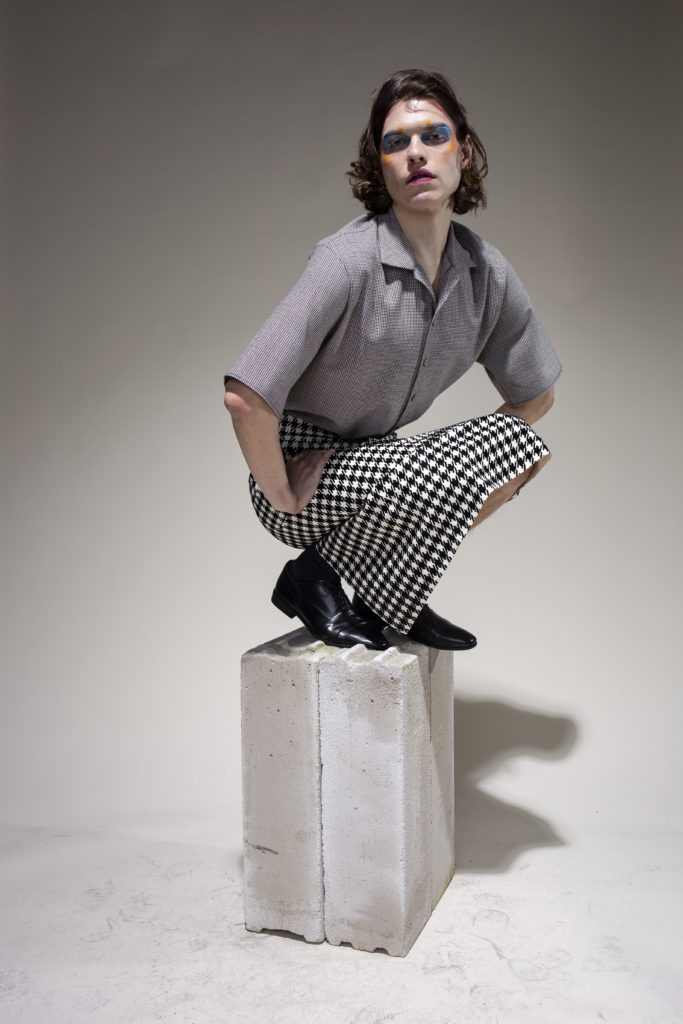
Latex ist ein interessantes Material. Mann kommt im Alltag ständig damit in Berührung und dennoch haftet ihm etwas sexuelles an. Umso weniger verwundert es, dass viele aufgrund dessen Berührungsängste damit haben. Wenn es um Latexbekleidung geht, so findet diese meistens in einem sexuellen Kontext statt. Um die Vielseitigkeit des Materials aufzuzeigen und es somit einem breiterem Publikum zugänglich zu machen, muss es zuerst seine sexuelle Assoziation verlieren. Durch die Manipulation der Haptik und Optik wird dem Latex eine neue Stofflichkeit zu eigen. Im Gegenzug soll gezeigt werden, dass konventionelle Stoffe, durchaus eine sexuelle Konnotation erhalten können.
Rubber is a fascinating material. We meet it everywhere in our daily life, but there is still something sexual about it. Thinking about rubber wear, we do mainly find it in a sexual context. To show the variety of the material and therefore make it accessible for a wide range of people, it has to overcome its sexual association. Through the manipulation of the material’s surface it gains complete new qualities. On the other hand there are convenient fabrics, which of course can also get a sexual connotation.
Created in consultation with:Prof. Valeska Schmidt-Thomsen, Alexandra Börner, Prof. Jozef Legrand
Credits:
Fotograf: Dennis Haase
Models: Bastian Fährmann & Lev Puchinin
MUAH: Jasmin Erb
Assistenz: Liska Speranskaja
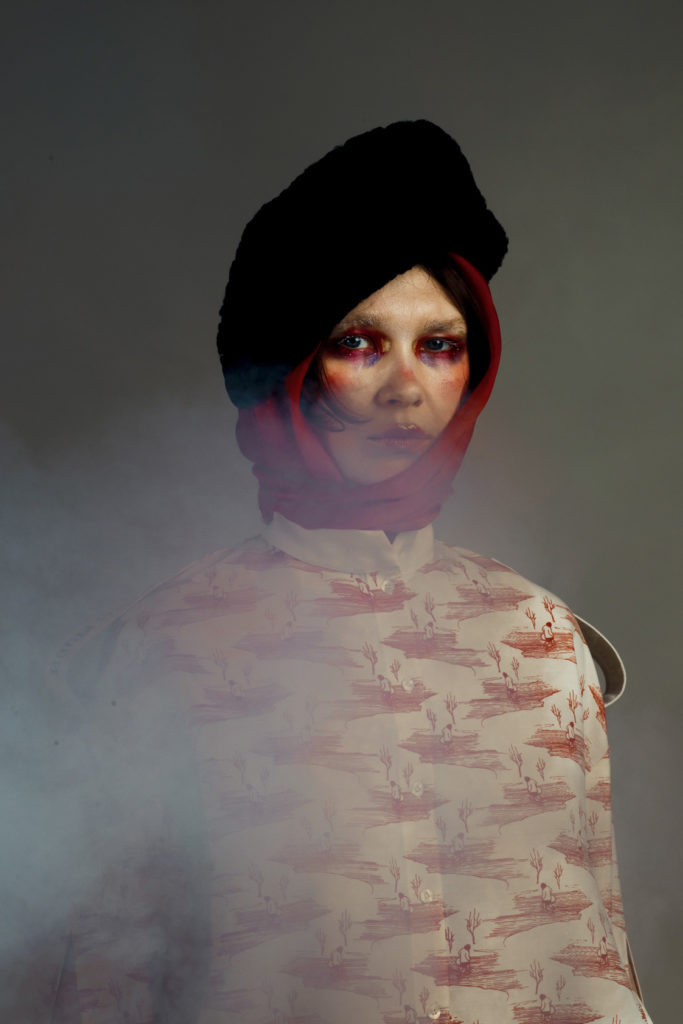
between ash and dust, swamps and birches
– there lies my babushkaland.
lets cover it with warm woolen scarves
of embroidered flowers and call it
the country of women.
This project is an attempt to connect myself to my Belarusian roots. In psychotherapy there is an understanding, that all of us carry some kind of transgenerational trauma in us. Women in Slavic regions have undergone extreme circumstances in the last century and the Babushka (Russian for old woman) is the perfect archetype to lean on to explore these traumas. Decoding their way of clothing means researching many layers of Slavic and Soviet traditions and understanding the role of women in this region in general.
The economical despair, several wars and communist oppression robbed the men of the possibility to claim their position in society, fulfilling the traditional male role. Most of them turned alcoholics, emotionally castrated, put in Fruedian terms… As the traditional female role isn’t threatening to this type of totalitarian government, they seem to be the only ones to bear the weight of both, the traditional female and male roles. Still Belarusian women are at the forefront of the opposition in Belarus right now, because of the underestimation they face and their determination.
The clothes are a translation of the traumas of absent men, the socialist regime, the war and the post soviet disappointment. They make references to Naum Korzhavins poetry („столетье промчалось. И снова, как в тот незапамятнный год- коня на скаку остановит, в горящую избу войдёт. (..) Но кони всё скачут и скачут. А избы – горят и горят.“ Rus. „…A century flew by. And once again,/ As in that time immemorial/ She’ll stop a horse in mid-gallop,/Enter a burning hut. (..) /But the horses keep galloping./And the huts keep burning.“) and Svetlana Alexejevitch books (f.e. „Der Krieg hat kein weibliches Gesicht“). They are mostly in red and white colours to reference to the original Belarusian flag.
Created in Consultation with: Prof. Valeska Schmidt-Thomsen, Prof. Dr. Ingeborg Harms, Prof. Jozef Legrand
When thinking about my project and designing the games, I wanted children to create from their imagination rather than following instructions. Giving the opportunity to children to create on their own with what is given to them, so that they are free to imagine, explore ideas, and invent new things. With my designs I wanted to create tools for the imagination. These modular systems are manipulable parts that inspire constructive and creative play. Abstract in their identity, these toys inspire children to imagine their use.
“What is it?” and “What does it do?”
The toys, are designed to be used in the children’s daily life. They can be worn, played or even used as a play rug. They are ideal for open-ended play since there are endless possibilities during playtime. There are no instructions for children to follow. Children have the flexibility to form their own decisions and fully engage their creativity and imagination. They can be used in pretend play as well. It is amazing how children with such simple shapes and by just using their imagination can transform a triangle shape into a cape, pretending to be a superhero, who will save the world, or transform a butterfly shape into a sleeping bag ready to shelter them in the deep jungle. The fact that there is not a right or wrong answer, gives the children, this sense of “I can do it, I can think for myself.”
Created in consultation with: Prof. Wowo (Waldemar) Kraus, Gast Prof. Franziska Schreiber, KM Magdalena Kohler
Credits:
Photographer: Jiuk Kim @keemgeewook
Models: Emil Grimm & Luisa Grimm
Assistant: Koralia Afxentiou @_koralia_
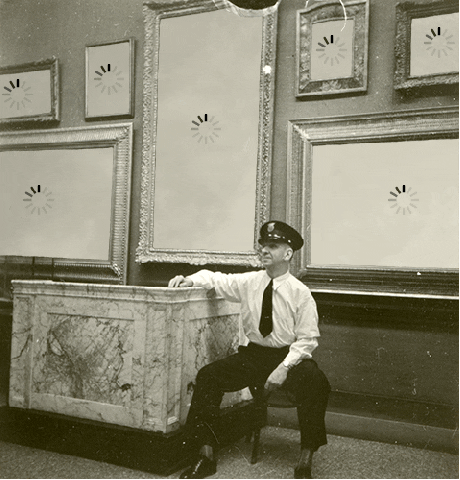

Im Sommer Semester 2021 setzt designtransfer wegen den Covid-19 Regelungen seine Aktivitäten hauptsächlich online fort mit dem
u.a. über die historische Rolle von Design in Demokratien und bei der Entwicklung von offenen Gesellschaften · die momentane eingeschränkte Situation für Diskurse im Kulturbereich und mögliche öffentliche Aktivitäten · wie wir uns eine demokratische Zukunft zusammen vorstellen und wie Design dazu einen Beitrag leisten kann.
Alle Studierenden, Lehrenden, das lokale und internationale Netzwerk und Kooperationspartner sind eingeladen zu diesem Themenfeld Beiträge einzureichen und es zu erweitern – Projekte, Utopien, Ideen, Visionen, Betrachtungen, Analysen, Reflexionen, Recherche, Interviews – Videos, Animationen, Fotos, Performances, Dokumentationen, Grafiken, Illustrationen, Produkte, Mode, Architektur, Installationen…
Texte & visuelles Material an:
; Betreff: Design & Demokratie Blog; Text (Deutsch oder Englisch) max. 50.000 Zeichen (Deutscher Text wird eventuell zusätzlich ins Englische übersetzt); Formate: Bildmaterial: jpeg / Videos: mp4
UdK-Studierende können für Blog-Beiträge im öffentlichem Raum unter den geltenden Bestimmungen nach vorheriger Absprache mit designtransfer Materialkosten bis zu 250€ erstattet bekommen.
designtransfer ist vorerst Administrator des Blogs und wird regelmässig während des Sommer Semesters (12. April – 17. Juli 2021) die eingereichten Beiträge veröffentlichen. Angedacht ist auch eine spätere Publikation, um die Beiträge zusammenzufassen und zu archivieren.
Wir freuen uns über Feedback und konstruktive Kommentare, um den Blog über die nächsten Monate lebhaft zu bespielen und eine diverse, öffentliche und kreative Debatte zu führen und zu fördern.